Manufacturing Sector Shows Weakness

China Starts H2 On A Weaker Note
The official manufacturing PMI in China is now sitting at multi-month lows and is already below the 50 level. According to Standard Chartered, this is a sign that China is starting the 2nd half of 2025 on a weaker note.
The key reason behind the decline in the manufacturing PMI is the tariff impact. On the surface, China is downplaying the tariffs situation, but its effects have already started to show in the data.
Manufacturing Pmi Declines Again
Meanwhile, the retail sales and the FAI are showing signs of recovery. But the key indicator is the CPI inflation, which has turned negative. According to Standard Chartered, the PPI is also on a deflation path as the commodity prices have jumped.
The overall data from the PMI shows that the slowdown in China is broader-based. In fact, even the new orders PMI has entered the contraction phase, and that's not a good idea.
Unlike other countries, the manufacturing sector of China is the key driver of growth. So, any decline in this sector affects the entire Chinese economy.
In addition, the services PMI is now also very close to the 50 level. Any further dip in the index will put the services sector of China into a contraction phase.
Looking ahead, Standard Chartered believes that the IP and export growth of China will remain weak. The reason for this is the weaker demand and the US tariffs.
During the same period, China's imports also showed contraction. As a result, China has managed to achieve a sizable trade surplus.
In the long term, the chances of any recovery in the Chinese manufacturing sector are highly unlikely. Amidst the whole tariff situation, China will need to find new markets for its products/services really fast.
Also, the government will need to take measures so that the Chinese economy drives its growth from local consumption.
Trending Stories
-
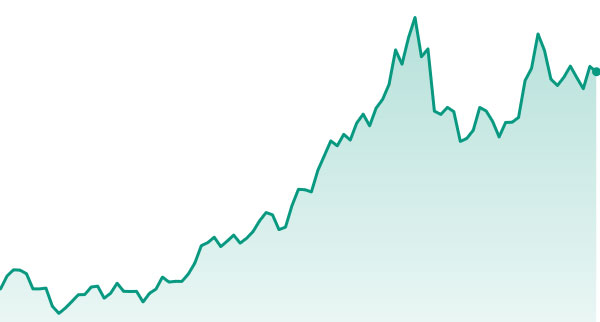 Silver Forecast For Year Ubs
Jan 01 2026
By Adam Rosen
Silver Forecast For Year Ubs
Jan 01 2026
By Adam Rosen
-
 Should You Hold Airbnb Stock
Jan 01 2026
By Ashly Chole
Should You Hold Airbnb Stock
Jan 01 2026
By Ashly Chole
-
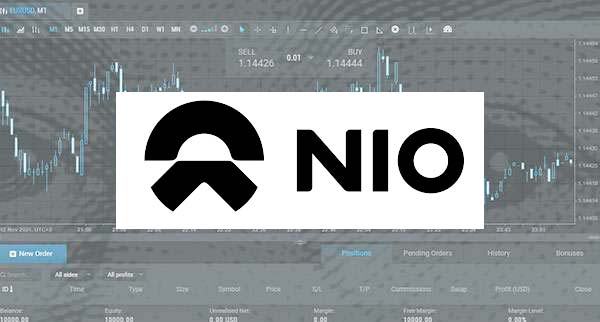 Should You Buy Nio Stock
Dec 31 2025
By Emily Clark
Should You Buy Nio Stock
Dec 31 2025
By Emily Clark
-
 Should You Buy Tesla Stock
Dec 31 2025
By Emily Clark
Should You Buy Tesla Stock
Dec 31 2025
By Emily Clark
-
 Should You Buy Meta Stock
Dec 30 2025
By Adam Rosen
Should You Buy Meta Stock
Dec 30 2025
By Adam Rosen
-
 Should You Buy Ionq Stock
Dec 30 2025
By Emily Clark
Should You Buy Ionq Stock
Dec 30 2025
By Emily Clark
-
 Should You Buy Expensive Stocks
Dec 29 2025
By Andrew Blumer
Should You Buy Expensive Stocks
Dec 29 2025
By Andrew Blumer
-
 Should You Buy Btc Or Not
Dec 29 2025
By Adam Rosen
Should You Buy Btc Or Not
Dec 29 2025
By Adam Rosen
-
 Rolls Royce Shares Price Jumped
Dec 28 2025
By Emily Clark
Rolls Royce Shares Price Jumped
Dec 28 2025
By Emily Clark
-
 Rolls Royce Stock Faces Threats
Dec 28 2025
By Andrew Blumer
Rolls Royce Stock Faces Threats
Dec 28 2025
By Andrew Blumer
-
 Raspberry Pi Stock Analysis
Dec 27 2025
By Adam Rosen
Raspberry Pi Stock Analysis
Dec 27 2025
By Adam Rosen
-
 Robinhood Stock Analysis
Dec 27 2025
By Adam Rosen
Robinhood Stock Analysis
Dec 27 2025
By Adam Rosen
-
 Pfizer Stock Forecast For Long Term
Dec 26 2025
By Ashly Chole
Pfizer Stock Forecast For Long Term
Dec 26 2025
By Ashly Chole
-
 Ocado Share Price At Record Lows
Dec 26 2025
By Emily Clark
Ocado Share Price At Record Lows
Dec 26 2025
By Emily Clark
-
 Nvidia Stock Forecast
Dec 25 2025
By Emily Clark
Nvidia Stock Forecast
Dec 25 2025
By Emily Clark
-
 Nvidia Share Price
Dec 25 2025
By Ashly Chole
Nvidia Share Price
Dec 25 2025
By Ashly Chole
-
 Natixis Bullish Eurusd Forecast
Dec 24 2025
By Ashly Chole
Natixis Bullish Eurusd Forecast
Dec 24 2025
By Ashly Chole
-
 Nebius Stock Gained Upside
Dec 24 2025
By Andrew Blumer
Nebius Stock Gained Upside
Dec 24 2025
By Andrew Blumer
-
 Must Buy Ai Stocks
Dec 23 2025
By Adam Rosen
Must Buy Ai Stocks
Dec 23 2025
By Adam Rosen
-
 Micron Technology Stock Forecast
Dec 23 2025
By Ashly Chole
Micron Technology Stock Forecast
Dec 23 2025
By Ashly Chole
-
 Major Stock Market Crash
Dec 22 2025
By Adam Rosen
Major Stock Market Crash
Dec 22 2025
By Adam Rosen
-
 Meta Platforms Stock Is Bearish
Dec 22 2025
By Ashly Chole
Meta Platforms Stock Is Bearish
Dec 22 2025
By Ashly Chole
-
 Is Nvidia Stock Undervalued
Dec 21 2025
By Emily Clark
Is Nvidia Stock Undervalued
Dec 21 2025
By Emily Clark
-
 Is Asml Stock A Buy
Dec 21 2025
By Andrew Blumer
Is Asml Stock A Buy
Dec 21 2025
By Andrew Blumer
-
 Goldman Sachs Gbpeur Bearish
Dec 20 2025
By Andrew Blumer
Goldman Sachs Gbpeur Bearish
Dec 20 2025
By Andrew Blumer
-
 Home Depot Stock Forecast
Dec 20 2025
By Emily Clark
Home Depot Stock Forecast
Dec 20 2025
By Emily Clark
-
 Gold Forecast Morgan Stanley
Dec 19 2025
By Emily Clark
Gold Forecast Morgan Stanley
Dec 19 2025
By Emily Clark
-
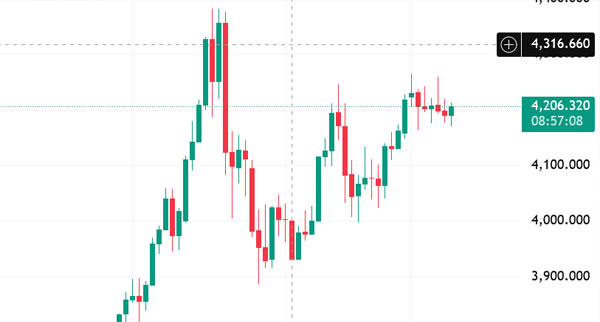 Gold And Copper To Trend Higher
Dec 19 2025
By Andrew Blumer
Gold And Copper To Trend Higher
Dec 19 2025
By Andrew Blumer
-
 Ethereum Will Reach 9k
Dec 18 2025
By Andrew Blumer
Ethereum Will Reach 9k
Dec 18 2025
By Andrew Blumer
-
 Gbpeur Forecast End 2026 Jp Morgan
Dec 18 2025
By Adam Rosen
Gbpeur Forecast End 2026 Jp Morgan
Dec 18 2025
By Adam Rosen
-
 D Wave Quantum A Buy Or Not
Dec 17 2025
By Andrew Blumer
D Wave Quantum A Buy Or Not
Dec 17 2025
By Andrew Blumer
-
 Eli Lilly Stock Valuation Forecast
Dec 17 2025
By Andrew Blumer
Eli Lilly Stock Valuation Forecast
Dec 17 2025
By Andrew Blumer
-
 Can Game Workshop Stock Rise
Dec 16 2025
By Adam Rosen
Can Game Workshop Stock Rise
Dec 16 2025
By Adam Rosen
-
 Cheap Uk Stock That Is Undervalued
Dec 16 2025
By Emily Clark
Cheap Uk Stock That Is Undervalued
Dec 16 2025
By Emily Clark
-
 Brent Crude Oil Forecast Anz
Dec 15 2025
By Emily Clark
Brent Crude Oil Forecast Anz
Dec 15 2025
By Emily Clark
-
 Can Bitcoin Recover
Dec 15 2025
By Andrew Blumer
Can Bitcoin Recover
Dec 15 2025
By Andrew Blumer
-
 Best Tech Stocks To Buy
Dec 14 2025
By Adam Rosen
Best Tech Stocks To Buy
Dec 14 2025
By Adam Rosen
-
 Boa Gbpusd Forecast
Dec 14 2025
By Adam Rosen
Boa Gbpusd Forecast
Dec 14 2025
By Adam Rosen
-
 Best Cryptocurrencies To Buy
Dec 13 2025
By Ashly Chole
Best Cryptocurrencies To Buy
Dec 13 2025
By Ashly Chole
-
 Best Flying Car Stock
Dec 13 2025
By Andrew Blumer
Best Flying Car Stock
Dec 13 2025
By Andrew Blumer
-
 Bearish Outlook For Gbp
Dec 12 2025
By Emily Clark
Bearish Outlook For Gbp
Dec 12 2025
By Emily Clark
-
 Bae Systems Stock Is A Bargain
Dec 12 2025
By Ashly Chole
Bae Systems Stock Is A Bargain
Dec 12 2025
By Ashly Chole
-
 Amazon Stock Analysis
Dec 11 2025
By Emily Clark
Amazon Stock Analysis
Dec 11 2025
By Emily Clark
-
 Amd More Growth Ahead
Dec 11 2025
By Adam Rosen
Amd More Growth Ahead
Dec 11 2025
By Adam Rosen
-
 Alphabet Forecast For One Year
Dec 10 2025
By Ashly Chole
Alphabet Forecast For One Year
Dec 10 2025
By Ashly Chole
-
 Amazon Is A Better Stock
Dec 10 2025
By Adam Rosen
Amazon Is A Better Stock
Dec 10 2025
By Adam Rosen
-
 Lng Supply Keeps Gas Prices Low
Dec 09 2025
By Emily Clark
Lng Supply Keeps Gas Prices Low
Dec 09 2025
By Emily Clark
-
 Is Xrp Etf Worth Buying
Dec 09 2025
By Ashly Chole
Is Xrp Etf Worth Buying
Dec 09 2025
By Ashly Chole
-
 Is It Time To Buy Bitcoin
Dec 08 2025
By Emily Clark
Is It Time To Buy Bitcoin
Dec 08 2025
By Emily Clark
-
 Is Tesla Stock A Buy
Dec 08 2025
By Ashly Chole
Is Tesla Stock A Buy
Dec 08 2025
By Ashly Chole
-
 Gold Demand Remains Weak
Dec 07 2025
By Emily Clark
Gold Demand Remains Weak
Dec 07 2025
By Emily Clark
-
 Gold Forecast Natixis
Dec 07 2025
By Ashly Chole
Gold Forecast Natixis
Dec 07 2025
By Ashly Chole
-
 Glencore Share Price Rally
Dec 06 2025
By Adam Rosen
Glencore Share Price Rally
Dec 06 2025
By Adam Rosen
-
 Gbpusd To Reach Higher
Dec 06 2025
By Emily Clark
Gbpusd To Reach Higher
Dec 06 2025
By Emily Clark
-
 Gbpeur Target Mufg
Dec 05 2025
By Adam Rosen
Gbpeur Target Mufg
Dec 05 2025
By Adam Rosen
-
 Gbp To Stay Bearish Goldman
Dec 05 2025
By Ashly Chole
Gbp To Stay Bearish Goldman
Dec 05 2025
By Ashly Chole
-
 Eurusd Forecast For One Year
Dec 04 2025
By Ashly Chole
Eurusd Forecast For One Year
Dec 04 2025
By Ashly Chole
-
 Games Workshop Stock
Dec 04 2025
By Adam Rosen
Games Workshop Stock
Dec 04 2025
By Adam Rosen
-
 Eth Forecast Standard Chartered
Dec 03 2025
By Adam Rosen
Eth Forecast Standard Chartered
Dec 03 2025
By Adam Rosen
-
 Dogecoin Is It Worth Buying
Dec 03 2025
By Ashly Chole
Dogecoin Is It Worth Buying
Dec 03 2025
By Ashly Chole
-
 Cheap Ai Shares To Buy
Dec 02 2025
By Ashly Chole
Cheap Ai Shares To Buy
Dec 02 2025
By Ashly Chole
-
 Can Rolls Royce Shares Go Higher
Dec 02 2025
By Adam Rosen
Can Rolls Royce Shares Go Higher
Dec 02 2025
By Adam Rosen
-
 Buy Nvidia Stock At The Dip
Dec 01 2025
By Ashly Chole
Buy Nvidia Stock At The Dip
Dec 01 2025
By Ashly Chole
-
 Can Jd Sports Share Price Recover
Dec 01 2025
By Emily Clark
Can Jd Sports Share Price Recover
Dec 01 2025
By Emily Clark
-
 Bt Share Forecast For One Year
Nov 30 2025
By Andrew Blumer
Bt Share Forecast For One Year
Nov 30 2025
By Andrew Blumer
-
 Btc Or Eth Which Is Better
Nov 30 2025
By Emily Clark
Btc Or Eth Which Is Better
Nov 30 2025
By Emily Clark
-
 Brent Will Decline Goldman Sachs
Nov 29 2025
By Andrew Blumer
Brent Will Decline Goldman Sachs
Nov 29 2025
By Andrew Blumer
-
 Bitcoin To Reach 200k
Nov 29 2025
By Adam Rosen
Bitcoin To Reach 200k
Nov 29 2025
By Adam Rosen
-
 Beyond Meat Stock Declines
Nov 28 2025
By Andrew Blumer
Beyond Meat Stock Declines
Nov 28 2025
By Andrew Blumer
-
 Best Tech Stock To Buy
Nov 28 2025
By Andrew Blumer
Best Tech Stock To Buy
Nov 28 2025
By Andrew Blumer
-
 Apple Stock Forecast For One Year
Nov 27 2025
By Andrew Blumer
Apple Stock Forecast For One Year
Nov 27 2025
By Andrew Blumer
-
 Aston Martin Share Forecast
Nov 27 2025
By Emily Clark
Aston Martin Share Forecast
Nov 27 2025
By Emily Clark
-
 Amd Stock To Move Higher
Nov 26 2025
By Ashly Chole
Amd Stock To Move Higher
Nov 26 2025
By Ashly Chole
-
 Alphabet Stock Forecast
Nov 26 2025
By Emily Clark
Alphabet Stock Forecast
Nov 26 2025
By Emily Clark
-
 Xrp Forecast For Next Year
Nov 23 2025
By Andrew Blumer
Xrp Forecast For Next Year
Nov 23 2025
By Andrew Blumer
-
 Will Tesla Stock Reach New High
Nov 23 2025
By Ashly Chole
Will Tesla Stock Reach New High
Nov 23 2025
By Ashly Chole
-
 Usdtry Forecast Ing
Nov 22 2025
By Andrew Blumer
Usdtry Forecast Ing
Nov 22 2025
By Andrew Blumer
-
 Why Is Nike Stock Down
Nov 22 2025
By Adam Rosen
Why Is Nike Stock Down
Nov 22 2025
By Adam Rosen
-
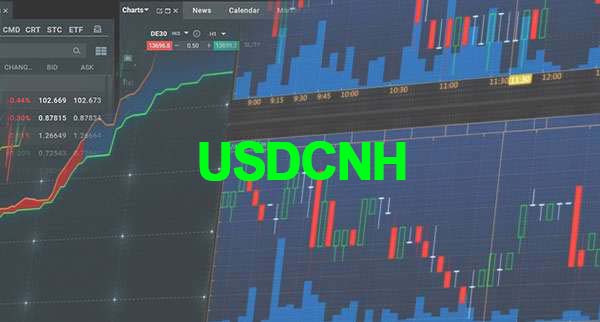 Usdcnh To Drop Uob
Nov 21 2025
By Emily Clark
Usdcnh To Drop Uob
Nov 21 2025
By Emily Clark
-
 Us Healthcare Stock With Potential
Nov 21 2025
By Ashly Chole
Us Healthcare Stock With Potential
Nov 21 2025
By Ashly Chole
-
 Top Stocks To Buy For Medium Term
Nov 20 2025
By Andrew Blumer
Top Stocks To Buy For Medium Term
Nov 20 2025
By Andrew Blumer
-
 Uk Stock Market And Rate Cuts
Nov 20 2025
By Emily Clark
Uk Stock Market And Rate Cuts
Nov 20 2025
By Emily Clark
-
 This Tech Stock Will Rise
Nov 19 2025
By Adam Rosen
This Tech Stock Will Rise
Nov 19 2025
By Adam Rosen
-
 Small Cap Stocks
Nov 19 2025
By Emily Clark
Small Cap Stocks
Nov 19 2025
By Emily Clark
-
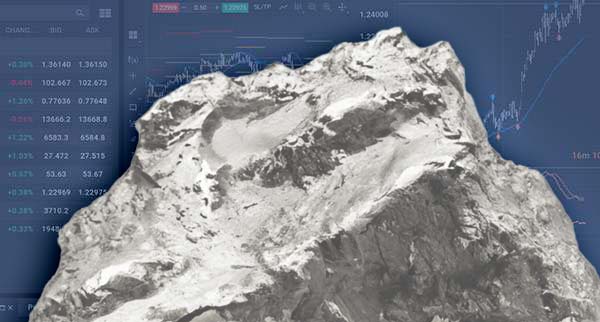 Silver Stocks On The Rise
Nov 18 2025
By Emily Clark
Silver Stocks On The Rise
Nov 18 2025
By Emily Clark
-
 Silver Will Be Bullish Bofa
Nov 18 2025
By Ashly Chole
Silver Will Be Bullish Bofa
Nov 18 2025
By Ashly Chole
-
 Should You Buy Tesla Shares
Nov 17 2025
By Emily Clark
Should You Buy Tesla Shares
Nov 17 2025
By Emily Clark
-
 Silver Prices Face Risks Tds
Nov 17 2025
By Adam Rosen
Silver Prices Face Risks Tds
Nov 17 2025
By Adam Rosen
-
 Rolls Royce Stock Analysis
Nov 16 2025
By Emily Clark
Rolls Royce Stock Analysis
Nov 16 2025
By Emily Clark
-
 Rare Earth Stocks Keep Rising
Nov 16 2025
By Andrew Blumer
Rare Earth Stocks Keep Rising
Nov 16 2025
By Andrew Blumer
-
 Rabobank Forecast Usdcny
Nov 15 2025
By Ashly Chole
Rabobank Forecast Usdcny
Nov 15 2025
By Ashly Chole
-
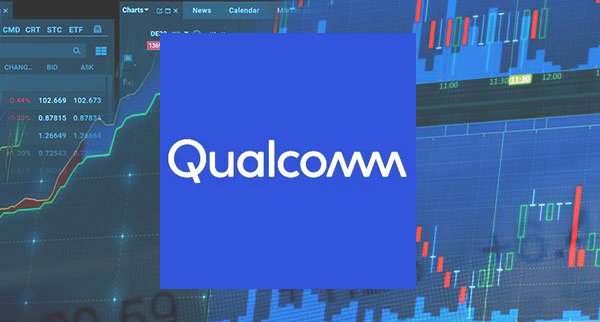 Qualcomm Undervalued Stock
Nov 15 2025
By Emily Clark
Qualcomm Undervalued Stock
Nov 15 2025
By Emily Clark
-
 Nvidia Stock Price Target Hsbc
Nov 14 2025
By Andrew Blumer
Nvidia Stock Price Target Hsbc
Nov 14 2025
By Andrew Blumer
-
 Nvidia Stock Will Crash
Nov 14 2025
By Adam Rosen
Nvidia Stock Will Crash
Nov 14 2025
By Adam Rosen
-
 Nvidia Stock In Bubble
Nov 13 2025
By Andrew Blumer
Nvidia Stock In Bubble
Nov 13 2025
By Andrew Blumer
-
 No Need For Quarterly Rate Cuts
Nov 13 2025
By Ashly Chole
No Need For Quarterly Rate Cuts
Nov 13 2025
By Ashly Chole
-
 Iea Warns Of Oil Glut
Nov 12 2025
By Emily Clark
Iea Warns Of Oil Glut
Nov 12 2025
By Emily Clark
-
 Ing Bearish Forecast Gbpeur
Nov 12 2025
By Andrew Blumer
Ing Bearish Forecast Gbpeur
Nov 12 2025
By Andrew Blumer
-
 Gold Rally Because Of Fomo
Nov 11 2025
By Emily Clark
Gold Rally Because Of Fomo
Nov 11 2025
By Emily Clark
-
 Gold Will Be Bullish Jp Morgan
Nov 11 2025
By Andrew Blumer
Gold Will Be Bullish Jp Morgan
Nov 11 2025
By Andrew Blumer
-
 Gold Prices Will Drop
Nov 10 2025
By Ashly Chole
Gold Prices Will Drop
Nov 10 2025
By Ashly Chole
-
 Gbpusd Forecast Natwest
Nov 10 2025
By Andrew Blumer
Gbpusd Forecast Natwest
Nov 10 2025
By Andrew Blumer
-
 Fx Market Remains Indifferent
Nov 09 2025
By Ashly Chole
Fx Market Remains Indifferent
Nov 09 2025
By Ashly Chole
-
 Gbpeur Will Decline Next Year
Nov 09 2025
By Andrew Blumer
Gbpeur Will Decline Next Year
Nov 09 2025
By Andrew Blumer
-
 Eurusd Will Climb Next Year
Nov 08 2025
By Andrew Blumer
Eurusd Will Climb Next Year
Nov 08 2025
By Andrew Blumer
-
 Eurusd Forecast Cibc
Nov 08 2025
By Ashly Chole
Eurusd Forecast Cibc
Nov 08 2025
By Ashly Chole
-
 Copper Bull Run Ing
Nov 07 2025
By Ashly Chole
Copper Bull Run Ing
Nov 07 2025
By Ashly Chole
-
 Cisco Strong Growth Potential
Nov 07 2025
By Andrew Blumer
Cisco Strong Growth Potential
Nov 07 2025
By Andrew Blumer
-
 Buy Coca Cola Stock Or No
Nov 06 2025
By Ashly Chole
Buy Coca Cola Stock Or No
Nov 06 2025
By Ashly Chole
-
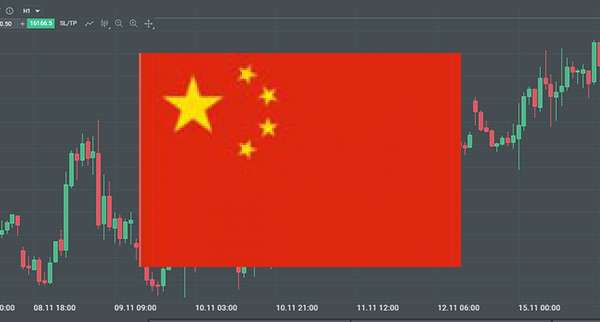 China Gdp Growth Slowed
Nov 06 2025
By Ashly Chole
China Gdp Growth Slowed
Nov 06 2025
By Ashly Chole
-
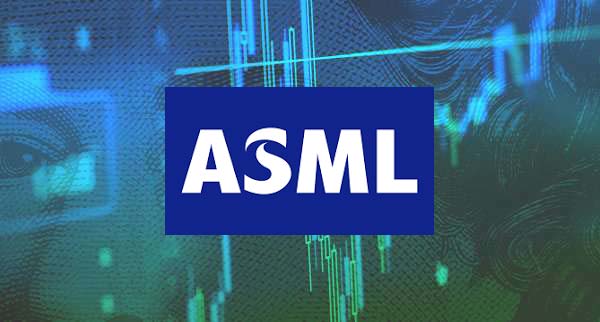 Buy Asml Holding Long Term
Nov 05 2025
By Emily Clark
Buy Asml Holding Long Term
Nov 05 2025
By Emily Clark
-
 Buffett Is Buying This Stock
Nov 05 2025
By Adam Rosen
Buffett Is Buying This Stock
Nov 05 2025
By Adam Rosen
-
 Bitcoin Will Crash
Nov 04 2025
By Emily Clark
Bitcoin Will Crash
Nov 04 2025
By Emily Clark
-
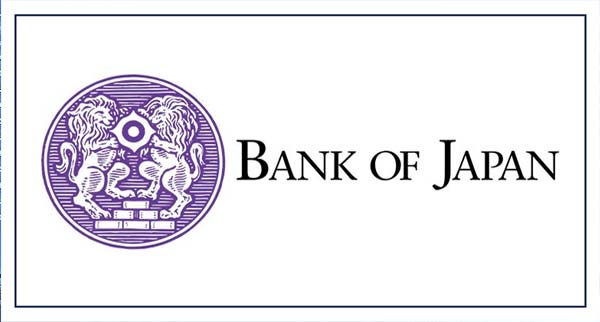 Boj Is Likely To Hike Rates
Nov 04 2025
By Adam Rosen
Boj Is Likely To Hike Rates
Nov 04 2025
By Adam Rosen
-
 Bitcoin Price Forecast
Nov 03 2025
By Ashly Chole
Bitcoin Price Forecast
Nov 03 2025
By Ashly Chole
-
 Best Quantum Computing Stock
Nov 03 2025
By Ashly Chole
Best Quantum Computing Stock
Nov 03 2025
By Ashly Chole
-
 Applied Materials Stock Analysis
Nov 02 2025
By Emily Clark
Applied Materials Stock Analysis
Nov 02 2025
By Emily Clark
-
 Best Gold Mining Stock
Nov 02 2025
By Adam Rosen
Best Gold Mining Stock
Nov 02 2025
By Adam Rosen
-
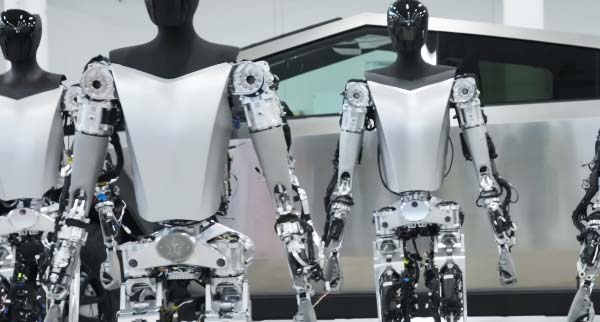 Ai Stocks To Buy
Nov 01 2025
By Adam Rosen
Ai Stocks To Buy
Nov 01 2025
By Adam Rosen
-
 Amazon Stock Forecast
Nov 01 2025
By Andrew Blumer
Amazon Stock Forecast
Nov 01 2025
By Andrew Blumer
-
 Ai Boom Boosted Gdp Growth
Oct 31 2025
By Andrew Blumer
Ai Boom Boosted Gdp Growth
Oct 31 2025
By Andrew Blumer
-
 2 Best Growth Stocks
Oct 31 2025
By Adam Rosen
2 Best Growth Stocks
Oct 31 2025
By Adam Rosen
-
 Why Buy Alphabet Stock
Oct 30 2025
By Emily Clark
Why Buy Alphabet Stock
Oct 30 2025
By Emily Clark
-
 Wgc To Introduce Digital Gold
Oct 29 2025
By Ashly Chole
Wgc To Introduce Digital Gold
Oct 29 2025
By Ashly Chole
-
 Wayfair Stock Jumps From Bottom
Oct 29 2025
By Andrew Blumer
Wayfair Stock Jumps From Bottom
Oct 29 2025
By Andrew Blumer
-
 Usdjpy To Remain Bearish Scotiabank
Oct 28 2025
By Adam Rosen
Usdjpy To Remain Bearish Scotiabank
Oct 28 2025
By Adam Rosen
-
 Vodafone Share Forecast
Oct 28 2025
By Ashly Chole
Vodafone Share Forecast
Oct 28 2025
By Ashly Chole
-
 Usdcnh To Trade In Range
Oct 27 2025
By Ashly Chole
Usdcnh To Trade In Range
Oct 27 2025
By Ashly Chole
-
 Usdjpy Long Term Target
Oct 27 2025
By Adam Rosen
Usdjpy Long Term Target
Oct 27 2025
By Adam Rosen
-
 Usdcnh To Consolidate
Oct 26 2025
By Emily Clark
Usdcnh To Consolidate
Oct 26 2025
By Emily Clark
-
 Usdcad Long Term Forecast
Oct 26 2025
By Andrew Blumer
Usdcad Long Term Forecast
Oct 26 2025
By Andrew Blumer
-
 Us Stocks Doubled Their Value
Oct 25 2025
By Ashly Chole
Us Stocks Doubled Their Value
Oct 25 2025
By Ashly Chole
-
 Us Stock Market Will Crash
Oct 25 2025
By Emily Clark
Us Stock Market Will Crash
Oct 25 2025
By Emily Clark
-
 Us Growth Stocks To Buy
Oct 24 2025
By Andrew Blumer
Us Growth Stocks To Buy
Oct 24 2025
By Andrew Blumer
-
 Unitedhealth Group Stock Analysis
Oct 24 2025
By Emily Clark
Unitedhealth Group Stock Analysis
Oct 24 2025
By Emily Clark
-
 This Uk Stock Has Low Pe Ratio
Oct 23 2025
By Andrew Blumer
This Uk Stock Has Low Pe Ratio
Oct 23 2025
By Andrew Blumer
-
 Top Stocks From Ftse
Oct 23 2025
By Ashly Chole
Top Stocks From Ftse
Oct 23 2025
By Ashly Chole
-
 Tesco Share Price Forecast
Oct 22 2025
By Adam Rosen
Tesco Share Price Forecast
Oct 22 2025
By Adam Rosen
-
 Tech Stocks To Buy
Oct 22 2025
By Emily Clark
Tech Stocks To Buy
Oct 22 2025
By Emily Clark
-
 Should You Buy Reddit Stock
Oct 21 2025
By Ashly Chole
Should You Buy Reddit Stock
Oct 21 2025
By Ashly Chole
-
 Swiss Gold Exports Declines
Oct 21 2025
By Andrew Blumer
Swiss Gold Exports Declines
Oct 21 2025
By Andrew Blumer
-
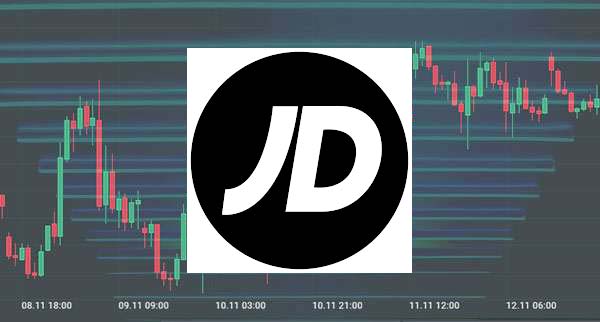 Should You Buy Jd Sports Shares
Oct 20 2025
By Adam Rosen
Should You Buy Jd Sports Shares
Oct 20 2025
By Adam Rosen
-
 Should You Buy Costco Stock
Oct 19 2025
By Adam Rosen
Should You Buy Costco Stock
Oct 19 2025
By Adam Rosen
-
 Russia Cuts Its Oil Production
Oct 19 2025
By Andrew Blumer
Russia Cuts Its Oil Production
Oct 19 2025
By Andrew Blumer
-
 Oil Falls On Supply Hike Talk
Oct 18 2025
By Emily Clark
Oil Falls On Supply Hike Talk
Oct 18 2025
By Emily Clark
-
 Rolls Royce Stock Moves
Oct 18 2025
By Emily Clark
Rolls Royce Stock Moves
Oct 18 2025
By Emily Clark
-
 Nvidia Will Be The Next Apple
Oct 17 2025
By Ashly Chole
Nvidia Will Be The Next Apple
Oct 17 2025
By Ashly Chole
-
 Nvidia Stock Jumps
Oct 17 2025
By Adam Rosen
Nvidia Stock Jumps
Oct 17 2025
By Adam Rosen
-
 Nvidia Share Price Forecast
Oct 16 2025
By Andrew Blumer
Nvidia Share Price Forecast
Oct 16 2025
By Andrew Blumer
-
 Nike Stock Rebounds
Oct 16 2025
By Adam Rosen
Nike Stock Rebounds
Oct 16 2025
By Adam Rosen
-
 Nextracker Vs Oklo Stock
Oct 15 2025
By Adam Rosen
Nextracker Vs Oklo Stock
Oct 15 2025
By Adam Rosen
-
 Newsmax Stock Forecast
Oct 15 2025
By Emily Clark
Newsmax Stock Forecast
Oct 15 2025
By Emily Clark
-
 How To Survive Market Crash
Oct 14 2025
By Ashly Chole
How To Survive Market Crash
Oct 14 2025
By Ashly Chole
-
 Gold Will Reach New Highs
Oct 13 2025
By Emily Clark
Gold Will Reach New Highs
Oct 13 2025
By Emily Clark
-
 Gold Moves Lower Commerzbank
Oct 13 2025
By Andrew Blumer
Gold Moves Lower Commerzbank
Oct 13 2025
By Andrew Blumer
-
 Gbpeur Will Be Bearish
Oct 12 2025
By Adam Rosen
Gbpeur Will Be Bearish
Oct 12 2025
By Adam Rosen
-
 Gbpusd Forecast Scotiabank
Oct 12 2025
By Ashly Chole
Gbpusd Forecast Scotiabank
Oct 12 2025
By Ashly Chole
-
 Filtronic Stock Price Will Jump
Oct 11 2025
By Ashly Chole
Filtronic Stock Price Will Jump
Oct 11 2025
By Ashly Chole
-
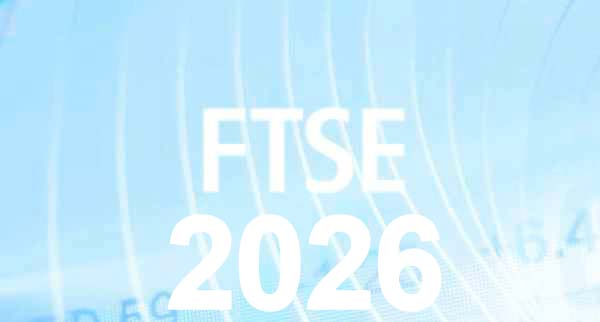 Ftse Forecast For Next Year
Oct 11 2025
By Adam Rosen
Ftse Forecast For Next Year
Oct 11 2025
By Adam Rosen
-
 Eurusd Forecast Wells Fargo
Oct 10 2025
By Adam Rosen
Eurusd Forecast Wells Fargo
Oct 10 2025
By Adam Rosen
-
 Fears About Alphabet Stock
Oct 10 2025
By Andrew Blumer
Fears About Alphabet Stock
Oct 10 2025
By Andrew Blumer
-
 Ethereum Vs Bnb
Oct 09 2025
By Emily Clark
Ethereum Vs Bnb
Oct 09 2025
By Emily Clark
-
 Euro Is Underperforming
Oct 09 2025
By Andrew Blumer
Euro Is Underperforming
Oct 09 2025
By Andrew Blumer
-
 Datadog Stock Forecast
Oct 08 2025
By Emily Clark
Datadog Stock Forecast
Oct 08 2025
By Emily Clark
-
 Domino Pizza Stock Analysis
Oct 08 2025
By Andrew Blumer
Domino Pizza Stock Analysis
Oct 08 2025
By Andrew Blumer
-
 Coinbase Global Stock Forecast
Oct 07 2025
By Adam Rosen
Coinbase Global Stock Forecast
Oct 07 2025
By Adam Rosen
-
 Buy This Stock When Markets Crash
Oct 07 2025
By Emily Clark
Buy This Stock When Markets Crash
Oct 07 2025
By Emily Clark
-
 Buy Gold Mining Stocks
Oct 06 2025
By Emily Clark
Buy Gold Mining Stocks
Oct 06 2025
By Emily Clark
-
 Bullish Forecast For Eurusd
Oct 06 2025
By Emily Clark
Bullish Forecast For Eurusd
Oct 06 2025
By Emily Clark
-
 Bp Share Price Forecast
Oct 05 2025
By Emily Clark
Bp Share Price Forecast
Oct 05 2025
By Emily Clark
-
 Bae Systems Stock Analysis
Oct 05 2025
By Ashly Chole
Bae Systems Stock Analysis
Oct 05 2025
By Ashly Chole
-
 Aviva Share Forecast
Oct 04 2025
By Ashly Chole
Aviva Share Forecast
Oct 04 2025
By Ashly Chole
-
 Asml Forecast For Eight Years
Oct 04 2025
By Adam Rosen
Asml Forecast For Eight Years
Oct 04 2025
By Adam Rosen
-
 Ups Stock Forecast
Oct 03 2025
By Andrew Blumer
Ups Stock Forecast
Oct 03 2025
By Andrew Blumer
-
 Us Dollar To Weaken
Oct 03 2025
By Ashly Chole
Us Dollar To Weaken
Oct 03 2025
By Ashly Chole
-
 Two Growth Stocks To Consider
Oct 02 2025
By Ashly Chole
Two Growth Stocks To Consider
Oct 02 2025
By Ashly Chole
-
 Uk Share To Benefit From Weak Gbp
Oct 02 2025
By Ashly Chole
Uk Share To Benefit From Weak Gbp
Oct 02 2025
By Ashly Chole
-
 Tips For Buying Penny Shares
Oct 01 2025
By Adam Rosen
Tips For Buying Penny Shares
Oct 01 2025
By Adam Rosen
-
 Two Ftse Stocks With Gains
Oct 01 2025
By Adam Rosen
Two Ftse Stocks With Gains
Oct 01 2025
By Adam Rosen
-
 Tesla Stock Soared
Sep 30 2025
By Ashly Chole
Tesla Stock Soared
Sep 30 2025
By Ashly Chole
-
 Taylor Wimpey To Exit Ftse
Sep 30 2025
By Adam Rosen
Taylor Wimpey To Exit Ftse
Sep 30 2025
By Adam Rosen
-
 Stock Market Is Overbought
Sep 29 2025
By Andrew Blumer
Stock Market Is Overbought
Sep 29 2025
By Andrew Blumer
-
 Russia To Export More Oil
Sep 29 2025
By Emily Clark
Russia To Export More Oil
Sep 29 2025
By Emily Clark
-
 Solanato Target Resistance
Sep 28 2025
By Ashly Chole
Solanato Target Resistance
Sep 28 2025
By Ashly Chole
-
 Snowflake Stock Analysis
Sep 27 2025
By Emily Clark
Snowflake Stock Analysis
Sep 27 2025
By Emily Clark
-
 Robotaxis Will Save Tesla Stock
Sep 26 2025
By Adam Rosen
Robotaxis Will Save Tesla Stock
Sep 26 2025
By Adam Rosen
-
 Opec To Increase Production
Sep 25 2025
By Emily Clark
Opec To Increase Production
Sep 25 2025
By Emily Clark
-
 Roblox Stock Analysis
Sep 25 2025
By Andrew Blumer
Roblox Stock Analysis
Sep 25 2025
By Andrew Blumer
-
 Nzdusd Long Term Forecast
Sep 24 2025
By Ashly Chole
Nzdusd Long Term Forecast
Sep 24 2025
By Ashly Chole
-
 Nvidia Vs Palantir
Sep 24 2025
By Andrew Blumer
Nvidia Vs Palantir
Sep 24 2025
By Andrew Blumer
-
 No Hurdle For Low Rates
Sep 23 2025
By Adam Rosen
No Hurdle For Low Rates
Sep 23 2025
By Adam Rosen
-
 Nvidia Buyback Plan Is Good
Sep 23 2025
By Andrew Blumer
Nvidia Buyback Plan Is Good
Sep 23 2025
By Andrew Blumer
-
 Marks And Spencer Stock Analysis
Sep 22 2025
By Adam Rosen
Marks And Spencer Stock Analysis
Sep 22 2025
By Adam Rosen
-
 Monero To Rally Higher
Sep 22 2025
By Andrew Blumer
Monero To Rally Higher
Sep 22 2025
By Andrew Blumer
-
 Jpy Under Pressure Rabobank
Sep 21 2025
By Emily Clark
Jpy Under Pressure Rabobank
Sep 21 2025
By Emily Clark
-
 Iron Ore Prices Jump Ing
Sep 21 2025
By Andrew Blumer
Iron Ore Prices Jump Ing
Sep 21 2025
By Andrew Blumer
-
 Intel Is Good Ai Stock
Sep 20 2025
By Emily Clark
Intel Is Good Ai Stock
Sep 20 2025
By Emily Clark
-
 How Ai Affected Adobe Stock
Sep 20 2025
By Andrew Blumer
How Ai Affected Adobe Stock
Sep 20 2025
By Andrew Blumer
-
 Greggs Is It Worth Buying
Sep 19 2025
By Andrew Blumer
Greggs Is It Worth Buying
Sep 19 2025
By Andrew Blumer
-
 Growth Stocks To Double Money
Sep 19 2025
By Adam Rosen
Growth Stocks To Double Money
Sep 19 2025
By Adam Rosen
-
 Gold Rises Due To Conflict
Sep 18 2025
By Andrew Blumer
Gold Rises Due To Conflict
Sep 18 2025
By Andrew Blumer
-
 Gbpeur To Fall Ubs
Sep 18 2025
By Emily Clark
Gbpeur To Fall Ubs
Sep 18 2025
By Emily Clark
-
 Gbpeur To Decline Ubs
Sep 17 2025
By Andrew Blumer
Gbpeur To Decline Ubs
Sep 17 2025
By Andrew Blumer
-
 Ftse Forecast For Year End
Sep 17 2025
By Adam Rosen
Ftse Forecast For Year End
Sep 17 2025
By Adam Rosen
-
 Filtronic Stock Analysis
Sep 16 2025
By Andrew Blumer
Filtronic Stock Analysis
Sep 16 2025
By Andrew Blumer
-
 Eurusd Will Slump Lower
Sep 16 2025
By Andrew Blumer
Eurusd Will Slump Lower
Sep 16 2025
By Andrew Blumer
-
 Eurusd To Rally Higher Goldman
Sep 15 2025
By Andrew Blumer
Eurusd To Rally Higher Goldman
Sep 15 2025
By Andrew Blumer
-
 Eurusd To Cross Resistance
Sep 15 2025
By Andrew Blumer
Eurusd To Cross Resistance
Sep 15 2025
By Andrew Blumer
-
 China Will Import More Gas
Sep 14 2025
By Adam Rosen
China Will Import More Gas
Sep 14 2025
By Adam Rosen
-
 Dollar General Stock Analysis
Sep 14 2025
By Andrew Blumer
Dollar General Stock Analysis
Sep 14 2025
By Andrew Blumer
-
 Buy This Stock To Avoid Ai Crash
Sep 13 2025
By Emily Clark
Buy This Stock To Avoid Ai Crash
Sep 13 2025
By Emily Clark
-
 Can Adidas Stock Recover
Sep 13 2025
By Emily Clark
Can Adidas Stock Recover
Sep 13 2025
By Emily Clark
-
 Bnb Rally Towards 1k
Sep 12 2025
By Andrew Blumer
Bnb Rally Towards 1k
Sep 12 2025
By Andrew Blumer
-
 Audusd To Move Higher
Sep 11 2025
By Emily Clark
Audusd To Move Higher
Sep 11 2025
By Emily Clark
-
 Amd Stock Surge Higher
Sep 11 2025
By Andrew Blumer
Amd Stock Surge Higher
Sep 11 2025
By Andrew Blumer
-
 Etoro Traders Copy Scientists Trades
Sep 02 2025
By Emily Clark
Etoro Traders Copy Scientists Trades
Sep 02 2025
By Emily Clark
-
 Nzdusd Unlikely To Break Support Uob
Sep 02 2025
By Andrew Blumer
Nzdusd Unlikely To Break Support Uob
Sep 02 2025
By Andrew Blumer
-
 Etoro Launches Nft Fund
Sep 01 2025
By Adam Rosen
Etoro Launches Nft Fund
Sep 01 2025
By Adam Rosen
-
 Etoro Lists Apecoin
Sep 01 2025
By Adam Rosen
Etoro Lists Apecoin
Sep 01 2025
By Adam Rosen
-
 Etoro 10 Billion Nasdaq Listing
Aug 31 2025
By Andrew Blumer
Etoro 10 Billion Nasdaq Listing
Aug 31 2025
By Andrew Blumer
-
 Etoro Copytraders Average Profit
Aug 31 2025
By Andrew Blumer
Etoro Copytraders Average Profit
Aug 31 2025
By Andrew Blumer
-
 Xrp Vs Pepeto
Aug 30 2025
By Ashly Chole
Xrp Vs Pepeto
Aug 30 2025
By Ashly Chole
-
 Wti Moves Lower
Aug 30 2025
By Ashly Chole
Wti Moves Lower
Aug 30 2025
By Ashly Chole
-
 Why You Should Buy Dogecoin
Aug 29 2025
By Adam Rosen
Why You Should Buy Dogecoin
Aug 29 2025
By Adam Rosen
-
 Wells Fargo Gbpusd Forecast
Aug 29 2025
By Emily Clark
Wells Fargo Gbpusd Forecast
Aug 29 2025
By Emily Clark
-
 Usdjpy Moves Higher Rabobank
Aug 28 2025
By Andrew Blumer
Usdjpy Moves Higher Rabobank
Aug 28 2025
By Andrew Blumer
-
 Usdmxn Forecast Rabobank
Aug 28 2025
By Emily Clark
Usdmxn Forecast Rabobank
Aug 28 2025
By Emily Clark
-
 Usdjpy Bullish Trend Paused
Aug 27 2025
By Adam Rosen
Usdjpy Bullish Trend Paused
Aug 27 2025
By Adam Rosen
-
 Us Tariffs Causes Risk Aversion
Aug 27 2025
By Ashly Chole
Us Tariffs Causes Risk Aversion
Aug 27 2025
By Ashly Chole
-
 Us Healthcare Stock To Consider
Aug 26 2025
By Ashly Chole
Us Healthcare Stock To Consider
Aug 26 2025
By Ashly Chole
-
 Us Copper Tariffs Commerzbank
Aug 25 2025
By Andrew Blumer
Us Copper Tariffs Commerzbank
Aug 25 2025
By Andrew Blumer
-
 Us Dollar Remains Weak
Aug 25 2025
By Emily Clark
Us Dollar Remains Weak
Aug 25 2025
By Emily Clark
-
 Uk Stocks That Are Still Cheap
Aug 24 2025
By Emily Clark
Uk Stocks That Are Still Cheap
Aug 24 2025
By Emily Clark
-
 Unilever And Games Workshop
Aug 24 2025
By Emily Clark
Unilever And Games Workshop
Aug 24 2025
By Emily Clark
-
 Two Us Stocks For Long Term
Aug 23 2025
By Andrew Blumer
Two Us Stocks For Long Term
Aug 23 2025
By Andrew Blumer
-
 Two Cybersecurity Stocks
Aug 23 2025
By Adam Rosen
Two Cybersecurity Stocks
Aug 23 2025
By Adam Rosen
-
 Three Crypto Tokens To Watch
Aug 22 2025
By Adam Rosen
Three Crypto Tokens To Watch
Aug 22 2025
By Adam Rosen
-
 Three Ai Stocks To Buy
Aug 22 2025
By Andrew Blumer
Three Ai Stocks To Buy
Aug 22 2025
By Andrew Blumer
-
 Tesla Stock Looks Expensive
Aug 21 2025
By Andrew Blumer
Tesla Stock Looks Expensive
Aug 21 2025
By Andrew Blumer
-
 This Penny Stock Is Down
Aug 21 2025
By Adam Rosen
This Penny Stock Is Down
Aug 21 2025
By Adam Rosen
-
 Should You Buy Nvidia
Aug 20 2025
By Ashly Chole
Should You Buy Nvidia
Aug 20 2025
By Ashly Chole
-
 Slowdown In Global Growth
Aug 20 2025
By Ashly Chole
Slowdown In Global Growth
Aug 20 2025
By Ashly Chole
-
 Shiba Inu Performance Over Years
Aug 19 2025
By Ashly Chole
Shiba Inu Performance Over Years
Aug 19 2025
By Ashly Chole
-
 Oil Market Stay Cautious
Aug 19 2025
By Andrew Blumer
Oil Market Stay Cautious
Aug 19 2025
By Andrew Blumer
-
 Negative Development For Try
Aug 18 2025
By Andrew Blumer
Negative Development For Try
Aug 18 2025
By Andrew Blumer
-
 Nvidia After Stock Split
Aug 18 2025
By Andrew Blumer
Nvidia After Stock Split
Aug 18 2025
By Andrew Blumer
-
 Meta Platforms Stock Analysis
Aug 17 2025
By Ashly Chole
Meta Platforms Stock Analysis
Aug 17 2025
By Ashly Chole
-
 Meta Platforms Market Forecast
Aug 17 2025
By Adam Rosen
Meta Platforms Market Forecast
Aug 17 2025
By Adam Rosen
-
 Manufacturing Sector Shows Weakness
Aug 16 2025
By Emily Clark
Manufacturing Sector Shows Weakness
Aug 16 2025
By Emily Clark
-
 Memecoins To Consider
Aug 16 2025
By Ashly Chole
Memecoins To Consider
Aug 16 2025
By Ashly Chole
-
 Long Term Forecast For Eurusd
Aug 15 2025
By Adam Rosen
Long Term Forecast For Eurusd
Aug 15 2025
By Adam Rosen
-
 Is Uber Stock Expensive
Aug 15 2025
By Adam Rosen
Is Uber Stock Expensive
Aug 15 2025
By Adam Rosen
-
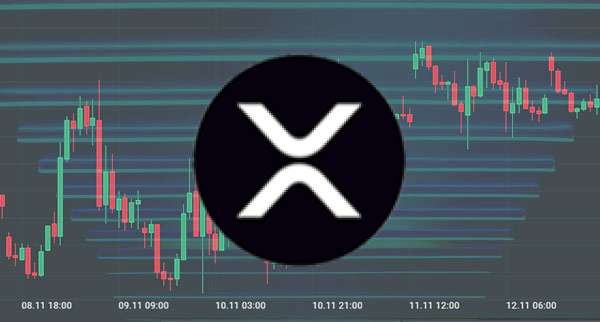 Is Ripple A Buy
Aug 14 2025
By Emily Clark
Is Ripple A Buy
Aug 14 2025
By Emily Clark
-
 Is The Ftse Index Overvalued
Aug 14 2025
By Andrew Blumer
Is The Ftse Index Overvalued
Aug 14 2025
By Andrew Blumer
-
 Gold Is Running Out Of Steam
Aug 13 2025
By Adam Rosen
Gold Is Running Out Of Steam
Aug 13 2025
By Adam Rosen
-
 Is Market In A Bubble
Aug 13 2025
By Adam Rosen
Is Market In A Bubble
Aug 13 2025
By Adam Rosen
-
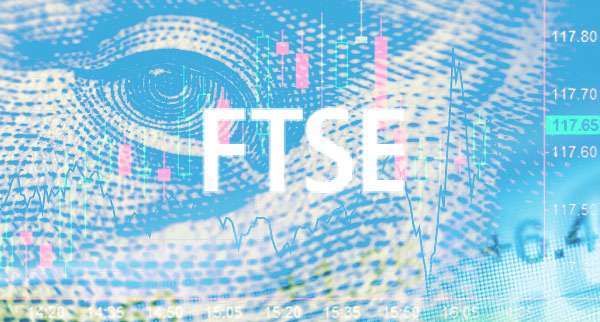 Ftse Shares With Low Pe Ratios
Aug 12 2025
By Andrew Blumer
Ftse Shares With Low Pe Ratios
Aug 12 2025
By Andrew Blumer
-
 Forecast For Bae Systems
Aug 12 2025
By Andrew Blumer
Forecast For Bae Systems
Aug 12 2025
By Andrew Blumer
-
 Fed To Cut Rates Rabobank
Aug 11 2025
By Emily Clark
Fed To Cut Rates Rabobank
Aug 11 2025
By Emily Clark
-
 Exxonmobil The Best Oil Stock
Aug 11 2025
By Adam Rosen
Exxonmobil The Best Oil Stock
Aug 11 2025
By Adam Rosen
-
 Eth To Reach New Highs
Aug 10 2025
By Ashly Chole
Eth To Reach New Highs
Aug 10 2025
By Ashly Chole
-
 Euro Remains Strong
Aug 10 2025
By Adam Rosen
Euro Remains Strong
Aug 10 2025
By Adam Rosen
-
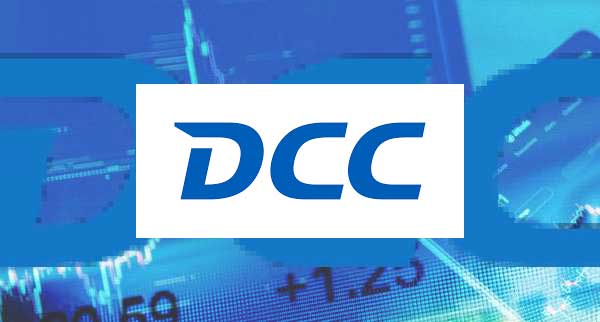 Dcc Stock Price Analysis
Aug 09 2025
By Emily Clark
Dcc Stock Price Analysis
Aug 09 2025
By Emily Clark
-
 Central Bank Warns On Overspending
Aug 09 2025
By Ashly Chole
Central Bank Warns On Overspending
Aug 09 2025
By Ashly Chole
-
 Carr Group Stock Is Worth Watching
Aug 08 2025
By Emily Clark
Carr Group Stock Is Worth Watching
Aug 08 2025
By Emily Clark
-
 Best Dividend Stocks
Aug 08 2025
By Andrew Blumer
Best Dividend Stocks
Aug 08 2025
By Andrew Blumer
-
 Altria High Dividend Yield
Aug 07 2025
By Emily Clark
Altria High Dividend Yield
Aug 07 2025
By Emily Clark
-
 A Look At The Us Debt Spiral
Aug 07 2025
By Ashly Chole
A Look At The Us Debt Spiral
Aug 07 2025
By Ashly Chole
-
 Zoom Shares Turn Higher
Aug 06 2025
By Adam Rosen
Zoom Shares Turn Higher
Aug 06 2025
By Adam Rosen
-
 Zulutrade Partners With Hextra Prime
Aug 06 2025
By Emily Clark
Zulutrade Partners With Hextra Prime
Aug 06 2025
By Emily Clark
-
 Yen Gains While Japanese Stocks Down
Aug 05 2025
By Ashly Chole
Yen Gains While Japanese Stocks Down
Aug 05 2025
By Ashly Chole
-
 Yen To Gain Against Usd Socgen
Aug 05 2025
By Emily Clark
Yen To Gain Against Usd Socgen
Aug 05 2025
By Emily Clark
-
 Yen Drops Under Pressure Aud Slips After Inflation Report
Aug 04 2025
By Adam Rosen
Yen Drops Under Pressure Aud Slips After Inflation Report
Aug 04 2025
By Adam Rosen
-
 Yen Downside Remains Capped
Aug 04 2025
By Ashly Chole
Yen Downside Remains Capped
Aug 04 2025
By Ashly Chole
-
 Xrp Trades High
Aug 03 2025
By Adam Rosen
Xrp Trades High
Aug 03 2025
By Adam Rosen
-
 Xrp Will Skyrocket This Year
Aug 03 2025
By Andrew Blumer
Xrp Will Skyrocket This Year
Aug 03 2025
By Andrew Blumer
-
 Xrp Stages An Impressive Recovery
Aug 02 2025
By Emily Clark
Xrp Stages An Impressive Recovery
Aug 02 2025
By Emily Clark
-
 Xrp Trades Above Support
Aug 02 2025
By Emily Clark
Xrp Trades Above Support
Aug 02 2025
By Emily Clark
-
 Vodafone Forecast For Next Year
Aug 01 2025
By Emily Clark
Vodafone Forecast For Next Year
Aug 01 2025
By Emily Clark
-
 What Usd Reversal Means For Gold
Aug 01 2025
By Andrew Blumer
What Usd Reversal Means For Gold
Aug 01 2025
By Andrew Blumer
-
 Us Market Headed For Trouble
Jul 31 2025
By Emily Clark
Us Market Headed For Trouble
Jul 31 2025
By Emily Clark
-
 Us Borrowing Remain High
Jul 31 2025
By Adam Rosen
Us Borrowing Remain High
Jul 31 2025
By Adam Rosen
-
 Uncertainty Over Us Chip Tariffs
Jul 30 2025
By Adam Rosen
Uncertainty Over Us Chip Tariffs
Jul 30 2025
By Adam Rosen
-
 Two Uk Shares To Hold
Jul 30 2025
By Adam Rosen
Two Uk Shares To Hold
Jul 30 2025
By Adam Rosen
-
 Top Cybersecurity Stocks To Buy
Jul 29 2025
By Emily Clark
Top Cybersecurity Stocks To Buy
Jul 29 2025
By Emily Clark
-
 Trump Calls For Lower Rates
Jul 29 2025
By Andrew Blumer
Trump Calls For Lower Rates
Jul 29 2025
By Andrew Blumer
-
 Stock Markets Will Crash
Jul 28 2025
By Andrew Blumer
Stock Markets Will Crash
Jul 28 2025
By Andrew Blumer
-
 Stocks To Win From Stablecoins
Jul 28 2025
By Andrew Blumer
Stocks To Win From Stablecoins
Jul 28 2025
By Andrew Blumer
-
 Softbank Invests In Ai Platforms
Jul 27 2025
By Andrew Blumer
Softbank Invests In Ai Platforms
Jul 27 2025
By Andrew Blumer
-
 Stablecoins Volume Jumps
Jul 27 2025
By Adam Rosen
Stablecoins Volume Jumps
Jul 27 2025
By Adam Rosen
-
 Serco Stock Hits Multi Year High
Jul 26 2025
By Ashly Chole
Serco Stock Hits Multi Year High
Jul 26 2025
By Ashly Chole
-
 Rolls Royce Share Price Forecast
Jul 25 2025
By Ashly Chole
Rolls Royce Share Price Forecast
Jul 25 2025
By Ashly Chole
-
 Rgti Forecast For Five Years
Jul 25 2025
By Adam Rosen
Rgti Forecast For Five Years
Jul 25 2025
By Adam Rosen
-
 Platinum Catching Up With Gold
Jul 24 2025
By Emily Clark
Platinum Catching Up With Gold
Jul 24 2025
By Emily Clark
-
 Pepe Forecast Shows Upside
Jul 24 2025
By Ashly Chole
Pepe Forecast Shows Upside
Jul 24 2025
By Ashly Chole
-
 Nvidia Vs Amd
Jul 23 2025
By Ashly Chole
Nvidia Vs Amd
Jul 23 2025
By Ashly Chole
-
 Ocado Group Shares Are Struggling
Jul 23 2025
By Ashly Chole
Ocado Group Shares Are Struggling
Jul 23 2025
By Ashly Chole
-
 Natural Gas Inventories Rise
Jul 22 2025
By Ashly Chole
Natural Gas Inventories Rise
Jul 22 2025
By Ashly Chole
-
 Most Shorted Stock On Ftse
Jul 22 2025
By Emily Clark
Most Shorted Stock On Ftse
Jul 22 2025
By Emily Clark
-
 Japan Inflation Pressure Eases
Jul 21 2025
By Emily Clark
Japan Inflation Pressure Eases
Jul 21 2025
By Emily Clark
-
 Lessons To Learn From Stock Market
Jul 21 2025
By Emily Clark
Lessons To Learn From Stock Market
Jul 21 2025
By Emily Clark
-
 Is Rolls Royce Rally Ending
Jul 20 2025
By Andrew Blumer
Is Rolls Royce Rally Ending
Jul 20 2025
By Andrew Blumer
-
 Is Greggs Share A Buy
Jul 20 2025
By Ashly Chole
Is Greggs Share A Buy
Jul 20 2025
By Ashly Chole
-
 Gbpusd To Move Higher
Jul 19 2025
By Ashly Chole
Gbpusd To Move Higher
Jul 19 2025
By Ashly Chole
-
 Ibm Tech Stock With Potential
Jul 19 2025
By Adam Rosen
Ibm Tech Stock With Potential
Jul 19 2025
By Adam Rosen
-
 Gbpchf To Move Higher Ubs
Jul 18 2025
By Adam Rosen
Gbpchf To Move Higher Ubs
Jul 18 2025
By Adam Rosen
-
 Gbpeur To Move Lower Danske Bank
Jul 18 2025
By Adam Rosen
Gbpeur To Move Lower Danske Bank
Jul 18 2025
By Adam Rosen
-
 Ftse 100 Industrial Stock
Jul 17 2025
By Ashly Chole
Ftse 100 Industrial Stock
Jul 17 2025
By Ashly Chole
-
 Four Undervalued Stocks
Jul 17 2025
By Andrew Blumer
Four Undervalued Stocks
Jul 17 2025
By Andrew Blumer
-
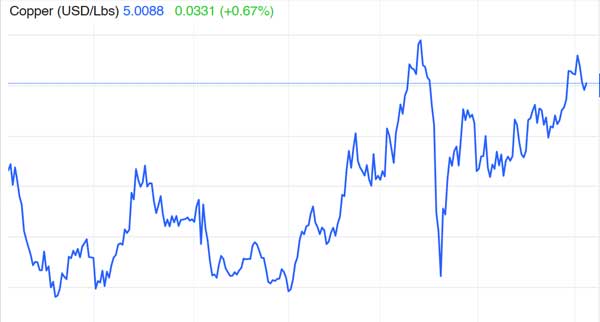 Copper Market Under Tension
Jul 16 2025
By Emily Clark
Copper Market Under Tension
Jul 16 2025
By Emily Clark
-
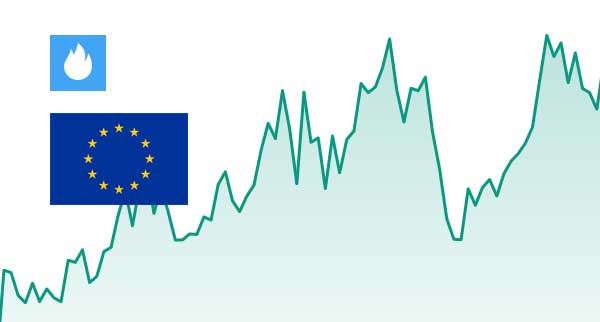 Eu Gas Market Shows Easing Signs
Jul 16 2025
By Andrew Blumer
Eu Gas Market Shows Easing Signs
Jul 16 2025
By Andrew Blumer
-
 Cheap Tech Stocks
Jul 15 2025
By Andrew Blumer
Cheap Tech Stocks
Jul 15 2025
By Andrew Blumer
-
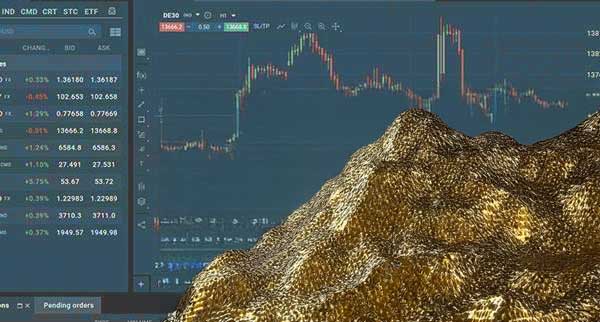 Central Banks Will Buy Gold
Jul 15 2025
By Adam Rosen
Central Banks Will Buy Gold
Jul 15 2025
By Adam Rosen
-
 Btc Forecast For Q3 And Q4
Jul 14 2025
By Emily Clark
Btc Forecast For Q3 And Q4
Jul 14 2025
By Emily Clark
-
 Bt Stock Price Forecast
Jul 14 2025
By Ashly Chole
Bt Stock Price Forecast
Jul 14 2025
By Ashly Chole
-
 Bp Vs Shell Stock Comparison
Jul 13 2025
By Andrew Blumer
Bp Vs Shell Stock Comparison
Jul 13 2025
By Andrew Blumer
-
 Bofa Forecast For Eurusd
Jul 13 2025
By Emily Clark
Bofa Forecast For Eurusd
Jul 13 2025
By Emily Clark
-
 Bitcoin To Hit 200k
Jul 12 2025
By Emily Clark
Bitcoin To Hit 200k
Jul 12 2025
By Emily Clark
-
 Best International Stocks To Buy
Jul 12 2025
By Ashly Chole
Best International Stocks To Buy
Jul 12 2025
By Ashly Chole
-
 Best Growth Stocks To Watch
Jul 11 2025
By Emily Clark
Best Growth Stocks To Watch
Jul 11 2025
By Emily Clark
-
 Apple Stock Is A Sleeping Giant
Jul 11 2025
By Emily Clark
Apple Stock Is A Sleeping Giant
Jul 11 2025
By Emily Clark
-
 Apple Looks Overvalued
Jul 10 2025
By Ashly Chole
Apple Looks Overvalued
Jul 10 2025
By Ashly Chole
-
 Ai Stocks To Hold Long Term
Jul 10 2025
By Ashly Chole
Ai Stocks To Hold Long Term
Jul 10 2025
By Ashly Chole
-
 A Cheap Stock From Lse
Jul 09 2025
By Adam Rosen
A Cheap Stock From Lse
Jul 09 2025
By Adam Rosen
-
 Ai Stocks From Ftse 100
Jul 09 2025
By Ashly Chole
Ai Stocks From Ftse 100
Jul 09 2025
By Ashly Chole
-
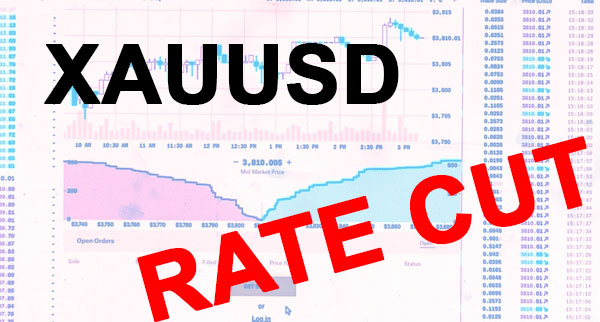 Xauusd Steady On Rate Cut Hopes
Jul 08 2025
By Emily Clark
Xauusd Steady On Rate Cut Hopes
Jul 08 2025
By Emily Clark
-
 Xrp Receives Flare Upgrade
Jul 08 2025
By Ashly Chole
Xrp Receives Flare Upgrade
Jul 08 2025
By Ashly Chole
-
 Xai Buys X Billions Of Dollars
Jul 07 2025
By Ashly Chole
Xai Buys X Billions Of Dollars
Jul 07 2025
By Ashly Chole
-
 Xagusd Trades Near Resistance
Jul 07 2025
By Ashly Chole
Xagusd Trades Near Resistance
Jul 07 2025
By Ashly Chole
-
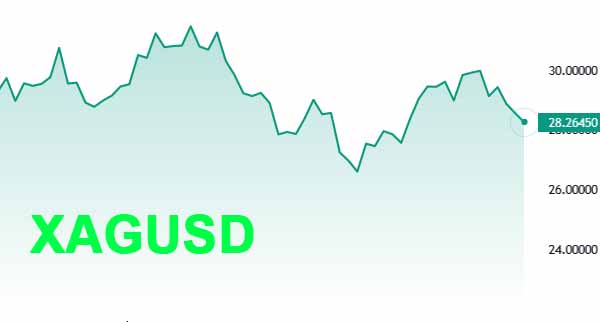 Xagusd Faces Strong Resistance
Jul 06 2025
By Andrew Blumer
Xagusd Faces Strong Resistance
Jul 06 2025
By Andrew Blumer
-
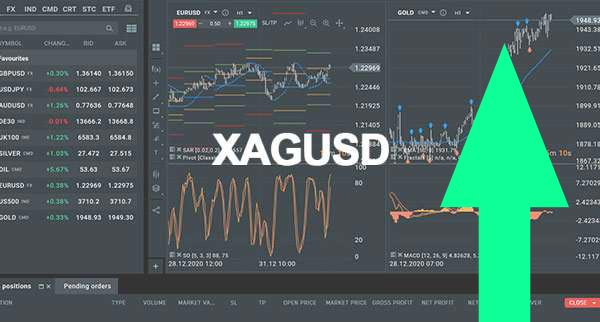 Xagusd Jumps Above Resistance
Jul 06 2025
By Adam Rosen
Xagusd Jumps Above Resistance
Jul 06 2025
By Adam Rosen
-
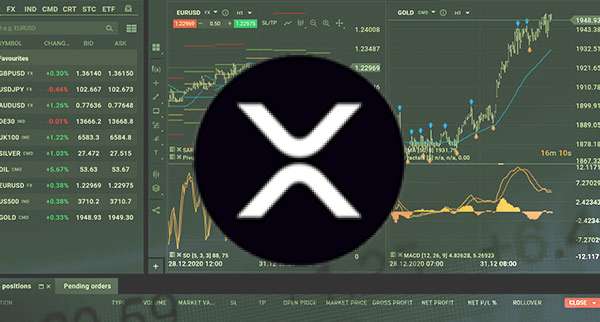 Xrp Price Drops By 12 As Investors Turn Cautious
Jul 05 2025
By Adam Rosen
Xrp Price Drops By 12 As Investors Turn Cautious
Jul 05 2025
By Adam Rosen
-
 Xrp Ripple Still Growing In Asia
Jul 05 2025
By Adam Rosen
Xrp Ripple Still Growing In Asia
Jul 05 2025
By Adam Rosen
-
 Xrp Is Under Pressure Amidst Rally In Crypto Market
Jul 04 2025
By Emily Clark
Xrp Is Under Pressure Amidst Rally In Crypto Market
Jul 04 2025
By Emily Clark
-
 Xrp Forecast Next Target Is 44 As Bulls Show Promise
Jul 04 2025
By Ashly Chole
Xrp Forecast Next Target Is 44 As Bulls Show Promise
Jul 04 2025
By Ashly Chole
-
 Xrp Could Rally Up To 20 Under Fresh Bullish Momentum
Jul 03 2025
By Ashly Chole
Xrp Could Rally Up To 20 Under Fresh Bullish Momentum
Jul 03 2025
By Ashly Chole
-
 Xm One Of The Best Metatrader 5 Brokers In Uk
Jul 03 2025
By Adam Rosen
Xm One Of The Best Metatrader 5 Brokers In Uk
Jul 03 2025
By Adam Rosen
-
 Xauusd Bulls Will Likely Pause Near 2k
Jul 02 2025
By Emily Clark
Xauusd Bulls Will Likely Pause Near 2k
Jul 02 2025
By Emily Clark
-
 Xagusd Challenges A Major Sma
Jul 02 2025
By Adam Rosen
Xagusd Challenges A Major Sma
Jul 02 2025
By Adam Rosen
-
 Wti Returns Back Lower
Jul 01 2025
By Adam Rosen
Wti Returns Back Lower
Jul 01 2025
By Adam Rosen
-
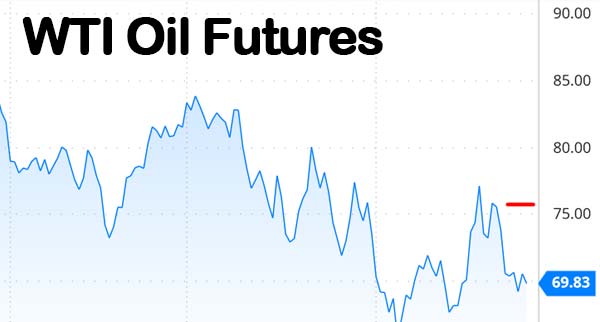 Wti Weak On Bearish Bias
Jul 01 2025
By Emily Clark
Wti Weak On Bearish Bias
Jul 01 2025
By Emily Clark
-
 Wti Jumps Despite Stronger Usd
Jun 30 2025
By Ashly Chole
Wti Jumps Despite Stronger Usd
Jun 30 2025
By Ashly Chole
-
 Wti Jumps On Declining Us Inventories
Jun 30 2025
By Adam Rosen
Wti Jumps On Declining Us Inventories
Jun 30 2025
By Adam Rosen
-
 World Largest Exchange Binance Will Not Buy Ftx In A Megadeal
Jun 29 2025
By Adam Rosen
World Largest Exchange Binance Will Not Buy Ftx In A Megadeal
Jun 29 2025
By Adam Rosen
-
 Wti Declines On Economic Woes
Jun 29 2025
By Andrew Blumer
Wti Declines On Economic Woes
Jun 29 2025
By Andrew Blumer
-
 With New Uk Prime Minister Stocks Become Attractive
Jun 28 2025
By Ashly Chole
With New Uk Prime Minister Stocks Become Attractive
Jun 28 2025
By Ashly Chole
-
 Will Elon Musk Largest Social Media Owner
Jun 28 2025
By Adam Rosen
Will Elon Musk Largest Social Media Owner
Jun 28 2025
By Adam Rosen
-
 Will Elon Buy Facebook
Jun 27 2025
By Andrew Blumer
Will Elon Buy Facebook
Jun 27 2025
By Andrew Blumer
-
 Will Bitcoin Bounce
Jun 27 2025
By Emily Clark
Will Bitcoin Bounce
Jun 27 2025
By Emily Clark
-
 Why Trading Is Hard
Jun 26 2025
By Emily Clark
Why Trading Is Hard
Jun 26 2025
By Emily Clark
-
 Why Retail Investors Are So Concerned
Jun 26 2025
By Adam Rosen
Why Retail Investors Are So Concerned
Jun 26 2025
By Adam Rosen
-
 Why Is Good Idea To Buy Salesforce Stocks
Jun 25 2025
By Andrew Blumer
Why Is Good Idea To Buy Salesforce Stocks
Jun 25 2025
By Andrew Blumer
-
 Why Nike Is A Strong Buy
Jun 25 2025
By Emily Clark
Why Nike Is A Strong Buy
Jun 25 2025
By Emily Clark
-
 Why Google Is A Good Investment
Jun 24 2025
By Ashly Chole
Why Google Is A Good Investment
Jun 24 2025
By Ashly Chole
-
 Why Cryptocurrency Crime At All Time High
Jun 24 2025
By Adam Rosen
Why Cryptocurrency Crime At All Time High
Jun 24 2025
By Adam Rosen
-
 Westpac Rba To Start Cutting Cycle
Jun 23 2025
By Adam Rosen
Westpac Rba To Start Cutting Cycle
Jun 23 2025
By Adam Rosen
-
 Weekly Initial Jobless Claims Jumps
Jun 23 2025
By Andrew Blumer
Weekly Initial Jobless Claims Jumps
Jun 23 2025
By Andrew Blumer
-
 Weak Us Cpi Is Bad For Stocks Rbc
Jun 22 2025
By Andrew Blumer
Weak Us Cpi Is Bad For Stocks Rbc
Jun 22 2025
By Andrew Blumer
-
 Weak Cad Will Not Stop Boc Divergence
Jun 22 2025
By Andrew Blumer
Weak Cad Will Not Stop Boc Divergence
Jun 22 2025
By Andrew Blumer
-
 Walmart Stock Analysis
Jun 21 2025
By Emily Clark
Walmart Stock Analysis
Jun 21 2025
By Emily Clark
-
 Walmart Vs Target Which Is Better
Jun 21 2025
By Adam Rosen
Walmart Vs Target Which Is Better
Jun 21 2025
By Adam Rosen
-
 Wall Street To Open Higher
Jun 20 2025
By Andrew Blumer
Wall Street To Open Higher
Jun 20 2025
By Andrew Blumer
-
 Wall Street Moves Higher
Jun 20 2025
By Adam Rosen
Wall Street Moves Higher
Jun 20 2025
By Adam Rosen
-
 Vodafone Sells Its Share In Vantage Towers
Jun 19 2025
By Emily Clark
Vodafone Sells Its Share In Vantage Towers
Jun 19 2025
By Emily Clark
-
 Vodafone Stock Value
Jun 19 2025
By Adam Rosen
Vodafone Stock Value
Jun 19 2025
By Adam Rosen
-
 Usdt Market Cap Reaches New High
Jun 18 2025
By Ashly Chole
Usdt Market Cap Reaches New High
Jun 18 2025
By Ashly Chole
-
 Usdjpy Turns Higher
Jun 18 2025
By Andrew Blumer
Usdjpy Turns Higher
Jun 18 2025
By Andrew Blumer
-
 Usdjpy To To Move Higher Uob
Jun 17 2025
By Andrew Blumer
Usdjpy To To Move Higher Uob
Jun 17 2025
By Andrew Blumer
-
 Usdjpy Trades Strong On Boj Rumors
Jun 17 2025
By Adam Rosen
Usdjpy Trades Strong On Boj Rumors
Jun 17 2025
By Adam Rosen
-
 Usdjpy Trades On Sticky Inflation
Jun 16 2025
By Andrew Blumer
Usdjpy Trades On Sticky Inflation
Jun 16 2025
By Andrew Blumer
-
 Usdjpy Trades Low On Risk Aversion
Jun 15 2025
By Adam Rosen
Usdjpy Trades Low On Risk Aversion
Jun 15 2025
By Adam Rosen
-
 Usdjpy Trades Green Before Fedspeak
Jun 14 2025
By Andrew Blumer
Usdjpy Trades Green Before Fedspeak
Jun 14 2025
By Andrew Blumer
-
 Usdjpy To Trade Lower Citi
Jun 13 2025
By Ashly Chole
Usdjpy To Trade Lower Citi
Jun 13 2025
By Ashly Chole
-
 Usdjpy To Trade In Range Uob
Jun 12 2025
By Emily Clark
Usdjpy To Trade In Range Uob
Jun 12 2025
By Emily Clark
-
 Usdcad To Stay Bearish Scotiabank
Jun 11 2025
By Emily Clark
Usdcad To Stay Bearish Scotiabank
Jun 11 2025
By Emily Clark
-
 Usdcnh Eyes Next Support
Jun 11 2025
By Andrew Blumer
Usdcnh Eyes Next Support
Jun 11 2025
By Andrew Blumer
-
 Usdcad To Move Higher Ing
Jun 10 2025
By Andrew Blumer
Usdcad To Move Higher Ing
Jun 10 2025
By Andrew Blumer
-
 Try Faces Risks Commerzbank
Jun 10 2025
By Andrew Blumer
Try Faces Risks Commerzbank
Jun 10 2025
By Andrew Blumer
-
 Should You Buy Smci
Jun 09 2025
By Emily Clark
Should You Buy Smci
Jun 09 2025
By Emily Clark
-
 Tesla Is A Bargain Or Overrated
Jun 09 2025
By Emily Clark
Tesla Is A Bargain Or Overrated
Jun 09 2025
By Emily Clark
-
 Scotiabank Usdcad Fair Value
Jun 08 2025
By Andrew Blumer
Scotiabank Usdcad Fair Value
Jun 08 2025
By Andrew Blumer
-
 Rolls Royce Forecast For Two Years
Jun 07 2025
By Andrew Blumer
Rolls Royce Forecast For Two Years
Jun 07 2025
By Andrew Blumer
-
 Rivian Forecast For 3 Years
Jun 07 2025
By Adam Rosen
Rivian Forecast For 3 Years
Jun 07 2025
By Adam Rosen
-
 Rgti Is The Next Nvidia
Jun 06 2025
By Adam Rosen
Rgti Is The Next Nvidia
Jun 06 2025
By Adam Rosen
-
 Pi Coin Moves Lower
Jun 06 2025
By Andrew Blumer
Pi Coin Moves Lower
Jun 06 2025
By Andrew Blumer
-
 Nebius Group Ai Data Center Stock
Jun 05 2025
By Adam Rosen
Nebius Group Ai Data Center Stock
Jun 05 2025
By Adam Rosen
-
 Meta Or Alphabet Which Is Best
Jun 05 2025
By Emily Clark
Meta Or Alphabet Which Is Best
Jun 05 2025
By Emily Clark
-
 Is Ai A Threat To Big Tech
Jun 04 2025
By Ashly Chole
Is Ai A Threat To Big Tech
Jun 04 2025
By Ashly Chole
-
 Is Aston Martin A Buy
Jun 04 2025
By Ashly Chole
Is Aston Martin A Buy
Jun 04 2025
By Ashly Chole
-
 Gold Stays Strong
Jun 03 2025
By Andrew Blumer
Gold Stays Strong
Jun 03 2025
By Andrew Blumer
-
 Goldman Forecasts Decline
Jun 03 2025
By Adam Rosen
Goldman Forecasts Decline
Jun 03 2025
By Adam Rosen
-
 Gbpeur Will Touch Higher Ing
Jun 02 2025
By Adam Rosen
Gbpeur Will Touch Higher Ing
Jun 02 2025
By Adam Rosen
-
 Gbpusd Forecast For End 2025
Jun 02 2025
By Emily Clark
Gbpusd Forecast For End 2025
Jun 02 2025
By Emily Clark
-
 Gbpaud To Slip Nomura
Jun 01 2025
By Adam Rosen
Gbpaud To Slip Nomura
Jun 01 2025
By Adam Rosen
-
 Gbpeur To Move Higher Barclays
Jun 01 2025
By Emily Clark
Gbpeur To Move Higher Barclays
Jun 01 2025
By Emily Clark
-
 Forecast For Sp 500 Index
May 31 2025
By Ashly Chole
Forecast For Sp 500 Index
May 31 2025
By Ashly Chole
-
 Eurchf To Jump Higher Socgen
May 31 2025
By Emily Clark
Eurchf To Jump Higher Socgen
May 31 2025
By Emily Clark
-
 Deutsche Bank Bullish On Tesco
May 30 2025
By Emily Clark
Deutsche Bank Bullish On Tesco
May 30 2025
By Emily Clark
-
 Dogecoin Forecast Shows Bullish Target
May 30 2025
By Adam Rosen
Dogecoin Forecast Shows Bullish Target
May 30 2025
By Adam Rosen
-
 Copa Holdings Underrated Stock
May 29 2025
By Emily Clark
Copa Holdings Underrated Stock
May 29 2025
By Emily Clark
-
 Danske Forecast For Eurusd
May 29 2025
By Emily Clark
Danske Forecast For Eurusd
May 29 2025
By Emily Clark
-
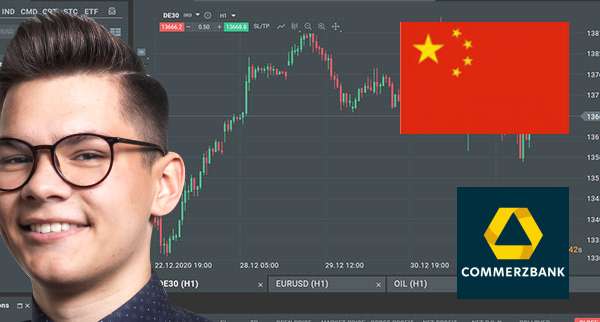 China Copper Imports Commerzbank
May 28 2025
By Emily Clark
China Copper Imports Commerzbank
May 28 2025
By Emily Clark
-
 Commodities Bull Run
May 28 2025
By Emily Clark
Commodities Bull Run
May 28 2025
By Emily Clark
-
 Chegg Stock Is Down Due To Ai
May 27 2025
By Adam Rosen
Chegg Stock Is Down Due To Ai
May 27 2025
By Adam Rosen
-
 Cheap Stocks Trading At Lows
May 27 2025
By Adam Rosen
Cheap Stocks Trading At Lows
May 27 2025
By Adam Rosen
-
 Bnb To Move Higher
May 26 2025
By Andrew Blumer
Bnb To Move Higher
May 26 2025
By Andrew Blumer
-
 Bp Plc Stock A Buy Or Not
May 26 2025
By Adam Rosen
Bp Plc Stock A Buy Or Not
May 26 2025
By Adam Rosen
-
 Best Cybersecurity Stocks To Buy
May 25 2025
By Andrew Blumer
Best Cybersecurity Stocks To Buy
May 25 2025
By Andrew Blumer
-
 Ashtead Tech A Bargain Stock
May 25 2025
By Ashly Chole
Ashtead Tech A Bargain Stock
May 25 2025
By Ashly Chole
-
 Apple Best Buffett Stock
May 24 2025
By Andrew Blumer
Apple Best Buffett Stock
May 24 2025
By Andrew Blumer
-
 Amazon Is A Good Pick
May 24 2025
By Ashly Chole
Amazon Is A Good Pick
May 24 2025
By Ashly Chole
-
 Amazon A Stock To Buy
May 23 2025
By Adam Rosen
Amazon A Stock To Buy
May 23 2025
By Adam Rosen
-
 Alphabet The Best Ai Stock To Buy
May 23 2025
By Ashly Chole
Alphabet The Best Ai Stock To Buy
May 23 2025
By Ashly Chole
-
 A Good Uk Medical Stock
May 22 2025
By Andrew Blumer
A Good Uk Medical Stock
May 22 2025
By Andrew Blumer
-
 Ai Market To Enjoy Massive Growth
May 22 2025
By Adam Rosen
Ai Market To Enjoy Massive Growth
May 22 2025
By Adam Rosen
-
 3 Best Crypto To Buy
May 21 2025
By Ashly Chole
3 Best Crypto To Buy
May 21 2025
By Ashly Chole
-
 2 Undervalued Chinese Stocks
May 21 2025
By Andrew Blumer
2 Undervalued Chinese Stocks
May 21 2025
By Andrew Blumer
-
 Usdjpy To Trade Higher Uob
May 20 2025
By Emily Clark
Usdjpy To Trade Higher Uob
May 20 2025
By Emily Clark
-
 Usdjpy To Stay Capped Uob Group
May 19 2025
By Ashly Chole
Usdjpy To Stay Capped Uob Group
May 19 2025
By Ashly Chole
-
 Usdjpy To Reach Lower Westpac
May 18 2025
By Emily Clark
Usdjpy To Reach Lower Westpac
May 18 2025
By Emily Clark
-
 Usdjpy To Reach Lower Rabobank
May 18 2025
By Ashly Chole
Usdjpy To Reach Lower Rabobank
May 18 2025
By Ashly Chole
-
 Usdjpy To Move Lower Uob Group
May 17 2025
By Ashly Chole
Usdjpy To Move Lower Uob Group
May 17 2025
By Ashly Chole
-
 Usdjpy To Rally According To Bbh
May 17 2025
By Andrew Blumer
Usdjpy To Rally According To Bbh
May 17 2025
By Andrew Blumer
-
 Usdjpy To Decline On Policy Divergence
May 16 2025
By Ashly Chole
Usdjpy To Decline On Policy Divergence
May 16 2025
By Ashly Chole
-
 Usdjpy To Close This Year In Red
May 16 2025
By Ashly Chole
Usdjpy To Close This Year In Red
May 16 2025
By Ashly Chole
-
 Usdjpy Test Lows
May 15 2025
By Ashly Chole
Usdjpy Test Lows
May 15 2025
By Ashly Chole
-
 Usdjpy Strong On Usd Rebound
May 15 2025
By Ashly Chole
Usdjpy Strong On Usd Rebound
May 15 2025
By Ashly Chole
-
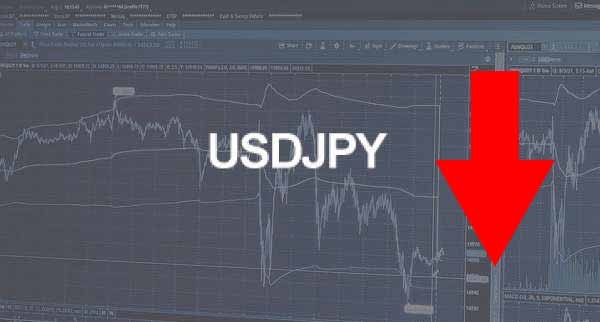 Usdjpy Sinks Lower
May 14 2025
By Adam Rosen
Usdjpy Sinks Lower
May 14 2025
By Adam Rosen
-
 Usdjpy Shows Weakness
May 14 2025
By Emily Clark
Usdjpy Shows Weakness
May 14 2025
By Emily Clark
-
 Usdjpy Sellers Eye Support
May 13 2025
By Adam Rosen
Usdjpy Sellers Eye Support
May 13 2025
By Adam Rosen
-
 Usdjpy Rises Above Resistance
May 13 2025
By Ashly Chole
Usdjpy Rises Above Resistance
May 13 2025
By Ashly Chole
-
 Usdjpy Recovers Post Fx Intervention
May 12 2025
By Ashly Chole
Usdjpy Recovers Post Fx Intervention
May 12 2025
By Ashly Chole
-
 Usdjpy Retreats Post Us Cpi
May 12 2025
By Ashly Chole
Usdjpy Retreats Post Us Cpi
May 12 2025
By Ashly Chole
-
 Usdjpy Recovers Higher
May 11 2025
By Adam Rosen
Usdjpy Recovers Higher
May 11 2025
By Adam Rosen
-
 Usdjpy Reclaims Resistance
May 11 2025
By Ashly Chole
Usdjpy Reclaims Resistance
May 11 2025
By Ashly Chole
-
 Usdjpy On Its Way Down Uob
May 10 2025
By Adam Rosen
Usdjpy On Its Way Down Uob
May 10 2025
By Adam Rosen
-
 Usdjpy Rallies Higher On Bond Buying
May 10 2025
By Ashly Chole
Usdjpy Rallies Higher On Bond Buying
May 10 2025
By Ashly Chole
-
 Usdjpy Moves Up
May 09 2025
By Andrew Blumer
Usdjpy Moves Up
May 09 2025
By Andrew Blumer
-
 Usdjpy Moves Lower
May 09 2025
By Adam Rosen
Usdjpy Moves Lower
May 09 2025
By Adam Rosen
-
 Usdjpy Flat Post Boj Surprise
May 08 2025
By Andrew Blumer
Usdjpy Flat Post Boj Surprise
May 08 2025
By Andrew Blumer
-
 Usdjpy Drops On Japan Intervention
May 08 2025
By Adam Rosen
Usdjpy Drops On Japan Intervention
May 08 2025
By Adam Rosen
-
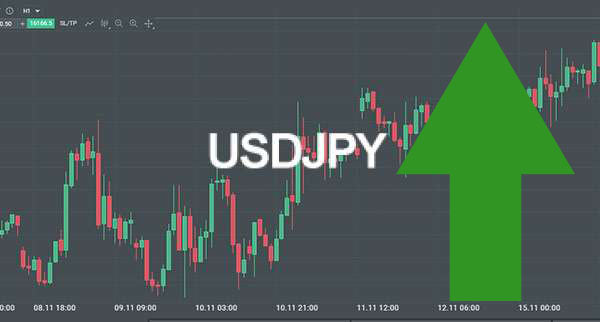 Usdjpy Crosses Support After Ppi
May 07 2025
By Emily Clark
Usdjpy Crosses Support After Ppi
May 07 2025
By Emily Clark
-
 Usdjpy Drops From Peak
May 07 2025
By Ashly Chole
Usdjpy Drops From Peak
May 07 2025
By Ashly Chole
-
 Usdjpy At Multi Month Tops
May 06 2025
By Emily Clark
Usdjpy At Multi Month Tops
May 06 2025
By Emily Clark
-
 Usdinr Under Pressure
May 06 2025
By Ashly Chole
Usdinr Under Pressure
May 06 2025
By Ashly Chole
-
 Usdinr Turns Higher
May 05 2025
By Adam Rosen
Usdinr Turns Higher
May 05 2025
By Adam Rosen
-
 Usdinr Remains Flat
May 05 2025
By Emily Clark
Usdinr Remains Flat
May 05 2025
By Emily Clark
-
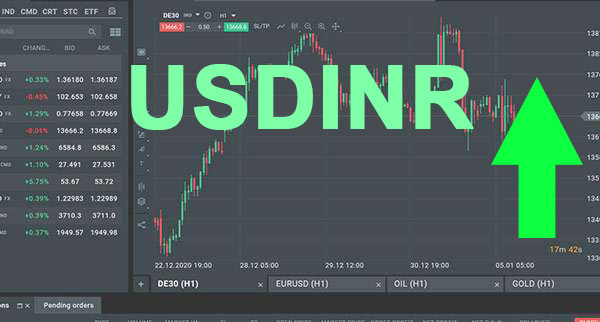 Usdinr Gains Ground
May 04 2025
By Andrew Blumer
Usdinr Gains Ground
May 04 2025
By Andrew Blumer
-
 Usdinr Moves Lower
May 04 2025
By Adam Rosen
Usdinr Moves Lower
May 04 2025
By Adam Rosen
-
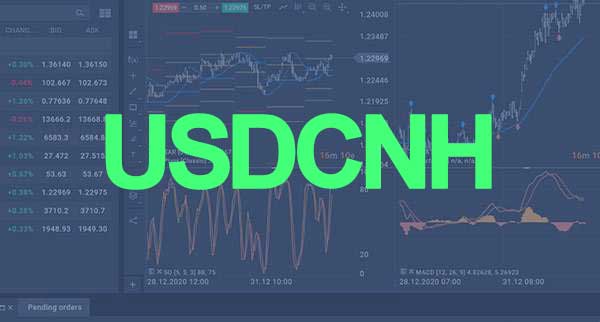 Usdcnh To Retest Next Level Uob
May 03 2025
By Emily Clark
Usdcnh To Retest Next Level Uob
May 03 2025
By Emily Clark
-
 Usdcnh To Trade Sideways
May 03 2025
By Ashly Chole
Usdcnh To Trade Sideways
May 03 2025
By Ashly Chole
-
 Usdchf Weak Before Fedspeak
May 02 2025
By Ashly Chole
Usdchf Weak Before Fedspeak
May 02 2025
By Ashly Chole
-
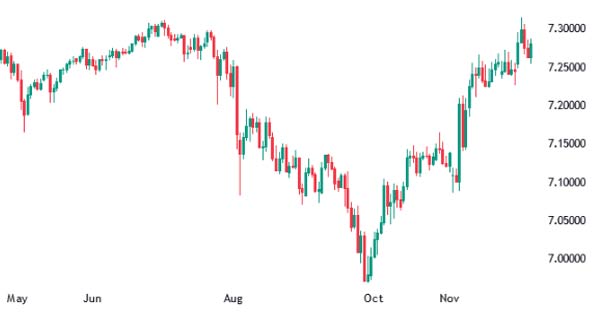 Usdcnh To Jump Higher Uob
May 02 2025
By Andrew Blumer
Usdcnh To Jump Higher Uob
May 02 2025
By Andrew Blumer
-
 Usdchf Turns Higher
May 01 2025
By Adam Rosen
Usdchf Turns Higher
May 01 2025
By Adam Rosen
-
 Usdchf Turns Green On Hot Us Cpi
May 01 2025
By Adam Rosen
Usdchf Turns Green On Hot Us Cpi
May 01 2025
By Adam Rosen
-
 Usdchf Trades Lower On Weaker Greenback
Apr 30 2025
By Andrew Blumer
Usdchf Trades Lower On Weaker Greenback
Apr 30 2025
By Andrew Blumer
-
 Usdchf Trades With A Bearish Tone
Apr 30 2025
By Ashly Chole
Usdchf Trades With A Bearish Tone
Apr 30 2025
By Ashly Chole
-
 Usdchf Trades Lower Ahead Of Pmi
Apr 29 2025
By Ashly Chole
Usdchf Trades Lower Ahead Of Pmi
Apr 29 2025
By Ashly Chole
-
 Usdchf Trades Low On Weak Usd
Apr 29 2025
By Adam Rosen
Usdchf Trades Low On Weak Usd
Apr 29 2025
By Adam Rosen
-
 Usdchf Retreats From Highs
Apr 28 2025
By Emily Clark
Usdchf Retreats From Highs
Apr 28 2025
By Emily Clark
-
 Usdchf Retraces Ahead Of Fomc
Apr 28 2025
By Ashly Chole
Usdchf Retraces Ahead Of Fomc
Apr 28 2025
By Ashly Chole
-
 Usdchf Lacks Direction
Apr 27 2025
By Ashly Chole
Usdchf Lacks Direction
Apr 27 2025
By Ashly Chole
-
 Usdchf Positive Before Us Cpi
Apr 27 2025
By Emily Clark
Usdchf Positive Before Us Cpi
Apr 27 2025
By Emily Clark
-
 Usdchf In A Bullish Trend
Apr 26 2025
By Emily Clark
Usdchf In A Bullish Trend
Apr 26 2025
By Emily Clark
-
 Usdchf Climbs On Strong Us Dollar
Apr 26 2025
By Andrew Blumer
Usdchf Climbs On Strong Us Dollar
Apr 26 2025
By Andrew Blumer
-
 Usdchf Capped Ahead Of Fed
Apr 25 2025
By Emily Clark
Usdchf Capped Ahead Of Fed
Apr 25 2025
By Emily Clark
-
 Usdchf Climbs Back On Hawkish Fed
Apr 25 2025
By Adam Rosen
Usdchf Climbs Back On Hawkish Fed
Apr 25 2025
By Adam Rosen
-
 Usdchf Bullish Rally Continues
Apr 24 2025
By Ashly Chole
Usdchf Bullish Rally Continues
Apr 24 2025
By Ashly Chole
-
 Us Recession Risks Not High
Apr 24 2025
By Ashly Chole
Us Recession Risks Not High
Apr 24 2025
By Ashly Chole
-
 Us Buys Oil Slowly Danske Bank
Apr 23 2025
By Adam Rosen
Us Buys Oil Slowly Danske Bank
Apr 23 2025
By Adam Rosen
-
 Uber And Nvidia Bargain Stocks
Apr 23 2025
By Andrew Blumer
Uber And Nvidia Bargain Stocks
Apr 23 2025
By Andrew Blumer
-
 Turkey To Raise Interest Rates
Apr 22 2025
By Andrew Blumer
Turkey To Raise Interest Rates
Apr 22 2025
By Andrew Blumer
-
 Two Uk Shares Worth Buying
Apr 22 2025
By Andrew Blumer
Two Uk Shares Worth Buying
Apr 22 2025
By Andrew Blumer
-
 Sp 500 Forecast For Year
Apr 21 2025
By Ashly Chole
Sp 500 Forecast For Year
Apr 21 2025
By Ashly Chole
-
 Tesla Worth Buying
Apr 21 2025
By Ashly Chole
Tesla Worth Buying
Apr 21 2025
By Ashly Chole
-
 Sarepta Therapeutic Is It A Buy
Apr 20 2025
By Andrew Blumer
Sarepta Therapeutic Is It A Buy
Apr 20 2025
By Andrew Blumer
-
 Rolls Royce Stock To Rise
Apr 20 2025
By Ashly Chole
Rolls Royce Stock To Rise
Apr 20 2025
By Ashly Chole
-
 Reasons To Buy Nvidia
Apr 19 2025
By Ashly Chole
Reasons To Buy Nvidia
Apr 19 2025
By Ashly Chole
-
 Rocket Lab Stock Is A Buy
Apr 19 2025
By Emily Clark
Rocket Lab Stock Is A Buy
Apr 19 2025
By Emily Clark
-
 Rally In Emerging Markets
Apr 18 2025
By Ashly Chole
Rally In Emerging Markets
Apr 18 2025
By Ashly Chole
-
 Quantum Computing Stocks To Buy
Apr 18 2025
By Adam Rosen
Quantum Computing Stocks To Buy
Apr 18 2025
By Adam Rosen
-
 Nvidia Or Palantir Stock
Apr 17 2025
By Emily Clark
Nvidia Or Palantir Stock
Apr 17 2025
By Emily Clark
-
 Penny Stock At Weekly Low
Apr 17 2025
By Andrew Blumer
Penny Stock At Weekly Low
Apr 17 2025
By Andrew Blumer
-
 No Tariffs On Crude Oil From Mexico
Apr 16 2025
By Emily Clark
No Tariffs On Crude Oil From Mexico
Apr 16 2025
By Emily Clark
-
 Next Direction For Sp 500
Apr 16 2025
By Emily Clark
Next Direction For Sp 500
Apr 16 2025
By Emily Clark
-
 Microsoft The Best Stock
Apr 15 2025
By Emily Clark
Microsoft The Best Stock
Apr 15 2025
By Emily Clark
-
 Natural Gas Downside Ahead
Apr 15 2025
By Ashly Chole
Natural Gas Downside Ahead
Apr 15 2025
By Ashly Chole
-
 Meta Good Ai Stock Or Not
Apr 14 2025
By Ashly Chole
Meta Good Ai Stock Or Not
Apr 14 2025
By Ashly Chole
-
 Jd Sports Is Undervalued
Apr 14 2025
By Ashly Chole
Jd Sports Is Undervalued
Apr 14 2025
By Ashly Chole
-
 Ing Natural Gas Storage Rises
Apr 13 2025
By Adam Rosen
Ing Natural Gas Storage Rises
Apr 13 2025
By Adam Rosen
-
 Is Xrp A Buy Or Not
Apr 13 2025
By Ashly Chole
Is Xrp A Buy Or Not
Apr 13 2025
By Ashly Chole
-
 Gsk Shares Are Undervalued
Apr 12 2025
By Ashly Chole
Gsk Shares Are Undervalued
Apr 12 2025
By Ashly Chole
-
 High Rates To Cool Growth
Apr 12 2025
By Adam Rosen
High Rates To Cool Growth
Apr 12 2025
By Adam Rosen
-
 Gold Or Bitcoin
Apr 11 2025
By Emily Clark
Gold Or Bitcoin
Apr 11 2025
By Emily Clark
-
 Goldman Gbpusd To Move Lower
Apr 11 2025
By Ashly Chole
Goldman Gbpusd To Move Lower
Apr 11 2025
By Ashly Chole
-
 Forecasts For Gold
Apr 10 2025
By Andrew Blumer
Forecasts For Gold
Apr 10 2025
By Andrew Blumer
-
 Gbpusd To Remain Bullish
Apr 10 2025
By Adam Rosen
Gbpusd To Remain Bullish
Apr 10 2025
By Adam Rosen
-
 Fed Will Slow Down
Apr 09 2025
By Andrew Blumer
Fed Will Slow Down
Apr 09 2025
By Andrew Blumer
-
 Eurusd To Consolidate Danske Bank
Apr 09 2025
By Ashly Chole
Eurusd To Consolidate Danske Bank
Apr 09 2025
By Ashly Chole
-
 Dedollarization To Pick Pace
Apr 08 2025
By Emily Clark
Dedollarization To Pick Pace
Apr 08 2025
By Emily Clark
-
 Dogecoin Forecast For Year
Apr 08 2025
By Adam Rosen
Dogecoin Forecast For Year
Apr 08 2025
By Adam Rosen
-
 Copper Prices Supported Ing
Apr 07 2025
By Emily Clark
Copper Prices Supported Ing
Apr 07 2025
By Emily Clark
-
 Costco Stock Forecast Next Years
Apr 07 2025
By Adam Rosen
Costco Stock Forecast Next Years
Apr 07 2025
By Adam Rosen
-
 Buying Nike Is A Mistake
Apr 06 2025
By Andrew Blumer
Buying Nike Is A Mistake
Apr 06 2025
By Andrew Blumer
-
 Buy These Stocks To Be Millionaire
Apr 06 2025
By Adam Rosen
Buy These Stocks To Be Millionaire
Apr 06 2025
By Adam Rosen
-
 Buy These Ai Infrastructure Stocks
Apr 05 2025
By Andrew Blumer
Buy These Ai Infrastructure Stocks
Apr 05 2025
By Andrew Blumer
-
 Broadcom And Tsm Stocks
Apr 05 2025
By Andrew Blumer
Broadcom And Tsm Stocks
Apr 05 2025
By Andrew Blumer
-
 Bitcoin Is Stabilizing
Apr 04 2025
By Andrew Blumer
Bitcoin Is Stabilizing
Apr 04 2025
By Andrew Blumer
-
 Bitcoin Forecast For Five Years
Apr 04 2025
By Ashly Chole
Bitcoin Forecast For Five Years
Apr 04 2025
By Ashly Chole
-
 Apple Stock Price Is High
Apr 03 2025
By Ashly Chole
Apple Stock Price Is High
Apr 03 2025
By Ashly Chole
-
 Amazon Forecast For Year
Apr 03 2025
By Adam Rosen
Amazon Forecast For Year
Apr 03 2025
By Adam Rosen
-
 Amazon Best Ai Stock
Apr 02 2025
By Emily Clark
Amazon Best Ai Stock
Apr 02 2025
By Emily Clark
-
 A Dirt Cheap Stock To Consider
Apr 02 2025
By Adam Rosen
A Dirt Cheap Stock To Consider
Apr 02 2025
By Adam Rosen
-
 Usdcad Will Strengthen Scotiabank
Apr 01 2025
By Emily Clark
Usdcad Will Strengthen Scotiabank
Apr 01 2025
By Emily Clark
-
 Usdcad Will Decline Scotiabank
Apr 01 2025
By Adam Rosen
Usdcad Will Decline Scotiabank
Apr 01 2025
By Adam Rosen
-
 Usdcad Turns Positive
Mar 31 2025
By Emily Clark
Usdcad Turns Positive
Mar 31 2025
By Emily Clark
-
 Usdcad Under Pressure
Mar 31 2025
By Andrew Blumer
Usdcad Under Pressure
Mar 31 2025
By Andrew Blumer
-
 Usdcad Trades With Bearish Bias
Mar 30 2025
By Andrew Blumer
Usdcad Trades With Bearish Bias
Mar 30 2025
By Andrew Blumer
-
 Usdcad Turns Lower Intraday
Mar 30 2025
By Ashly Chole
Usdcad Turns Lower Intraday
Mar 30 2025
By Ashly Chole
-
 Usdcad Trades Green
Mar 29 2025
By Adam Rosen
Usdcad Trades Green
Mar 29 2025
By Adam Rosen
-
 Usdcad Trades Under Resistance
Mar 29 2025
By Andrew Blumer
Usdcad Trades Under Resistance
Mar 29 2025
By Andrew Blumer
-
 Usdcad Trades At Highs
Mar 28 2025
By Ashly Chole
Usdcad Trades At Highs
Mar 28 2025
By Ashly Chole
-
 Usdcad Trades At Month Highs
Mar 28 2025
By Emily Clark
Usdcad Trades At Month Highs
Mar 28 2025
By Emily Clark
-
 Us Stocks To Buy For Quantum Tech
Mar 27 2025
By Ashly Chole
Us Stocks To Buy For Quantum Tech
Mar 27 2025
By Ashly Chole
-
 Usdcad Trades Above In Calm Market
Mar 27 2025
By Ashly Chole
Usdcad Trades Above In Calm Market
Mar 27 2025
By Ashly Chole
-
 Uk Ai Stock With Dividend Yield
Mar 26 2025
By Ashly Chole
Uk Ai Stock With Dividend Yield
Mar 26 2025
By Ashly Chole
-
 Ups Stock Buy Or Sell
Mar 26 2025
By Emily Clark
Ups Stock Buy Or Sell
Mar 26 2025
By Emily Clark
-
 Three Memecoins To Buy
Mar 25 2025
By Ashly Chole
Three Memecoins To Buy
Mar 25 2025
By Ashly Chole
-
 Two Uk Stocks At Fair Price
Mar 25 2025
By Ashly Chole
Two Uk Stocks At Fair Price
Mar 25 2025
By Ashly Chole
-
 Tesla Stock Down
Mar 24 2025
By Emily Clark
Tesla Stock Down
Mar 24 2025
By Emily Clark
-
 These Sector To Increase Dividends
Mar 24 2025
By Ashly Chole
These Sector To Increase Dividends
Mar 24 2025
By Ashly Chole
-
 Tech Retailer Stock To Jump
Mar 23 2025
By Ashly Chole
Tech Retailer Stock To Jump
Mar 23 2025
By Ashly Chole
-
 Taiwan Semiconductor Is Must Buy
Mar 23 2025
By Adam Rosen
Taiwan Semiconductor Is Must Buy
Mar 23 2025
By Adam Rosen
-
 Sovereign Fund To Include Crypto
Mar 22 2025
By Emily Clark
Sovereign Fund To Include Crypto
Mar 22 2025
By Emily Clark
-
 Sp 500 Index Is Headed For Crash
Mar 22 2025
By Adam Rosen
Sp 500 Index Is Headed For Crash
Mar 22 2025
By Adam Rosen
-
 Snowflake Ai Stock Bullish Trend
Mar 21 2025
By Adam Rosen
Snowflake Ai Stock Bullish Trend
Mar 21 2025
By Adam Rosen
-
 Oil Market To Remain Bearish
Mar 21 2025
By Adam Rosen
Oil Market To Remain Bearish
Mar 21 2025
By Adam Rosen
-
 Nvidia Stock Crashed
Mar 20 2025
By Ashly Chole
Nvidia Stock Crashed
Mar 20 2025
By Ashly Chole
-
 Nvidia Stock Crash
Mar 20 2025
By Emily Clark
Nvidia Stock Crash
Mar 20 2025
By Emily Clark
-
 Nvidia In Trouble Because Of Deepseek
Mar 19 2025
By Andrew Blumer
Nvidia In Trouble Because Of Deepseek
Mar 19 2025
By Andrew Blumer
-
 Nvda Market Cap Drops
Mar 19 2025
By Adam Rosen
Nvda Market Cap Drops
Mar 19 2025
By Adam Rosen
-
 Most Altcoins Will Crash
Mar 18 2025
By Ashly Chole
Most Altcoins Will Crash
Mar 18 2025
By Ashly Chole
-
 Most Shorted Us Stocks
Mar 18 2025
By Emily Clark
Most Shorted Us Stocks
Mar 18 2025
By Emily Clark
-
 Microsoft Shares Are A Buy
Mar 17 2025
By Ashly Chole
Microsoft Shares Are A Buy
Mar 17 2025
By Ashly Chole
-
 Metaplanet Buys Bitcoin
Mar 17 2025
By Adam Rosen
Metaplanet Buys Bitcoin
Mar 17 2025
By Adam Rosen
-
 Is Microsoft Still A Buy
Mar 16 2025
By Ashly Chole
Is Microsoft Still A Buy
Mar 16 2025
By Ashly Chole
-
 Metal Prices Face Risk Ing
Mar 16 2025
By Ashly Chole
Metal Prices Face Risk Ing
Mar 16 2025
By Ashly Chole
-
 Increase In Silver Spot Purchases
Mar 15 2025
By Ashly Chole
Increase In Silver Spot Purchases
Mar 15 2025
By Ashly Chole
-
 International Stocks Worth Buying
Mar 15 2025
By Adam Rosen
International Stocks Worth Buying
Mar 15 2025
By Adam Rosen
-
 Gold Moves Lower
Mar 14 2025
By Andrew Blumer
Gold Moves Lower
Mar 14 2025
By Andrew Blumer
-
 Helium One Is Worth Buying
Mar 14 2025
By Andrew Blumer
Helium One Is Worth Buying
Mar 14 2025
By Andrew Blumer
-
 Gold At Lows Due To Profit Taking
Mar 13 2025
By Adam Rosen
Gold At Lows Due To Profit Taking
Mar 13 2025
By Adam Rosen
-
 Gbpusd To Drop Hsbc
Mar 13 2025
By Andrew Blumer
Gbpusd To Drop Hsbc
Mar 13 2025
By Andrew Blumer
-
 Gbpusd To Decline Ing
Mar 12 2025
By Ashly Chole
Gbpusd To Decline Ing
Mar 12 2025
By Ashly Chole
-
 Forecast For Rolls Royce Stock
Mar 12 2025
By Emily Clark
Forecast For Rolls Royce Stock
Mar 12 2025
By Emily Clark
-
 Ecb Worried Over Inflation
Mar 11 2025
By Ashly Chole
Ecb Worried Over Inflation
Mar 11 2025
By Ashly Chole
-
 Fed To Respond To Inflation
Mar 11 2025
By Andrew Blumer
Fed To Respond To Inflation
Mar 11 2025
By Andrew Blumer
-
 Crypto Market Tumbles
Mar 10 2025
By Adam Rosen
Crypto Market Tumbles
Mar 10 2025
By Adam Rosen
-
 Devon Energy Stock Is A Buy
Mar 10 2025
By Ashly Chole
Devon Energy Stock Is A Buy
Mar 10 2025
By Ashly Chole
-
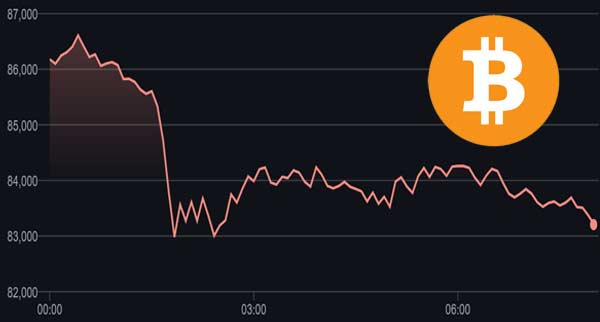 Btc Moves Lower
Mar 09 2025
By Andrew Blumer
Btc Moves Lower
Mar 09 2025
By Andrew Blumer
-
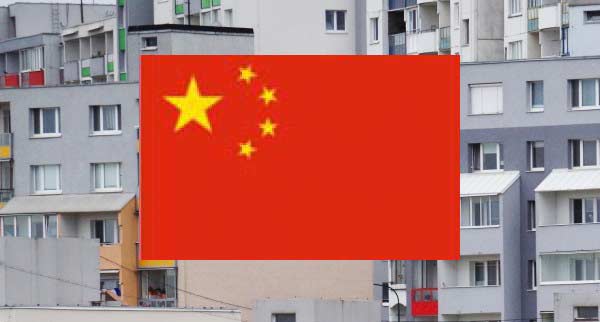 China Home Prices To Decline
Mar 09 2025
By Adam Rosen
China Home Prices To Decline
Mar 09 2025
By Adam Rosen
-
 Brazil Inflation To Drop
Mar 08 2025
By Adam Rosen
Brazil Inflation To Drop
Mar 08 2025
By Adam Rosen
-
 Boj To Achieve Inflation Target
Mar 08 2025
By Adam Rosen
Boj To Achieve Inflation Target
Mar 08 2025
By Adam Rosen
-
 Boa Gbpeur To Reach Higher
Mar 07 2025
By Andrew Blumer
Boa Gbpeur To Reach Higher
Mar 07 2025
By Andrew Blumer
-
 Best Altcoins To Buy
Mar 07 2025
By Andrew Blumer
Best Altcoins To Buy
Mar 07 2025
By Andrew Blumer
-
 Asian Tech Stocks To Sink
Mar 06 2025
By Emily Clark
Asian Tech Stocks To Sink
Mar 06 2025
By Emily Clark
-
 Audusd To Decline In Long Term
Mar 06 2025
By Adam Rosen
Audusd To Decline In Long Term
Mar 06 2025
By Adam Rosen
-
 Apple To Make Big Investment
Mar 05 2025
By Emily Clark
Apple To Make Big Investment
Mar 05 2025
By Emily Clark
-
 Alphabet Vs Nvidia
Mar 05 2025
By Ashly Chole
Alphabet Vs Nvidia
Mar 05 2025
By Ashly Chole
-
 Usdcad To Close The Week In Red
Mar 04 2025
By Andrew Blumer
Usdcad To Close The Week In Red
Mar 04 2025
By Andrew Blumer
-
 Usdcad Shows Extended Recovery
Mar 04 2025
By Emily Clark
Usdcad Shows Extended Recovery
Mar 04 2025
By Emily Clark
-
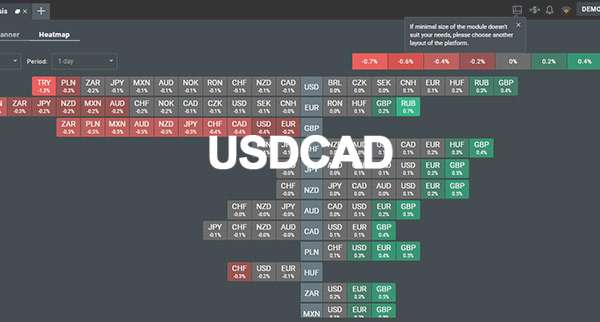 Usdcad Recovers On Weak Sentiment
Mar 03 2025
By Adam Rosen
Usdcad Recovers On Weak Sentiment
Mar 03 2025
By Adam Rosen
-
 Usdcad Returns Higher
Mar 03 2025
By Emily Clark
Usdcad Returns Higher
Mar 03 2025
By Emily Clark
-
 Usdcad Pushes Higher
Mar 02 2025
By Emily Clark
Usdcad Pushes Higher
Mar 02 2025
By Emily Clark
-
 Usdcad On Its Way To Support
Mar 02 2025
By Emily Clark
Usdcad On Its Way To Support
Mar 02 2025
By Emily Clark
-
 Usdcad Moves Higher
Mar 01 2025
By Ashly Chole
Usdcad Moves Higher
Mar 01 2025
By Ashly Chole
-
 Usdcad Momentum Favors Upside
Mar 01 2025
By Andrew Blumer
Usdcad Momentum Favors Upside
Mar 01 2025
By Andrew Blumer
-
 Usdcad Inches Higher
Feb 28 2025
By Ashly Chole
Usdcad Inches Higher
Feb 28 2025
By Ashly Chole
-
 Usdcad Gains On Soft Canadian Inflation
Feb 28 2025
By Ashly Chole
Usdcad Gains On Soft Canadian Inflation
Feb 28 2025
By Ashly Chole
-
 Usdcad Faces Persistent Selling
Feb 27 2025
By Ashly Chole
Usdcad Faces Persistent Selling
Feb 27 2025
By Ashly Chole
-
 Usdcad Drops On Rising Crude Oil
Feb 27 2025
By Ashly Chole
Usdcad Drops On Rising Crude Oil
Feb 27 2025
By Ashly Chole
-
 Usdcad Consolidates With No Direction
Feb 26 2025
By Andrew Blumer
Usdcad Consolidates With No Direction
Feb 26 2025
By Andrew Blumer
-
 Usdcad Bullish Momentum Fades
Feb 26 2025
By Emily Clark
Usdcad Bullish Momentum Fades
Feb 26 2025
By Emily Clark
-
 Usd To Remain Under Pressure Bbh
Feb 25 2025
By Adam Rosen
Usd To Remain Under Pressure Bbh
Feb 25 2025
By Adam Rosen
-
 Usd Turns Lower On Powell Comments
Feb 25 2025
By Andrew Blumer
Usd Turns Lower On Powell Comments
Feb 25 2025
By Andrew Blumer
-
 Usd To Remain Range Bound Ing
Feb 24 2025
By Andrew Blumer
Usd To Remain Range Bound Ing
Feb 24 2025
By Andrew Blumer
-
 Usd At One Year High
Feb 24 2025
By Ashly Chole
Usd At One Year High
Feb 24 2025
By Ashly Chole
-
 Us Wholesale Inventories Up
Feb 23 2025
By Andrew Blumer
Us Wholesale Inventories Up
Feb 23 2025
By Andrew Blumer
-
 Us Yields Must Press Higher Scotiabank
Feb 23 2025
By Emily Clark
Us Yields Must Press Higher Scotiabank
Feb 23 2025
By Emily Clark
-
 Us Unemployment Rate Jump Higher
Feb 22 2025
By Emily Clark
Us Unemployment Rate Jump Higher
Feb 22 2025
By Emily Clark
-
 Us Trade Deficit Jumps In February
Feb 22 2025
By Ashly Chole
Us Trade Deficit Jumps In February
Feb 22 2025
By Ashly Chole
-
 Us Stocks Turn Red
Feb 21 2025
By Andrew Blumer
Us Stocks Turn Red
Feb 21 2025
By Andrew Blumer
-
 Us Tariffs On Japanese Cars
Feb 21 2025
By Emily Clark
Us Tariffs On Japanese Cars
Feb 21 2025
By Emily Clark
-
 Us Stocks Tumble Ahead Of Nvidia
Feb 20 2025
By Andrew Blumer
Us Stocks Tumble Ahead Of Nvidia
Feb 20 2025
By Andrew Blumer
-
 Us Stocks Turn Higher
Feb 20 2025
By Emily Clark
Us Stocks Turn Higher
Feb 20 2025
By Emily Clark
-
 Us Stocks Gain On Improved Sentiment
Feb 19 2025
By Ashly Chole
Us Stocks Gain On Improved Sentiment
Feb 19 2025
By Ashly Chole
-
 Us Stocks Mix After Earnings Release
Feb 19 2025
By Andrew Blumer
Us Stocks Mix After Earnings Release
Feb 19 2025
By Andrew Blumer
-
 Us Stocks Gain After Cpi Release
Feb 18 2025
By Adam Rosen
Us Stocks Gain After Cpi Release
Feb 18 2025
By Adam Rosen
-
 Us Stock Markets Edge Higher
Feb 18 2025
By Andrew Blumer
Us Stock Markets Edge Higher
Feb 18 2025
By Andrew Blumer
-
 Us Stock Market Will Crash In 2025
Feb 17 2025
By Andrew Blumer
Us Stock Market Will Crash In 2025
Feb 17 2025
By Andrew Blumer
-
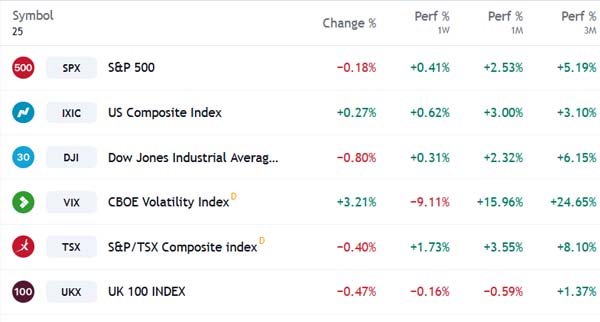 Us Stock Indexes Close Lower
Feb 17 2025
By Emily Clark
Us Stock Indexes Close Lower
Feb 17 2025
By Emily Clark
-
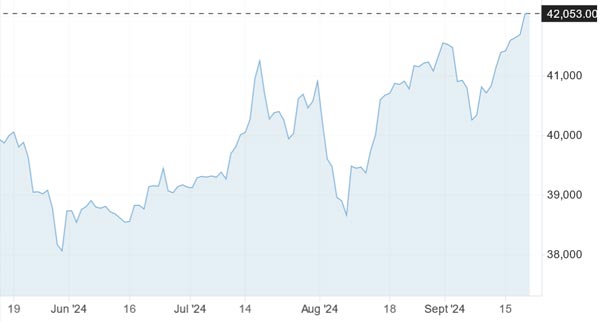 Us Stock Futures Move Lower
Feb 16 2025
By Ashly Chole
Us Stock Futures Move Lower
Feb 16 2025
By Ashly Chole
-
 Us Stock Futures Rise
Feb 16 2025
By Adam Rosen
Us Stock Futures Rise
Feb 16 2025
By Adam Rosen
-
 Us Services Sector Shows Growth
Feb 15 2025
By Andrew Blumer
Us Services Sector Shows Growth
Feb 15 2025
By Andrew Blumer
-
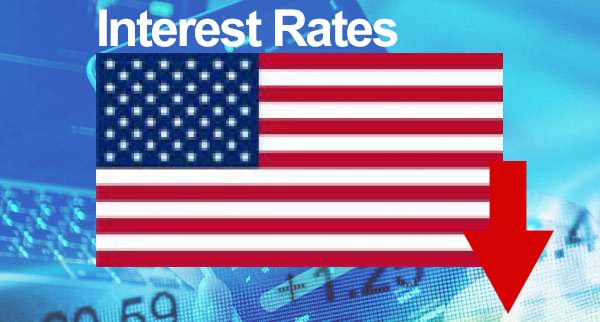 Us Should Cut Rates In Late 2024
Feb 15 2025
By Adam Rosen
Us Should Cut Rates In Late 2024
Feb 15 2025
By Adam Rosen
-
 Two Uk Shares To Outperform Rolls Royce
Feb 14 2025
By Adam Rosen
Two Uk Shares To Outperform Rolls Royce
Feb 14 2025
By Adam Rosen
-
 Two Best Warren Buffett Stocks
Feb 14 2025
By Adam Rosen
Two Best Warren Buffett Stocks
Feb 14 2025
By Adam Rosen
-
 Tsla Share Price Forecast
Feb 13 2025
By Adam Rosen
Tsla Share Price Forecast
Feb 13 2025
By Adam Rosen
-
 Tsm Shares Jumps On Ai Growth
Feb 13 2025
By Ashly Chole
Tsm Shares Jumps On Ai Growth
Feb 13 2025
By Ashly Chole
-
 Trump To Pass Pro Crypto Orders
Feb 12 2025
By Emily Clark
Trump To Pass Pro Crypto Orders
Feb 12 2025
By Emily Clark
-
 Tsla Is There More Upside Left
Feb 12 2025
By Adam Rosen
Tsla Is There More Upside Left
Feb 12 2025
By Adam Rosen
-
 Top Uk Dividend Shares
Feb 11 2025
By Andrew Blumer
Top Uk Dividend Shares
Feb 11 2025
By Andrew Blumer
-
 Top Uk Growth Stocks For 2025
Feb 11 2025
By Ashly Chole
Top Uk Growth Stocks For 2025
Feb 11 2025
By Ashly Chole
-
 Tesco Shares Have Reached A Peak
Feb 10 2025
By Emily Clark
Tesco Shares Have Reached A Peak
Feb 10 2025
By Emily Clark
-
 Tech Stocks That Will Outperform Amd
Feb 10 2025
By Ashly Chole
Tech Stocks That Will Outperform Amd
Feb 10 2025
By Ashly Chole
-
 Stocks With Unstoppable Momentum
Feb 09 2025
By Ashly Chole
Stocks With Unstoppable Momentum
Feb 09 2025
By Ashly Chole
-
 Stocks Give Massive Return In 2030
Feb 09 2025
By Ashly Chole
Stocks Give Massive Return In 2030
Feb 09 2025
By Ashly Chole
-
 Ripple Criticizes Sec
Feb 08 2025
By Adam Rosen
Ripple Criticizes Sec
Feb 08 2025
By Adam Rosen
-
 Scotiabank Gbp To Remain Soft
Feb 08 2025
By Adam Rosen
Scotiabank Gbp To Remain Soft
Feb 08 2025
By Adam Rosen
-
 Pepe May Drop In 2025
Feb 07 2025
By Andrew Blumer
Pepe May Drop In 2025
Feb 07 2025
By Andrew Blumer
-
 Popular Ai Agent Projects On Solana
Feb 07 2025
By Emily Clark
Popular Ai Agent Projects On Solana
Feb 07 2025
By Emily Clark
-
 Nvidia Is It Too Late To Buy
Feb 06 2025
By Adam Rosen
Nvidia Is It Too Late To Buy
Feb 06 2025
By Adam Rosen
-
 Nvidia Stock Price Jumps Higher
Feb 06 2025
By Andrew Blumer
Nvidia Stock Price Jumps Higher
Feb 06 2025
By Andrew Blumer
-
 National Grid Is A Buy
Feb 05 2025
By Ashly Chole
National Grid Is A Buy
Feb 05 2025
By Ashly Chole
-
 Natural Gas Prices Forecast
Feb 05 2025
By Andrew Blumer
Natural Gas Prices Forecast
Feb 05 2025
By Andrew Blumer
-
 Meta Platforms To Go With Stock Split
Feb 04 2025
By Adam Rosen
Meta Platforms To Go With Stock Split
Feb 04 2025
By Adam Rosen
-
 Japan To Miss Fy2025 Budget Surplus
Feb 04 2025
By Andrew Blumer
Japan To Miss Fy2025 Budget Surplus
Feb 04 2025
By Andrew Blumer
-
 Is Gold Ready For Bull Run In 2025
Feb 03 2025
By Emily Clark
Is Gold Ready For Bull Run In 2025
Feb 03 2025
By Emily Clark
-
 Is Spirax Worth Buying
Feb 03 2025
By Ashly Chole
Is Spirax Worth Buying
Feb 03 2025
By Ashly Chole
-
 Ing Natural Gas Prices Will Weaken
Feb 02 2025
By Andrew Blumer
Ing Natural Gas Prices Will Weaken
Feb 02 2025
By Andrew Blumer
-
 Is Eurusd Headed To Parity
Feb 02 2025
By Adam Rosen
Is Eurusd Headed To Parity
Feb 02 2025
By Adam Rosen
-
 Imf Surprised By China Growth
Feb 01 2025
By Emily Clark
Imf Surprised By China Growth
Feb 01 2025
By Emily Clark
-
 Inflation Remains A Headache Ing
Feb 01 2025
By Andrew Blumer
Inflation Remains A Headache Ing
Feb 01 2025
By Andrew Blumer
-
 Gbpusd Will Decline Mufg
Jan 31 2025
By Andrew Blumer
Gbpusd Will Decline Mufg
Jan 31 2025
By Andrew Blumer
-
 Gbpusd Will Move Lower
Jan 31 2025
By Ashly Chole
Gbpusd Will Move Lower
Jan 31 2025
By Ashly Chole
-
 Gbpeur Forecast For 2025
Jan 30 2025
By Emily Clark
Gbpeur Forecast For 2025
Jan 30 2025
By Emily Clark
-
 Gaw Delivers Impressive Gains
Jan 30 2025
By Ashly Chole
Gaw Delivers Impressive Gains
Jan 30 2025
By Ashly Chole
-
 Euro To Remain Strong Scotiabank
Jan 29 2025
By Ashly Chole
Euro To Remain Strong Scotiabank
Jan 29 2025
By Ashly Chole
-
 Eurusd In Tight Range Scotiabank
Jan 29 2025
By Emily Clark
Eurusd In Tight Range Scotiabank
Jan 29 2025
By Emily Clark
-
 Eth Is Buy Below 3k
Jan 28 2025
By Adam Rosen
Eth Is Buy Below 3k
Jan 28 2025
By Adam Rosen
-
 Csx Snowflake Uber Top Us Stocks
Jan 28 2025
By Adam Rosen
Csx Snowflake Uber Top Us Stocks
Jan 28 2025
By Adam Rosen
-
 Btc On Path Towards 250k
Jan 27 2025
By Adam Rosen
Btc On Path Towards 250k
Jan 27 2025
By Adam Rosen
-
 Btc Forecast For Year 2025
Jan 27 2025
By Emily Clark
Btc Forecast For Year 2025
Jan 27 2025
By Emily Clark
-
 Brtw And Cch Best Shares Ftse 100
Jan 26 2025
By Ashly Chole
Brtw And Cch Best Shares Ftse 100
Jan 26 2025
By Ashly Chole
-
 Best Value Share In Sp 500
Jan 26 2025
By Adam Rosen
Best Value Share In Sp 500
Jan 26 2025
By Adam Rosen
-
 Ai Stocks To Hold For Long Term
Jan 25 2025
By Andrew Blumer
Ai Stocks To Hold For Long Term
Jan 25 2025
By Andrew Blumer
-
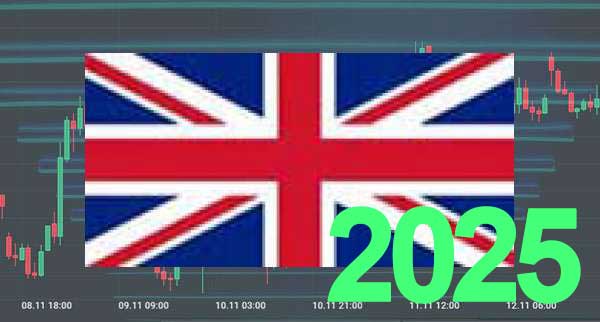 Best Uk Stocks For 2025
Jan 25 2025
By Andrew Blumer
Best Uk Stocks For 2025
Jan 25 2025
By Andrew Blumer
-
 2 Penny Stocks To Hold In 2025
Jan 24 2025
By Andrew Blumer
2 Penny Stocks To Hold In 2025
Jan 24 2025
By Andrew Blumer
-
 2 Tech Stock Picks By Bofa
Jan 24 2025
By Andrew Blumer
2 Tech Stock Picks By Bofa
Jan 24 2025
By Andrew Blumer
-
 Us Retail Sales Unchanged In April
Jan 23 2025
By Ashly Chole
Us Retail Sales Unchanged In April
Jan 23 2025
By Ashly Chole
-
 Us Retail Sales Unchanged
Jan 23 2025
By Ashly Chole
Us Retail Sales Unchanged
Jan 23 2025
By Ashly Chole
-
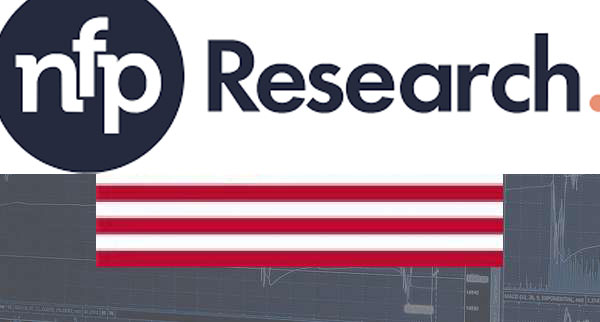 Us Nfp Report Declines In June
Jan 22 2025
By Emily Clark
Us Nfp Report Declines In June
Jan 22 2025
By Emily Clark
-
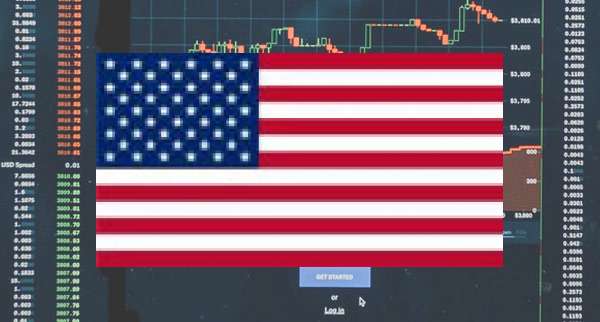 Us Retail Sales Down
Jan 22 2025
By Ashly Chole
Us Retail Sales Down
Jan 22 2025
By Ashly Chole
-
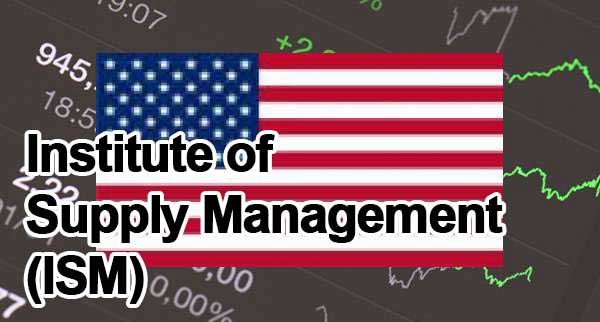 Us Ism Services Pmi Jumps
Jan 21 2025
By Andrew Blumer
Us Ism Services Pmi Jumps
Jan 21 2025
By Andrew Blumer
-
 Us New Home Sales Up In January
Jan 21 2025
By Emily Clark
Us New Home Sales Up In January
Jan 21 2025
By Emily Clark
-
 Us Inflation Expectations Remains Stable
Jan 20 2025
By Ashly Chole
Us Inflation Expectations Remains Stable
Jan 20 2025
By Ashly Chole
-
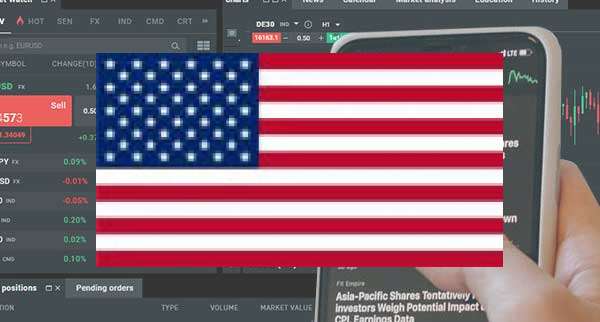 Us Inflation Down During January
Jan 20 2025
By Emily Clark
Us Inflation Down During January
Jan 20 2025
By Emily Clark
-
 Us House Prices Down In June
Jan 19 2025
By Adam Rosen
Us House Prices Down In June
Jan 19 2025
By Adam Rosen
-
 Us Gov Fills Up Oil Reserves
Jan 19 2025
By Andrew Blumer
Us Gov Fills Up Oil Reserves
Jan 19 2025
By Andrew Blumer
-
 Us Economy No Signs Of Stagflation
Jan 18 2025
By Adam Rosen
Us Economy No Signs Of Stagflation
Jan 18 2025
By Adam Rosen
-
 Us Fed To Project Less Rate Cuts
Jan 18 2025
By Emily Clark
Us Fed To Project Less Rate Cuts
Jan 18 2025
By Emily Clark
-
 Us Dollar Trims Gains
Jan 17 2025
By Andrew Blumer
Us Dollar Trims Gains
Jan 17 2025
By Andrew Blumer
-
 Us Dollar Under Pressure Nbc
Jan 17 2025
By Adam Rosen
Us Dollar Under Pressure Nbc
Jan 17 2025
By Adam Rosen
-
 Us Dollar Starts On A Strong Note
Jan 16 2025
By Adam Rosen
Us Dollar Starts On A Strong Note
Jan 16 2025
By Adam Rosen
-
 Us Dollar On Strong Footing
Jan 16 2025
By Emily Clark
Us Dollar On Strong Footing
Jan 16 2025
By Emily Clark
-
 Us Dollar At Yearly Lows
Jan 15 2025
By Andrew Blumer
Us Dollar At Yearly Lows
Jan 15 2025
By Andrew Blumer
-
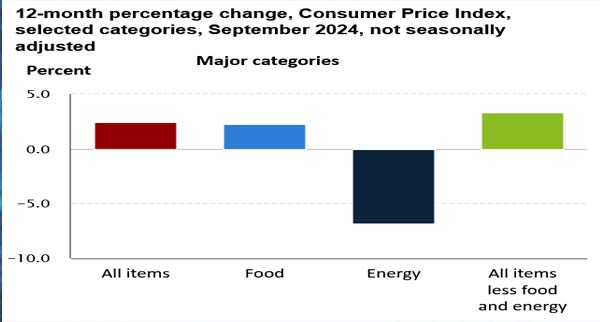 Us Cpi Jumps In September
Jan 15 2025
By Ashly Chole
Us Cpi Jumps In September
Jan 15 2025
By Ashly Chole
-
 Us Cpi Jumps In October
Jan 14 2025
By Ashly Chole
Us Cpi Jumps In October
Jan 14 2025
By Ashly Chole
-
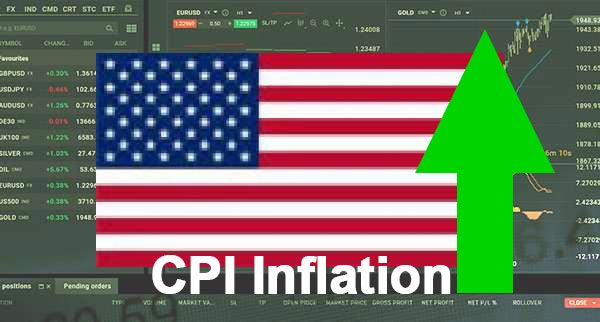 Us Cpi Inflation Declined In May
Jan 14 2025
By Andrew Blumer
Us Cpi Inflation Declined In May
Jan 14 2025
By Andrew Blumer
-
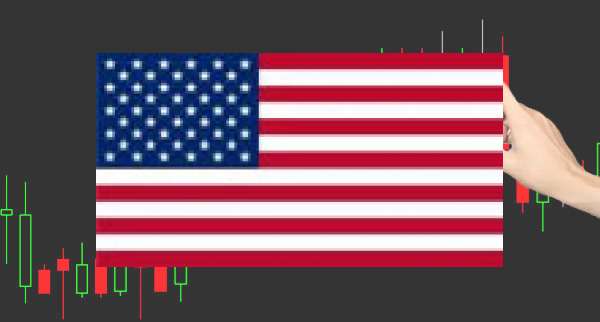 Us Consumer Sentiment Steady
Jan 13 2025
By Emily Clark
Us Consumer Sentiment Steady
Jan 13 2025
By Emily Clark
-
 Us Consumer Confidence Turns Higher
Jan 13 2025
By Emily Clark
Us Consumer Confidence Turns Higher
Jan 13 2025
By Emily Clark
-
 Unilever Stock Gains
Jan 12 2025
By Ashly Chole
Unilever Stock Gains
Jan 12 2025
By Ashly Chole
-
 Us Bond Yields Firm
Jan 12 2025
By Andrew Blumer
Us Bond Yields Firm
Jan 12 2025
By Andrew Blumer
-
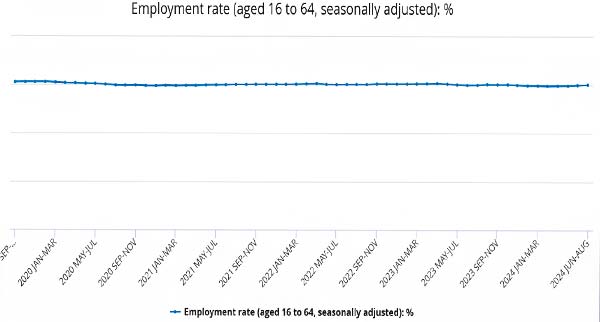 Uk Unemployment Rates Declines
Jan 10 2025
By Andrew Blumer
Uk Unemployment Rates Declines
Jan 10 2025
By Andrew Blumer
-
 Unemployment Still At Historic Lows Powell
Jan 10 2025
By Andrew Blumer
Unemployment Still At Historic Lows Powell
Jan 10 2025
By Andrew Blumer
-
 Uk Retail Sales Show Stagnation In March
Jan 09 2025
By Adam Rosen
Uk Retail Sales Show Stagnation In March
Jan 09 2025
By Adam Rosen
-
 Uk Stocks Decline Before Inflation
Jan 09 2025
By Emily Clark
Uk Stocks Decline Before Inflation
Jan 09 2025
By Emily Clark
-
 Uk Retail Sales Decline
Jan 08 2025
By Ashly Chole
Uk Retail Sales Decline
Jan 08 2025
By Ashly Chole
-
 Uk Inflation Steady In August
Jan 08 2025
By Emily Clark
Uk Inflation Steady In August
Jan 08 2025
By Emily Clark
-
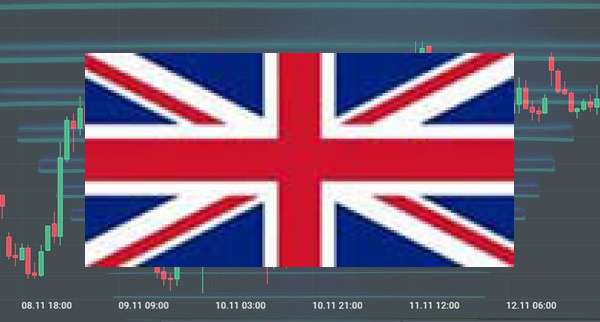 Uk Inflation Falls In February Yougov
Jan 07 2025
By Emily Clark
Uk Inflation Falls In February Yougov
Jan 07 2025
By Emily Clark
-
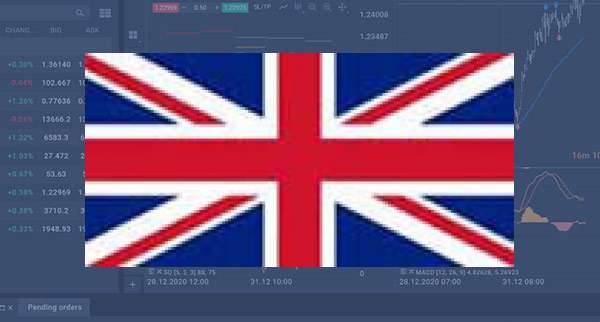 Uk Inflation For January Unchanged
Jan 07 2025
By Adam Rosen
Uk Inflation For January Unchanged
Jan 07 2025
By Adam Rosen
-
 Uk House Prices Decline In March
Jan 06 2025
By Emily Clark
Uk House Prices Decline In March
Jan 06 2025
By Emily Clark
-
 Uk Economy To Register Modest Growth
Jan 06 2025
By Emily Clark
Uk Economy To Register Modest Growth
Jan 06 2025
By Emily Clark
-
 Uk Cpi Inflation Unchanged In June
Jan 05 2025
By Adam Rosen
Uk Cpi Inflation Unchanged In June
Jan 05 2025
By Adam Rosen
-
 Uk Cpi For August Expected To Decline
Jan 05 2025
By Ashly Chole
Uk Cpi For August Expected To Decline
Jan 05 2025
By Ashly Chole
-
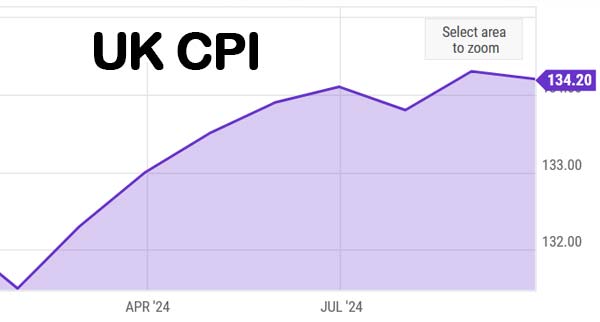 Uk Cpi Drops In September
Jan 04 2025
By Adam Rosen
Uk Cpi Drops In September
Jan 04 2025
By Adam Rosen
-
 Uk Construction Sector Prints Growth
Jan 04 2025
By Emily Clark
Uk Construction Sector Prints Growth
Jan 04 2025
By Emily Clark
-
 Ubs Sets Target For Copper
Jan 03 2025
By Ashly Chole
Ubs Sets Target For Copper
Jan 03 2025
By Ashly Chole
-
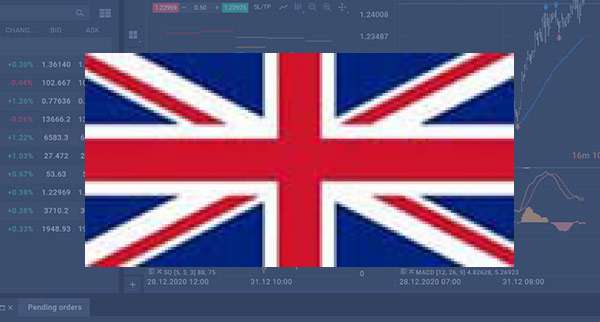 Uk Close To Exiting Recession
Jan 03 2025
By Andrew Blumer
Uk Close To Exiting Recession
Jan 03 2025
By Andrew Blumer
-
 Two Stocks That Could Split
Jan 02 2025
By Emily Clark
Two Stocks That Could Split
Jan 02 2025
By Emily Clark
-
 Ubs Sets New Target For Sp 500
Jan 02 2025
By Emily Clark
Ubs Sets New Target For Sp 500
Jan 02 2025
By Emily Clark
-
 Turkey To Keep Interest Rate Steady
Jan 01 2025
By Ashly Chole
Turkey To Keep Interest Rate Steady
Jan 01 2025
By Ashly Chole
-
 Two Best Ai Stocks
Jan 01 2025
By Andrew Blumer
Two Best Ai Stocks
Jan 01 2025
By Andrew Blumer
-
 Three Best Stocks For Growth
Dec 31 2024
By Andrew Blumer
Three Best Stocks For Growth
Dec 31 2024
By Andrew Blumer
-
 Top Sectors With Bullish Forecast
Dec 31 2024
By Ashly Chole
Top Sectors With Bullish Forecast
Dec 31 2024
By Ashly Chole
-
 Tesla Stock Declines On Wells Fargo Rating
Dec 30 2024
By Adam Rosen
Tesla Stock Declines On Wells Fargo Rating
Dec 30 2024
By Adam Rosen
-
 Tesla Stock At Risk Of Going Bust
Dec 30 2024
By Adam Rosen
Tesla Stock At Risk Of Going Bust
Dec 30 2024
By Adam Rosen
-
 Tesla Gains Upside On Bofa Rating
Dec 29 2024
By Adam Rosen
Tesla Gains Upside On Bofa Rating
Dec 29 2024
By Adam Rosen
-
 Tesla Gains Tentative Approval For Fsd
Dec 29 2024
By Emily Clark
Tesla Gains Tentative Approval For Fsd
Dec 29 2024
By Emily Clark
-
 Strong Nfp Tempers June Rate Cut Hopes
Dec 28 2024
By Ashly Chole
Strong Nfp Tempers June Rate Cut Hopes
Dec 28 2024
By Ashly Chole
-
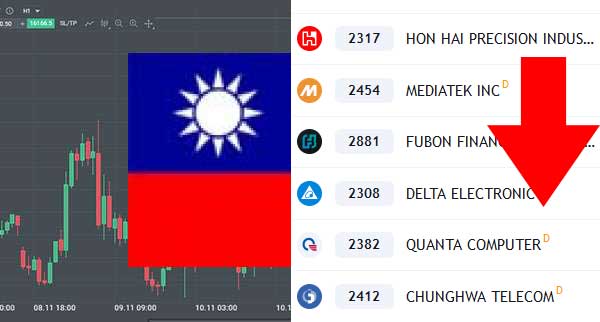 Taiwan Stocks Down
Dec 28 2024
By Andrew Blumer
Taiwan Stocks Down
Dec 28 2024
By Andrew Blumer
-
 Sp 500 Will Have A Normal Year
Dec 27 2024
By Adam Rosen
Sp 500 Will Have A Normal Year
Dec 27 2024
By Adam Rosen
-
 Stoxx 600 Marginally Lower
Dec 27 2024
By Andrew Blumer
Stoxx 600 Marginally Lower
Dec 27 2024
By Andrew Blumer
-
 Sp 500 Ready To Bounce
Dec 26 2024
By Ashly Chole
Sp 500 Ready To Bounce
Dec 26 2024
By Ashly Chole
-
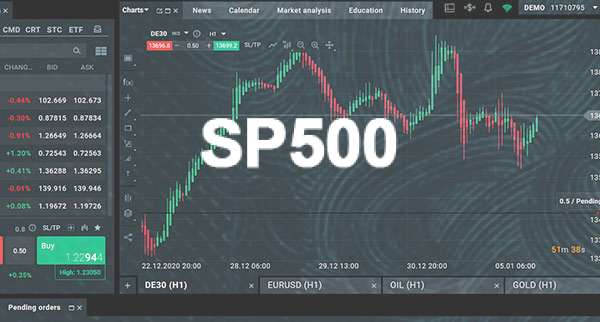 Sp 500 To Touch Support
Dec 26 2024
By Ashly Chole
Sp 500 To Touch Support
Dec 26 2024
By Ashly Chole
-
 Sp 500 Correction Is Very Close
Dec 25 2024
By Ashly Chole
Sp 500 Correction Is Very Close
Dec 25 2024
By Ashly Chole
-
 Sp 500 Ends Week Lower
Dec 25 2024
By Adam Rosen
Sp 500 Ends Week Lower
Dec 25 2024
By Adam Rosen
-
 Price Forecasts For Btc Eth And Xrp
Dec 24 2024
By Andrew Blumer
Price Forecasts For Btc Eth And Xrp
Dec 24 2024
By Andrew Blumer
-
 Sp 500 Bull Run Will End
Dec 24 2024
By Ashly Chole
Sp 500 Bull Run Will End
Dec 24 2024
By Ashly Chole
-
 Penny Stocks With Huge Upside
Dec 23 2024
By Adam Rosen
Penny Stocks With Huge Upside
Dec 23 2024
By Adam Rosen
-
 Opec Delays Increased Oil Production
Dec 23 2024
By Emily Clark
Opec Delays Increased Oil Production
Dec 23 2024
By Emily Clark
-
 Nzdusd To Move Lower
Dec 22 2024
By Emily Clark
Nzdusd To Move Lower
Dec 22 2024
By Emily Clark
-
 Magnificent Seven Stocks Are Still Good
Dec 22 2024
By Andrew Blumer
Magnificent Seven Stocks Are Still Good
Dec 22 2024
By Andrew Blumer
-
 Jpmorgan Forecasts Eurusd Parity
Dec 21 2024
By Emily Clark
Jpmorgan Forecasts Eurusd Parity
Dec 21 2024
By Emily Clark
-
 Good Idea To Buy Xrp
Dec 21 2024
By Adam Rosen
Good Idea To Buy Xrp
Dec 21 2024
By Adam Rosen
-
 Gold Closes Higher On Us Data
Dec 20 2024
By Ashly Chole
Gold Closes Higher On Us Data
Dec 20 2024
By Ashly Chole
-
 Gold A Better Option Than Stocks
Dec 20 2024
By Emily Clark
Gold A Better Option Than Stocks
Dec 20 2024
By Emily Clark
-
 Gbpusd Hovers At Lows
Dec 19 2024
By Adam Rosen
Gbpusd Hovers At Lows
Dec 19 2024
By Adam Rosen
-
 Gbpusd Forecast Barclays
Dec 19 2024
By Ashly Chole
Gbpusd Forecast Barclays
Dec 19 2024
By Ashly Chole
-
 Gbp To Move Lower Hsbc
Dec 18 2024
By Adam Rosen
Gbp To Move Lower Hsbc
Dec 18 2024
By Adam Rosen
-
 Four Factors That Will Impact Stocks
Dec 18 2024
By Andrew Blumer
Four Factors That Will Impact Stocks
Dec 18 2024
By Andrew Blumer
-
 Fed May End Rate Cutting Cycle
Dec 17 2024
By Ashly Chole
Fed May End Rate Cutting Cycle
Dec 17 2024
By Ashly Chole
-
 Fed May Not Cut Rates
Dec 17 2024
By Andrew Blumer
Fed May Not Cut Rates
Dec 17 2024
By Andrew Blumer
-
 Eurusd To Move Higher
Dec 16 2024
By Ashly Chole
Eurusd To Move Higher
Dec 16 2024
By Ashly Chole
-
 Eurusd To Move High Commerzbank
Dec 16 2024
By Adam Rosen
Eurusd To Move High Commerzbank
Dec 16 2024
By Adam Rosen
-
 Eurgbp To Decline Rabobank
Dec 15 2024
By Adam Rosen
Eurgbp To Decline Rabobank
Dec 15 2024
By Adam Rosen
-
 Eurusd Moves Lower On Pmi
Dec 15 2024
By Emily Clark
Eurusd Moves Lower On Pmi
Dec 15 2024
By Emily Clark
-
 Eu Bank Stocks To Move Lower
Dec 14 2024
By Ashly Chole
Eu Bank Stocks To Move Lower
Dec 14 2024
By Ashly Chole
-
 Eurgbp Strong After Uk Retail Sale
Dec 14 2024
By Ashly Chole
Eurgbp Strong After Uk Retail Sale
Dec 14 2024
By Ashly Chole
-
 Energy Dividend Stocks To Buy
Dec 13 2024
By Ashly Chole
Energy Dividend Stocks To Buy
Dec 13 2024
By Ashly Chole
-
 Dow Jones Gains On Friday
Dec 13 2024
By Ashly Chole
Dow Jones Gains On Friday
Dec 13 2024
By Ashly Chole
-
 Canada Retail Sales Jumps
Dec 12 2024
By Emily Clark
Canada Retail Sales Jumps
Dec 12 2024
By Emily Clark
-
 Dogen And Xrp Best Altcoins
Dec 12 2024
By Adam Rosen
Dogen And Xrp Best Altcoins
Dec 12 2024
By Adam Rosen
-
 Cad Weakens On Mixed Data
Dec 11 2024
By Ashly Chole
Cad Weakens On Mixed Data
Dec 11 2024
By Ashly Chole
-
 Cad To Strengthen On Rate Cuts
Dec 11 2024
By Emily Clark
Cad To Strengthen On Rate Cuts
Dec 11 2024
By Emily Clark
-
 Btc To Reach 200k Soon
Dec 10 2024
By Adam Rosen
Btc To Reach 200k Soon
Dec 10 2024
By Adam Rosen
-
 Best Stocks To Buy In 2025
Dec 10 2024
By Andrew Blumer
Best Stocks To Buy In 2025
Dec 10 2024
By Andrew Blumer
-
 Best Crypto Stocks To Hold
Dec 09 2024
By Adam Rosen
Best Crypto Stocks To Hold
Dec 09 2024
By Adam Rosen
-
 Best Low Cap Cryptos To Own
Dec 09 2024
By Ashly Chole
Best Low Cap Cryptos To Own
Dec 09 2024
By Ashly Chole
-
 Audusd Jumps Higher
Dec 08 2024
By Ashly Chole
Audusd Jumps Higher
Dec 08 2024
By Ashly Chole
-
 Amd Is The Next Bullish Chip Stock
Dec 08 2024
By Emily Clark
Amd Is The Next Bullish Chip Stock
Dec 08 2024
By Emily Clark
-
 South African Rand Stays Firm
Dec 07 2024
By Emily Clark
South African Rand Stays Firm
Dec 07 2024
By Emily Clark
-
 Solana Eyes A Revisit To Support
Dec 07 2024
By Andrew Blumer
Solana Eyes A Revisit To Support
Dec 07 2024
By Andrew Blumer
-
 Silver Weak Near Resistance
Dec 06 2024
By Ashly Chole
Silver Weak Near Resistance
Dec 06 2024
By Ashly Chole
-
 Slow Inflation In Canada
Dec 06 2024
By Adam Rosen
Slow Inflation In Canada
Dec 06 2024
By Adam Rosen
-
 Silver Turn Green After Fed Decision
Dec 05 2024
By Emily Clark
Silver Turn Green After Fed Decision
Dec 05 2024
By Emily Clark
-
 Silver Under Pressure Below 100 Sma
Dec 05 2024
By Emily Clark
Silver Under Pressure Below 100 Sma
Dec 05 2024
By Emily Clark
-
 Silver Trades Higher As Yields Decline
Dec 04 2024
By Emily Clark
Silver Trades Higher As Yields Decline
Dec 04 2024
By Emily Clark
-
 Silver Tumbles On Greenback Strength
Dec 04 2024
By Emily Clark
Silver Tumbles On Greenback Strength
Dec 04 2024
By Emily Clark
-
 Silver Trades At 3 Year High
Dec 03 2024
By Emily Clark
Silver Trades At 3 Year High
Dec 03 2024
By Emily Clark
-
 Silver Trades Below Resistance
Dec 03 2024
By Ashly Chole
Silver Trades Below Resistance
Dec 03 2024
By Ashly Chole
-
 Samsung Shares At Year Lows
Dec 02 2024
By Ashly Chole
Samsung Shares At Year Lows
Dec 02 2024
By Ashly Chole
-
 Pepe Gains On Listing News
Dec 02 2024
By Ashly Chole
Pepe Gains On Listing News
Dec 02 2024
By Ashly Chole
-
 Nzdusd Trades In Bearish Tone
Dec 01 2024
By Adam Rosen
Nzdusd Trades In Bearish Tone
Dec 01 2024
By Adam Rosen
-
 Nzdusd Trades On Improved Risk
Dec 01 2024
By Ashly Chole
Nzdusd Trades On Improved Risk
Dec 01 2024
By Ashly Chole
-
 Nzdusd Declines To Month Low
Nov 30 2024
By Ashly Chole
Nzdusd Declines To Month Low
Nov 30 2024
By Ashly Chole
-
 Mxn Starts Recovery From Lows
Nov 30 2024
By Adam Rosen
Mxn Starts Recovery From Lows
Nov 30 2024
By Adam Rosen
-
 Mexican Peso Gains On Cpi
Nov 29 2024
By Emily Clark
Mexican Peso Gains On Cpi
Nov 29 2024
By Emily Clark
-
 Japan Mulls About Stimulus Package
Nov 29 2024
By Adam Rosen
Japan Mulls About Stimulus Package
Nov 29 2024
By Adam Rosen
-
 Gbpusd Trades With Modest Gains
Nov 28 2024
By Adam Rosen
Gbpusd Trades With Modest Gains
Nov 28 2024
By Adam Rosen
-
 Gold Rises Ahead Of Inflation
Nov 28 2024
By Adam Rosen
Gold Rises Ahead Of Inflation
Nov 28 2024
By Adam Rosen
-
 Gbpusd Downtrend Intensifies
Nov 27 2024
By Emily Clark
Gbpusd Downtrend Intensifies
Nov 27 2024
By Emily Clark
-
 Gbpusd Declines Under Sma
Nov 27 2024
By Andrew Blumer
Gbpusd Declines Under Sma
Nov 27 2024
By Andrew Blumer
-
 Gbp Gains On Boe Rate Cut
Nov 26 2024
By Adam Rosen
Gbp Gains On Boe Rate Cut
Nov 26 2024
By Adam Rosen
-
 Eurusd Trades With Bearish Bias
Nov 26 2024
By Andrew Blumer
Eurusd Trades With Bearish Bias
Nov 26 2024
By Andrew Blumer
-
 Eurjpy Trades In Range
Nov 25 2024
By Andrew Blumer
Eurjpy Trades In Range
Nov 25 2024
By Andrew Blumer
-
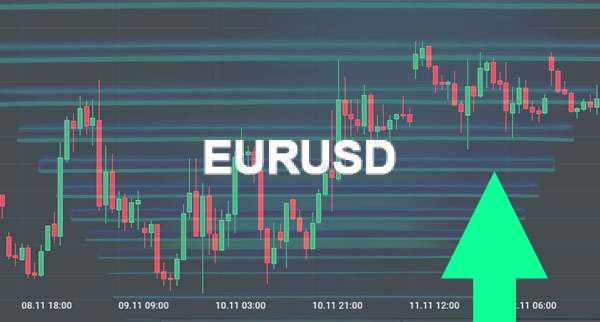 Eurusd Trades Under Resistance
Nov 25 2024
By Andrew Blumer
Eurusd Trades Under Resistance
Nov 25 2024
By Andrew Blumer
-
 Eurjpy Eyes Next Target
Nov 24 2024
By Ashly Chole
Eurjpy Eyes Next Target
Nov 24 2024
By Ashly Chole
-
 Eurgbp To Remain Bearish
Nov 24 2024
By Adam Rosen
Eurgbp To Remain Bearish
Nov 24 2024
By Adam Rosen
-
 Eurgbp Jumps After Uk Labor Data
Nov 23 2024
By Adam Rosen
Eurgbp Jumps After Uk Labor Data
Nov 23 2024
By Adam Rosen
-
 Eurgbp Moves To Yearly Lows
Nov 23 2024
By Adam Rosen
Eurgbp Moves To Yearly Lows
Nov 23 2024
By Adam Rosen
-
 Eurcad At Crossroads
Nov 22 2024
By Emily Clark
Eurcad At Crossroads
Nov 22 2024
By Emily Clark
-
 Eurcad In Oversold Territory
Nov 22 2024
By Emily Clark
Eurcad In Oversold Territory
Nov 22 2024
By Emily Clark
-
 Euraud Climbs Higher
Nov 21 2024
By Andrew Blumer
Euraud Climbs Higher
Nov 21 2024
By Andrew Blumer
-
 Dow Jones Gains Ground
Nov 21 2024
By Ashly Chole
Dow Jones Gains Ground
Nov 21 2024
By Ashly Chole
-
 Crude Oil Gains On Intraday
Nov 20 2024
By Adam Rosen
Crude Oil Gains On Intraday
Nov 20 2024
By Adam Rosen
-
 Btc Trades Near High
Nov 20 2024
By Andrew Blumer
Btc Trades Near High
Nov 20 2024
By Andrew Blumer
-
 Boe Mann Inflation Remains High
Nov 19 2024
By Ashly Chole
Boe Mann Inflation Remains High
Nov 19 2024
By Ashly Chole
-
 Btc Faces Pullback Risks
Nov 19 2024
By Ashly Chole
Btc Faces Pullback Risks
Nov 19 2024
By Ashly Chole
-
 Australian Employment Below Forecast
Nov 18 2024
By Ashly Chole
Australian Employment Below Forecast
Nov 18 2024
By Ashly Chole
-
 Audusd Struggles After Jobs Data
Nov 18 2024
By Adam Rosen
Audusd Struggles After Jobs Data
Nov 18 2024
By Adam Rosen
-
 Audusd Jumps Back Above
Nov 17 2024
By Adam Rosen
Audusd Jumps Back Above
Nov 17 2024
By Adam Rosen
-
 Audusd Strong On China Data
Nov 17 2024
By Emily Clark
Audusd Strong On China Data
Nov 17 2024
By Emily Clark
-
 Audusd Drops Before Us Inflation
Nov 16 2024
By Emily Clark
Audusd Drops Before Us Inflation
Nov 16 2024
By Emily Clark
-
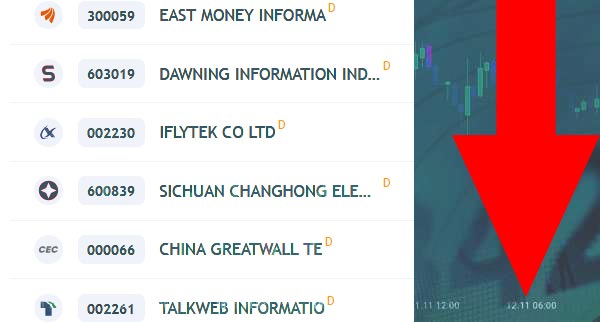 Asian Stocks Move Lower
Nov 16 2024
By Ashly Chole
Asian Stocks Move Lower
Nov 16 2024
By Ashly Chole
-
 Silver Steady For Now
Nov 15 2024
By Emily Clark
Silver Steady For Now
Nov 15 2024
By Emily Clark
-
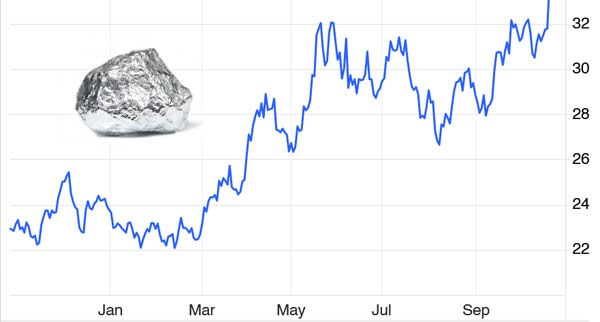 Silver Strong Above Support
Nov 15 2024
By Adam Rosen
Silver Strong Above Support
Nov 15 2024
By Adam Rosen
-
 Silver Remains Weak
Nov 14 2024
By Andrew Blumer
Silver Remains Weak
Nov 14 2024
By Andrew Blumer
-
 Silver Prices Show Vulnerability
Nov 14 2024
By Adam Rosen
Silver Prices Show Vulnerability
Nov 14 2024
By Adam Rosen
-
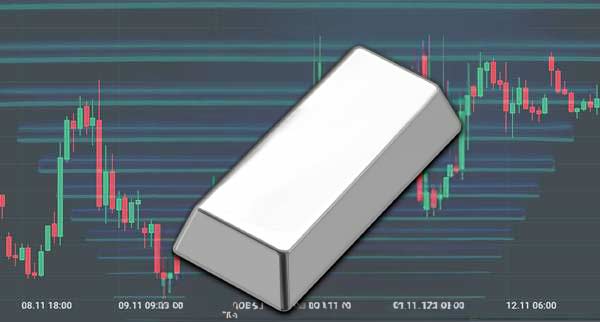 Silver Drops To Weekly Lows
Nov 13 2024
By Adam Rosen
Silver Drops To Weekly Lows
Nov 13 2024
By Adam Rosen
-
 Silver Gains On Safe Haven Demand
Nov 13 2024
By Emily Clark
Silver Gains On Safe Haven Demand
Nov 13 2024
By Emily Clark
-
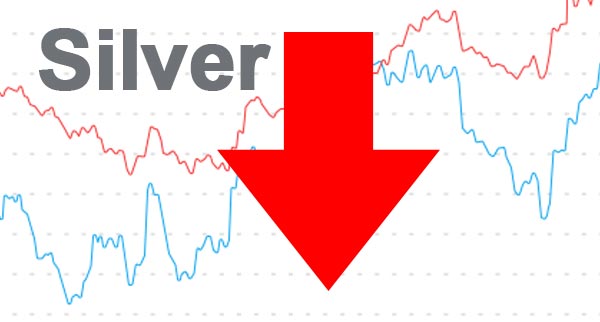 Silver Declines According To Data
Nov 12 2024
By Adam Rosen
Silver Declines According To Data
Nov 12 2024
By Adam Rosen
-
 Silver Crashes To Support
Nov 12 2024
By Emily Clark
Silver Crashes To Support
Nov 12 2024
By Emily Clark
-
 Samsung Shares Turn Higher
Nov 11 2024
By Emily Clark
Samsung Shares Turn Higher
Nov 11 2024
By Emily Clark
-
 Samsung Profit For Q1 Jumps Higher
Nov 11 2024
By Adam Rosen
Samsung Profit For Q1 Jumps Higher
Nov 11 2024
By Adam Rosen
-
 Robinhood Shares Gain
Nov 10 2024
By Emily Clark
Robinhood Shares Gain
Nov 10 2024
By Emily Clark
-
 Ripple Xrp Turns Higher
Nov 10 2024
By Adam Rosen
Ripple Xrp Turns Higher
Nov 10 2024
By Adam Rosen
-
 Rddt Stock Up Sentiment Remains Positive
Nov 09 2024
By Ashly Chole
Rddt Stock Up Sentiment Remains Positive
Nov 09 2024
By Ashly Chole
-
 Ripple Trades Above Support
Nov 09 2024
By Emily Clark
Ripple Trades Above Support
Nov 09 2024
By Emily Clark
-
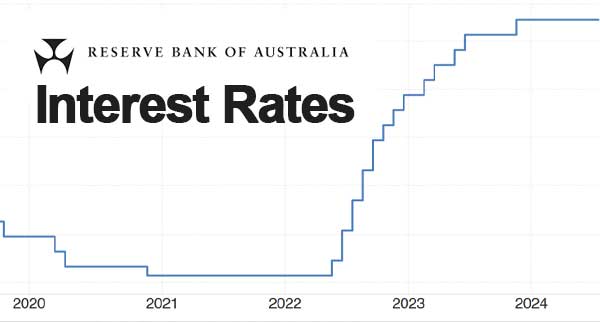 Rba Little Chance Of A Rate Hike
Nov 08 2024
By Adam Rosen
Rba Little Chance Of A Rate Hike
Nov 08 2024
By Adam Rosen
-
 Rbnz To Keep Rates Steady
Nov 08 2024
By Andrew Blumer
Rbnz To Keep Rates Steady
Nov 08 2024
By Andrew Blumer
-
 Rba Keeps Interest Rate
Nov 07 2024
By Ashly Chole
Rba Keeps Interest Rate
Nov 07 2024
By Ashly Chole
-
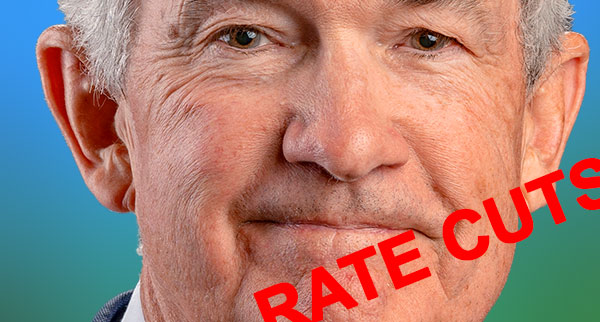 Powell Optimistic About Rate Cuts
Nov 07 2024
By Emily Clark
Powell Optimistic About Rate Cuts
Nov 07 2024
By Emily Clark
-
 Oil Prices Subdued On Weak Cpi
Nov 06 2024
By Adam Rosen
Oil Prices Subdued On Weak Cpi
Nov 06 2024
By Adam Rosen
-
 Nzdusd To Stay Weak Uob
Nov 06 2024
By Emily Clark
Nzdusd To Stay Weak Uob
Nov 06 2024
By Emily Clark
-
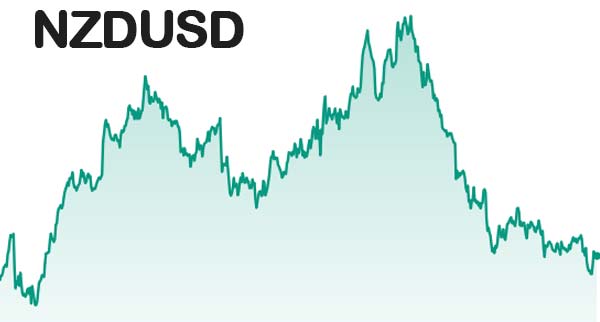 Nzdusd Moves On Rate Cut
Nov 05 2024
By Ashly Chole
Nzdusd Moves On Rate Cut
Nov 05 2024
By Ashly Chole
-
 Nzdusd Consolidates Uob Group
Nov 05 2024
By Ashly Chole
Nzdusd Consolidates Uob Group
Nov 05 2024
By Ashly Chole
-
 New Zealand Inflation Declines
Nov 04 2024
By Adam Rosen
New Zealand Inflation Declines
Nov 04 2024
By Adam Rosen
-
 Nikkei 225 Declines
Nov 04 2024
By Andrew Blumer
Nikkei 225 Declines
Nov 04 2024
By Andrew Blumer
-
 More Volatility In Usdcny
Nov 03 2024
By Adam Rosen
More Volatility In Usdcny
Nov 03 2024
By Adam Rosen
-
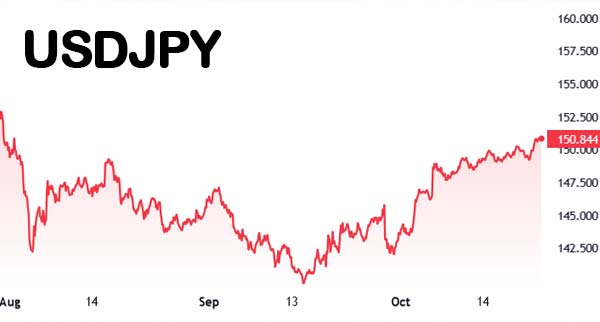 Jpy Bullish Against Us Dollar
Nov 03 2024
By Andrew Blumer
Jpy Bullish Against Us Dollar
Nov 03 2024
By Andrew Blumer
-
 Gold Struggles To Close Above
Nov 02 2024
By Ashly Chole
Gold Struggles To Close Above
Nov 02 2024
By Ashly Chole
-
 Gold Muted Ahead Of Cpi
Nov 02 2024
By Ashly Chole
Gold Muted Ahead Of Cpi
Nov 02 2024
By Ashly Chole
-
 German Stocks Trend Higher
Nov 01 2024
By Andrew Blumer
German Stocks Trend Higher
Nov 01 2024
By Andrew Blumer
-
 Gold Moves Lower On Chinese Data
Nov 01 2024
By Andrew Blumer
Gold Moves Lower On Chinese Data
Nov 01 2024
By Andrew Blumer
-
 Gbpusd Bullish Ahead Of Labor Data
Oct 31 2024
By Adam Rosen
Gbpusd Bullish Ahead Of Labor Data
Oct 31 2024
By Adam Rosen
-
 Gbpusd Trades On Cautious Mood
Oct 31 2024
By Andrew Blumer
Gbpusd Trades On Cautious Mood
Oct 31 2024
By Andrew Blumer
-
 Eurusd Refreshes Ten Week Lows
Oct 30 2024
By Andrew Blumer
Eurusd Refreshes Ten Week Lows
Oct 30 2024
By Andrew Blumer
-
 Eurusd Drops Before Fomc Minutes
Oct 30 2024
By Andrew Blumer
Eurusd Drops Before Fomc Minutes
Oct 30 2024
By Andrew Blumer
-
 Eurgbp Faces Bearish Momentum
Oct 29 2024
By Andrew Blumer
Eurgbp Faces Bearish Momentum
Oct 29 2024
By Andrew Blumer
-
 Eurjpy Faces Tough Resistance
Oct 29 2024
By Andrew Blumer
Eurjpy Faces Tough Resistance
Oct 29 2024
By Andrew Blumer
-
 Earlier Rate Cut In Norway Commerzbank
Oct 28 2024
By Ashly Chole
Earlier Rate Cut In Norway Commerzbank
Oct 28 2024
By Ashly Chole
-
 Eth Gains On Monday
Oct 28 2024
By Andrew Blumer
Eth Gains On Monday
Oct 28 2024
By Andrew Blumer
-
 Djia Trims Recent Gains
Oct 27 2024
By Ashly Chole
Djia Trims Recent Gains
Oct 27 2024
By Ashly Chole
-
 Chinese Economy To Slowdown
Oct 27 2024
By Andrew Blumer
Chinese Economy To Slowdown
Oct 27 2024
By Andrew Blumer
-
 Chinese Cpi Cools Down
Oct 26 2024
By Emily Clark
Chinese Cpi Cools Down
Oct 26 2024
By Emily Clark
-
 Canadian Inflation Drops
Oct 26 2024
By Andrew Blumer
Canadian Inflation Drops
Oct 26 2024
By Andrew Blumer
-
 Canadian Cpi To Jump In September
Oct 25 2024
By Emily Clark
Canadian Cpi To Jump In September
Oct 25 2024
By Emily Clark
-
 Boj Hint At More Rate Hikes
Oct 25 2024
By Emily Clark
Boj Hint At More Rate Hikes
Oct 25 2024
By Emily Clark
-
 Bitcoin Crosses Resistance
Oct 24 2024
By Andrew Blumer
Bitcoin Crosses Resistance
Oct 24 2024
By Andrew Blumer
-
 Audusd Struggles With Recovery
Oct 24 2024
By Ashly Chole
Audusd Struggles With Recovery
Oct 24 2024
By Ashly Chole
-
 Asian Stocks Decline
Oct 23 2024
By Emily Clark
Asian Stocks Decline
Oct 23 2024
By Emily Clark
-
 Aud Subdued On China Stimulus
Oct 23 2024
By Emily Clark
Aud Subdued On China Stimulus
Oct 23 2024
By Emily Clark
-
 Pound Sterling Weak Before Us Cpi
Oct 22 2024
By Emily Clark
Pound Sterling Weak Before Us Cpi
Oct 22 2024
By Emily Clark
-
 Philippine Rate Cut Coming In Q3
Oct 22 2024
By Emily Clark
Philippine Rate Cut Coming In Q3
Oct 22 2024
By Emily Clark
-
 Pboc Keeps Policy Rate Unchanged
Oct 21 2024
By Emily Clark
Pboc Keeps Policy Rate Unchanged
Oct 21 2024
By Emily Clark
-
 Pepe Expected To Rally
Oct 21 2024
By Ashly Chole
Pepe Expected To Rally
Oct 21 2024
By Ashly Chole
-
 Opec To Continue With Output Cuts
Oct 20 2024
By Emily Clark
Opec To Continue With Output Cuts
Oct 20 2024
By Emily Clark
-
 Oracle Shares Turn Green
Oct 20 2024
By Adam Rosen
Oracle Shares Turn Green
Oct 20 2024
By Adam Rosen
-
 Opec Members Agree To Maintain Output Policy
Oct 19 2024
By Ashly Chole
Opec Members Agree To Maintain Output Policy
Oct 19 2024
By Ashly Chole
-
 Oil Prices Show Sideways Trading
Oct 19 2024
By Ashly Chole
Oil Prices Show Sideways Trading
Oct 19 2024
By Ashly Chole
-
 Oil Prices Muted On China Gdp
Oct 18 2024
By Emily Clark
Oil Prices Muted On China Gdp
Oct 18 2024
By Emily Clark
-
 Oil Prices Rise On Inventory Drawdown
Oct 18 2024
By Adam Rosen
Oil Prices Rise On Inventory Drawdown
Oct 18 2024
By Adam Rosen
-
 Oil Prices Gain Upside On Supply Risk
Oct 17 2024
By Adam Rosen
Oil Prices Gain Upside On Supply Risk
Oct 17 2024
By Adam Rosen
-
 Oil Prices Jump On China Inflation Data
Oct 17 2024
By Ashly Chole
Oil Prices Jump On China Inflation Data
Oct 17 2024
By Ashly Chole
-
 Oil Prices Gain On Recovery
Oct 16 2024
By Adam Rosen
Oil Prices Gain On Recovery
Oct 16 2024
By Adam Rosen
-
 Oil Prices Down On Inventory Drawdown
Oct 16 2024
By Adam Rosen
Oil Prices Down On Inventory Drawdown
Oct 16 2024
By Adam Rosen
-
 Oil Prices Decline On Weak Us Demand
Oct 15 2024
By Adam Rosen
Oil Prices Decline On Weak Us Demand
Oct 15 2024
By Adam Rosen
-
 Oil Jumps On Rate Cut
Oct 15 2024
By Emily Clark
Oil Jumps On Rate Cut
Oct 15 2024
By Emily Clark
-
 Oil Holds Steady As Eia Reports Drawdown
Oct 14 2024
By Emily Clark
Oil Holds Steady As Eia Reports Drawdown
Oct 14 2024
By Emily Clark
-
 Oil Futures Steady
Oct 14 2024
By Ashly Chole
Oil Futures Steady
Oct 14 2024
By Ashly Chole
-
 Oil Dips On Demand Concerns
Oct 13 2024
By Ashly Chole
Oil Dips On Demand Concerns
Oct 13 2024
By Ashly Chole
-
 Oil Decline On Supply Worries
Oct 13 2024
By Adam Rosen
Oil Decline On Supply Worries
Oct 13 2024
By Adam Rosen
-
 Nzdusd Tumbles Lower On Oversold Rsi
Oct 12 2024
By Emily Clark
Nzdusd Tumbles Lower On Oversold Rsi
Oct 12 2024
By Emily Clark
-
 Nzdusd Vulnerable Near Lows
Oct 12 2024
By Andrew Blumer
Nzdusd Vulnerable Near Lows
Oct 12 2024
By Andrew Blumer
-
 Nzdusd Trades At Weekly Lows
Oct 11 2024
By Ashly Chole
Nzdusd Trades At Weekly Lows
Oct 11 2024
By Ashly Chole
-
 Nzdusd Tries To Extend Upside
Oct 11 2024
By Adam Rosen
Nzdusd Tries To Extend Upside
Oct 11 2024
By Adam Rosen
-
 Nzdusd Shows Volatility
Oct 10 2024
By Andrew Blumer
Nzdusd Shows Volatility
Oct 10 2024
By Andrew Blumer
-
 Nzdusd Strong On Improved Risk
Oct 10 2024
By Emily Clark
Nzdusd Strong On Improved Risk
Oct 10 2024
By Emily Clark
-
 Nzdusd Returns Higher
Oct 09 2024
By Emily Clark
Nzdusd Returns Higher
Oct 09 2024
By Emily Clark
-
 Nzdusd Remains Offered
Oct 09 2024
By Andrew Blumer
Nzdusd Remains Offered
Oct 09 2024
By Andrew Blumer
-
 Nzdusd Outlook Remains Bullish
Oct 08 2024
By Ashly Chole
Nzdusd Outlook Remains Bullish
Oct 08 2024
By Ashly Chole
-
 Nzdusd Outlook Remains Bearish
Oct 08 2024
By Andrew Blumer
Nzdusd Outlook Remains Bearish
Oct 08 2024
By Andrew Blumer
-
 Nzdusd Jumps Amid Risk On
Oct 07 2024
By Andrew Blumer
Nzdusd Jumps Amid Risk On
Oct 07 2024
By Andrew Blumer
-
 Nzdusd Holds Its Ground
Oct 07 2024
By Adam Rosen
Nzdusd Holds Its Ground
Oct 07 2024
By Adam Rosen
-
 Nzdusd Heads Towards Resistance
Oct 06 2024
By Emily Clark
Nzdusd Heads Towards Resistance
Oct 06 2024
By Emily Clark
-
 Nzdusd Flat Near Monthly Top
Oct 06 2024
By Adam Rosen
Nzdusd Flat Near Monthly Top
Oct 06 2024
By Adam Rosen
-
 New Jobs Added To Au Economy
Oct 05 2024
By Andrew Blumer
New Jobs Added To Au Economy
Oct 05 2024
By Andrew Blumer
-
 Mexican Peso Retreats
Oct 05 2024
By Adam Rosen
Mexican Peso Retreats
Oct 05 2024
By Adam Rosen
-
 Gold Volatile After Us Nfp Data
Oct 04 2024
By Adam Rosen
Gold Volatile After Us Nfp Data
Oct 04 2024
By Adam Rosen
-
 Indonesia Records Trade Surplus
Oct 04 2024
By Adam Rosen
Indonesia Records Trade Surplus
Oct 04 2024
By Adam Rosen
-
 Gold Gains Ahead Of Fomc
Oct 03 2024
By Andrew Blumer
Gold Gains Ahead Of Fomc
Oct 03 2024
By Andrew Blumer
-
 Gold At Record Highs
Oct 03 2024
By Andrew Blumer
Gold At Record Highs
Oct 03 2024
By Andrew Blumer
-
 Gbpusd Strong Around Key Level
Oct 02 2024
By Adam Rosen
Gbpusd Strong Around Key Level
Oct 02 2024
By Adam Rosen
-
 Gbpcad Shows Bearish Divergence
Oct 02 2024
By Emily Clark
Gbpcad Shows Bearish Divergence
Oct 02 2024
By Emily Clark
-
 Eurusd Weak As Zew Data Awaited
Oct 01 2024
By Emily Clark
Eurusd Weak As Zew Data Awaited
Oct 01 2024
By Emily Clark
-
 Ftse 100 Index Rebounds
Oct 01 2024
By Ashly Chole
Ftse 100 Index Rebounds
Oct 01 2024
By Ashly Chole
-
 Eurusd Declines As Rate Cut Looms
Sep 30 2024
By Adam Rosen
Eurusd Declines As Rate Cut Looms
Sep 30 2024
By Adam Rosen
-
 European Stocks Move Higher
Sep 30 2024
By Andrew Blumer
European Stocks Move Higher
Sep 30 2024
By Andrew Blumer
-
 Eurjpy Remains In Downtrend
Sep 29 2024
By Adam Rosen
Eurjpy Remains In Downtrend
Sep 29 2024
By Adam Rosen
-
 Eurjpy Struggles Near Resistance
Sep 29 2024
By Andrew Blumer
Eurjpy Struggles Near Resistance
Sep 29 2024
By Andrew Blumer
-
 Eurgbp Inches Higher
Sep 28 2024
By Andrew Blumer
Eurgbp Inches Higher
Sep 28 2024
By Andrew Blumer
-
 Eurgbp Faces Selling Pressure
Sep 28 2024
By Emily Clark
Eurgbp Faces Selling Pressure
Sep 28 2024
By Emily Clark
-
 Eth Gains On Pectra Split
Sep 27 2024
By Andrew Blumer
Eth Gains On Pectra Split
Sep 27 2024
By Andrew Blumer
-
 Djia Consolidates Ahead Of Fomc
Sep 27 2024
By Andrew Blumer
Djia Consolidates Ahead Of Fomc
Sep 27 2024
By Andrew Blumer
-
 China Cpi Rises In August
Sep 26 2024
By Ashly Chole
China Cpi Rises In August
Sep 26 2024
By Ashly Chole
-
 Crude Oil Trades Low After Retail Sales
Sep 26 2024
By Ashly Chole
Crude Oil Trades Low After Retail Sales
Sep 26 2024
By Ashly Chole
-
 Boj Keeps Rates Unchanged In September
Sep 25 2024
By Ashly Chole
Boj Keeps Rates Unchanged In September
Sep 25 2024
By Ashly Chole
-
 Btc Jumps As Fed Cuts Rate
Sep 25 2024
By Ashly Chole
Btc Jumps As Fed Cuts Rate
Sep 25 2024
By Ashly Chole
-
 Audusd Falls Ahead Of Us Cpi
Sep 24 2024
By Adam Rosen
Audusd Falls Ahead Of Us Cpi
Sep 24 2024
By Adam Rosen
-
 Audusd Challenges Support
Sep 24 2024
By Ashly Chole
Audusd Challenges Support
Sep 24 2024
By Ashly Chole
-
 Audjpy Crosses Resistance
Sep 23 2024
By Adam Rosen
Audjpy Crosses Resistance
Sep 23 2024
By Adam Rosen
-
 Audjpy Trades With Bearish Overtone
Sep 23 2024
By Ashly Chole
Audjpy Trades With Bearish Overtone
Sep 23 2024
By Ashly Chole
-
 Apple Down On Soft Demand
Sep 22 2024
By Emily Clark
Apple Down On Soft Demand
Sep 22 2024
By Emily Clark
-
 Asian Stocks Turn Bullish
Sep 22 2024
By Emily Clark
Asian Stocks Turn Bullish
Sep 22 2024
By Emily Clark
-
 Nzdusd Gains Momentum
Sep 21 2024
By Adam Rosen
Nzdusd Gains Momentum
Sep 21 2024
By Adam Rosen
-
 Nzdusd Head Towards Support
Sep 21 2024
By Andrew Blumer
Nzdusd Head Towards Support
Sep 21 2024
By Andrew Blumer
-
 Nzdusd Declines Ahead Of Rbnz
Sep 20 2024
By Emily Clark
Nzdusd Declines Ahead Of Rbnz
Sep 20 2024
By Emily Clark
-
 Nzdusd Finds Support On China Data
Sep 20 2024
By Andrew Blumer
Nzdusd Finds Support On China Data
Sep 20 2024
By Andrew Blumer
-
 Nzdusd Closes One Of Its Best Weeks
Sep 19 2024
By Ashly Chole
Nzdusd Closes One Of Its Best Weeks
Sep 19 2024
By Ashly Chole
-
 Nvidia Stock Up On Friday
Sep 19 2024
By Ashly Chole
Nvidia Stock Up On Friday
Sep 19 2024
By Ashly Chole
-
 No Intervention In Usdjpy For Now
Sep 18 2024
By Andrew Blumer
No Intervention In Usdjpy For Now
Sep 18 2024
By Andrew Blumer
-
 Nvidia Earnings Will Be Above Forecast
Sep 18 2024
By Andrew Blumer
Nvidia Earnings Will Be Above Forecast
Sep 18 2024
By Andrew Blumer
-
 New Zealand Dollar Firm Above Support
Sep 17 2024
By Adam Rosen
New Zealand Dollar Firm Above Support
Sep 17 2024
By Adam Rosen
-
 Nikkei Trades Higher
Sep 17 2024
By Andrew Blumer
Nikkei Trades Higher
Sep 17 2024
By Andrew Blumer
-
 Nasdaq Bitcoin Index Options
Sep 16 2024
By Andrew Blumer
Nasdaq Bitcoin Index Options
Sep 16 2024
By Andrew Blumer
-
 Natural Gas Trades Lower
Sep 16 2024
By Emily Clark
Natural Gas Trades Lower
Sep 16 2024
By Emily Clark
-
 Markets To Remain Range Bound
Sep 15 2024
By Emily Clark
Markets To Remain Range Bound
Sep 15 2024
By Emily Clark
-
 Jpy Extends Its Losses Despite Hawkish Boj
Sep 15 2024
By Emily Clark
Jpy Extends Its Losses Despite Hawkish Boj
Sep 15 2024
By Emily Clark
-
 Gold Struggles On Usd Recovery
Sep 14 2024
By Emily Clark
Gold Struggles On Usd Recovery
Sep 14 2024
By Emily Clark
-
 Gold Rises On Dollar Weakness
Sep 14 2024
By Ashly Chole
Gold Rises On Dollar Weakness
Sep 14 2024
By Ashly Chole
-
 Gbpusd Trend Remains Bearish
Sep 13 2024
By Emily Clark
Gbpusd Trend Remains Bearish
Sep 13 2024
By Emily Clark
-
 Gbpusd Remains Little Changed
Sep 13 2024
By Andrew Blumer
Gbpusd Remains Little Changed
Sep 13 2024
By Andrew Blumer
-
 Gbpusd Closes Another Day Higher
Sep 12 2024
By Andrew Blumer
Gbpusd Closes Another Day Higher
Sep 12 2024
By Andrew Blumer
-
 Gbpjpy Recovers On Softer Jpy
Sep 12 2024
By Emily Clark
Gbpjpy Recovers On Softer Jpy
Sep 12 2024
By Emily Clark
-
 Eurusd To Move Lower Rabobank
Sep 11 2024
By Adam Rosen
Eurusd To Move Lower Rabobank
Sep 11 2024
By Adam Rosen
-
 Gbpjpy Moves On Positive Uk Gdp
Sep 11 2024
By Andrew Blumer
Gbpjpy Moves On Positive Uk Gdp
Sep 11 2024
By Andrew Blumer
-
 Eurusd Bullish After Q2 Gdp
Sep 10 2024
By Ashly Chole
Eurusd Bullish After Q2 Gdp
Sep 10 2024
By Ashly Chole
-
 Eurusd Lower On Strong Us Data
Sep 10 2024
By Adam Rosen
Eurusd Lower On Strong Us Data
Sep 10 2024
By Adam Rosen
-
 Europe Stock Market Remains Flat
Sep 09 2024
By Ashly Chole
Europe Stock Market Remains Flat
Sep 09 2024
By Ashly Chole
-
 Eurjpy Moves On Jpy Supply
Sep 09 2024
By Andrew Blumer
Eurjpy Moves On Jpy Supply
Sep 09 2024
By Andrew Blumer
-
 Eth Down On Selling Pressure
Sep 08 2024
By Andrew Blumer
Eth Down On Selling Pressure
Sep 08 2024
By Andrew Blumer
-
 Eurgbp Drops On German Gdp
Sep 08 2024
By Emily Clark
Eurgbp Drops On German Gdp
Sep 08 2024
By Emily Clark
-
 Btc Flat As Focus Shifts To Rate Cut
Sep 07 2024
By Ashly Chole
Btc Flat As Focus Shifts To Rate Cut
Sep 07 2024
By Ashly Chole
-
 Djia Slips On Monday
Sep 07 2024
By Ashly Chole
Djia Slips On Monday
Sep 07 2024
By Ashly Chole
-
 Boj Will Keep Raising Rates Imf
Sep 06 2024
By Adam Rosen
Boj Will Keep Raising Rates Imf
Sep 06 2024
By Adam Rosen
-
 Boc To Cut Rates Bofa
Sep 06 2024
By Adam Rosen
Boc To Cut Rates Bofa
Sep 06 2024
By Adam Rosen
-
 Audusd To Rally Higher
Sep 05 2024
By Emily Clark
Audusd To Rally Higher
Sep 05 2024
By Emily Clark
-
 Audusd Trades High On Au Cpi
Sep 05 2024
By Ashly Chole
Audusd Trades High On Au Cpi
Sep 05 2024
By Ashly Chole
-
 Aud Strong Against Usd
Sep 04 2024
By Ashly Chole
Aud Strong Against Usd
Sep 04 2024
By Ashly Chole
-
 Aluminum Gains In Week Commerzbank
Sep 04 2024
By Andrew Blumer
Aluminum Gains In Week Commerzbank
Sep 04 2024
By Andrew Blumer
-
 Nikkei Trades At Record Highs
Sep 03 2024
By Emily Clark
Nikkei Trades At Record Highs
Sep 03 2024
By Emily Clark
-
 Nikkei Closes The Week At Year High
Sep 03 2024
By Adam Rosen
Nikkei Closes The Week At Year High
Sep 03 2024
By Adam Rosen
-
 New Zealand Q2 Cpi Declines
Sep 02 2024
By Ashly Chole
New Zealand Q2 Cpi Declines
Sep 02 2024
By Ashly Chole
-
 New Bullish Price Target For Nvidia
Sep 02 2024
By Emily Clark
New Bullish Price Target For Nvidia
Sep 02 2024
By Emily Clark
-
 Natural Gas Trades On Low Volume
Sep 01 2024
By Emily Clark
Natural Gas Trades On Low Volume
Sep 01 2024
By Emily Clark
-
 Natural Gas Up On Weaker Usd
Sep 01 2024
By Adam Rosen
Natural Gas Up On Weaker Usd
Sep 01 2024
By Adam Rosen
-
 Natural Gas Gains On Supply Issues
Aug 31 2024
By Ashly Chole
Natural Gas Gains On Supply Issues
Aug 31 2024
By Ashly Chole
-
 Natural Gas Tests Resistance
Aug 31 2024
By Andrew Blumer
Natural Gas Tests Resistance
Aug 31 2024
By Andrew Blumer
-
 Natural Gas Closes In Red Again
Aug 30 2024
By Andrew Blumer
Natural Gas Closes In Red Again
Aug 30 2024
By Andrew Blumer
-
 Nasdaq Index Trades At Record Highs
Aug 30 2024
By Ashly Chole
Nasdaq Index Trades At Record Highs
Aug 30 2024
By Ashly Chole
-
 Mxn Trades At Multi Year High
Aug 29 2024
By Andrew Blumer
Mxn Trades At Multi Year High
Aug 29 2024
By Andrew Blumer
-
 Mxn Shows Weakness
Aug 29 2024
By Adam Rosen
Mxn Shows Weakness
Aug 29 2024
By Adam Rosen
-
 Mxn Returns To Bullish Phase
Aug 28 2024
By Ashly Chole
Mxn Returns To Bullish Phase
Aug 28 2024
By Ashly Chole
-
 Mxn Gains On Us Data Turmoil
Aug 28 2024
By Adam Rosen
Mxn Gains On Us Data Turmoil
Aug 28 2024
By Adam Rosen
-
 Morgan Stanley Lowers Unilever Stock Target
Aug 27 2024
By Ashly Chole
Morgan Stanley Lowers Unilever Stock Target
Aug 27 2024
By Ashly Chole
-
 Moderate Gains For Sp 500
Aug 27 2024
By Andrew Blumer
Moderate Gains For Sp 500
Aug 27 2024
By Andrew Blumer
-
 Mexico Peso Gains On Improved Market
Aug 26 2024
By Ashly Chole
Mexico Peso Gains On Improved Market
Aug 26 2024
By Ashly Chole
-
 Microsoft Shares Hit Record Highs
Aug 26 2024
By Andrew Blumer
Microsoft Shares Hit Record Highs
Aug 26 2024
By Andrew Blumer
-
 Mexican Peso Gains
Aug 25 2024
By Andrew Blumer
Mexican Peso Gains
Aug 25 2024
By Andrew Blumer
-
 Mexican Peso Reverses Early Gains
Aug 25 2024
By Ashly Chole
Mexican Peso Reverses Early Gains
Aug 25 2024
By Ashly Chole
-
 Jpy Trades Close To Support Against Usd
Aug 24 2024
By Ashly Chole
Jpy Trades Close To Support Against Usd
Aug 24 2024
By Ashly Chole
-
 Lowe Q4 Net Sales Rise
Aug 24 2024
By Andrew Blumer
Lowe Q4 Net Sales Rise
Aug 24 2024
By Andrew Blumer
-
 Jpy Stays Weak Despite Intervention Fear
Aug 23 2024
By Ashly Chole
Jpy Stays Weak Despite Intervention Fear
Aug 23 2024
By Ashly Chole
-
 Jpy Trades At 4 Week High
Aug 23 2024
By Adam Rosen
Jpy Trades At 4 Week High
Aug 23 2024
By Adam Rosen
-
 Jpy Rises Further On Risk Off
Aug 22 2024
By Emily Clark
Jpy Rises Further On Risk Off
Aug 22 2024
By Emily Clark
-
 Jpy Slides On Boj Comments
Aug 22 2024
By Adam Rosen
Jpy Slides On Boj Comments
Aug 22 2024
By Adam Rosen
-
 Japanese Yen Down
Aug 21 2024
By Andrew Blumer
Japanese Yen Down
Aug 21 2024
By Andrew Blumer
-
 Gold Strong In Short Term
Aug 21 2024
By Ashly Chole
Gold Strong In Short Term
Aug 21 2024
By Ashly Chole
-
 Gold Ends 4 Days Losing Streak
Aug 20 2024
By Andrew Blumer
Gold Ends 4 Days Losing Streak
Aug 20 2024
By Andrew Blumer
-
 Gbpusd Steady Near Support Scotiabank
Aug 20 2024
By Emily Clark
Gbpusd Steady Near Support Scotiabank
Aug 20 2024
By Emily Clark
-
 Gbpusd Next Resistance Is Near
Aug 19 2024
By Adam Rosen
Gbpusd Next Resistance Is Near
Aug 19 2024
By Adam Rosen
-
 Gbpusd Moves Higher
Aug 19 2024
By Ashly Chole
Gbpusd Moves Higher
Aug 19 2024
By Ashly Chole
-
 Gbpjpy Nosedives On Cautious Mood
Aug 18 2024
By Emily Clark
Gbpjpy Nosedives On Cautious Mood
Aug 18 2024
By Emily Clark
-
 Gbpjpy Holds Its Ground
Aug 18 2024
By Andrew Blumer
Gbpjpy Holds Its Ground
Aug 18 2024
By Andrew Blumer
-
 Ftse 100 Gains On Improved Risk
Aug 17 2024
By Ashly Chole
Ftse 100 Gains On Improved Risk
Aug 17 2024
By Ashly Chole
-
 Eurusd Revisits Support
Aug 17 2024
By Emily Clark
Eurusd Revisits Support
Aug 17 2024
By Emily Clark
-
 Eurusd Dips On Strong Us Gdp
Aug 16 2024
By Adam Rosen
Eurusd Dips On Strong Us Gdp
Aug 16 2024
By Adam Rosen
-
 Eurusd Returns Back
Aug 16 2024
By Emily Clark
Eurusd Returns Back
Aug 16 2024
By Emily Clark
-
 European Stocks Bounce
Aug 15 2024
By Adam Rosen
European Stocks Bounce
Aug 15 2024
By Adam Rosen
-
 Eurjpy Drops On Boj Rate Hike Hopes
Aug 15 2024
By Emily Clark
Eurjpy Drops On Boj Rate Hike Hopes
Aug 15 2024
By Emily Clark
-
 Eurchf Unlikely To Turn Higher
Aug 14 2024
By Ashly Chole
Eurchf Unlikely To Turn Higher
Aug 14 2024
By Ashly Chole
-
 Copper Sellers Shows Exhaustion
Aug 14 2024
By Ashly Chole
Copper Sellers Shows Exhaustion
Aug 14 2024
By Ashly Chole
-
 China Trade Balance Contracts
Aug 13 2024
By Ashly Chole
China Trade Balance Contracts
Aug 13 2024
By Ashly Chole
-
 China Lowers Interest Rate
Aug 13 2024
By Emily Clark
China Lowers Interest Rate
Aug 13 2024
By Emily Clark
-
 Btc Weak Near 60k
Aug 12 2024
By Ashly Chole
Btc Weak Near 60k
Aug 12 2024
By Ashly Chole
-
 Boc To Cut Rates Ing
Aug 12 2024
By Ashly Chole
Boc To Cut Rates Ing
Aug 12 2024
By Ashly Chole
-
 Audjpy Strong Post Rba
Aug 11 2024
By Adam Rosen
Audjpy Strong Post Rba
Aug 11 2024
By Adam Rosen
-
 Audusd Trades High
Aug 11 2024
By Emily Clark
Audusd Trades High
Aug 11 2024
By Emily Clark
-
 Aud Retreats On Mixed Pmi
Aug 10 2024
By Andrew Blumer
Aud Retreats On Mixed Pmi
Aug 10 2024
By Andrew Blumer
-
 Aud Turns Higher On Hawkish Rba
Aug 10 2024
By Andrew Blumer
Aud Turns Higher On Hawkish Rba
Aug 10 2024
By Andrew Blumer
-
 Aud Is Under Pressure Commerzbank
Aug 09 2024
By Adam Rosen
Aud Is Under Pressure Commerzbank
Aug 09 2024
By Adam Rosen
-
 Asian Currencies Muted
Aug 09 2024
By Emily Clark
Asian Currencies Muted
Aug 09 2024
By Emily Clark
-
 Jpy Falls On Historic Boj Pivot
Aug 08 2024
By Emily Clark
Jpy Falls On Historic Boj Pivot
Aug 08 2024
By Emily Clark
-
 Jpy Remains Vulnerable At Fresh Lows
Aug 08 2024
By Emily Clark
Jpy Remains Vulnerable At Fresh Lows
Aug 08 2024
By Emily Clark
-
 Gs Beats Q2 Earnings Forecast
Aug 07 2024
By Andrew Blumer
Gs Beats Q2 Earnings Forecast
Aug 07 2024
By Andrew Blumer
-
 Japan Warns About Intervention
Aug 07 2024
By Adam Rosen
Japan Warns About Intervention
Aug 07 2024
By Adam Rosen
-
 Gold To Surge Towards 3k
Aug 06 2024
By Ashly Chole
Gold To Surge Towards 3k
Aug 06 2024
By Ashly Chole
-
 Gold Trades At Record High
Aug 06 2024
By Adam Rosen
Gold Trades At Record High
Aug 06 2024
By Adam Rosen
-
 Gold To Rise In Q4
Aug 05 2024
By Adam Rosen
Gold To Rise In Q4
Aug 05 2024
By Adam Rosen
-
 Gbpusd Trades Near Important Level
Aug 05 2024
By Ashly Chole
Gbpusd Trades Near Important Level
Aug 05 2024
By Ashly Chole
-
 Gbpusd Steady As Traders Await Data
Aug 04 2024
By Emily Clark
Gbpusd Steady As Traders Await Data
Aug 04 2024
By Emily Clark
-
 Gbpusd Slips On Correction
Aug 04 2024
By Andrew Blumer
Gbpusd Slips On Correction
Aug 04 2024
By Andrew Blumer
-
 Eurusd Defensive In Short Term
Aug 03 2024
By Ashly Chole
Eurusd Defensive In Short Term
Aug 03 2024
By Ashly Chole
-
 Eurjpy Remains Supported
Aug 03 2024
By Ashly Chole
Eurjpy Remains Supported
Aug 03 2024
By Ashly Chole
-
 Eurjpy On Backfoot Ahead Of Hicp
Aug 02 2024
By Adam Rosen
Eurjpy On Backfoot Ahead Of Hicp
Aug 02 2024
By Adam Rosen
-
 Eurgbp Turns Higher
Aug 02 2024
By Adam Rosen
Eurgbp Turns Higher
Aug 02 2024
By Adam Rosen
-
 Dow Jones Sets New Record
Aug 01 2024
By Ashly Chole
Dow Jones Sets New Record
Aug 01 2024
By Ashly Chole
-
 Eurgbp Holds Ground
Aug 01 2024
By Ashly Chole
Eurgbp Holds Ground
Aug 01 2024
By Ashly Chole
-
 China Gdp Jumps In Q2
Jul 31 2024
By Andrew Blumer
China Gdp Jumps In Q2
Jul 31 2024
By Andrew Blumer
-
 Chip Stocks Decline
Jul 31 2024
By Emily Clark
Chip Stocks Decline
Jul 31 2024
By Emily Clark
-
 Boc To Cut Rates From July
Jul 30 2024
By Andrew Blumer
Boc To Cut Rates From July
Jul 30 2024
By Andrew Blumer
-
 Canada Core Cpi Up In June
Jul 30 2024
By Emily Clark
Canada Core Cpi Up In June
Jul 30 2024
By Emily Clark
-
 Australian Jobless Rate Jumps
Jul 29 2024
By Andrew Blumer
Australian Jobless Rate Jumps
Jul 29 2024
By Andrew Blumer
-
 Bitcoin Strong On Improved Etf Inflows
Jul 29 2024
By Ashly Chole
Bitcoin Strong On Improved Etf Inflows
Jul 29 2024
By Ashly Chole
-
 Audjpy Recovers From Weekly Lows
Jul 28 2024
By Ashly Chole
Audjpy Recovers From Weekly Lows
Jul 28 2024
By Ashly Chole
-
 Audusd Steady Post Jobs Data
Jul 28 2024
By Ashly Chole
Audusd Steady Post Jobs Data
Jul 28 2024
By Ashly Chole
-
 Audjpy Continues Its Downtrend
Jul 27 2024
By Adam Rosen
Audjpy Continues Its Downtrend
Jul 27 2024
By Adam Rosen
-
 Aud Strong Before Fedspeak
Jul 27 2024
By Emily Clark
Aud Strong Before Fedspeak
Jul 27 2024
By Emily Clark
-
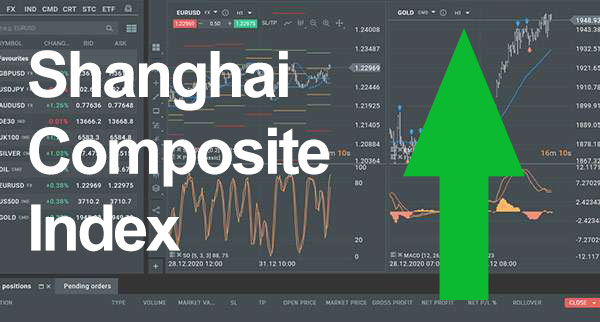 Asian Stocks Trade Higher
Jul 26 2024
By Emily Clark
Asian Stocks Trade Higher
Jul 26 2024
By Emily Clark
-
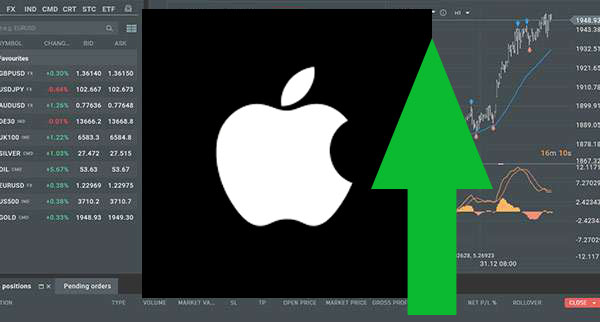 Aapl Shares Turns Higher
Jul 26 2024
By Adam Rosen
Aapl Shares Turns Higher
Jul 26 2024
By Adam Rosen
-
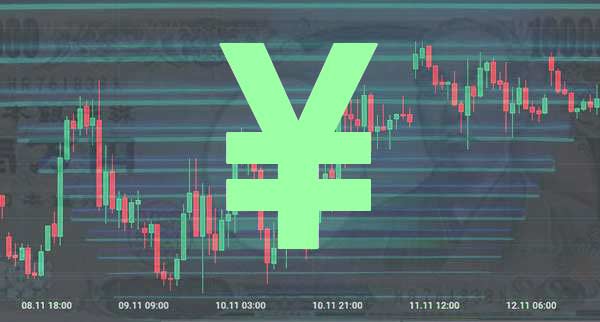 Jpy Fails To Gain Momentum
Jul 25 2024
By Emily Clark
Jpy Fails To Gain Momentum
Jul 25 2024
By Emily Clark
-
 Jpy Closes In Red Against Usd
Jul 25 2024
By Adam Rosen
Jpy Closes In Red Against Usd
Jul 25 2024
By Adam Rosen
-
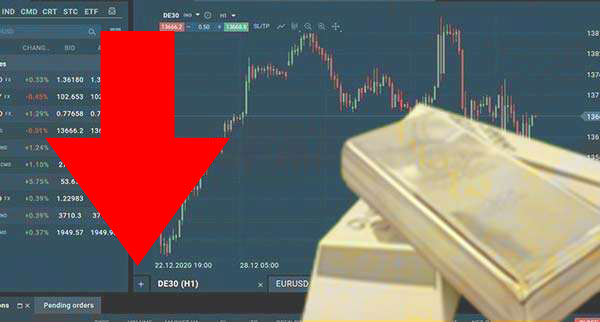 Gold Turns Lower On Powell Speech
Jul 24 2024
By Andrew Blumer
Gold Turns Lower On Powell Speech
Jul 24 2024
By Andrew Blumer
-
 Gold Rises On Weak Usd
Jul 24 2024
By Emily Clark
Gold Rises On Weak Usd
Jul 24 2024
By Emily Clark
-
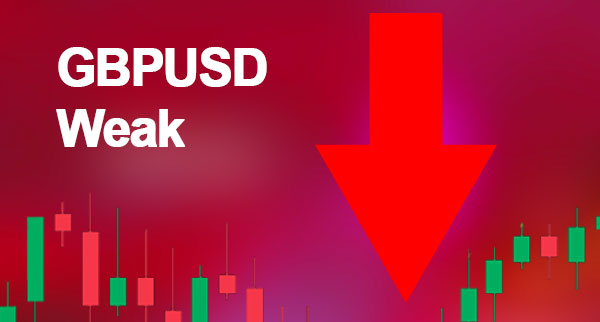 Gbpusd Weak As Usd Recovers
Jul 23 2024
By Ashly Chole
Gbpusd Weak As Usd Recovers
Jul 23 2024
By Ashly Chole
-
 Gold Moves Down On Usd Recovery
Jul 23 2024
By Emily Clark
Gold Moves Down On Usd Recovery
Jul 23 2024
By Emily Clark
-
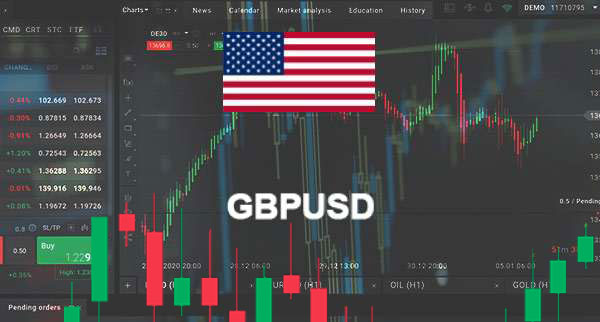 Gbpusd Steady Ahead Of Us Data
Jul 22 2024
By Ashly Chole
Gbpusd Steady Ahead Of Us Data
Jul 22 2024
By Ashly Chole
-
 Gbpusd Trades Near Solid Support
Jul 22 2024
By Adam Rosen
Gbpusd Trades Near Solid Support
Jul 22 2024
By Adam Rosen
-
 Eurusd Trades In Green
Jul 21 2024
By Adam Rosen
Eurusd Trades In Green
Jul 21 2024
By Adam Rosen
-
 Eurusd Steady Post Nfp
Jul 21 2024
By Andrew Blumer
Eurusd Steady Post Nfp
Jul 21 2024
By Andrew Blumer
-
 Eurusd Moves Down Before Adp
Jul 20 2024
By Adam Rosen
Eurusd Moves Down Before Adp
Jul 20 2024
By Adam Rosen
-
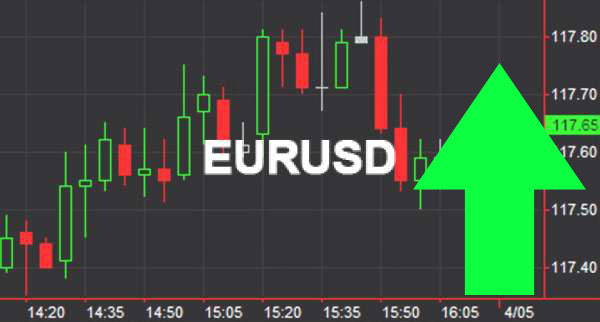 Eurusd Eyes Next Resistance
Jul 20 2024
By Adam Rosen
Eurusd Eyes Next Resistance
Jul 20 2024
By Adam Rosen
-
 Eurgbp Weak Before Lagarde Speech
Jul 19 2024
By Andrew Blumer
Eurgbp Weak Before Lagarde Speech
Jul 19 2024
By Andrew Blumer
-
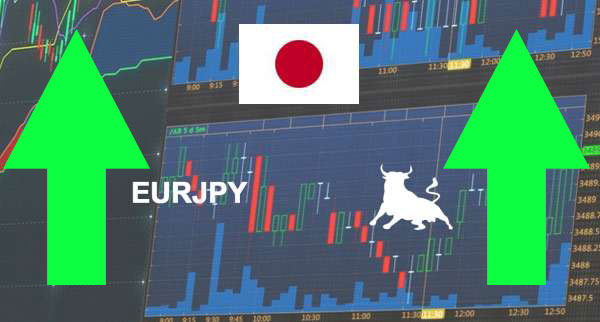 Eurjpy Bullish On Weak Japan Pmi
Jul 19 2024
By Andrew Blumer
Eurjpy Bullish On Weak Japan Pmi
Jul 19 2024
By Andrew Blumer
-
 Eurgbp Awaits Eu Inflation Data
Jul 18 2024
By Ashly Chole
Eurgbp Awaits Eu Inflation Data
Jul 18 2024
By Ashly Chole
-
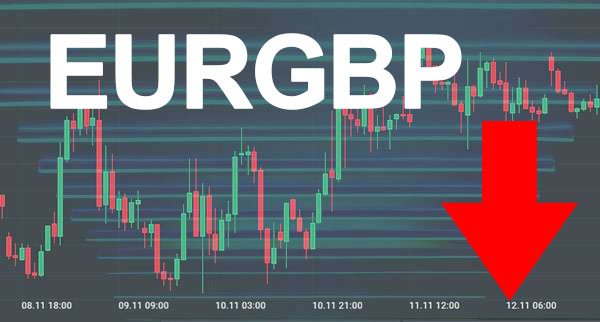 Eurgbp At Risk Of Downtrend
Jul 18 2024
By Andrew Blumer
Eurgbp At Risk Of Downtrend
Jul 18 2024
By Andrew Blumer
-
 Cpi Data Remains In Focus Ing
Jul 17 2024
By Emily Clark
Cpi Data Remains In Focus Ing
Jul 17 2024
By Emily Clark
-
 Copper Prices Under Pressure
Jul 17 2024
By Andrew Blumer
Copper Prices Under Pressure
Jul 17 2024
By Andrew Blumer
-
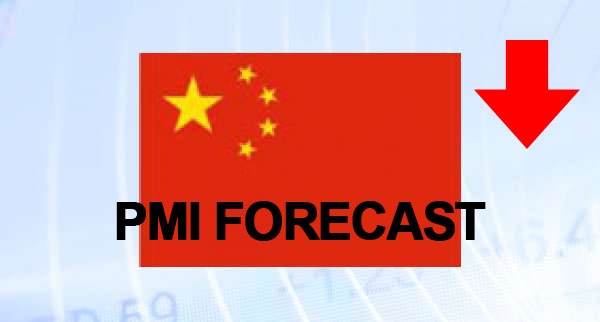 China Services Pmi Miss Forecast
Jul 16 2024
By Ashly Chole
China Services Pmi Miss Forecast
Jul 16 2024
By Ashly Chole
-
 Btc Faces Strong Resistance
Jul 16 2024
By Adam Rosen
Btc Faces Strong Resistance
Jul 16 2024
By Adam Rosen
-
 Boe Haskel Hints At Not Changing Rates
Jul 15 2024
By Emily Clark
Boe Haskel Hints At Not Changing Rates
Jul 15 2024
By Emily Clark
-
 Bitcoin Trades Above Support
Jul 15 2024
By Ashly Chole
Bitcoin Trades Above Support
Jul 15 2024
By Ashly Chole
-
 Bitcoin Cash Declines
Jul 14 2024
By Andrew Blumer
Bitcoin Cash Declines
Jul 14 2024
By Andrew Blumer
-
 Audusd Shows Consolidation
Jul 14 2024
By Ashly Chole
Audusd Shows Consolidation
Jul 14 2024
By Ashly Chole
-
 Aud Stays Strong On Rba Meeting
Jul 13 2024
By Emily Clark
Aud Stays Strong On Rba Meeting
Jul 13 2024
By Emily Clark
-
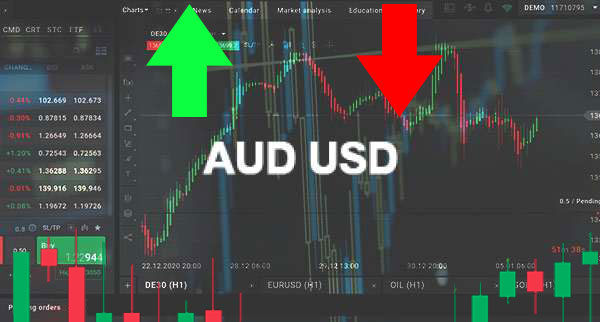 Audusd Declines After Rba Minutes
Jul 13 2024
By Adam Rosen
Audusd Declines After Rba Minutes
Jul 13 2024
By Adam Rosen
-
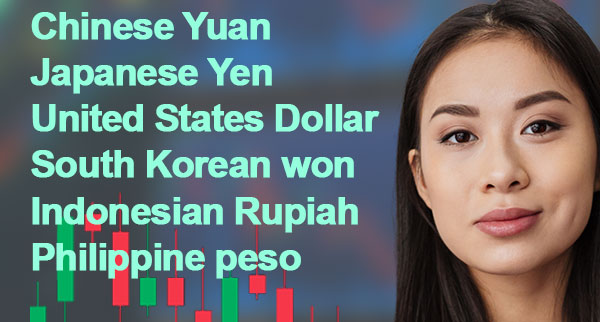 Asian Currencies Unmoved
Jul 12 2024
By Ashly Chole
Asian Currencies Unmoved
Jul 12 2024
By Ashly Chole
-
 Adp Report Misses Forecast
Jul 12 2024
By Ashly Chole
Adp Report Misses Forecast
Jul 12 2024
By Ashly Chole
-
 Jeff Bezos Sells Amazon Shares
Jul 11 2024
By Andrew Blumer
Jeff Bezos Sells Amazon Shares
Jul 11 2024
By Andrew Blumer
-
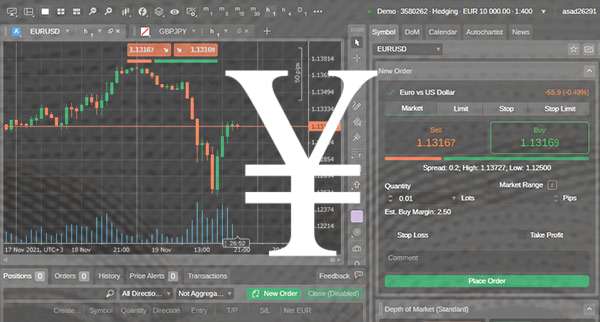 Japanese Yen Lifted By Boj Pivot Forecasts
Jul 11 2024
By Adam Rosen
Japanese Yen Lifted By Boj Pivot Forecasts
Jul 11 2024
By Adam Rosen
-
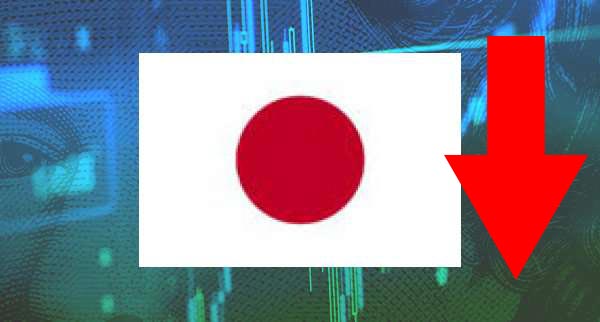 Japan Stocks Turn Lower
Jul 10 2024
By Ashly Chole
Japan Stocks Turn Lower
Jul 10 2024
By Ashly Chole
-
 Japan Undergoes Recession
Jul 10 2024
By Andrew Blumer
Japan Undergoes Recession
Jul 10 2024
By Andrew Blumer
-
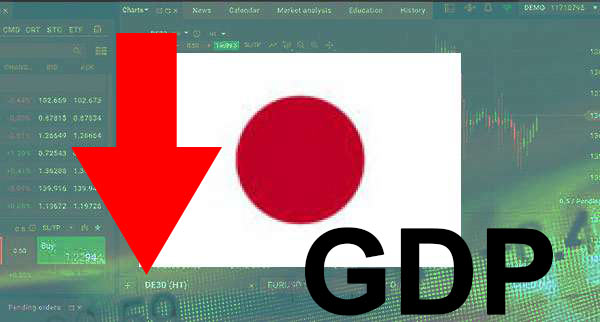 Japan Gdp Shrinks
Jul 09 2024
By Andrew Blumer
Japan Gdp Shrinks
Jul 09 2024
By Andrew Blumer
-
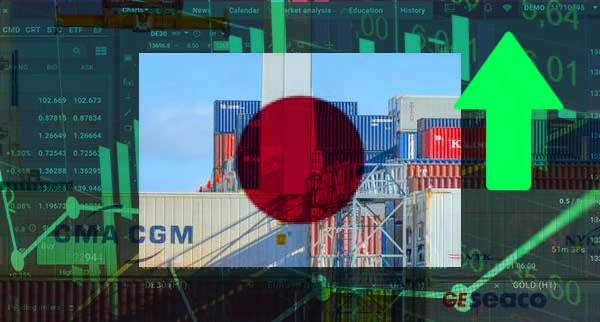 Japan Export Up On Improved Demand
Jul 09 2024
By Emily Clark
Japan Export Up On Improved Demand
Jul 09 2024
By Emily Clark
-
 Japan Economy To Shrink
Jul 08 2024
By Andrew Blumer
Japan Economy To Shrink
Jul 08 2024
By Andrew Blumer
-
 Japan Cpi Falls In Jan
Jul 08 2024
By Emily Clark
Japan Cpi Falls In Jan
Jul 08 2024
By Emily Clark
-
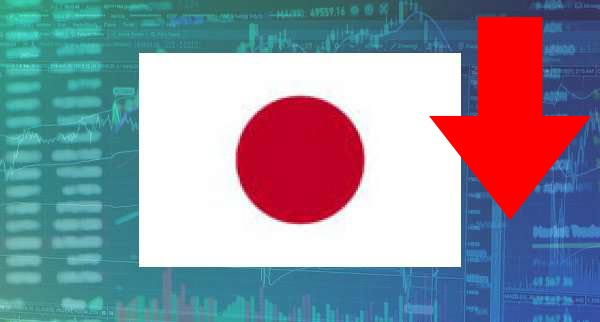 Japan Core Orders Decline
Jul 07 2024
By Adam Rosen
Japan Core Orders Decline
Jul 07 2024
By Adam Rosen
-
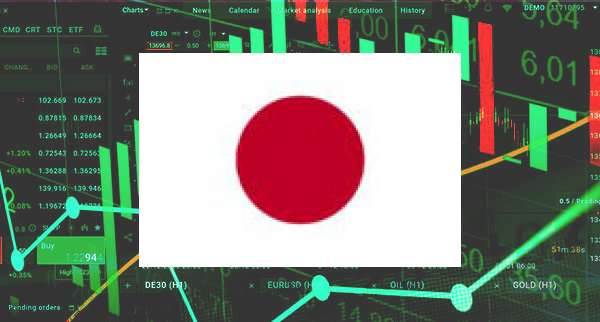 Japan Core Inflation Drops In March
Jul 07 2024
By Adam Rosen
Japan Core Inflation Drops In March
Jul 07 2024
By Adam Rosen
-
 Inr To Gain Against Greenback
Jul 06 2024
By Emily Clark
Inr To Gain Against Greenback
Jul 06 2024
By Emily Clark
-
 Intel To Spend Billions In Four Us States
Jul 06 2024
By Adam Rosen
Intel To Spend Billions In Four Us States
Jul 06 2024
By Adam Rosen
-
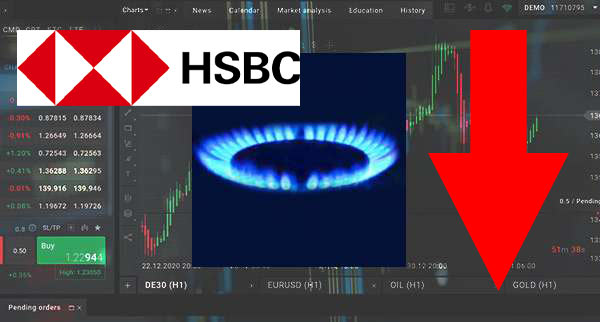 Hsbc Forecasts Weak Natural Gas Prices
Jul 05 2024
By Ashly Chole
Hsbc Forecasts Weak Natural Gas Prices
Jul 05 2024
By Ashly Chole
-
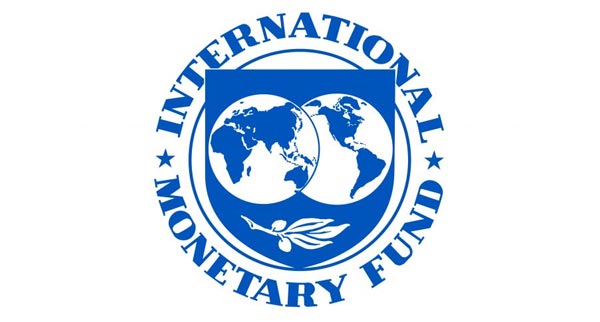 Imf Approves Bailout Package
Jul 05 2024
By Emily Clark
Imf Approves Bailout Package
Jul 05 2024
By Emily Clark
-
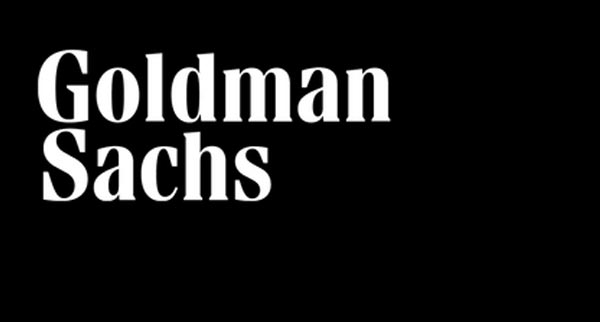 Goldman Sachs Sets New Year End Target
Jul 04 2024
By Adam Rosen
Goldman Sachs Sets New Year End Target
Jul 04 2024
By Adam Rosen
-
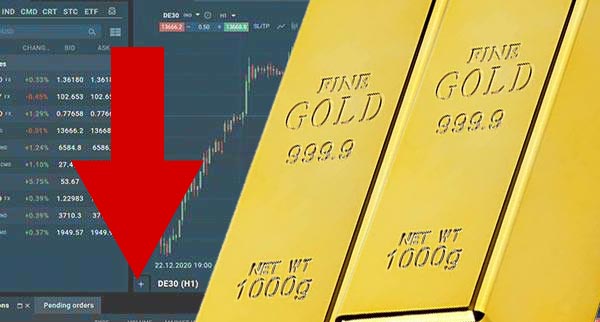 Gold Trades With A Bearish Tone
Jul 04 2024
By Adam Rosen
Gold Trades With A Bearish Tone
Jul 04 2024
By Adam Rosen
-
 Gold Prices Under Pressure
Jul 03 2024
By Adam Rosen
Gold Prices Under Pressure
Jul 03 2024
By Adam Rosen
-
 Gold Steady On Rate Cut Hopes
Jul 03 2024
By Adam Rosen
Gold Steady On Rate Cut Hopes
Jul 03 2024
By Adam Rosen
-
 Gbpusd Turns Lower
Jul 02 2024
By Andrew Blumer
Gbpusd Turns Lower
Jul 02 2024
By Andrew Blumer
-
 Germany Unemployment Up In May
Jul 02 2024
By Adam Rosen
Germany Unemployment Up In May
Jul 02 2024
By Adam Rosen
-
 Gbpusd Trades At Monthly Lows
Jul 01 2024
By Ashly Chole
Gbpusd Trades At Monthly Lows
Jul 01 2024
By Ashly Chole
-
 Gbpusd Struggles Post Nfp
Jul 01 2024
By Adam Rosen
Gbpusd Struggles Post Nfp
Jul 01 2024
By Adam Rosen
-
 Eurusd Shows Consolidation
Jun 30 2024
By Ashly Chole
Eurusd Shows Consolidation
Jun 30 2024
By Ashly Chole
-
 Eurusd Trades On Risk Aversion
Jun 30 2024
By Emily Clark
Eurusd Trades On Risk Aversion
Jun 30 2024
By Emily Clark
-
 Eurusd On Defensive Below Resistance
Jun 29 2024
By Adam Rosen
Eurusd On Defensive Below Resistance
Jun 29 2024
By Adam Rosen
-
 Eurusd Lacks Direction
Jun 29 2024
By Ashly Chole
Eurusd Lacks Direction
Jun 29 2024
By Ashly Chole
-
 Eurusd Crosses Resistance After Cpi
Jun 28 2024
By Emily Clark
Eurusd Crosses Resistance After Cpi
Jun 28 2024
By Emily Clark
-
 Eurusd Closes The Week In Red
Jun 28 2024
By Andrew Blumer
Eurusd Closes The Week In Red
Jun 28 2024
By Andrew Blumer
-
 European Stocks Decline
Jun 27 2024
By Emily Clark
European Stocks Decline
Jun 27 2024
By Emily Clark
-
 European Stocks Slip
Jun 27 2024
By Andrew Blumer
European Stocks Slip
Jun 27 2024
By Andrew Blumer
-
 Eurgbp Drops On Political Uncertainty
Jun 26 2024
By Andrew Blumer
Eurgbp Drops On Political Uncertainty
Jun 26 2024
By Andrew Blumer
-
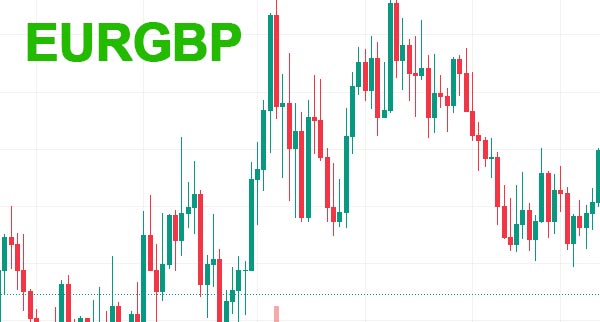 Eurgbp Recovers But Remains Under Pressure
Jun 26 2024
By Adam Rosen
Eurgbp Recovers But Remains Under Pressure
Jun 26 2024
By Adam Rosen
-
 Ecb On Track To Achieve Inflation Target
Jun 25 2024
By Adam Rosen
Ecb On Track To Achieve Inflation Target
Jun 25 2024
By Adam Rosen
-
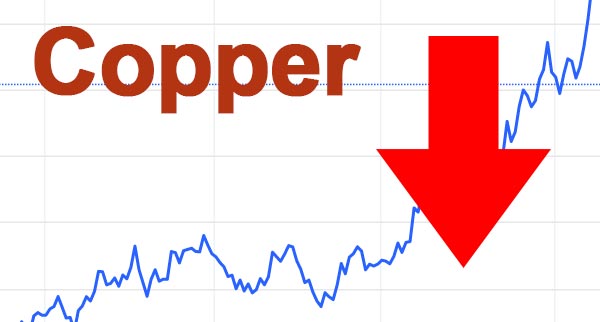 Copper Prices Decline
Jun 25 2024
By Ashly Chole
Copper Prices Decline
Jun 25 2024
By Ashly Chole
-
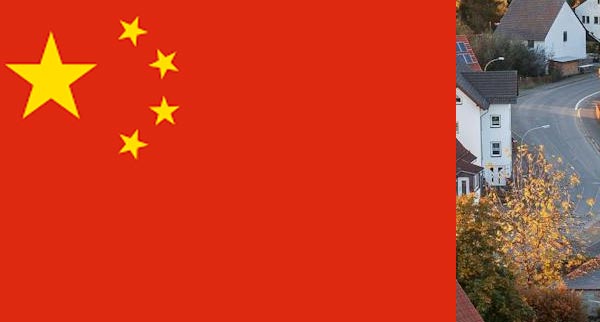 China New Home Prices Declines
Jun 24 2024
By Ashly Chole
China New Home Prices Declines
Jun 24 2024
By Ashly Chole
-
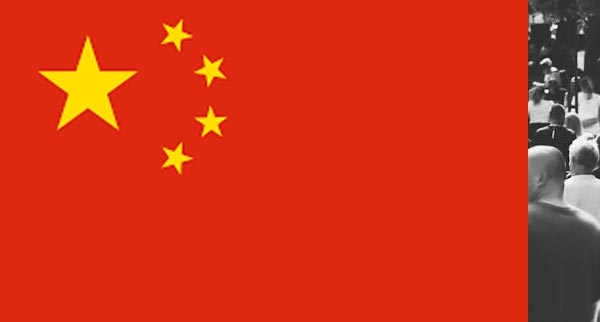 China Services Sector Prints Growth
Jun 24 2024
By Emily Clark
China Services Sector Prints Growth
Jun 24 2024
By Emily Clark
-
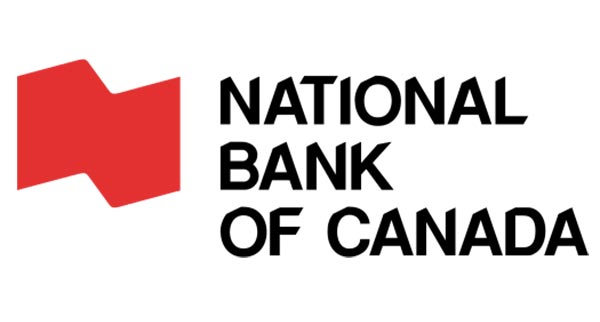 Boc Cuts The Interest Rate
Jun 23 2024
By Ashly Chole
Boc Cuts The Interest Rate
Jun 23 2024
By Ashly Chole
-
 Australian Q1 Gdp Disappoints
Jun 23 2024
By Ashly Chole
Australian Q1 Gdp Disappoints
Jun 23 2024
By Ashly Chole
-
 Audusd Declines On Mixed Chinese Data
Jun 22 2024
By Ashly Chole
Audusd Declines On Mixed Chinese Data
Jun 22 2024
By Ashly Chole
-
 Audusd On Defensive Post Cpi
Jun 22 2024
By Ashly Chole
Audusd On Defensive Post Cpi
Jun 22 2024
By Ashly Chole
-
 Asian Stocks Show Mixed Price Action
Jun 21 2024
By Adam Rosen
Asian Stocks Show Mixed Price Action
Jun 21 2024
By Adam Rosen
-
 Asian Fx Markets Remain Muted On Rate Fears
Jun 21 2024
By Ashly Chole
Asian Fx Markets Remain Muted On Rate Fears
Jun 21 2024
By Ashly Chole
-
 Apple Little Changed On Ai News
Jun 20 2024
By Ashly Chole
Apple Little Changed On Ai News
Jun 20 2024
By Ashly Chole
-
 Apple Becomes Most Valuable Company
Jun 20 2024
By Ashly Chole
Apple Becomes Most Valuable Company
Jun 20 2024
By Ashly Chole
-
 Hong Kong Stock Index Up
Jun 19 2024
By Adam Rosen
Hong Kong Stock Index Up
Jun 19 2024
By Adam Rosen
-
 Goldman Sachs Sets New Target For Stock
Jun 19 2024
By Emily Clark
Goldman Sachs Sets New Target For Stock
Jun 19 2024
By Emily Clark
-
 Goldman Sachs Eyes Upside
Jun 18 2024
By Ashly Chole
Goldman Sachs Eyes Upside
Jun 18 2024
By Ashly Chole
-
 Goldman Sachs Forecasts Upside
Jun 18 2024
By Adam Rosen
Goldman Sachs Forecasts Upside
Jun 18 2024
By Adam Rosen
-
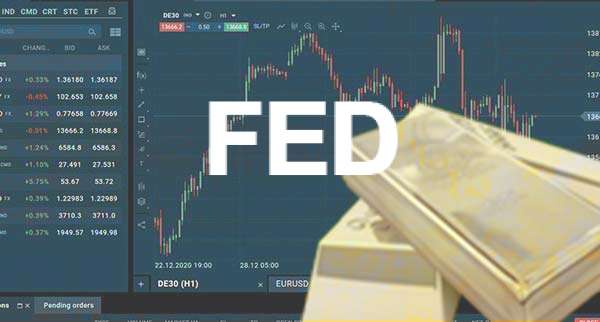 Gold Trades Strong Ahead Of Fed
Jun 17 2024
By Adam Rosen
Gold Trades Strong Ahead Of Fed
Jun 17 2024
By Adam Rosen
-
 Gold Trades High On Rate Cut Hopes
Jun 17 2024
By Ashly Chole
Gold Trades High On Rate Cut Hopes
Jun 17 2024
By Ashly Chole
-
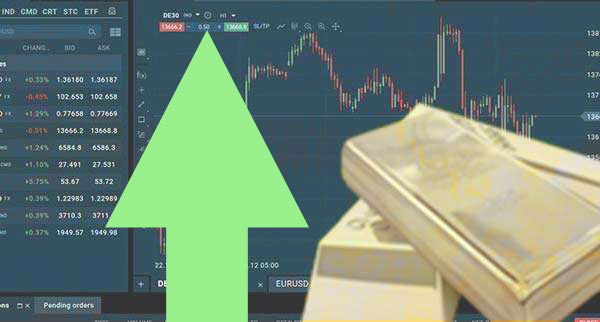 Gold Trades High On Rate Cut Hope
Jun 16 2024
By Adam Rosen
Gold Trades High On Rate Cut Hope
Jun 16 2024
By Adam Rosen
-
 Gold Trades Above Support
Jun 16 2024
By Adam Rosen
Gold Trades Above Support
Jun 16 2024
By Adam Rosen
-
 Gold Retreats On Hot Us Cpi
Jun 15 2024
By Andrew Blumer
Gold Retreats On Hot Us Cpi
Jun 15 2024
By Andrew Blumer
-
 Gold Remains Rangebound
Jun 15 2024
By Adam Rosen
Gold Remains Rangebound
Jun 15 2024
By Adam Rosen
-
 Gold Forecasts Suggests A Bullish Target
Jun 14 2024
By Emily Clark
Gold Forecasts Suggests A Bullish Target
Jun 14 2024
By Emily Clark
-
 Gold Ends Winning Streak
Jun 13 2024
By Emily Clark
Gold Ends Winning Streak
Jun 13 2024
By Emily Clark
-
 Gold Down On Overbought Readings
Jun 13 2024
By Andrew Blumer
Gold Down On Overbought Readings
Jun 13 2024
By Andrew Blumer
-
 Gfk Survey Reveals Low Consumer Sentiment
Jun 12 2024
By Andrew Blumer
Gfk Survey Reveals Low Consumer Sentiment
Jun 12 2024
By Andrew Blumer
-
 Gold Crosses Key Level On Rate Cut Hopes
Jun 12 2024
By Ashly Chole
Gold Crosses Key Level On Rate Cut Hopes
Jun 12 2024
By Ashly Chole
-
 Germany Inflation Jumps In April
Jun 11 2024
By Ashly Chole
Germany Inflation Jumps In April
Jun 11 2024
By Ashly Chole
-
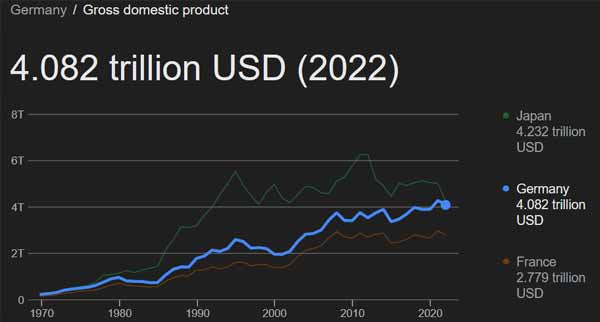 Germany Raises Gdp Forecast
Jun 11 2024
By Emily Clark
Germany Raises Gdp Forecast
Jun 11 2024
By Emily Clark
-
 Germany Factory Orders Miss Estimates
Jun 10 2024
By Emily Clark
Germany Factory Orders Miss Estimates
Jun 10 2024
By Emily Clark
-
 Genesis Buys Billions Worth Of Btc
Jun 10 2024
By Adam Rosen
Genesis Buys Billions Worth Of Btc
Jun 10 2024
By Adam Rosen
-
 Gbpusd Trades Close To Resistance
Jun 09 2024
By Adam Rosen
Gbpusd Trades Close To Resistance
Jun 09 2024
By Adam Rosen
-
 Gbpusd To Find Support Scotiabank
Jun 09 2024
By Emily Clark
Gbpusd To Find Support Scotiabank
Jun 09 2024
By Emily Clark
-
 Gbpusd Rally Higher To Ytd High
Jun 08 2024
By Adam Rosen
Gbpusd Rally Higher To Ytd High
Jun 08 2024
By Adam Rosen
-
 Gbpusd Revisits Resistance
Jun 08 2024
By Emily Clark
Gbpusd Revisits Resistance
Jun 08 2024
By Emily Clark
-
 Gbpusd Needs To Reclaim Resistance Scotiabank
Jun 07 2024
By Emily Clark
Gbpusd Needs To Reclaim Resistance Scotiabank
Jun 07 2024
By Emily Clark
-
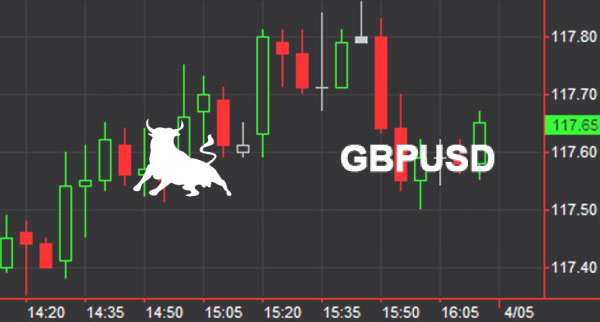 Gbpusd On Path To Bullish Rally
Jun 07 2024
By Adam Rosen
Gbpusd On Path To Bullish Rally
Jun 07 2024
By Adam Rosen
-
 Gbpusd Drops On Mixed Uk Retail Sales
Jun 06 2024
By Andrew Blumer
Gbpusd Drops On Mixed Uk Retail Sales
Jun 06 2024
By Andrew Blumer
-
 Gbpusd Drops As Bears Take Control
Jun 06 2024
By Emily Clark
Gbpusd Drops As Bears Take Control
Jun 06 2024
By Emily Clark
-
 Gbpjpy Gains Due To Risk On
Jun 05 2024
By Emily Clark
Gbpjpy Gains Due To Risk On
Jun 05 2024
By Emily Clark
-
 Gbpusd Consolidates On Cautious Market
Jun 05 2024
By Ashly Chole
Gbpusd Consolidates On Cautious Market
Jun 05 2024
By Ashly Chole
-
 Gbp Falls After Nfp Data
Jun 04 2024
By Andrew Blumer
Gbp Falls After Nfp Data
Jun 04 2024
By Andrew Blumer
-
 Gamestop Stock Jumps
Jun 04 2024
By Emily Clark
Gamestop Stock Jumps
Jun 04 2024
By Emily Clark
-
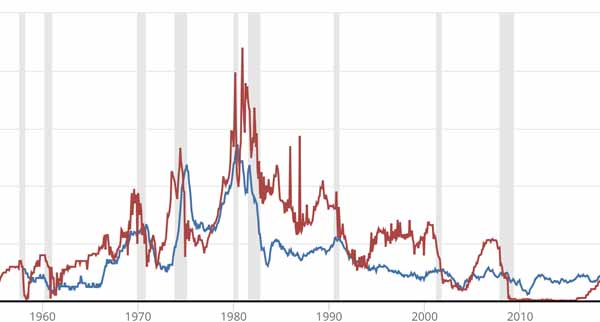 Fed To Start Rate Cuts From September
Jun 03 2024
By Andrew Blumer
Fed To Start Rate Cuts From September
Jun 03 2024
By Andrew Blumer
-
 Federal Reserve To Cut Rates In July
Jun 03 2024
By Ashly Chole
Federal Reserve To Cut Rates In July
Jun 03 2024
By Ashly Chole
-
 Eurusd Trades Below Resistance
Jun 02 2024
By Andrew Blumer
Eurusd Trades Below Resistance
Jun 02 2024
By Andrew Blumer
-
 Fed To Cut Rates At June Meeting
Jun 02 2024
By Emily Clark
Fed To Cut Rates At June Meeting
Jun 02 2024
By Emily Clark
-
 Eurusd Resumes Recovery
Jun 01 2024
By Andrew Blumer
Eurusd Resumes Recovery
Jun 01 2024
By Andrew Blumer
-
 Eurusd Stable As Investors Await Cpi
Jun 01 2024
By Ashly Chole
Eurusd Stable As Investors Await Cpi
Jun 01 2024
By Ashly Chole
-
 Eurjpy To Find First Resistance
May 31 2024
By Emily Clark
Eurjpy To Find First Resistance
May 31 2024
By Emily Clark
-
 Eurgbp Finds Support Near Sma
May 31 2024
By Emily Clark
Eurgbp Finds Support Near Sma
May 31 2024
By Emily Clark
-
 Deutsche Bank Sets New Target For Us Index
May 30 2024
By Adam Rosen
Deutsche Bank Sets New Target For Us Index
May 30 2024
By Adam Rosen
-
 Djia Closes The Week In Green
May 30 2024
By Andrew Blumer
Djia Closes The Week In Green
May 30 2024
By Andrew Blumer
-
 Chinese Industrial Output Increases
May 29 2024
By Adam Rosen
Chinese Industrial Output Increases
May 29 2024
By Adam Rosen
-
 Copper Prices Trade At Record High
May 29 2024
By Emily Clark
Copper Prices Trade At Record High
May 29 2024
By Emily Clark
-
 Bitcoin Flat As Market Focuses On Fed
May 28 2024
By Emily Clark
Bitcoin Flat As Market Focuses On Fed
May 28 2024
By Emily Clark
-
 Boj Faces More Pressure For Rate Hikes
May 28 2024
By Andrew Blumer
Boj Faces More Pressure For Rate Hikes
May 28 2024
By Andrew Blumer
-
 Australia Unemployment Rate Go Higher
May 27 2024
By Emily Clark
Australia Unemployment Rate Go Higher
May 27 2024
By Emily Clark
-
 Audusd Turns Higher On Risk On Mood
May 27 2024
By Adam Rosen
Audusd Turns Higher On Risk On Mood
May 27 2024
By Adam Rosen
-
 Audusd Trades Higher
May 26 2024
By Emily Clark
Audusd Trades Higher
May 26 2024
By Emily Clark
-
 Audusd Stays Steady
May 26 2024
By Adam Rosen
Audusd Stays Steady
May 26 2024
By Adam Rosen
-
 Amd Market Share Jumps Higher
May 25 2024
By Adam Rosen
Amd Market Share Jumps Higher
May 25 2024
By Adam Rosen
-
 Asian Fx Remain Muted
May 25 2024
By Ashly Chole
Asian Fx Remain Muted
May 25 2024
By Ashly Chole
-
 Eurusd In Positive Territory
May 24 2024
By Andrew Blumer
Eurusd In Positive Territory
May 24 2024
By Andrew Blumer
-
 Eurusd Down Post Nfp Report
May 24 2024
By Andrew Blumer
Eurusd Down Post Nfp Report
May 24 2024
By Andrew Blumer
-
 Eurusd Climbs As Us Gdp Disappoints
May 23 2024
By Ashly Chole
Eurusd Climbs As Us Gdp Disappoints
May 23 2024
By Ashly Chole
-
 Eurusd Consolidates With No Upside
May 23 2024
By Andrew Blumer
Eurusd Consolidates With No Upside
May 23 2024
By Andrew Blumer
-
 Eurjpy Trades Near 16 Year High
May 22 2024
By Adam Rosen
Eurjpy Trades Near 16 Year High
May 22 2024
By Adam Rosen
-
 European Stock Down Ahead Of Inflation
May 22 2024
By Andrew Blumer
European Stock Down Ahead Of Inflation
May 22 2024
By Andrew Blumer
-
 Eurjpy Trades High
May 21 2024
By Emily Clark
Eurjpy Trades High
May 21 2024
By Emily Clark
-
 Eurgbp Trades With Bearish Bias
May 21 2024
By Adam Rosen
Eurgbp Trades With Bearish Bias
May 21 2024
By Adam Rosen
-
 Eurgbp Remains Little Changed
May 20 2024
By Ashly Chole
Eurgbp Remains Little Changed
May 20 2024
By Ashly Chole
-
 Eurgbp Trades At Weekly Highs
May 20 2024
By Emily Clark
Eurgbp Trades At Weekly Highs
May 20 2024
By Emily Clark
-
 Eurchf To Visit Support This Week
May 19 2024
By Ashly Chole
Eurchf To Visit Support This Week
May 19 2024
By Ashly Chole
-
 Ecb Rate Cuts Are Coming Soon
May 19 2024
By Andrew Blumer
Ecb Rate Cuts Are Coming Soon
May 19 2024
By Andrew Blumer
-
 Dow Jones Stays Bid
May 18 2024
By Emily Clark
Dow Jones Stays Bid
May 18 2024
By Emily Clark
-
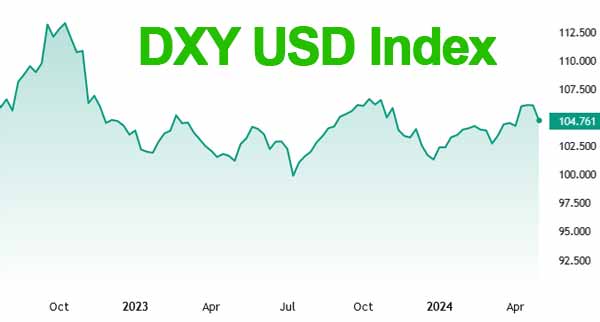 Dxy Trades Above Support
May 18 2024
By Ashly Chole
Dxy Trades Above Support
May 18 2024
By Ashly Chole
-
 Dollar At Two Week Lows
May 17 2024
By Ashly Chole
Dollar At Two Week Lows
May 17 2024
By Ashly Chole
-
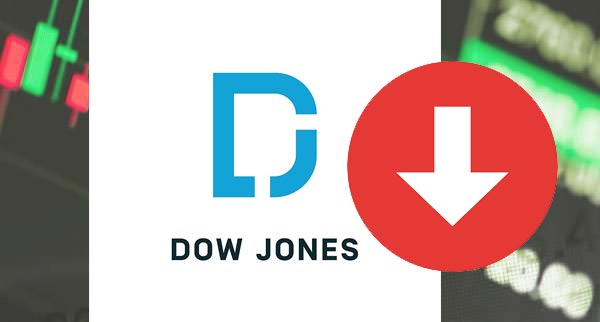 Djia Ended The Week In Red
May 17 2024
By Adam Rosen
Djia Ended The Week In Red
May 17 2024
By Adam Rosen
-
 Copper Prices Touch 14 Month Highs
May 16 2024
By Andrew Blumer
Copper Prices Touch 14 Month Highs
May 16 2024
By Andrew Blumer
-
 Chinese Manufacturing Pmi Jumps
May 16 2024
By Emily Clark
Chinese Manufacturing Pmi Jumps
May 16 2024
By Emily Clark
-
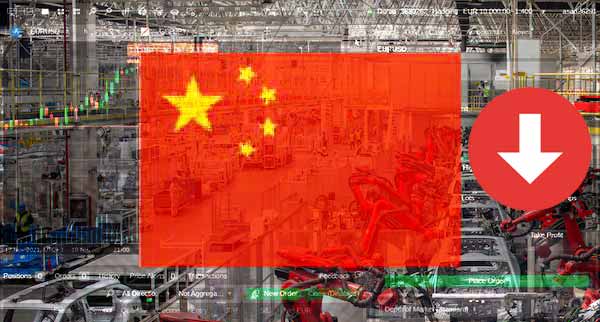 China Industrial Profits Down During Q1
May 15 2024
By Ashly Chole
China Industrial Profits Down During Q1
May 15 2024
By Ashly Chole
-
 Canadian Inflation In February Eased
May 15 2024
By Andrew Blumer
Canadian Inflation In February Eased
May 15 2024
By Andrew Blumer
-
 Cad Gains Ground Post Nfp
May 14 2024
By Emily Clark
Cad Gains Ground Post Nfp
May 14 2024
By Emily Clark
-
 Cad On Backfoot Against Usd
May 14 2024
By Ashly Chole
Cad On Backfoot Against Usd
May 14 2024
By Ashly Chole
-
 Btc To Touch 170k Price Level
May 13 2024
By Ashly Chole
Btc To Touch 170k Price Level
May 13 2024
By Ashly Chole
-
 Btc To Go Higher After Halving Event
May 13 2024
By Emily Clark
Btc To Go Higher After Halving Event
May 13 2024
By Emily Clark
-
 Boj Thinks About Ending Negative Rates
May 12 2024
By Emily Clark
Boj Thinks About Ending Negative Rates
May 12 2024
By Emily Clark
-
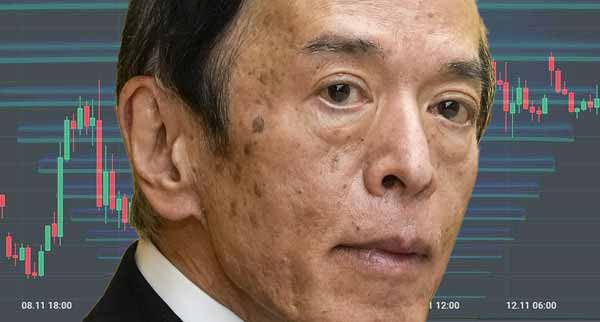 Boj Ueda Hints At Further Rate Hikes
May 12 2024
By Andrew Blumer
Boj Ueda Hints At Further Rate Hikes
May 12 2024
By Andrew Blumer
-
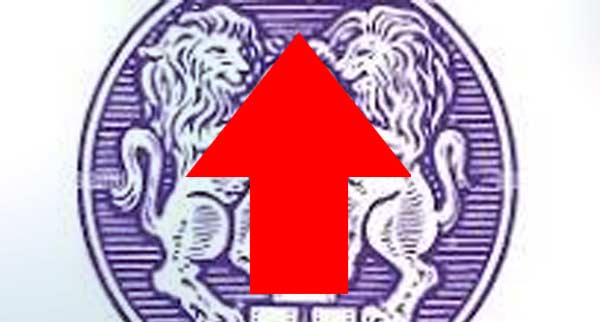 Boj Rate Hike Signal Sends Yields Higher
May 11 2024
By Ashly Chole
Boj Rate Hike Signal Sends Yields Higher
May 11 2024
By Ashly Chole
-
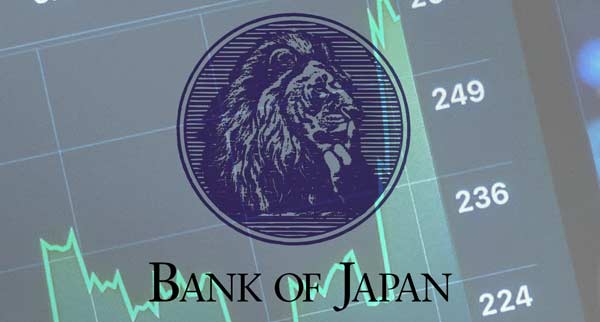 Boj Offers Dovish View On Economy
May 11 2024
By Emily Clark
Boj Offers Dovish View On Economy
May 11 2024
By Emily Clark
-
 Bitcoin Trades Below Resistance
May 10 2024
By Andrew Blumer
Bitcoin Trades Below Resistance
May 10 2024
By Andrew Blumer
-
 Boa Sets A New Eps Target
May 10 2024
By Adam Rosen
Boa Sets A New Eps Target
May 10 2024
By Adam Rosen
-
 Bitcoin Tags Resistance Level On Optimism
May 09 2024
By Emily Clark
Bitcoin Tags Resistance Level On Optimism
May 09 2024
By Emily Clark
-
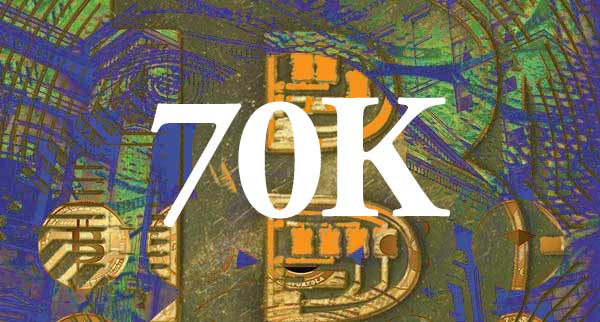 Bitcoin Tests 70k Threshold
May 09 2024
By Emily Clark
Bitcoin Tests 70k Threshold
May 09 2024
By Emily Clark
-
 Bitcoin Drops On Interest Rate Jitters
May 08 2024
By Andrew Blumer
Bitcoin Drops On Interest Rate Jitters
May 08 2024
By Andrew Blumer
-
 Australian Trade Balance Shrinks
May 08 2024
By Emily Clark
Australian Trade Balance Shrinks
May 08 2024
By Emily Clark
-
 Australian Dollar Trades Positively
May 07 2024
By Ashly Chole
Australian Dollar Trades Positively
May 07 2024
By Ashly Chole
-
 Australia Retail Sales Decline
May 07 2024
By Ashly Chole
Australia Retail Sales Decline
May 07 2024
By Ashly Chole
-
 Australia Jobless Rate Dips
May 06 2024
By Ashly Chole
Australia Jobless Rate Dips
May 06 2024
By Ashly Chole
-
 Audusd Looks Upward On Upbeat Chinese Data
May 06 2024
By Emily Clark
Audusd Looks Upward On Upbeat Chinese Data
May 06 2024
By Emily Clark
-
 Audjpy Trades On Fears Of Fx Intervention
May 05 2024
By Emily Clark
Audjpy Trades On Fears Of Fx Intervention
May 05 2024
By Emily Clark
-
 Audusd Closes Green On Us Core Pce Surprise
May 05 2024
By Emily Clark
Audusd Closes Green On Us Core Pce Surprise
May 05 2024
By Emily Clark
-
 Anz Consumer Confidence Drops
May 04 2024
By Andrew Blumer
Anz Consumer Confidence Drops
May 04 2024
By Andrew Blumer
-
 Asian Stocks Decline On Tech Slide
May 04 2024
By Emily Clark
Asian Stocks Decline On Tech Slide
May 04 2024
By Emily Clark
-
 Aud Consolidates Above Support
May 03 2024
By Emily Clark
Aud Consolidates Above Support
May 03 2024
By Emily Clark
-
 Audusd Drops On Neutral Guidance
May 03 2024
By Emily Clark
Audusd Drops On Neutral Guidance
May 03 2024
By Emily Clark
-
 Asx 200 Closes The Week In Red
May 02 2024
By Adam Rosen
Asx 200 Closes The Week In Red
May 02 2024
By Adam Rosen
-
 Asx Closes On Rate Cuts Forecast
May 02 2024
By Ashly Chole
Asx Closes On Rate Cuts Forecast
May 02 2024
By Ashly Chole
-
 Asian Currencies Surge On Fed Rate Cut Signals
May 01 2024
By Ashly Chole
Asian Currencies Surge On Fed Rate Cut Signals
May 01 2024
By Ashly Chole
-
 Asian Spot Lng Climbs To Weekly Highs
May 01 2024
By Adam Rosen
Asian Spot Lng Climbs To Weekly Highs
May 01 2024
By Adam Rosen
-
 Amd Down As Fed Rate Cut Stalls
Apr 30 2024
By Ashly Chole
Amd Down As Fed Rate Cut Stalls
Apr 30 2024
By Ashly Chole
-
 Asian Currencies Remain Muted
Apr 30 2024
By Ashly Chole
Asian Currencies Remain Muted
Apr 30 2024
By Ashly Chole
-
 Aapl Stock Down This Year
Apr 30 2024
By Emily Clark
Aapl Stock Down This Year
Apr 30 2024
By Emily Clark
-
 Adidas Posts Its First Loss In Three Decades
Apr 30 2024
By Adam Rosen
Adidas Posts Its First Loss In Three Decades
Apr 30 2024
By Adam Rosen
-
 Gbpusd Await Bailey Testimony
Mar 09 2024
By Andrew Blumer
Gbpusd Await Bailey Testimony
Mar 09 2024
By Andrew Blumer
-
 Fed Williams Hint At Rate Cuts
Mar 09 2024
By Adam Rosen
Fed Williams Hint At Rate Cuts
Mar 09 2024
By Adam Rosen
-
 Eurusd Strong On Thin Volumes
Mar 08 2024
By Ashly Chole
Eurusd Strong On Thin Volumes
Mar 08 2024
By Ashly Chole
-
 Eurusd Trades High On Us Data
Mar 08 2024
By Ashly Chole
Eurusd Trades High On Us Data
Mar 08 2024
By Ashly Chole
-
 Euro To Jump Higher Says Commerzbank
Mar 07 2024
By Adam Rosen
Euro To Jump Higher Says Commerzbank
Mar 07 2024
By Adam Rosen
-
 Eurusd Steady Post Eu Gdp
Mar 07 2024
By Emily Clark
Eurusd Steady Post Eu Gdp
Mar 07 2024
By Emily Clark
-
 Eurgbp Weak On Boe Comments
Mar 06 2024
By Emily Clark
Eurgbp Weak On Boe Comments
Mar 06 2024
By Emily Clark
-
 Eurgbp Reclaims Resistance
Mar 06 2024
By Adam Rosen
Eurgbp Reclaims Resistance
Mar 06 2024
By Adam Rosen
-
 Dollar Index First Weekly Fall
Mar 05 2024
By Andrew Blumer
Dollar Index First Weekly Fall
Mar 05 2024
By Andrew Blumer
-
 Citi Hints At Sp 500 Upside
Mar 05 2024
By Emily Clark
Citi Hints At Sp 500 Upside
Mar 05 2024
By Emily Clark
-
 Bitcoin Jumps Improved Etf Inflows
Mar 04 2024
By Adam Rosen
Bitcoin Jumps Improved Etf Inflows
Mar 04 2024
By Adam Rosen
-
 Bnb Bulls Remain Strong
Mar 04 2024
By Ashly Chole
Bnb Bulls Remain Strong
Mar 04 2024
By Ashly Chole
-
 Audusd Moves On Trade Optimism
Mar 03 2024
By Ashly Chole
Audusd Moves On Trade Optimism
Mar 03 2024
By Ashly Chole
-
 Audusd Lacks Direction
Mar 03 2024
By Emily Clark
Audusd Lacks Direction
Mar 03 2024
By Emily Clark
-
 Audjpy Trades Strong On High Rates
Mar 02 2024
By Adam Rosen
Audjpy Trades Strong On High Rates
Mar 02 2024
By Adam Rosen
-
 Aud And Nzd To Appreciate
Mar 02 2024
By Emily Clark
Aud And Nzd To Appreciate
Mar 02 2024
By Emily Clark
-
 Pound Sterling Down After Upbeat Nfp
Mar 01 2024
By Ashly Chole
Pound Sterling Down After Upbeat Nfp
Mar 01 2024
By Ashly Chole
-
 Oil Prices Under Pressure
Mar 01 2024
By Emily Clark
Oil Prices Under Pressure
Mar 01 2024
By Emily Clark
-
 Oil Down As China Economy Falters
Feb 29 2024
By Adam Rosen
Oil Down As China Economy Falters
Feb 29 2024
By Adam Rosen
-
 Nokia 4th Quarter Profit Higher
Feb 29 2024
By Andrew Blumer
Nokia 4th Quarter Profit Higher
Feb 29 2024
By Andrew Blumer
-
 Natural Gas Above Support
Feb 26 2024
By Emily Clark
Natural Gas Above Support
Feb 26 2024
By Emily Clark
-
 Microsoft Shares Down
Feb 26 2024
By Adam Rosen
Microsoft Shares Down
Feb 26 2024
By Adam Rosen
-
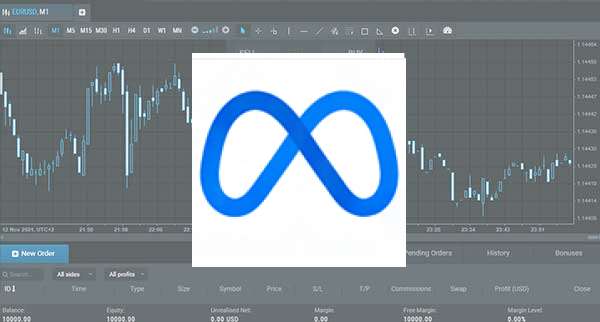 Meta Gains After Revising Q1 Guidance
Feb 25 2024
By Ashly Chole
Meta Gains After Revising Q1 Guidance
Feb 25 2024
By Ashly Chole
-
 Mexico Headline Inflation Higher In January
Feb 25 2024
By Andrew Blumer
Mexico Headline Inflation Higher In January
Feb 25 2024
By Andrew Blumer
-
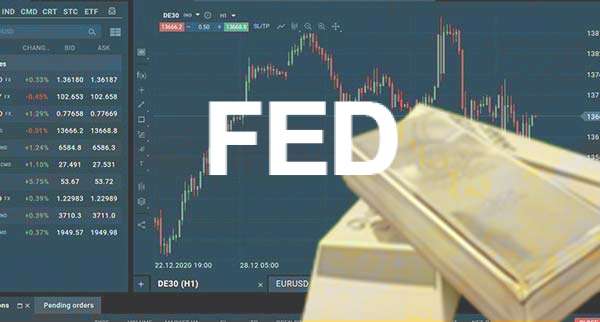 Gold Under Pressure As Fed Backs Away
Feb 24 2024
By Ashly Chole
Gold Under Pressure As Fed Backs Away
Feb 24 2024
By Ashly Chole
-
 Indonesia Gdp Growth Drops
Feb 24 2024
By Ashly Chole
Indonesia Gdp Growth Drops
Feb 24 2024
By Ashly Chole
-
 Germany Inflation In January Down
Feb 23 2024
By Andrew Blumer
Germany Inflation In January Down
Feb 23 2024
By Andrew Blumer
-
 Gold Prices Drop On No Rate Cuts
Feb 23 2024
By Andrew Blumer
Gold Prices Drop On No Rate Cuts
Feb 23 2024
By Andrew Blumer
-
 Germany Economy To Face Recession
Feb 22 2024
By Emily Clark
Germany Economy To Face Recession
Feb 22 2024
By Emily Clark
-
 Exxon Mobil Earned Profit In 2023
Feb 22 2024
By Emily Clark
Exxon Mobil Earned Profit In 2023
Feb 22 2024
By Emily Clark
-
 Gbpusd Trades With Bullish Bias
Feb 21 2024
By Emily Clark
Gbpusd Trades With Bullish Bias
Feb 21 2024
By Emily Clark
-
 Gbpusd Stable Amid Boe Decision
Feb 20 2024
By Emily Clark
Gbpusd Stable Amid Boe Decision
Feb 20 2024
By Emily Clark
-
 Eurusd To Move Higher In 2024
Feb 19 2024
By Adam Rosen
Eurusd To Move Higher In 2024
Feb 19 2024
By Adam Rosen
-
 Eurusd Marches Upward
Feb 18 2024
By Adam Rosen
Eurusd Marches Upward
Feb 18 2024
By Adam Rosen
-
 Eurusd Moves Ahead Of Ecb Meeting
Feb 18 2024
By Adam Rosen
Eurusd Moves Ahead Of Ecb Meeting
Feb 18 2024
By Adam Rosen
-
 Eurusd Declines As Usd Shows Strength
Feb 17 2024
By Emily Clark
Eurusd Declines As Usd Shows Strength
Feb 17 2024
By Emily Clark
-
 Eurusd Drops On Strong Nfp Report
Feb 17 2024
By Adam Rosen
Eurusd Drops On Strong Nfp Report
Feb 17 2024
By Adam Rosen
-
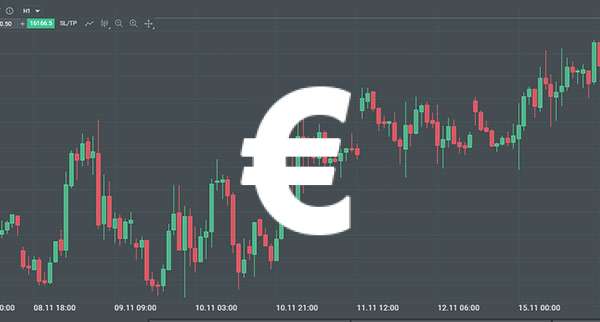 Euro Zone Remains In Contraction
Feb 16 2024
By Ashly Chole
Euro Zone Remains In Contraction
Feb 16 2024
By Ashly Chole
-
 Eurgbp Mildly Bullish
Feb 16 2024
By Andrew Blumer
Eurgbp Mildly Bullish
Feb 16 2024
By Andrew Blumer
-
 Dollar Remains Strong
Feb 15 2024
By Adam Rosen
Dollar Remains Strong
Feb 15 2024
By Adam Rosen
-
 Dow Futures Remains Steady
Feb 15 2024
By Adam Rosen
Dow Futures Remains Steady
Feb 15 2024
By Adam Rosen
-
 Cbsl Keeps Interest Rate Steady
Feb 14 2024
By Adam Rosen
Cbsl Keeps Interest Rate Steady
Feb 14 2024
By Adam Rosen
-
 Commerzbank Hints At Stronger Gbp
Feb 14 2024
By Adam Rosen
Commerzbank Hints At Stronger Gbp
Feb 14 2024
By Adam Rosen
-
 Australian Retail Sales Up
Feb 13 2024
By Ashly Chole
Australian Retail Sales Up
Feb 13 2024
By Ashly Chole
-
 Boe Announces Review Of Interest Rate
Feb 13 2024
By Emily Clark
Boe Announces Review Of Interest Rate
Feb 13 2024
By Emily Clark
-
 Audusd Down As Traders Await Rba
Feb 12 2024
By Adam Rosen
Audusd Down As Traders Await Rba
Feb 12 2024
By Adam Rosen
-
 Audusd Dives On Sour Market Mood
Feb 12 2024
By Emily Clark
Audusd Dives On Sour Market Mood
Feb 12 2024
By Emily Clark
-
 Audnzd Holds On To Gains
Feb 11 2024
By Emily Clark
Audnzd Holds On To Gains
Feb 11 2024
By Emily Clark
-
 Audjpy Recovers From Monthly Lows
Feb 11 2024
By Ashly Chole
Audjpy Recovers From Monthly Lows
Feb 11 2024
By Ashly Chole
-
 Asian Stocks Rejoice On China Stimulus
Feb 10 2024
By Emily Clark
Asian Stocks Rejoice On China Stimulus
Feb 10 2024
By Emily Clark
-
 Apple Stock Down As China Shipment Declines
Feb 10 2024
By Adam Rosen
Apple Stock Down As China Shipment Declines
Feb 10 2024
By Adam Rosen
-
 Adp Data Shows Weak Growth
Feb 09 2024
By Adam Rosen
Adp Data Shows Weak Growth
Feb 09 2024
By Adam Rosen
-
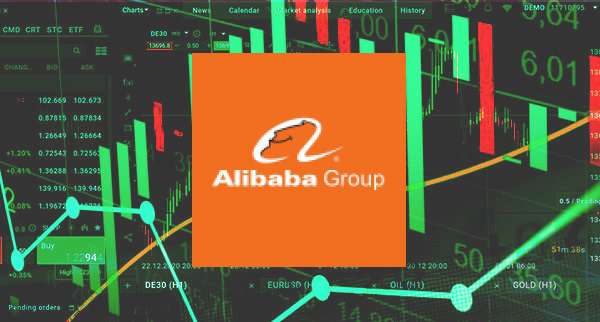 Alibaba Gains Upside
Feb 09 2024
By Adam Rosen
Alibaba Gains Upside
Feb 09 2024
By Adam Rosen
-
 Wells Fargo Forecasts Rate Cut By Fed Next Year
Feb 08 2024
By Andrew Blumer
Wells Fargo Forecasts Rate Cut By Fed Next Year
Feb 08 2024
By Andrew Blumer
-
 Wti Bullish Streak At Risk As It Trades Near Support
Feb 08 2024
By Andrew Blumer
Wti Bullish Streak At Risk As It Trades Near Support
Feb 08 2024
By Andrew Blumer
-
 Usdjpy Moves Lower Post Nfp Release
Feb 07 2024
By Andrew Blumer
Usdjpy Moves Lower Post Nfp Release
Feb 07 2024
By Andrew Blumer
-
 Usdchf Trades Above Support
Feb 07 2024
By Ashly Chole
Usdchf Trades Above Support
Feb 07 2024
By Ashly Chole
-
 Us Trade Deficit Down In November
Feb 06 2024
By Ashly Chole
Us Trade Deficit Down In November
Feb 06 2024
By Ashly Chole
-
 Usdcad Climbs Higher
Feb 06 2024
By Ashly Chole
Usdcad Climbs Higher
Feb 06 2024
By Ashly Chole
-
 Us Dollar To Show Weakness In 2024
Feb 05 2024
By Andrew Blumer
Us Dollar To Show Weakness In 2024
Feb 05 2024
By Andrew Blumer
-
 Us Job Openings Reached Lowest Level
Feb 05 2024
By Ashly Chole
Us Job Openings Reached Lowest Level
Feb 05 2024
By Ashly Chole
-
 Usdmxn Trades With Bearish Bias
Feb 04 2024
By Andrew Blumer
Usdmxn Trades With Bearish Bias
Feb 04 2024
By Andrew Blumer
-
 Us Dollar In Demand Amid Upcoming Inflation Data
Feb 04 2024
By Ashly Chole
Us Dollar In Demand Amid Upcoming Inflation Data
Feb 04 2024
By Ashly Chole
-
 Usdmxn Trades With A Downward Bias
Feb 03 2024
By Adam Rosen
Usdmxn Trades With A Downward Bias
Feb 03 2024
By Adam Rosen
-
 Usdmxn Maintains A Neutral Stance
Feb 03 2024
By Ashly Chole
Usdmxn Maintains A Neutral Stance
Feb 03 2024
By Ashly Chole
-
 Usdkrw Best Asian Currency During Q4
Feb 02 2024
By Andrew Blumer
Usdkrw Best Asian Currency During Q4
Feb 02 2024
By Andrew Blumer
-
 Usdjpy Closes The Week With Loss
Feb 02 2024
By Andrew Blumer
Usdjpy Closes The Week With Loss
Feb 02 2024
By Andrew Blumer
-
 Tokyo Cpi Inflation Jumped In December
Feb 01 2024
By Andrew Blumer
Tokyo Cpi Inflation Jumped In December
Feb 01 2024
By Andrew Blumer
-
 Spot Bitcoin Etf Close To Approval
Feb 01 2024
By Ashly Chole
Spot Bitcoin Etf Close To Approval
Feb 01 2024
By Ashly Chole
-
 Sp 500 And Dow Jones Show Weakness
Jan 31 2024
By Andrew Blumer
Sp 500 And Dow Jones Show Weakness
Jan 31 2024
By Andrew Blumer
-
 Sec Approves The First Bitcoin Etf
Jan 31 2024
By Adam Rosen
Sec Approves The First Bitcoin Etf
Jan 31 2024
By Adam Rosen
-
 Oil Prices Will Remain Volatile
Jan 30 2024
By Ashly Chole
Oil Prices Will Remain Volatile
Jan 30 2024
By Ashly Chole
-
 Ripple Plans To Buy Back Shares
Jan 30 2024
By Emily Clark
Ripple Plans To Buy Back Shares
Jan 30 2024
By Emily Clark
-
 Oil Prices Start The Year In Red
Jan 29 2024
By Adam Rosen
Oil Prices Start The Year In Red
Jan 29 2024
By Adam Rosen
-
 Oil Dow As Saudi Arabia Makes Price Cuts
Jan 29 2024
By Andrew Blumer
Oil Dow As Saudi Arabia Makes Price Cuts
Jan 29 2024
By Andrew Blumer
-
 Oil Moves Higher Before Weekly Eia Data
Jan 28 2024
By Adam Rosen
Oil Moves Higher Before Weekly Eia Data
Jan 28 2024
By Adam Rosen
-
 Nzdusd Trades Higher Amid Less Aggressive Fed
Jan 27 2024
By Ashly Chole
Nzdusd Trades Higher Amid Less Aggressive Fed
Jan 27 2024
By Ashly Chole
-
 Mexico Peso Bullish Rally To Lose Steam
Jan 26 2024
By Adam Rosen
Mexico Peso Bullish Rally To Lose Steam
Jan 26 2024
By Adam Rosen
-
 Nikkei 225 Index Down As Major Sectors Turn Red
Jan 26 2024
By Ashly Chole
Nikkei 225 Index Down As Major Sectors Turn Red
Jan 26 2024
By Ashly Chole
-
 Japanese Stocks At Multi Year High
Jan 25 2024
By Adam Rosen
Japanese Stocks At Multi Year High
Jan 25 2024
By Adam Rosen
-
 Japan Services Pmi For December Jumped
Jan 25 2024
By Adam Rosen
Japan Services Pmi For December Jumped
Jan 25 2024
By Adam Rosen
-
 Gold Trades Under Key Level
Jan 24 2024
By Emily Clark
Gold Trades Under Key Level
Jan 24 2024
By Emily Clark
-
 Ism Manufacturing Index Shows Recovery Signs
Jan 24 2024
By Ashly Chole
Ism Manufacturing Index Shows Recovery Signs
Jan 24 2024
By Ashly Chole
-
 Germany Inflation Go Higher In December
Jan 23 2024
By Andrew Blumer
Germany Inflation Go Higher In December
Jan 23 2024
By Andrew Blumer
-
 Gbpusd Sellers Need To Cross Support
Jan 23 2024
By Andrew Blumer
Gbpusd Sellers Need To Cross Support
Jan 23 2024
By Andrew Blumer
-
 Gbpusd Reclaims The Resistance
Jan 22 2024
By Ashly Chole
Gbpusd Reclaims The Resistance
Jan 22 2024
By Ashly Chole
-
 Eurusd Remains Negative
Jan 22 2024
By Andrew Blumer
Eurusd Remains Negative
Jan 22 2024
By Andrew Blumer
-
 Eurgbp Turns Lower
Jan 21 2024
By Emily Clark
Eurgbp Turns Lower
Jan 21 2024
By Emily Clark
-
 Eurusd Close To Resistance After Ism
Jan 21 2024
By Adam Rosen
Eurusd Close To Resistance After Ism
Jan 21 2024
By Adam Rosen
-
 Eurgbp Trades Lower On Weak Sentiment
Jan 20 2024
By Andrew Blumer
Eurgbp Trades Lower On Weak Sentiment
Jan 20 2024
By Andrew Blumer
-
 Ethereum To Target 3k Level
Jan 20 2024
By Andrew Blumer
Ethereum To Target 3k Level
Jan 20 2024
By Andrew Blumer
-
 Chinese Yuan Shows Weakness
Jan 19 2024
By Andrew Blumer
Chinese Yuan Shows Weakness
Jan 19 2024
By Andrew Blumer
-
 Chinese Yuan Weakens Against Greenback
Jan 19 2024
By Andrew Blumer
Chinese Yuan Weakens Against Greenback
Jan 19 2024
By Andrew Blumer
-
 Canadian Dollar Trades Lower
Jan 18 2024
By Adam Rosen
Canadian Dollar Trades Lower
Jan 18 2024
By Adam Rosen
-
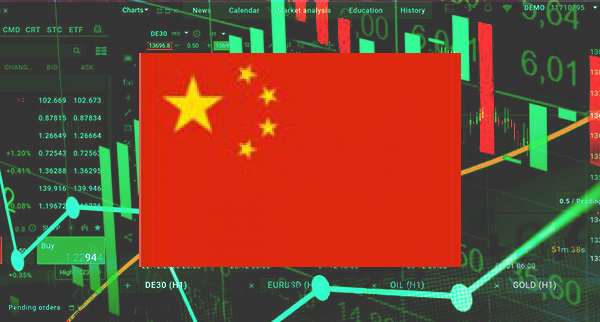 China Services Pmi Turn Higher In December
Jan 18 2024
By Emily Clark
China Services Pmi Turn Higher In December
Jan 18 2024
By Emily Clark
-
 Canada Job Growth Remains Flat In December
Jan 17 2024
By Andrew Blumer
Canada Job Growth Remains Flat In December
Jan 17 2024
By Andrew Blumer
-
 Boeing Shares Down After Groundings Of Jets
Jan 17 2024
By Ashly Chole
Boeing Shares Down After Groundings Of Jets
Jan 17 2024
By Ashly Chole
-
 Bank Of Korea Maintains Interest Rate
Jan 16 2024
By Andrew Blumer
Bank Of Korea Maintains Interest Rate
Jan 16 2024
By Andrew Blumer
-
 Australian Cpi Reading Shows A Drop
Jan 16 2024
By Emily Clark
Australian Cpi Reading Shows A Drop
Jan 16 2024
By Emily Clark
-
 Australia Posts Trade Surplus In November
Jan 15 2024
By Adam Rosen
Australia Posts Trade Surplus In November
Jan 15 2024
By Adam Rosen
-
 Australia Retail Sales Jumps On Discounts
Jan 15 2024
By Ashly Chole
Australia Retail Sales Jumps On Discounts
Jan 15 2024
By Ashly Chole
-
 Audusd Strong On Mixed Us Data
Jan 14 2024
By Adam Rosen
Audusd Strong On Mixed Us Data
Jan 14 2024
By Adam Rosen
-
 Asian Stocks Gain Ground Ahead Of Cpi
Jan 14 2024
By Ashly Chole
Asian Stocks Gain Ground Ahead Of Cpi
Jan 14 2024
By Ashly Chole
-
 Asian Currencies Under Pressure
Jan 13 2024
By Emily Clark
Asian Currencies Under Pressure
Jan 13 2024
By Emily Clark
-
 Argentina Secures Imf Funding Deal
Jan 13 2024
By Andrew Blumer
Argentina Secures Imf Funding Deal
Jan 13 2024
By Andrew Blumer
-
 Apple Stock Down On Poor Sales
Jan 12 2024
By Ashly Chole
Apple Stock Down On Poor Sales
Jan 12 2024
By Ashly Chole
-
 Argentina Inflation For December Made New Record
Jan 12 2024
By Adam Rosen
Argentina Inflation For December Made New Record
Jan 12 2024
By Adam Rosen
-
 Usdinr Turns Negative As Us Pmi Looms
Jan 11 2024
By Ashly Chole
Usdinr Turns Negative As Us Pmi Looms
Jan 11 2024
By Ashly Chole
-
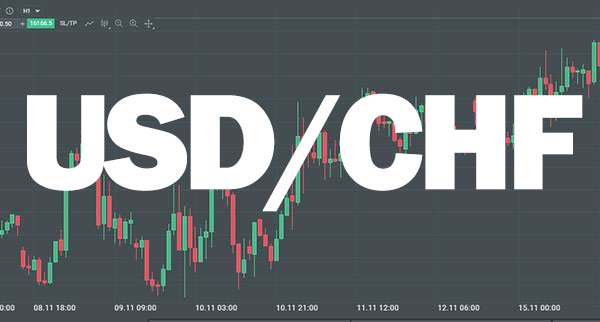 Usdchf Drops As Snb Keeps Rates Unchanged
Jan 11 2024
By Emily Clark
Usdchf Drops As Snb Keeps Rates Unchanged
Jan 11 2024
By Emily Clark
-
 Usdcad To Move Higher In The Next Few Quarters
Jan 10 2024
By Adam Rosen
Usdcad To Move Higher In The Next Few Quarters
Jan 10 2024
By Adam Rosen
-
 Usd Index To Experience More Losses
Jan 10 2024
By Ashly Chole
Usd Index To Experience More Losses
Jan 10 2024
By Ashly Chole
-
 Usa New Vehicle Sales To Increase In 2024
Jan 09 2024
By Emily Clark
Usa New Vehicle Sales To Increase In 2024
Jan 09 2024
By Emily Clark
-
 Us Manufacturing Sector Grew In November
Jan 09 2024
By Emily Clark
Us Manufacturing Sector Grew In November
Jan 09 2024
By Emily Clark
-
 Us Dollar Closes Its Worst Week After Fed Comments
Jan 08 2024
By Adam Rosen
Us Dollar Closes Its Worst Week After Fed Comments
Jan 08 2024
By Adam Rosen
-
 Us Inflation In November Drops
Jan 08 2024
By Emily Clark
Us Inflation In November Drops
Jan 08 2024
By Emily Clark
-
 Uk Services Pmi Jumped In December
Jan 07 2024
By Emily Clark
Uk Services Pmi Jumped In December
Jan 07 2024
By Emily Clark
-
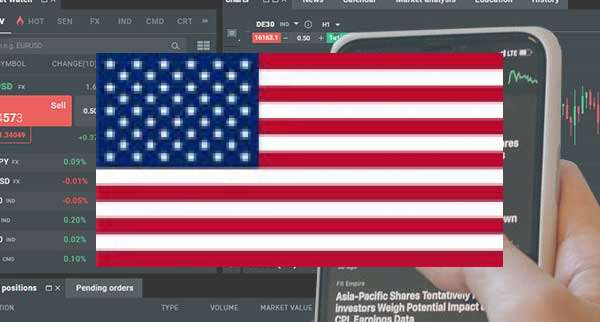 Us Business Activity Improved December
Jan 07 2024
By Emily Clark
Us Business Activity Improved December
Jan 07 2024
By Emily Clark
-
 Ubs Sets Target For Sp 500 By Year End
Jan 06 2024
By Emily Clark
Ubs Sets Target For Sp 500 By Year End
Jan 06 2024
By Emily Clark
-
 South Africa Inflation To Lower In 2024
Jan 06 2024
By Emily Clark
South Africa Inflation To Lower In 2024
Jan 06 2024
By Emily Clark
-
 Silver Drops As Us Yields Gain Traction
Jan 05 2024
By Andrew Blumer
Silver Drops As Us Yields Gain Traction
Jan 05 2024
By Andrew Blumer
-
 Solana Breaks Past Weekly Resistance
Jan 05 2024
By Emily Clark
Solana Breaks Past Weekly Resistance
Jan 05 2024
By Emily Clark
-
 Sp 500 Closes Another Week In Green
Jan 04 2024
By Emily Clark
Sp 500 Closes Another Week In Green
Jan 04 2024
By Emily Clark
-
 Saudi Arabia Inflation For November Increased
Jan 04 2024
By Andrew Blumer
Saudi Arabia Inflation For November Increased
Jan 04 2024
By Andrew Blumer
-
 Pmi Reading Shows Recession In Eurozone
Jan 03 2024
By Andrew Blumer
Pmi Reading Shows Recession In Eurozone
Jan 03 2024
By Andrew Blumer
-
 Oracle Shares Down After A Weak Second Quarter
Jan 03 2024
By Andrew Blumer
Oracle Shares Down After A Weak Second Quarter
Jan 03 2024
By Andrew Blumer
-
 Oil Prices Dropped On Friday
Jan 02 2024
By Ashly Chole
Oil Prices Dropped On Friday
Jan 02 2024
By Ashly Chole
-
 Oil Prices Drop After Release Of Us Inflation Data
Jan 02 2024
By Andrew Blumer
Oil Prices Drop After Release Of Us Inflation Data
Jan 02 2024
By Andrew Blumer
-
 Nzdusd Likely To Retest Multi Month Highs
Jan 01 2024
By Emily Clark
Nzdusd Likely To Retest Multi Month Highs
Jan 01 2024
By Emily Clark
-
 Nzdusd Will Turn Bullish According To Uob
Jan 01 2024
By Adam Rosen
Nzdusd Will Turn Bullish According To Uob
Jan 01 2024
By Adam Rosen
-
 Nfp November Report Shows Positive Surprise
Dec 31 2023
By Emily Clark
Nfp November Report Shows Positive Surprise
Dec 31 2023
By Emily Clark
-
 Indonesia Posts Billion Trade Surplus In November
Dec 31 2023
By Emily Clark
Indonesia Posts Billion Trade Surplus In November
Dec 31 2023
By Emily Clark
-
 Gold Prices Cross Resistance Amid A Dovish Fed
Dec 30 2023
By Adam Rosen
Gold Prices Cross Resistance Amid A Dovish Fed
Dec 30 2023
By Adam Rosen
-
 Gold To Target Next Resistance
Dec 30 2023
By Adam Rosen
Gold To Target Next Resistance
Dec 30 2023
By Adam Rosen
-
 Gbpusd Turns Bearish Due To Risk Off
Dec 29 2023
By Andrew Blumer
Gbpusd Turns Bearish Due To Risk Off
Dec 29 2023
By Andrew Blumer
-
 Gbpusd Slides As Us Dollar Gains Strength
Dec 29 2023
By Adam Rosen
Gbpusd Slides As Us Dollar Gains Strength
Dec 29 2023
By Adam Rosen
-
 European Shares Close Another Week In Green
Dec 28 2023
By Andrew Blumer
European Shares Close Another Week In Green
Dec 28 2023
By Andrew Blumer
-
 Ethereum Close To Resistance Level
Dec 28 2023
By Andrew Blumer
Ethereum Close To Resistance Level
Dec 28 2023
By Andrew Blumer
-
 Eurusd Will Not Retest Resistance Anytime Soon
Dec 27 2023
By Andrew Blumer
Eurusd Will Not Retest Resistance Anytime Soon
Dec 27 2023
By Andrew Blumer
-
 Eurusd Remains Vulnerable Under Resistance
Dec 27 2023
By Emily Clark
Eurusd Remains Vulnerable Under Resistance
Dec 27 2023
By Emily Clark
-
 Eurjpy Tests The Support
Dec 26 2023
By Ashly Chole
Eurjpy Tests The Support
Dec 26 2023
By Ashly Chole
-
 Eurgbp To Move Higher
Dec 26 2023
By Adam Rosen
Eurgbp To Move Higher
Dec 26 2023
By Adam Rosen
-
 Costco Gains As Q1 Results Beat Estimates
Dec 25 2023
By Emily Clark
Costco Gains As Q1 Results Beat Estimates
Dec 25 2023
By Emily Clark
-
 China Industrial Production Up In November
Dec 25 2023
By Adam Rosen
China Industrial Production Up In November
Dec 25 2023
By Adam Rosen
-
 Brent Oil To Advance In 2024
Dec 24 2023
By Ashly Chole
Brent Oil To Advance In 2024
Dec 24 2023
By Ashly Chole
-
 Bitcoin Touches Resistance Amid A Dovish Fed
Dec 24 2023
By Adam Rosen
Bitcoin Touches Resistance Amid A Dovish Fed
Dec 24 2023
By Adam Rosen
-
 Bitcoin Touched Resistance After Us Cpi Release
Dec 23 2023
By Emily Clark
Bitcoin Touched Resistance After Us Cpi Release
Dec 23 2023
By Emily Clark
-
 Bitcoin Stands Ready To Reclaim Resistance
Dec 23 2023
By Andrew Blumer
Bitcoin Stands Ready To Reclaim Resistance
Dec 23 2023
By Andrew Blumer
-
 Bank Of Portugal Sets Lower Growth Forecast
Dec 22 2023
By Emily Clark
Bank Of Portugal Sets Lower Growth Forecast
Dec 22 2023
By Emily Clark
-
 Bank Of Italy Lowers Growth Forecast For 2024
Dec 22 2023
By Adam Rosen
Bank Of Italy Lowers Growth Forecast For 2024
Dec 22 2023
By Adam Rosen
-
 Australia Added More Jobs In November
Dec 21 2023
By Emily Clark
Australia Added More Jobs In November
Dec 21 2023
By Emily Clark
-
 Apecoin To Stage A Bullish Rally
Dec 21 2023
By Andrew Blumer
Apecoin To Stage A Bullish Rally
Dec 21 2023
By Andrew Blumer
-
 Audusd Trades Lower Amid A Rise In Us Bond Yields
Dec 20 2023
By Adam Rosen
Audusd Trades Lower Amid A Rise In Us Bond Yields
Dec 20 2023
By Adam Rosen
-
 A Higher Chance Of Soft Economic Landing
Dec 20 2023
By Ashly Chole
A Higher Chance Of Soft Economic Landing
Dec 20 2023
By Ashly Chole
-
 Usdjpy To Trade In Tight Range
Dec 19 2023
By Adam Rosen
Usdjpy To Trade In Tight Range
Dec 19 2023
By Adam Rosen
-
 Usdjpy To Stay Bullish In Next 6 Months
Dec 19 2023
By Andrew Blumer
Usdjpy To Stay Bullish In Next 6 Months
Dec 19 2023
By Andrew Blumer
-
 Usdjpy Remains Weak As Us Demand Fades
Dec 18 2023
By Adam Rosen
Usdjpy Remains Weak As Us Demand Fades
Dec 18 2023
By Adam Rosen
-
 Usdjpy Sinks As Market Eyes Us Housing Data
Dec 18 2023
By Emily Clark
Usdjpy Sinks As Market Eyes Us Housing Data
Dec 18 2023
By Emily Clark
-
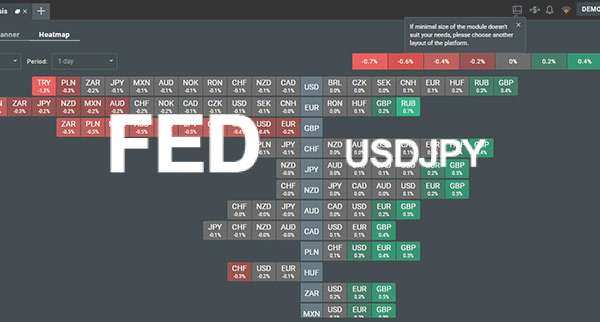 Usdjpy Close To Yearly High After Fed Comments
Dec 17 2023
By Adam Rosen
Usdjpy Close To Yearly High After Fed Comments
Dec 17 2023
By Adam Rosen
-
 Usdjpy Crosses Resistance Ahead Of Us Retail Sales
Dec 17 2023
By Adam Rosen
Usdjpy Crosses Resistance Ahead Of Us Retail Sales
Dec 17 2023
By Adam Rosen
-
 Usdcnh Faces Risk Of Pullback
Dec 16 2023
By Ashly Chole
Usdcnh Faces Risk Of Pullback
Dec 16 2023
By Ashly Chole
-
 Usdchf Will Likely Recover
Dec 16 2023
By Emily Clark
Usdchf Will Likely Recover
Dec 16 2023
By Emily Clark
-
 Usdcad Will Trade In Choppy Range
Dec 15 2023
By Adam Rosen
Usdcad Will Trade In Choppy Range
Dec 15 2023
By Adam Rosen
-
 Usdcad Loses Steam Above The Support
Dec 15 2023
By Ashly Chole
Usdcad Loses Steam Above The Support
Dec 15 2023
By Ashly Chole
-
 Toast Shares Decline On Soft Guidance
Dec 14 2023
By Ashly Chole
Toast Shares Decline On Soft Guidance
Dec 14 2023
By Ashly Chole
-
 Us Dollar Gains Demand As Powell Speech Looms
Dec 14 2023
By Emily Clark
Us Dollar Gains Demand As Powell Speech Looms
Dec 14 2023
By Emily Clark
-
 Silver Faces A Major Descending Trend Line
Dec 13 2023
By Andrew Blumer
Silver Faces A Major Descending Trend Line
Dec 13 2023
By Andrew Blumer
-
 Singapore Q3 Gdp Growth Higher Than Forecast
Dec 13 2023
By Adam Rosen
Singapore Q3 Gdp Growth Higher Than Forecast
Dec 13 2023
By Adam Rosen
-
 Settlement Between Binance And Us Authorities
Dec 12 2023
By Emily Clark
Settlement Between Binance And Us Authorities
Dec 12 2023
By Emily Clark
-
 Oil Turns Green On Friday
Dec 12 2023
By Emily Clark
Oil Turns Green On Friday
Dec 12 2023
By Emily Clark
-
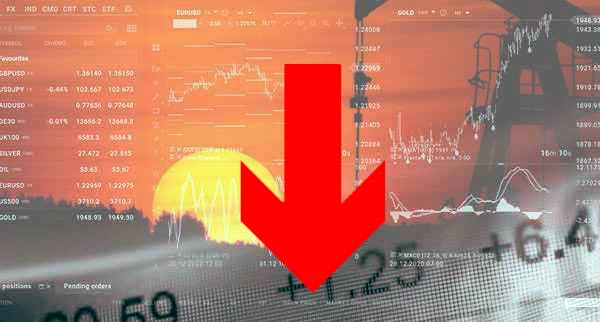 Oil Prices Drop To New Monthly Lows
Dec 11 2023
By Ashly Chole
Oil Prices Drop To New Monthly Lows
Dec 11 2023
By Ashly Chole
-
 Oil Down As Opec Meeting Looms
Dec 11 2023
By Ashly Chole
Oil Down As Opec Meeting Looms
Dec 11 2023
By Ashly Chole
-
 New Zealand Dollar Stages Rebound
Dec 10 2023
By Andrew Blumer
New Zealand Dollar Stages Rebound
Dec 10 2023
By Andrew Blumer
-
 Nerdy Stock Drops As Loss Exceeds Expectations
Dec 10 2023
By Adam Rosen
Nerdy Stock Drops As Loss Exceeds Expectations
Dec 10 2023
By Adam Rosen
-
 Nzdusd Likely To Go Higher In Short Term
Dec 09 2023
By Emily Clark
Nzdusd Likely To Go Higher In Short Term
Dec 09 2023
By Emily Clark
-
 Natural Gas Set To Close Its Worst Week
Dec 09 2023
By Adam Rosen
Natural Gas Set To Close Its Worst Week
Dec 09 2023
By Adam Rosen
-
 Microsoft Shares Turn Higher
Dec 08 2023
By Andrew Blumer
Microsoft Shares Turn Higher
Dec 08 2023
By Andrew Blumer
-
 Nzd On Backfoot After Fedspeak
Dec 08 2023
By Ashly Chole
Nzd On Backfoot After Fedspeak
Dec 08 2023
By Ashly Chole
-
 Malaysian Gdp Growth In Q3 Was Strong
Dec 07 2023
By Ashly Chole
Malaysian Gdp Growth In Q3 Was Strong
Dec 07 2023
By Ashly Chole
-
 Hp Stock Drops After Weak Guidance
Dec 07 2023
By Ashly Chole
Hp Stock Drops After Weak Guidance
Dec 07 2023
By Ashly Chole
-
 Gold Drops Under Amid Surging Us Yields
Dec 06 2023
By Andrew Blumer
Gold Drops Under Amid Surging Us Yields
Dec 06 2023
By Andrew Blumer
-
 Gold And Copper Prices Soar
Dec 06 2023
By Adam Rosen
Gold And Copper Prices Soar
Dec 06 2023
By Adam Rosen
-
 Germany Producer Prices Decline In October
Dec 05 2023
By Andrew Blumer
Germany Producer Prices Decline In October
Dec 05 2023
By Andrew Blumer
-
 Gbpusd To Challenge Support After Uk Gdp
Dec 05 2023
By Ashly Chole
Gbpusd To Challenge Support After Uk Gdp
Dec 05 2023
By Ashly Chole
-
 Gbpusd At Multi Month High
Dec 04 2023
By Ashly Chole
Gbpusd At Multi Month High
Dec 04 2023
By Ashly Chole
-
 Gbpusd Struggles As Risk Appetite Improves
Dec 04 2023
By Adam Rosen
Gbpusd Struggles As Risk Appetite Improves
Dec 04 2023
By Adam Rosen
-
 Gbpjpy Struggles To Find Direction
Dec 03 2023
By Ashly Chole
Gbpjpy Struggles To Find Direction
Dec 03 2023
By Ashly Chole
-
 Further Decline In Usdjpy
Dec 03 2023
By Andrew Blumer
Further Decline In Usdjpy
Dec 03 2023
By Andrew Blumer
-
 Eurusd Under Pressure After Mixed Us Data
Dec 02 2023
By Emily Clark
Eurusd Under Pressure After Mixed Us Data
Dec 02 2023
By Emily Clark
-
 Fed Will Not Change Rates At January Meeting
Dec 02 2023
By Emily Clark
Fed Will Not Change Rates At January Meeting
Dec 02 2023
By Emily Clark
-
 Eurusd Trades Above Support With Bullish Sentiment
Dec 01 2023
By Ashly Chole
Eurusd Trades Above Support With Bullish Sentiment
Dec 01 2023
By Ashly Chole
-
 Eurusd To Stage A Recovery
Dec 01 2023
By Andrew Blumer
Eurusd To Stage A Recovery
Dec 01 2023
By Andrew Blumer
-
 Eurjpy Finally Ends Its Losing Streak
Nov 30 2023
By Andrew Blumer
Eurjpy Finally Ends Its Losing Streak
Nov 30 2023
By Andrew Blumer
-
 Eurusd Sets Eyes On Resistance As Usd Slips
Nov 30 2023
By Emily Clark
Eurusd Sets Eyes On Resistance As Usd Slips
Nov 30 2023
By Emily Clark
-
 Ecb Member Hints Halting Rate Hikes
Nov 29 2023
By Andrew Blumer
Ecb Member Hints Halting Rate Hikes
Nov 29 2023
By Andrew Blumer
-
 Eurgbp Drops On Euro Weakness
Nov 29 2023
By Andrew Blumer
Eurgbp Drops On Euro Weakness
Nov 29 2023
By Andrew Blumer
-
 Dxy Steady As Market Mulls Fed Next Move
Nov 28 2023
By Adam Rosen
Dxy Steady As Market Mulls Fed Next Move
Nov 28 2023
By Adam Rosen
-
 Dow Futures Down After Nvidia Earnings
Nov 28 2023
By Adam Rosen
Dow Futures Down After Nvidia Earnings
Nov 28 2023
By Adam Rosen
-
 Canadian Dollar Receives A Boost
Nov 27 2023
By Adam Rosen
Canadian Dollar Receives A Boost
Nov 27 2023
By Adam Rosen
-
 Boe Interest Rate Cuts Will Pressurize Gbp
Nov 27 2023
By Emily Clark
Boe Interest Rate Cuts Will Pressurize Gbp
Nov 27 2023
By Emily Clark
-
 Asian Currencies Turn Higher
Nov 26 2023
By Ashly Chole
Asian Currencies Turn Higher
Nov 26 2023
By Ashly Chole
-
 Bnb Drop After Binance Ceo Pleads Guilty
Nov 26 2023
By Ashly Chole
Bnb Drop After Binance Ceo Pleads Guilty
Nov 26 2023
By Ashly Chole
-
 Audusd Trades Higher With Focus On Rba
Nov 25 2023
By Ashly Chole
Audusd Trades Higher With Focus On Rba
Nov 25 2023
By Ashly Chole
-
 Audusd Turns Higher Again
Nov 25 2023
By Emily Clark
Audusd Turns Higher Again
Nov 25 2023
By Emily Clark
-
 Audusd Closes The Week In Red
Nov 24 2023
By Emily Clark
Audusd Closes The Week In Red
Nov 24 2023
By Emily Clark
-
 Audusd Declines For The Fifth Day
Nov 24 2023
By Andrew Blumer
Audusd Declines For The Fifth Day
Nov 24 2023
By Andrew Blumer
-
 Usdcad Turns Lower From Yearly High
Nov 23 2023
By Andrew Blumer
Usdcad Turns Lower From Yearly High
Nov 23 2023
By Andrew Blumer
-
 Usdcad Crosses Resistance
Nov 23 2023
By Adam Rosen
Usdcad Crosses Resistance
Nov 23 2023
By Adam Rosen
-
 Us Dollar Strength Will Be Consistent This Time
Nov 22 2023
By Andrew Blumer
Us Dollar Strength Will Be Consistent This Time
Nov 22 2023
By Andrew Blumer
-
 Us Dollar On The Backfoot After Chinese Data
Nov 22 2023
By Andrew Blumer
Us Dollar On The Backfoot After Chinese Data
Nov 22 2023
By Andrew Blumer
-
 Uk September Cpi Remains Unchanged
Nov 21 2023
By Ashly Chole
Uk September Cpi Remains Unchanged
Nov 21 2023
By Ashly Chole
-
 South Korea Gdp Growth Will Be Higher
Nov 21 2023
By Ashly Chole
South Korea Gdp Growth Will Be Higher
Nov 21 2023
By Ashly Chole
-
 Shiba Inu Forecast Shows A Bullish Rally
Nov 20 2023
By Ashly Chole
Shiba Inu Forecast Shows A Bullish Rally
Nov 20 2023
By Ashly Chole
-
 Sp 500 Likely To End This Year In Loss
Nov 20 2023
By Emily Clark
Sp 500 Likely To End This Year In Loss
Nov 20 2023
By Emily Clark
-
 Russia Interest Rates Touches New High
Nov 19 2023
By Ashly Chole
Russia Interest Rates Touches New High
Nov 19 2023
By Ashly Chole
-
 Sp 500 Closes The Week In Red
Nov 19 2023
By Emily Clark
Sp 500 Closes The Week In Red
Nov 19 2023
By Emily Clark
-
 Nvidia And Amd Stock Drops
Nov 18 2023
By Emily Clark
Nvidia And Amd Stock Drops
Nov 18 2023
By Emily Clark
-
 Natural Gas Drops On Recession Risks
Nov 18 2023
By Emily Clark
Natural Gas Drops On Recession Risks
Nov 18 2023
By Emily Clark
-
 Nzdjpy Trades Beyond Support
Nov 17 2023
By Andrew Blumer
Nzdjpy Trades Beyond Support
Nov 17 2023
By Andrew Blumer
-
 Nzdusd On Bearish Pad As Markets Await Fed
Nov 17 2023
By Ashly Chole
Nzdusd On Bearish Pad As Markets Await Fed
Nov 17 2023
By Ashly Chole
-
 Morgan Stanley Lowers Price Target For Apple
Nov 16 2023
By Adam Rosen
Morgan Stanley Lowers Price Target For Apple
Nov 16 2023
By Adam Rosen
-
 Japanese Yen Gains Upper Hand Against Greenback
Nov 16 2023
By Andrew Blumer
Japanese Yen Gains Upper Hand Against Greenback
Nov 16 2023
By Andrew Blumer
-
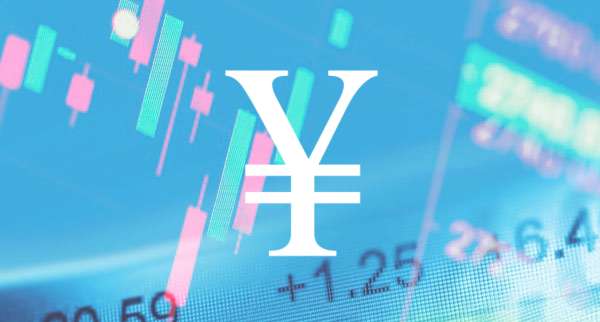 Japanese Yen Briefly Touches 150
Nov 15 2023
By Ashly Chole
Japanese Yen Briefly Touches 150
Nov 15 2023
By Ashly Chole
-
 India Inflation Target Remains Unchanged
Nov 15 2023
By Adam Rosen
India Inflation Target Remains Unchanged
Nov 15 2023
By Adam Rosen
-
 Gold Turns Higher As Recovery Picks Pace
Nov 14 2023
By Emily Clark
Gold Turns Higher As Recovery Picks Pace
Nov 14 2023
By Emily Clark
-
 Germany Inflation Reaches The Lowest Level
Nov 14 2023
By Emily Clark
Germany Inflation Reaches The Lowest Level
Nov 14 2023
By Emily Clark
-
 Gbpusd Will Likely Find Support Lower
Nov 13 2023
By Ashly Chole
Gbpusd Will Likely Find Support Lower
Nov 13 2023
By Ashly Chole
-
 German Pmi Shows Recession
Nov 13 2023
By Ashly Chole
German Pmi Shows Recession
Nov 13 2023
By Ashly Chole
-
 Gbpusd To Stay Weak
Nov 12 2023
By Ashly Chole
Gbpusd To Stay Weak
Nov 12 2023
By Ashly Chole
-
 Gbpusd Shows Weakness
Nov 12 2023
By Andrew Blumer
Gbpusd Shows Weakness
Nov 12 2023
By Andrew Blumer
-
 Eurusd Trades Higher As Greenback Struggles
Nov 11 2023
By Ashly Chole
Eurusd Trades Higher As Greenback Struggles
Nov 11 2023
By Ashly Chole
-
 Eurusd Trades Above With A Cautious Mood
Nov 11 2023
By Ashly Chole
Eurusd Trades Above With A Cautious Mood
Nov 11 2023
By Ashly Chole
-
 Eurjpy Stays In Consolidation Phase
Nov 10 2023
By Ashly Chole
Eurjpy Stays In Consolidation Phase
Nov 10 2023
By Ashly Chole
-
 Eurjpy Trades High Ahead Of Boj Meeting
Nov 10 2023
By Emily Clark
Eurjpy Trades High Ahead Of Boj Meeting
Nov 10 2023
By Emily Clark
-
 Eurjpy Crosses Important Resistance
Nov 09 2023
By Ashly Chole
Eurjpy Crosses Important Resistance
Nov 09 2023
By Ashly Chole
-
 Eurgbp Downtrend Extends
Nov 09 2023
By Emily Clark
Eurgbp Downtrend Extends
Nov 09 2023
By Emily Clark
-
 Doge Forecast Suggests Upside
Nov 08 2023
By Ashly Chole
Doge Forecast Suggests Upside
Nov 08 2023
By Ashly Chole
-
 Dow Futures Remains Flat While Indices Rebound
Nov 08 2023
By Adam Rosen
Dow Futures Remains Flat While Indices Rebound
Nov 08 2023
By Adam Rosen
-
 China Manufacturing Pmi For October Drops
Nov 07 2023
By Emily Clark
China Manufacturing Pmi For October Drops
Nov 07 2023
By Emily Clark
-
 Cad Recovery Against Us Dollar Unlikely
Nov 07 2023
By Adam Rosen
Cad Recovery Against Us Dollar Unlikely
Nov 07 2023
By Adam Rosen
-
 Boj Keeps Interest Rate Unchanged
Nov 06 2023
By Andrew Blumer
Boj Keeps Interest Rate Unchanged
Nov 06 2023
By Andrew Blumer
-
 Boj Is Expected To Tweak Ycc
Nov 06 2023
By Emily Clark
Boj Is Expected To Tweak Ycc
Nov 06 2023
By Emily Clark
-
 Bitcoin Breaches 30k Resistance
Nov 05 2023
By Andrew Blumer
Bitcoin Breaches 30k Resistance
Nov 05 2023
By Andrew Blumer
-
 Australian Dollar On Backfoot Ahead Of Pmi
Nov 05 2023
By Andrew Blumer
Australian Dollar On Backfoot Ahead Of Pmi
Nov 05 2023
By Andrew Blumer
-
 Adidas Shares Jump After Guidance Raise
Nov 04 2023
By Andrew Blumer
Adidas Shares Jump After Guidance Raise
Nov 04 2023
By Andrew Blumer
-
 Audusd Turning Higher Amid Usd Selling
Nov 04 2023
By Ashly Chole
Audusd Turning Higher Amid Usd Selling
Nov 04 2023
By Ashly Chole
-
 Audjpy Consolidate As Market Remains Cautious
Nov 03 2023
By Adam Rosen
Audjpy Consolidate As Market Remains Cautious
Nov 03 2023
By Adam Rosen
-
 Audnzd Trades Higher
Nov 03 2023
By Emily Clark
Audnzd Trades Higher
Nov 03 2023
By Emily Clark
-
 Usdjpy Recovers After Touching Lows
Nov 01 2023
By Andrew Blumer
Usdjpy Recovers After Touching Lows
Nov 01 2023
By Andrew Blumer
-
 Usdjpy Moves Down As Us Pmi Data Looms
Nov 01 2023
By Andrew Blumer
Usdjpy Moves Down As Us Pmi Data Looms
Nov 01 2023
By Andrew Blumer
-
 Usdjpy Drops As Yen Gains Strength
Oct 31 2023
By Adam Rosen
Usdjpy Drops As Yen Gains Strength
Oct 31 2023
By Adam Rosen
-
 Usdchf Struggles After Us Cpi
Oct 31 2023
By Ashly Chole
Usdchf Struggles After Us Cpi
Oct 31 2023
By Ashly Chole
-
 Usd Index Trades Lower As Bearish Pressure Prevails
Oct 30 2023
By Adam Rosen
Usd Index Trades Lower As Bearish Pressure Prevails
Oct 30 2023
By Adam Rosen
-
 Usdcad Retreats Lower After Weak Us Data
Oct 30 2023
By Andrew Blumer
Usdcad Retreats Lower After Weak Us Data
Oct 30 2023
By Andrew Blumer
-
 Us Weekly Initial Jobless Claims Jump Higher
Oct 29 2023
By Adam Rosen
Us Weekly Initial Jobless Claims Jump Higher
Oct 29 2023
By Adam Rosen
-
 Us Pce Index Jumped In July
Oct 29 2023
By Emily Clark
Us Pce Index Jumped In July
Oct 29 2023
By Emily Clark
-
 Us Economy Remains Strong
Oct 28 2023
By Adam Rosen
Us Economy Remains Strong
Oct 28 2023
By Adam Rosen
-
 Us Economy Added More Jobs In August
Oct 28 2023
By Ashly Chole
Us Economy Added More Jobs In August
Oct 28 2023
By Ashly Chole
-
 Us Dollar On Backfoot After Weak Adp Data
Oct 27 2023
By Ashly Chole
Us Dollar On Backfoot After Weak Adp Data
Oct 27 2023
By Ashly Chole
-
 Uk September Pmi Jumps Higher
Oct 27 2023
By Andrew Blumer
Uk September Pmi Jumps Higher
Oct 27 2023
By Andrew Blumer
-
 Turkey Factory Activity Shrinks Again
Oct 26 2023
By Ashly Chole
Turkey Factory Activity Shrinks Again
Oct 26 2023
By Ashly Chole
-
 Ubs Forecasts Drop In 10 Year Bond Yield
Oct 26 2023
By Ashly Chole
Ubs Forecasts Drop In 10 Year Bond Yield
Oct 26 2023
By Ashly Chole
-
 Spanish Services Pmi Registers Growth
Oct 25 2023
By Andrew Blumer
Spanish Services Pmi Registers Growth
Oct 25 2023
By Andrew Blumer
-
 Tesla Shares Drops After Missing Q3 Deliveries
Oct 25 2023
By Adam Rosen
Tesla Shares Drops After Missing Q3 Deliveries
Oct 25 2023
By Adam Rosen
-
 Singapore Cpi For August Signals Slowdown
Oct 24 2023
By Ashly Chole
Singapore Cpi For August Signals Slowdown
Oct 24 2023
By Ashly Chole
-
 Spain Pmi Shrinks Further In September
Oct 24 2023
By Emily Clark
Spain Pmi Shrinks Further In September
Oct 24 2023
By Emily Clark
-
 Scotiabank Forecast Eurcad Reversal Ahead
Oct 23 2023
By Emily Clark
Scotiabank Forecast Eurcad Reversal Ahead
Oct 23 2023
By Emily Clark
-
 Silver Turns Bearish After Us Jobs Report
Oct 23 2023
By Ashly Chole
Silver Turns Bearish After Us Jobs Report
Oct 23 2023
By Ashly Chole
-
 Sp 500 Remains Capped At Resistance Level
Oct 22 2023
By Emily Clark
Sp 500 Remains Capped At Resistance Level
Oct 22 2023
By Emily Clark
-
 Stoxx 600 Down Amid High Us Bond Yields
Oct 22 2023
By Emily Clark
Stoxx 600 Down Amid High Us Bond Yields
Oct 22 2023
By Emily Clark
-
 Sas Shares Down On Restructuring
Oct 21 2023
By Adam Rosen
Sas Shares Down On Restructuring
Oct 21 2023
By Adam Rosen
-
 Sp 500 Down Amid Fears Of Government Shutdown
Oct 21 2023
By Andrew Blumer
Sp 500 Down Amid Fears Of Government Shutdown
Oct 21 2023
By Andrew Blumer
-
 Russian Roubl Recovers After Crossing 100
Oct 20 2023
By Ashly Chole
Russian Roubl Recovers After Crossing 100
Oct 20 2023
By Ashly Chole
-
 Pboc Expects Moderate Economic Growth
Oct 20 2023
By Adam Rosen
Pboc Expects Moderate Economic Growth
Oct 20 2023
By Adam Rosen
-
 Oil Prices Cross Important Level After Uae Comments
Oct 19 2023
By Emily Clark
Oil Prices Cross Important Level After Uae Comments
Oct 19 2023
By Emily Clark
-
 Oil Drops As Demand Fear Rises
Oct 19 2023
By Andrew Blumer
Oil Drops As Demand Fear Rises
Oct 19 2023
By Andrew Blumer
-
 Natural Gas Posts Gains On Monthly Basis
Oct 18 2023
By Emily Clark
Natural Gas Posts Gains On Monthly Basis
Oct 18 2023
By Emily Clark
-
 Natural Gas Trads Higher After Us Jobless Claims
Oct 18 2023
By Ashly Chole
Natural Gas Trads Higher After Us Jobless Claims
Oct 18 2023
By Ashly Chole
-
 Micron Technology Down Amid Sluggish Demand
Oct 17 2023
By Andrew Blumer
Micron Technology Down Amid Sluggish Demand
Oct 17 2023
By Andrew Blumer
-
 Nzdusd Trades Higher On Improved Risk Appetite
Oct 17 2023
By Andrew Blumer
Nzdusd Trades Higher On Improved Risk Appetite
Oct 17 2023
By Andrew Blumer
-
 Mexico Stock Index Drops After New Regulations
Oct 16 2023
By Adam Rosen
Mexico Stock Index Drops After New Regulations
Oct 16 2023
By Adam Rosen
-
 Mufg Forecasts Bullish Usdjpy
Oct 16 2023
By Andrew Blumer
Mufg Forecasts Bullish Usdjpy
Oct 16 2023
By Andrew Blumer
-
 Gold Prices Decline Amid High Interest Rate
Oct 15 2023
By Ashly Chole
Gold Prices Decline Amid High Interest Rate
Oct 15 2023
By Ashly Chole
-
 High Chances Of Btc Etf Approval
Oct 15 2023
By Emily Clark
High Chances Of Btc Etf Approval
Oct 15 2023
By Emily Clark
-
 Gold Drops Amid Stronger Dollar
Oct 14 2023
By Andrew Blumer
Gold Drops Amid Stronger Dollar
Oct 14 2023
By Andrew Blumer
-
 Gold Climbs Higher As Adp Disappoints
Oct 14 2023
By Andrew Blumer
Gold Climbs Higher As Adp Disappoints
Oct 14 2023
By Andrew Blumer
-
 Gbpusd Faces Rejection As Usd Gains Strength
Oct 13 2023
By Adam Rosen
Gbpusd Faces Rejection As Usd Gains Strength
Oct 13 2023
By Adam Rosen
-
 General Motors Gets New Credit Line
Oct 13 2023
By Emily Clark
General Motors Gets New Credit Line
Oct 13 2023
By Emily Clark
-
 Gbp And Eur At 6 Month Lows
Oct 12 2023
By Andrew Blumer
Gbp And Eur At 6 Month Lows
Oct 12 2023
By Andrew Blumer
-
 Gbpusd Ends The Week On A Bearish Note
Oct 12 2023
By Emily Clark
Gbpusd Ends The Week On A Bearish Note
Oct 12 2023
By Emily Clark
-
 Eurusd On A Recovery Path
Oct 11 2023
By Emily Clark
Eurusd On A Recovery Path
Oct 11 2023
By Emily Clark
-
 Fewer Jobs Added To Us Economy In September
Oct 11 2023
By Emily Clark
Fewer Jobs Added To Us Economy In September
Oct 11 2023
By Emily Clark
-
 Eurgbp Trades Higher
Oct 10 2023
By Adam Rosen
Eurgbp Trades Higher
Oct 10 2023
By Adam Rosen
-
 Eurjpy Trades Higher With No Clear Direction
Oct 10 2023
By Adam Rosen
Eurjpy Trades Higher With No Clear Direction
Oct 10 2023
By Adam Rosen
-
 Danske Bank Forecasts Drop In 10 Year Bond Yield
Oct 09 2023
By Adam Rosen
Danske Bank Forecasts Drop In 10 Year Bond Yield
Oct 09 2023
By Adam Rosen
-
 Dubai Q3 Luxury Home Sales Improve
Oct 09 2023
By Adam Rosen
Dubai Q3 Luxury Home Sales Improve
Oct 09 2023
By Adam Rosen
-
 Costco Down After Missing Sales Estimate
Oct 08 2023
By Adam Rosen
Costco Down After Missing Sales Estimate
Oct 08 2023
By Adam Rosen
-
 Bundesbank President Hints At Inflation Problem
Oct 08 2023
By Emily Clark
Bundesbank President Hints At Inflation Problem
Oct 08 2023
By Emily Clark
-
 Annual Inflation In Indonesia Drops
Oct 07 2023
By Ashly Chole
Annual Inflation In Indonesia Drops
Oct 07 2023
By Ashly Chole
-
 Audusd Struggles Near Resistance
Oct 07 2023
By Adam Rosen
Audusd Struggles Near Resistance
Oct 07 2023
By Adam Rosen
-
 Silver Trades Higher Despite Bearish Pressure
Oct 06 2023
By Emily Clark
Silver Trades Higher Despite Bearish Pressure
Oct 06 2023
By Emily Clark
-
 Ubs To Cut Jobs In An Attempt To Reduce Costs
Oct 06 2023
By Emily Clark
Ubs To Cut Jobs In An Attempt To Reduce Costs
Oct 06 2023
By Emily Clark
-
 Saudi Arabia Aramco To Sell Its Shares
Oct 05 2023
By Emily Clark
Saudi Arabia Aramco To Sell Its Shares
Oct 05 2023
By Emily Clark
-
 Silver On Path To Nearest Support Level
Oct 05 2023
By Adam Rosen
Silver On Path To Nearest Support Level
Oct 05 2023
By Adam Rosen
-
 Robinhood Announces Plan To Repurchase Shares
Oct 04 2023
By Andrew Blumer
Robinhood Announces Plan To Repurchase Shares
Oct 04 2023
By Andrew Blumer
-
 Recovery In Us Dollar Pushes The Audusd Lower
Oct 04 2023
By Ashly Chole
Recovery In Us Dollar Pushes The Audusd Lower
Oct 04 2023
By Ashly Chole
-
 Qualcomm Announces Collaboration With Mercedes
Oct 03 2023
By Adam Rosen
Qualcomm Announces Collaboration With Mercedes
Oct 03 2023
By Adam Rosen
-
 Rba Keeps Interest Rate Unchanged
Oct 03 2023
By Ashly Chole
Rba Keeps Interest Rate Unchanged
Oct 03 2023
By Ashly Chole
-
 Pakistan Receives Remittances In August
Oct 02 2023
By Adam Rosen
Pakistan Receives Remittances In August
Oct 02 2023
By Adam Rosen
-
 Oracle Corp Shares Down
Oct 02 2023
By Ashly Chole
Oracle Corp Shares Down
Oct 02 2023
By Ashly Chole
-
 Oil Prices Up Amid Tight Supply
Oct 01 2023
By Adam Rosen
Oil Prices Up Amid Tight Supply
Oct 01 2023
By Adam Rosen
-
 Oil Prices Go Down On Weak Eu Activity Data
Oct 01 2023
By Adam Rosen
Oil Prices Go Down On Weak Eu Activity Data
Oct 01 2023
By Adam Rosen
-
 Nzdusd Ends The Week With Gain After Us Data
Sep 30 2023
By Adam Rosen
Nzdusd Ends The Week With Gain After Us Data
Sep 30 2023
By Adam Rosen
-
 Initial Jobless Claims Fall Down In A Surprise Move
Sep 30 2023
By Adam Rosen
Initial Jobless Claims Fall Down In A Surprise Move
Sep 30 2023
By Adam Rosen
-
 Indian Retail Inflation Down In August
Sep 29 2023
By Ashly Chole
Indian Retail Inflation Down In August
Sep 29 2023
By Ashly Chole
-
 Increase In Us Crude Stockpiles
Sep 29 2023
By Adam Rosen
Increase In Us Crude Stockpiles
Sep 29 2023
By Adam Rosen
-
 Ism Services Pmi Jumped In August
Sep 28 2023
By Adam Rosen
Ism Services Pmi Jumped In August
Sep 28 2023
By Adam Rosen
-
 Greece Plans To Raise Debt In 2024
Sep 28 2023
By Emily Clark
Greece Plans To Raise Debt In 2024
Sep 28 2023
By Emily Clark
-
 Germany Unemployment Increased In August
Sep 27 2023
By Ashly Chole
Germany Unemployment Increased In August
Sep 27 2023
By Ashly Chole
-
 Gold Up For The Week After Mixed Jobs Report
Sep 27 2023
By Emily Clark
Gold Up For The Week After Mixed Jobs Report
Sep 27 2023
By Emily Clark
-
 Germany Forecasts Economic Contraction This Year
Sep 26 2023
By Andrew Blumer
Germany Forecasts Economic Contraction This Year
Sep 26 2023
By Andrew Blumer
-
 Germany Exports Down During July
Sep 26 2023
By Emily Clark
Germany Exports Down During July
Sep 26 2023
By Emily Clark
-
 Gbpusd Bears Prevail After Us Pmi And Nfp Release
Sep 25 2023
By Emily Clark
Gbpusd Bears Prevail After Us Pmi And Nfp Release
Sep 25 2023
By Emily Clark
-
 Gbpjpy Turns Green As Pound Gains Strength
Sep 25 2023
By Emily Clark
Gbpjpy Turns Green As Pound Gains Strength
Sep 25 2023
By Emily Clark
-
 French Inflation Increased In August
Sep 24 2023
By Adam Rosen
French Inflation Increased In August
Sep 24 2023
By Adam Rosen
-
 European Shares Down As Downbeat Sentiment Prevails
Sep 24 2023
By Adam Rosen
European Shares Down As Downbeat Sentiment Prevails
Sep 24 2023
By Adam Rosen
-
 Eurusd Turns Bearish After A Mixed Nfp Release
Sep 23 2023
By Adam Rosen
Eurusd Turns Bearish After A Mixed Nfp Release
Sep 23 2023
By Adam Rosen
-
 Eurusd Remains Positive
Sep 23 2023
By Emily Clark
Eurusd Remains Positive
Sep 23 2023
By Emily Clark
-
 Consumer Confidence In South Africa Improves
Sep 22 2023
By Emily Clark
Consumer Confidence In South Africa Improves
Sep 22 2023
By Emily Clark
-
 Eurusd Drops Amid Dxy Strength
Sep 22 2023
By Emily Clark
Eurusd Drops Amid Dxy Strength
Sep 22 2023
By Emily Clark
-
 China Plans Fund To Help Chip Industry
Sep 21 2023
By Emily Clark
China Plans Fund To Help Chip Industry
Sep 21 2023
By Emily Clark
-
 Canada Economy Contracted In 2023
Sep 21 2023
By Ashly Chole
Canada Economy Contracted In 2023
Sep 21 2023
By Ashly Chole
-
 Bosch Forecasts High Sales Growth In Mobility Divison
Sep 20 2023
By Ashly Chole
Bosch Forecasts High Sales Growth In Mobility Divison
Sep 20 2023
By Ashly Chole
-
 Cibc Forecasts More Downisde For Audusd
Sep 20 2023
By Adam Rosen
Cibc Forecasts More Downisde For Audusd
Sep 20 2023
By Adam Rosen
-
 Blackberry Declines On Weak Earnings
Sep 19 2023
By Emily Clark
Blackberry Declines On Weak Earnings
Sep 19 2023
By Emily Clark
-
 Bank Of Canada Keeps The Interest Rate Steady
Sep 19 2023
By Ashly Chole
Bank Of Canada Keeps The Interest Rate Steady
Sep 19 2023
By Ashly Chole
-
 Arm Group Sets Eyes On High Ipo Valuation
Sep 18 2023
By Ashly Chole
Arm Group Sets Eyes On High Ipo Valuation
Sep 18 2023
By Ashly Chole
-
 Australia Posts Positive Gdp Growth
Sep 18 2023
By Emily Clark
Australia Posts Positive Gdp Growth
Sep 18 2023
By Emily Clark
-
 Argentine Inflation Reaches A Record High Level
Sep 17 2023
By Emily Clark
Argentine Inflation Reaches A Record High Level
Sep 17 2023
By Emily Clark
-
 Amgen And Horizon Deal Allowed By Ftc
Sep 17 2023
By Ashly Chole
Amgen And Horizon Deal Allowed By Ftc
Sep 17 2023
By Ashly Chole
-
 Wall Street To Open Higher Over Nvidia Earnings
Sep 16 2023
By Ashly Chole
Wall Street To Open Higher Over Nvidia Earnings
Sep 16 2023
By Ashly Chole
-
 Usdmxn Extends Its Decline
Sep 16 2023
By Emily Clark
Usdmxn Extends Its Decline
Sep 16 2023
By Emily Clark
-
 Usdjpy Shows Rangebound Movement In Short Term
Sep 15 2023
By Ashly Chole
Usdjpy Shows Rangebound Movement In Short Term
Sep 15 2023
By Ashly Chole
-
 Usdjpy Ends The Week On A Positive Note
Sep 15 2023
By Emily Clark
Usdjpy Ends The Week On A Positive Note
Sep 15 2023
By Emily Clark
-
 Usdcad Remains Under Pressure
Sep 14 2023
By Andrew Blumer
Usdcad Remains Under Pressure
Sep 14 2023
By Andrew Blumer
-
 Usdcny Price Will Go Higher By End Of 2023
Sep 14 2023
By Andrew Blumer
Usdcny Price Will Go Higher By End Of 2023
Sep 14 2023
By Andrew Blumer
-
 Us Business Inventories Unchanged In June
Sep 13 2023
By Ashly Chole
Us Business Inventories Unchanged In June
Sep 13 2023
By Ashly Chole
-
 Usdcad Awaits Cues From Jackson Hole Symposium
Sep 13 2023
By Adam Rosen
Usdcad Awaits Cues From Jackson Hole Symposium
Sep 13 2023
By Adam Rosen
-
 Turkey Central Bank Will Raise Interest Rate
Sep 12 2023
By Ashly Chole
Turkey Central Bank Will Raise Interest Rate
Sep 12 2023
By Ashly Chole
-
 Uk Economy Could Shrink Due To High Cost Of Living
Sep 12 2023
By Andrew Blumer
Uk Economy Could Shrink Due To High Cost Of Living
Sep 12 2023
By Andrew Blumer
-
 Softbank Shares Jump Higher
Sep 11 2023
By Ashly Chole
Softbank Shares Jump Higher
Sep 11 2023
By Ashly Chole
-
 Silver Crosses Resistance After Weak Pmi
Sep 11 2023
By Emily Clark
Silver Crosses Resistance After Weak Pmi
Sep 11 2023
By Emily Clark
-
 Shiba Inu Losses Value After Network Overload
Sep 10 2023
By Andrew Blumer
Shiba Inu Losses Value After Network Overload
Sep 10 2023
By Andrew Blumer
-
 Russian Rouble Gains Ahead Of Central Bank Meeting
Sep 10 2023
By Emily Clark
Russian Rouble Gains Ahead Of Central Bank Meeting
Sep 10 2023
By Emily Clark
-
 Pboc Sets New Reference Rate For Usdcny
Sep 09 2023
By Ashly Chole
Pboc Sets New Reference Rate For Usdcny
Sep 09 2023
By Ashly Chole
-
 Oil Prices Jump After China Rate Cuts
Sep 09 2023
By Adam Rosen
Oil Prices Jump After China Rate Cuts
Sep 09 2023
By Adam Rosen
-
 Nvidia Shares Rise On Forecast Of Strong Results
Sep 08 2023
By Ashly Chole
Nvidia Shares Rise On Forecast Of Strong Results
Sep 08 2023
By Ashly Chole
-
 Nvidia Jumps Higher After Q2 Earnings Report
Sep 08 2023
By Adam Rosen
Nvidia Jumps Higher After Q2 Earnings Report
Sep 08 2023
By Adam Rosen
-
 Natural Gas Jumps Higher As Global Pmi Declines
Sep 07 2023
By Adam Rosen
Natural Gas Jumps Higher As Global Pmi Declines
Sep 07 2023
By Adam Rosen
-
 Nzdusd Gets A Boost As Usd Shows Weakness After Pmi
Sep 07 2023
By Andrew Blumer
Nzdusd Gets A Boost As Usd Shows Weakness After Pmi
Sep 07 2023
By Andrew Blumer
-
 Nzdusd Bulls Rejoice Rbnz Hawkish Stance
Sep 06 2023
By Ashly Chole
Nzdusd Bulls Rejoice Rbnz Hawkish Stance
Sep 06 2023
By Ashly Chole
-
 Japan To Lift Its Long Term Interest Rate
Sep 06 2023
By Adam Rosen
Japan To Lift Its Long Term Interest Rate
Sep 06 2023
By Adam Rosen
-
 Grocery Inflation In The Uk Slowed In August
Sep 05 2023
By Andrew Blumer
Grocery Inflation In The Uk Slowed In August
Sep 05 2023
By Andrew Blumer
-
 Intel Plans To Upgrade Capacity With New Facility
Sep 05 2023
By Ashly Chole
Intel Plans To Upgrade Capacity With New Facility
Sep 05 2023
By Ashly Chole
-
 Gold Dives After Rebound In Us Bond Yields
Sep 04 2023
By Andrew Blumer
Gold Dives After Rebound In Us Bond Yields
Sep 04 2023
By Andrew Blumer
-
 Goldman Sachs To Sell Its Investment Advisory Unit
Sep 04 2023
By Andrew Blumer
Goldman Sachs To Sell Its Investment Advisory Unit
Sep 04 2023
By Andrew Blumer
-
 Gbpusd Remains Bearish Amid Greenback Strength
Sep 03 2023
By Andrew Blumer
Gbpusd Remains Bearish Amid Greenback Strength
Sep 03 2023
By Andrew Blumer
-
 Gold Closes Its 4th Week In Loss
Sep 03 2023
By Andrew Blumer
Gold Closes Its 4th Week In Loss
Sep 03 2023
By Andrew Blumer
-
 Gbpjpy Trades Lower After Us Bond Yields Slump
Sep 02 2023
By Andrew Blumer
Gbpjpy Trades Lower After Us Bond Yields Slump
Sep 02 2023
By Andrew Blumer
-
 Former Boj Officials Hints At No Further Jpy Intervention
Sep 02 2023
By Emily Clark
Former Boj Officials Hints At No Further Jpy Intervention
Sep 02 2023
By Emily Clark
-
 Eurusd Declines Amid Focus On Fedspeak
Sep 01 2023
By Emily Clark
Eurusd Declines Amid Focus On Fedspeak
Sep 01 2023
By Emily Clark
-
 Eurozone Cpi Drops Lower
Sep 01 2023
By Andrew Blumer
Eurozone Cpi Drops Lower
Sep 01 2023
By Andrew Blumer
-
 Eurjpy Will Likely Find Support
Aug 31 2023
By Andrew Blumer
Eurjpy Will Likely Find Support
Aug 31 2023
By Andrew Blumer
-
 Eurgbp Rises After A Weak Uk Retail Sales Data
Aug 31 2023
By Ashly Chole
Eurgbp Rises After A Weak Uk Retail Sales Data
Aug 31 2023
By Ashly Chole
-
 China Central Bank Announces Surprise Rate Cuts
Aug 30 2023
By Adam Rosen
China Central Bank Announces Surprise Rate Cuts
Aug 30 2023
By Adam Rosen
-
 Crude Oil Ends Its 7 Week Bullish Rally
Aug 30 2023
By Andrew Blumer
Crude Oil Ends Its 7 Week Bullish Rally
Aug 30 2023
By Andrew Blumer
-
 Canadian Inflation Rises In July
Aug 29 2023
By Andrew Blumer
Canadian Inflation Rises In July
Aug 29 2023
By Andrew Blumer
-
 Bok Keeps The Interest Rate Unchanged
Aug 29 2023
By Andrew Blumer
Bok Keeps The Interest Rate Unchanged
Aug 29 2023
By Andrew Blumer
-
 Bitstamp Suspends Eth Staking For Us Customers
Aug 28 2023
By Adam Rosen
Bitstamp Suspends Eth Staking For Us Customers
Aug 28 2023
By Adam Rosen
-
 Autodesk Jumps After Solid Q2 Results
Aug 28 2023
By Andrew Blumer
Autodesk Jumps After Solid Q2 Results
Aug 28 2023
By Andrew Blumer
-
 Audusd Falls Down As Us Dollar Gains Strength
Aug 27 2023
By Emily Clark
Audusd Falls Down As Us Dollar Gains Strength
Aug 27 2023
By Emily Clark
-
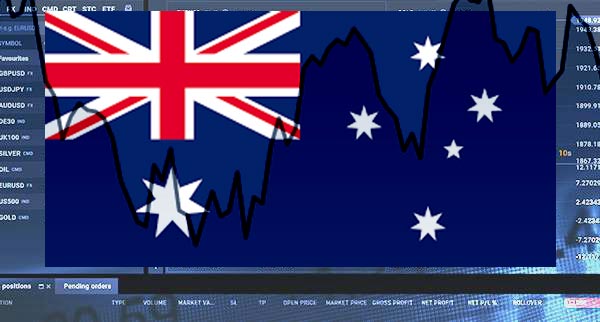 Australian Economy Struggles With Inflation
Aug 27 2023
By Emily Clark
Australian Economy Struggles With Inflation
Aug 27 2023
By Emily Clark
-
 Audjpy Loses Steam After Falling Below
Aug 26 2023
By Ashly Chole
Audjpy Loses Steam After Falling Below
Aug 26 2023
By Ashly Chole
-
 Audusd Faces Downward Risk
Aug 26 2023
By Emily Clark
Audusd Faces Downward Risk
Aug 26 2023
By Emily Clark
-
 Why Crypto Regulation Is Good
Aug 25 2023
By Emily Clark
Why Crypto Regulation Is Good
Aug 25 2023
By Emily Clark
-
 Usdmxn Stays Depressed Near Multi Year Lows
Aug 25 2023
By Adam Rosen
Usdmxn Stays Depressed Near Multi Year Lows
Aug 25 2023
By Adam Rosen
-
 Usdjpy Losses Sma On Daily Chart
Aug 24 2023
By Andrew Blumer
Usdjpy Losses Sma On Daily Chart
Aug 24 2023
By Andrew Blumer
-
 Usdjpy Remains Flat Below 139 With Limited Downside
Aug 24 2023
By Emily Clark
Usdjpy Remains Flat Below 139 With Limited Downside
Aug 24 2023
By Emily Clark
-
 Usd Will Gain Upside Against Gbp And Eur
Aug 23 2023
By Adam Rosen
Usd Will Gain Upside Against Gbp And Eur
Aug 23 2023
By Adam Rosen
-
 Usdcad Touches 9 Month Low At 13137
Aug 23 2023
By Ashly Chole
Usdcad Touches 9 Month Low At 13137
Aug 23 2023
By Ashly Chole
-
 Us Jobless Claims Remain Steady At 20 Month High Home Sales Go Up In May
Aug 22 2023
By Emily Clark
Us Jobless Claims Remain Steady At 20 Month High Home Sales Go Up In May
Aug 22 2023
By Emily Clark
-
 Us New Home Sales Declined
Aug 22 2023
By Emily Clark
Us New Home Sales Declined
Aug 22 2023
By Emily Clark
-
 Us Dollar Drifts Lower Amid End Of Rate Hike Cycle
Aug 21 2023
By Adam Rosen
Us Dollar Drifts Lower Amid End Of Rate Hike Cycle
Aug 21 2023
By Adam Rosen
-
 Us Business Activity Index Reached 53 Points In June
Aug 21 2023
By Andrew Blumer
Us Business Activity Index Reached 53 Points In June
Aug 21 2023
By Andrew Blumer
-
 Uob Usdcnh Remains Bearish
Aug 20 2023
By Emily Clark
Uob Usdcnh Remains Bearish
Aug 20 2023
By Emily Clark
-
 Ubs Claims Nike Stock Price Will Reach 150
Aug 20 2023
By Emily Clark
Ubs Claims Nike Stock Price Will Reach 150
Aug 20 2023
By Emily Clark
-
 Thailand Revised Its Gdp Growth Lower Amid Weak Exports
Aug 19 2023
By Andrew Blumer
Thailand Revised Its Gdp Growth Lower Amid Weak Exports
Aug 19 2023
By Andrew Blumer
-
 Turkish Lira Try Down After Surprise Rate Hike
Aug 19 2023
By Andrew Blumer
Turkish Lira Try Down After Surprise Rate Hike
Aug 19 2023
By Andrew Blumer
-
 Tesla Officially Begins Evs Sales In Malaysia
Aug 18 2023
By Adam Rosen
Tesla Officially Begins Evs Sales In Malaysia
Aug 18 2023
By Adam Rosen
-
 Thailand Headline Inflation Increased
Aug 18 2023
By Emily Clark
Thailand Headline Inflation Increased
Aug 18 2023
By Emily Clark
-
 Taiwan 2nd Quarter Gdp Forecast According To Analysts
Aug 17 2023
By Andrew Blumer
Taiwan 2nd Quarter Gdp Forecast According To Analysts
Aug 17 2023
By Andrew Blumer
-
 Tesla Delivered 466140 Cars In 2nd Quarter Beats The Estimates
Aug 17 2023
By Emily Clark
Tesla Delivered 466140 Cars In 2nd Quarter Beats The Estimates
Aug 17 2023
By Emily Clark
-
 Silver Xagusd Trades Ahead Of Fomc
Aug 16 2023
By Adam Rosen
Silver Xagusd Trades Ahead Of Fomc
Aug 16 2023
By Adam Rosen
-
 Singapore Economic Growth Slightly Higher In Q2
Aug 16 2023
By Andrew Blumer
Singapore Economic Growth Slightly Higher In Q2
Aug 16 2023
By Andrew Blumer
-
 Silver Bulls Cross The 24 Resistance Level
Aug 15 2023
By Ashly Chole
Silver Bulls Cross The 24 Resistance Level
Aug 15 2023
By Ashly Chole
-
 Sp 500 Higher Ahead Of Big Tech Earnings Fed Decision
Aug 15 2023
By Andrew Blumer
Sp 500 Higher Ahead Of Big Tech Earnings Fed Decision
Aug 15 2023
By Andrew Blumer
-
 Natural Gas Closes Its First Week In Green For July
Aug 14 2023
By Emily Clark
Natural Gas Closes Its First Week In Green For July
Aug 14 2023
By Emily Clark
-
 Rba Michele Bullock Named As Governor
Aug 14 2023
By Emily Clark
Rba Michele Bullock Named As Governor
Aug 14 2023
By Emily Clark
-
 Nzdusd To Target Level Despite Solid Us Data
Aug 13 2023
By Adam Rosen
Nzdusd To Target Level Despite Solid Us Data
Aug 13 2023
By Adam Rosen
-
 Meta Platforms Meta To Report Double Digit Growth
Aug 13 2023
By Andrew Blumer
Meta Platforms Meta To Report Double Digit Growth
Aug 13 2023
By Andrew Blumer
-
 Ing Eurgbp To Remain Supported Ahead Of Cpi
Aug 12 2023
By Emily Clark
Ing Eurgbp To Remain Supported Ahead Of Cpi
Aug 12 2023
By Emily Clark
-
 Imf Forecasts Growth In Japanese Economy
Aug 12 2023
By Ashly Chole
Imf Forecasts Growth In Japanese Economy
Aug 12 2023
By Ashly Chole
-
 Goldman Sachs Lifted The Microsoft Stock
Aug 11 2023
By Adam Rosen
Goldman Sachs Lifted The Microsoft Stock
Aug 11 2023
By Adam Rosen
-
 Gold Prices Decline After Cpi Rally Weak Chinese Gdp Weighs On Copper
Aug 11 2023
By Ashly Chole
Gold Prices Decline After Cpi Rally Weak Chinese Gdp Weighs On Copper
Aug 11 2023
By Ashly Chole
-
 Gbpusd Trades As Us Dollar Shows Weakness
Aug 10 2023
By Adam Rosen
Gbpusd Trades As Us Dollar Shows Weakness
Aug 10 2023
By Adam Rosen
-
 Gbpusd Touches Day Lows
Aug 10 2023
By Adam Rosen
Gbpusd Touches Day Lows
Aug 10 2023
By Adam Rosen
-
 Gbpjpy Gains Amid A Dovish Boj
Aug 09 2023
By Emily Clark
Gbpjpy Gains Amid A Dovish Boj
Aug 09 2023
By Emily Clark
-
 Gbpusd Jumps As Risk Sentiment Improves
Aug 09 2023
By Ashly Chole
Gbpusd Jumps As Risk Sentiment Improves
Aug 09 2023
By Ashly Chole
-
 Exxon Mobil Announced Denbury Deal
Aug 08 2023
By Andrew Blumer
Exxon Mobil Announced Denbury Deal
Aug 08 2023
By Andrew Blumer
-
 Gbpjpy At Risk Of Downside
Aug 08 2023
By Emily Clark
Gbpjpy At Risk Of Downside
Aug 08 2023
By Emily Clark
-
 Eurusd Remains Defensive
Aug 07 2023
By Emily Clark
Eurusd Remains Defensive
Aug 07 2023
By Emily Clark
-
 Dow Futures Gains
Aug 07 2023
By Ashly Chole
Dow Futures Gains
Aug 07 2023
By Ashly Chole
-
 Dollar Worst Weeks In Months
Aug 06 2023
By Andrew Blumer
Dollar Worst Weeks In Months
Aug 06 2023
By Andrew Blumer
-
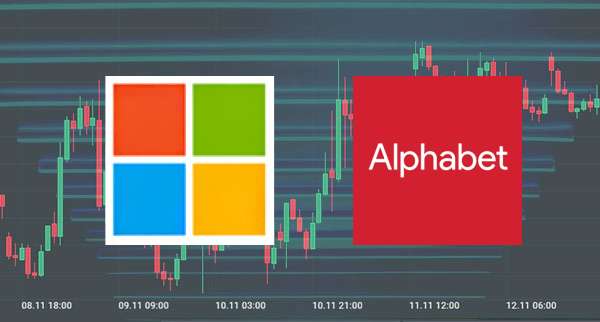 Dow Futures Dipped After Alphabet And Microsoft Report Earnings
Aug 06 2023
By Adam Rosen
Dow Futures Dipped After Alphabet And Microsoft Report Earnings
Aug 06 2023
By Adam Rosen
-
 Crude Oil Prices Stabilize
Aug 05 2023
By Emily Clark
Crude Oil Prices Stabilize
Aug 05 2023
By Emily Clark
-
 Crypto Lender Celsius Fined
Aug 05 2023
By Emily Clark
Crypto Lender Celsius Fined
Aug 05 2023
By Emily Clark
-
 China Q2 Economic Growth Remains Subdued
Aug 04 2023
By Ashly Chole
China Q2 Economic Growth Remains Subdued
Aug 04 2023
By Ashly Chole
-
 Citigroup Profit Down
Aug 04 2023
By Emily Clark
Citigroup Profit Down
Aug 04 2023
By Emily Clark
-
 Cbi Uk Manufacturing Sector Decline Slowed
Aug 03 2023
By Andrew Blumer
Cbi Uk Manufacturing Sector Decline Slowed
Aug 03 2023
By Andrew Blumer
-
 China New Home Prices Remain Flat
Aug 03 2023
By Adam Rosen
China New Home Prices Remain Flat
Aug 03 2023
By Adam Rosen
-
 Brazil Fm Haddad Hinted At Rate Cuts
Aug 02 2023
By Emily Clark
Brazil Fm Haddad Hinted At Rate Cuts
Aug 02 2023
By Emily Clark
-
 Bofa Maintains Buy Rating On Ibm
Aug 02 2023
By Ashly Chole
Bofa Maintains Buy Rating On Ibm
Aug 02 2023
By Ashly Chole
-
 Australia Cpi Inflation Chances Of Rba Pause Increases
Aug 01 2023
By Andrew Blumer
Australia Cpi Inflation Chances Of Rba Pause Increases
Aug 01 2023
By Andrew Blumer
-
 Berkshire Hathaway Cuts Its Activision Stake
Aug 01 2023
By Andrew Blumer
Berkshire Hathaway Cuts Its Activision Stake
Aug 01 2023
By Andrew Blumer
-
 Apple Eps Will Be Better Than Expected According To Goldman Sachs
Jul 31 2023
By Ashly Chole
Apple Eps Will Be Better Than Expected According To Goldman Sachs
Jul 31 2023
By Ashly Chole
-
 Asian Currencies Rises As Fed Meeting Approaches
Jul 31 2023
By Andrew Blumer
Asian Currencies Rises As Fed Meeting Approaches
Jul 31 2023
By Andrew Blumer
-
 Alphabet Q2 2023 Results Better Than Estimates Googl Up
Jul 30 2023
By Emily Clark
Alphabet Q2 2023 Results Better Than Estimates Googl Up
Jul 30 2023
By Emily Clark
-
 Alphabet Googl Stock Gains After Bard Expansion
Jul 30 2023
By Andrew Blumer
Alphabet Googl Stock Gains After Bard Expansion
Jul 30 2023
By Andrew Blumer
-
 Audusd Climbs After Australian Cpi Data
Jul 29 2023
By Adam Rosen
Audusd Climbs After Australian Cpi Data
Jul 29 2023
By Adam Rosen
-
 Audusd Trades Daily Lows Despite Us Dollar Weakness
Jul 29 2023
By Adam Rosen
Audusd Trades Daily Lows Despite Us Dollar Weakness
Jul 29 2023
By Adam Rosen
-
 Singapore Economic Growth Remains Weak Amid High Inflation
Jul 28 2023
By Andrew Blumer
Singapore Economic Growth Remains Weak Amid High Inflation
Jul 28 2023
By Andrew Blumer
-
 South Korea Records Trade Surplus Amid Recovering Exports
Jul 28 2023
By Emily Clark
South Korea Records Trade Surplus Amid Recovering Exports
Jul 28 2023
By Emily Clark
-
 Russia To Sell 18 Million Of Foreign Currency Till August
Jul 27 2023
By Adam Rosen
Russia To Sell 18 Million Of Foreign Currency Till August
Jul 27 2023
By Adam Rosen
-
 Samsung Biologics Announced 921 Million Deal With Pfizer
Jul 27 2023
By Andrew Blumer
Samsung Biologics Announced 921 Million Deal With Pfizer
Jul 27 2023
By Andrew Blumer
-
 Oil Futures Takes A Dip On Demand Woes
Jul 26 2023
By Andrew Blumer
Oil Futures Takes A Dip On Demand Woes
Jul 26 2023
By Andrew Blumer
-
 Rba Maintains The Interest Rate At 4 Signals More Rate Hikes
Jul 26 2023
By Ashly Chole
Rba Maintains The Interest Rate At 4 Signals More Rate Hikes
Jul 26 2023
By Ashly Chole
-
 Natural Gas Gains 15 In June Amid Increased Demand
Jul 25 2023
By Emily Clark
Natural Gas Gains 15 In June Amid Increased Demand
Jul 25 2023
By Emily Clark
-
 Natural Gas Prices Down By 40 This Year
Jul 25 2023
By Ashly Chole
Natural Gas Prices Down By 40 This Year
Jul 25 2023
By Ashly Chole
-
 Japanese Yen Drops On Intervention Euro Remains Weak Amid Slow Economy
Jul 24 2023
By Emily Clark
Japanese Yen Drops On Intervention Euro Remains Weak Amid Slow Economy
Jul 24 2023
By Emily Clark
-
 Nzdusd Advances On Rba Hawkish Stance Us Dollar Remains Week
Jul 24 2023
By Adam Rosen
Nzdusd Advances On Rba Hawkish Stance Us Dollar Remains Week
Jul 24 2023
By Adam Rosen
-
 Jpmorgan Forecasts A Solid Q2 For Baker Hughes
Jul 23 2023
By Ashly Chole
Jpmorgan Forecasts A Solid Q2 For Baker Hughes
Jul 23 2023
By Ashly Chole
-
 Italy Pmi For June Was 52 Lower Than Last Month Reading
Jul 23 2023
By Andrew Blumer
Italy Pmi For June Was 52 Lower Than Last Month Reading
Jul 23 2023
By Andrew Blumer
-
 Ism Survey Us Manufacturing Slumped In June
Jul 22 2023
By Emily Clark
Ism Survey Us Manufacturing Slumped In June
Jul 22 2023
By Emily Clark
-
 Ibm Close To 5 Billion Deal For Acquisition Of Apptio
Jul 22 2023
By Emily Clark
Ibm Close To 5 Billion Deal For Acquisition Of Apptio
Jul 22 2023
By Emily Clark
-
 Goldman Sachs Solaredge Technologies Is A Good Buying Opportunity
Jul 20 2023
By Andrew Blumer
Goldman Sachs Solaredge Technologies Is A Good Buying Opportunity
Jul 20 2023
By Andrew Blumer
-
 Goldman Sachs To Face 2 Billion Writedown
Jul 20 2023
By Andrew Blumer
Goldman Sachs To Face 2 Billion Writedown
Jul 20 2023
By Andrew Blumer
-
 Goldman Sachs Considers Ending Its Partnership With Apple
Jul 19 2023
By Adam Rosen
Goldman Sachs Considers Ending Its Partnership With Apple
Jul 19 2023
By Adam Rosen
-
 Gold Refreshes 3 Month Lows After Outsized Boe Rate Hike
Jul 19 2023
By Andrew Blumer
Gold Refreshes 3 Month Lows After Outsized Boe Rate Hike
Jul 19 2023
By Andrew Blumer
-
 Gold Jumps Before Fed Minutes Copper Remains Weak On China Woes
Jul 18 2023
By Ashly Chole
Gold Jumps Before Fed Minutes Copper Remains Weak On China Woes
Jul 18 2023
By Ashly Chole
-
 Gold Gains 5 But The 1900 Support Remains Weak
Jul 18 2023
By Ashly Chole
Gold Gains 5 But The 1900 Support Remains Weak
Jul 18 2023
By Ashly Chole
-
 Fed Powell Forecast 2 More Rate Hikes This Year
Jul 17 2023
By Emily Clark
Fed Powell Forecast 2 More Rate Hikes This Year
Jul 17 2023
By Emily Clark
-
 Gbpusd Trades Near 12700 Amid Usd Weakness
Jul 17 2023
By Andrew Blumer
Gbpusd Trades Near 12700 Amid Usd Weakness
Jul 17 2023
By Andrew Blumer
-
 Fed Chair Powell Says Us Dollar Will Remain World Reserve Currency
Jul 16 2023
By Ashly Chole
Fed Chair Powell Says Us Dollar Will Remain World Reserve Currency
Jul 16 2023
By Ashly Chole
-
 Ftx Planning To Relaunch Its International Cryptocurrency Exchange
Jul 16 2023
By Emily Clark
Ftx Planning To Relaunch Its International Cryptocurrency Exchange
Jul 16 2023
By Emily Clark
-
 European Shares Get A Boost As The Fear Of Economic Slowdown Fades
Jul 15 2023
By Emily Clark
European Shares Get A Boost As The Fear Of Economic Slowdown Fades
Jul 15 2023
By Emily Clark
-
 Eurusd Remains Neutral Near 10900
Jul 15 2023
By Andrew Blumer
Eurusd Remains Neutral Near 10900
Jul 15 2023
By Andrew Blumer
-
 Eurusd Drops To 10950 After Usd Strength
Jul 14 2023
By Adam Rosen
Eurusd Drops To 10950 After Usd Strength
Jul 14 2023
By Adam Rosen
-
 Eurgbp Declines After Uk Services Pmi Release
Jul 14 2023
By Emily Clark
Eurgbp Declines After Uk Services Pmi Release
Jul 14 2023
By Emily Clark
-
 Dollar Inches Higher As Demand For Safe Haven Increases
Jul 13 2023
By Emily Clark
Dollar Inches Higher As Demand For Safe Haven Increases
Jul 13 2023
By Emily Clark
-
 Dow Jones Down By 219 Points Amid Recession Fears
Jul 13 2023
By Adam Rosen
Dow Jones Down By 219 Points Amid Recession Fears
Jul 13 2023
By Adam Rosen
-
 China Economic Growth To Touch 5 In 2023
Jul 12 2023
By Adam Rosen
China Economic Growth To Touch 5 In 2023
Jul 12 2023
By Adam Rosen
-
 Dax Gains 1 Upside After A Rally In German Stocks
Jul 12 2023
By Ashly Chole
Dax Gains 1 Upside After A Rally In German Stocks
Jul 12 2023
By Ashly Chole
-
 Caixin Pmi June Reading Was 53 Shows Weak Local Demand
Jul 11 2023
By Adam Rosen
Caixin Pmi June Reading Was 53 Shows Weak Local Demand
Jul 11 2023
By Adam Rosen
-
 Canadian Dollar Cad Turns Higher On Oil Supply Fears
Jul 11 2023
By Andrew Blumer
Canadian Dollar Cad Turns Higher On Oil Supply Fears
Jul 11 2023
By Andrew Blumer
-
 Bitcoin Crosses 30k Amid Optimism Over Blackrock Etf
Jul 10 2023
By Ashly Chole
Bitcoin Crosses 30k Amid Optimism Over Blackrock Etf
Jul 10 2023
By Ashly Chole
-
 Brent Oil Drops Amid Concerns Of Economic Slowdown
Jul 10 2023
By Andrew Blumer
Brent Oil Drops Amid Concerns Of Economic Slowdown
Jul 10 2023
By Andrew Blumer
-
 Apple Market Value Crossed 3 Trillion On Friday
Jul 09 2023
By Emily Clark
Apple Market Value Crossed 3 Trillion On Friday
Jul 09 2023
By Emily Clark
-
 Boj Member Noguchi Calls For Low Rates And Wage Growth
Jul 09 2023
By Adam Rosen
Boj Member Noguchi Calls For Low Rates And Wage Growth
Jul 09 2023
By Adam Rosen
-
 20 Upside Forecast For Apple Inc According To Tigress Financial
Jul 08 2023
By Adam Rosen
20 Upside Forecast For Apple Inc According To Tigress Financial
Jul 08 2023
By Adam Rosen
-
 Amd And Nvidia Stocks Turn Lower After China Ai Chip Restrictions
Jul 08 2023
By Adam Rosen
Amd And Nvidia Stocks Turn Lower After China Ai Chip Restrictions
Jul 08 2023
By Adam Rosen
-
 Usa To Add 3 Million Barrels Of Crude Oil To Its Stockpile
Jul 07 2023
By Ashly Chole
Usa To Add 3 Million Barrels Of Crude Oil To Its Stockpile
Jul 07 2023
By Ashly Chole
-
 Us Weekly Jobless Claims Reached 219391
Jul 07 2023
By Adam Rosen
Us Weekly Jobless Claims Reached 219391
Jul 07 2023
By Adam Rosen
-
 Ubs Mulls About Delaying Quarterly Results Till August
Jul 06 2023
By Adam Rosen
Ubs Mulls About Delaying Quarterly Results Till August
Jul 06 2023
By Adam Rosen
-
 Ubs Completes Its Takeover Of Credit Suisse
Jul 06 2023
By Ashly Chole
Ubs Completes Its Takeover Of Credit Suisse
Jul 06 2023
By Ashly Chole
-
 Tesla Shares Gains 4 After Gm Agrees To Use Its Charging Network
Jul 05 2023
By Ashly Chole
Tesla Shares Gains 4 After Gm Agrees To Use Its Charging Network
Jul 05 2023
By Ashly Chole
-
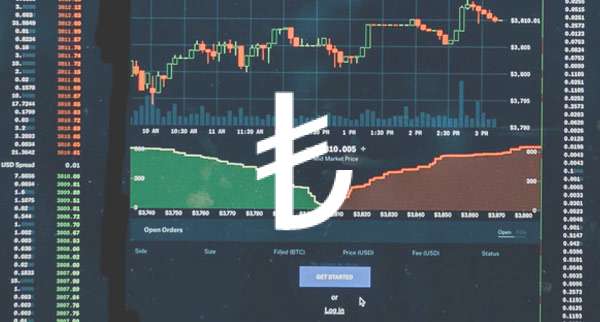 Turkish Lira Try Stabilizes After Intervention
Jul 05 2023
By Adam Rosen
Turkish Lira Try Stabilizes After Intervention
Jul 05 2023
By Adam Rosen
-
 Socgen Audusd To Extend Its Rebound After Crossing 06810
Jul 04 2023
By Adam Rosen
Socgen Audusd To Extend Its Rebound After Crossing 06810
Jul 04 2023
By Adam Rosen
-
 South Africa Rand Turns Higher On Improved Sentiment
Jul 04 2023
By Andrew Blumer
South Africa Rand Turns Higher On Improved Sentiment
Jul 04 2023
By Andrew Blumer
-
 Pakistan Bought Discounted Russian Oil Using Chinese Yuan
Jul 03 2023
By Adam Rosen
Pakistan Bought Discounted Russian Oil Using Chinese Yuan
Jul 03 2023
By Adam Rosen
-
 Scotiabank Rebound In Usdcad Highly Likely Unless 133 Support Breaks
Jul 03 2023
By Ashly Chole
Scotiabank Rebound In Usdcad Highly Likely Unless 133 Support Breaks
Jul 03 2023
By Ashly Chole
-
 Oil Prices Turn Bullish After Saudi Arabia Pledges Supply Cuts
Jul 02 2023
By Emily Clark
Oil Prices Turn Bullish After Saudi Arabia Pledges Supply Cuts
Jul 02 2023
By Emily Clark
-
 Oil Drops 4 Opposite To Saudi Aarabia Wish
Jul 02 2023
By Andrew Blumer
Oil Drops 4 Opposite To Saudi Aarabia Wish
Jul 02 2023
By Andrew Blumer
-
 Nikkei Closes The Day Above 33000 Breaks 33 Years Record
Jul 01 2023
By Andrew Blumer
Nikkei Closes The Day Above 33000 Breaks 33 Years Record
Jul 01 2023
By Andrew Blumer
-
 Novartis Agreed To Buy Chinook Therapeutics For 3 Billion
Jul 01 2023
By Emily Clark
Novartis Agreed To Buy Chinook Therapeutics For 3 Billion
Jul 01 2023
By Emily Clark
-
 Natural Gas Xngusd Jumps To 2 Amid Inflation Fears
Jun 30 2023
By Ashly Chole
Natural Gas Xngusd Jumps To 2 Amid Inflation Fears
Jun 30 2023
By Ashly Chole
-
 Nzdusd Pauses At 06150 Amid Usd Index Recovery
Jun 30 2023
By Ashly Chole
Nzdusd Pauses At 06150 Amid Usd Index Recovery
Jun 30 2023
By Ashly Chole
-
 Mpc Haskel Hints At More Rate Hikes From Boe
Jun 29 2023
By Emily Clark
Mpc Haskel Hints At More Rate Hikes From Boe
Jun 29 2023
By Emily Clark
-
 Kostin Says Us Dollar Dominance Is Near
Jun 29 2023
By Adam Rosen
Kostin Says Us Dollar Dominance Is Near
Jun 29 2023
By Adam Rosen
-
 Jeff Bezos Bought 1 Amazon Share In 115 During May
Jun 28 2023
By Andrew Blumer
Jeff Bezos Bought 1 Amazon Share In 115 During May
Jun 28 2023
By Andrew Blumer
-
 Jpmorgan Turkey Central Bank To Raise Interest Rates To 25
Jun 28 2023
By Emily Clark
Jpmorgan Turkey Central Bank To Raise Interest Rates To 25
Jun 28 2023
By Emily Clark
-
 Intel To Become Anchor Investor In Softbank Group Corp Arm Ipo
Jun 27 2023
By Emily Clark
Intel To Become Anchor Investor In Softbank Group Corp Arm Ipo
Jun 27 2023
By Emily Clark
-
 Hsbc To Close Its Business In New Zealand
Jun 27 2023
By Andrew Blumer
Hsbc To Close Its Business In New Zealand
Jun 27 2023
By Andrew Blumer
-
 Germany Denies Subsidy Demands For Intel Chip Plant
Jun 26 2023
By Ashly Chole
Germany Denies Subsidy Demands For Intel Chip Plant
Jun 26 2023
By Ashly Chole
-
 Goldman Sachs Says Us Economy Is Very Resilient
Jun 26 2023
By Ashly Chole
Goldman Sachs Says Us Economy Is Very Resilient
Jun 26 2023
By Ashly Chole
-
 General Motors Gm Plans A 632 Million Investment In Its Indiana Plant
Jun 25 2023
By Emily Clark
General Motors Gm Plans A 632 Million Investment In Its Indiana Plant
Jun 25 2023
By Emily Clark
-
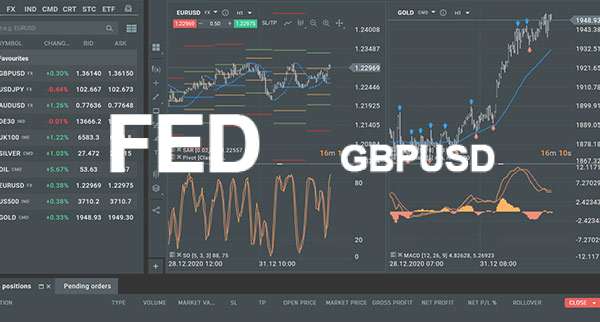 Gbpusd Retreats From 12600 Ahead Of Fed Meeting
Jun 25 2023
By Andrew Blumer
Gbpusd Retreats From 12600 Ahead Of Fed Meeting
Jun 25 2023
By Andrew Blumer
-
 Gbpjpy Remains Strong Below 175 All Eyes On Uk Jobs Data
Jun 24 2023
By Emily Clark
Gbpjpy Remains Strong Below 175 All Eyes On Uk Jobs Data
Jun 24 2023
By Emily Clark
-
 Gbpusd Crosses 12550 Resistance After Uk Jobs Data
Jun 24 2023
By Adam Rosen
Gbpusd Crosses 12550 Resistance After Uk Jobs Data
Jun 24 2023
By Adam Rosen
-
 Eurusd Upside Expected On 4 Us Cpi Ing
Jun 23 2023
By Adam Rosen
Eurusd Upside Expected On 4 Us Cpi Ing
Jun 23 2023
By Adam Rosen
-
 Ftc Asks Us Court To Block Microsoft Activision Deal
Jun 23 2023
By Adam Rosen
Ftc Asks Us Court To Block Microsoft Activision Deal
Jun 23 2023
By Adam Rosen
-
 Ecb Survey Consumers Expect Slowing Inflation
Jun 22 2023
By Emily Clark
Ecb Survey Consumers Expect Slowing Inflation
Jun 22 2023
By Emily Clark
-
 Eurusd Continues To Trade Above 10750
Jun 22 2023
By Adam Rosen
Eurusd Continues To Trade Above 10750
Jun 22 2023
By Adam Rosen
-
 Dow Futures Remain Steady Oracle Jumps 3 After Results
Jun 21 2023
By Andrew Blumer
Dow Futures Remain Steady Oracle Jumps 3 After Results
Jun 21 2023
By Andrew Blumer
-
 Dollar Moves Down Amid Increase In Jobless Claims
Jun 21 2023
By Emily Clark
Dollar Moves Down Amid Increase In Jobless Claims
Jun 21 2023
By Emily Clark
-
 Credit Suisse Ceo Hints At Finalization Of Ubs Deal On Monday
Jun 20 2023
By Ashly Chole
Credit Suisse Ceo Hints At Finalization Of Ubs Deal On Monday
Jun 20 2023
By Ashly Chole
-
 Commerzbank And Citi Bank Are Bullish On Gold For Medium Term
Jun 20 2023
By Ashly Chole
Commerzbank And Citi Bank Are Bullish On Gold For Medium Term
Jun 20 2023
By Ashly Chole
-
 China Real Estate Stocks Turn Bearish After Goldman Sachs Forecast
Jun 19 2023
By Emily Clark
China Real Estate Stocks Turn Bearish After Goldman Sachs Forecast
Jun 19 2023
By Emily Clark
-
 Coinbase Shares Turn Lower Amid Legal Battle With Sec
Jun 19 2023
By Andrew Blumer
Coinbase Shares Turn Lower Amid Legal Battle With Sec
Jun 19 2023
By Andrew Blumer
-
 China Cuts Its Short Term Lending Rate Amid Economic Slowdown
Jun 18 2023
By Emily Clark
China Cuts Its Short Term Lending Rate Amid Economic Slowdown
Jun 18 2023
By Emily Clark
-
 Brazil Inflation During May Seen At 8 Months Low
Jun 18 2023
By Andrew Blumer
Brazil Inflation During May Seen At 8 Months Low
Jun 18 2023
By Andrew Blumer
-
 Bitcoin Btc Looking All Set To Target 30000 Once Again
Jun 17 2023
By Adam Rosen
Bitcoin Btc Looking All Set To Target 30000 Once Again
Jun 17 2023
By Adam Rosen
-
 Binance Announced Swap Of 750 Million Token Pairs
Jun 17 2023
By Emily Clark
Binance Announced Swap Of 750 Million Token Pairs
Jun 17 2023
By Emily Clark
-
 Australia Consumer Sentiment Turns Sour After Rate Hike
Jun 16 2023
By Andrew Blumer
Australia Consumer Sentiment Turns Sour After Rate Hike
Jun 16 2023
By Andrew Blumer
-
 Boj Expected To Keep Its Policy Of Ultralow Rates
Jun 16 2023
By Emily Clark
Boj Expected To Keep Its Policy Of Ultralow Rates
Jun 16 2023
By Emily Clark
-
 Australia Business Activity Down By 8 Points In May
Jun 15 2023
By Ashly Chole
Australia Business Activity Down By 8 Points In May
Jun 15 2023
By Ashly Chole
-
 Asian Currencies Sink Ahead Of Fed
Jun 15 2023
By Emily Clark
Asian Currencies Sink Ahead Of Fed
Jun 15 2023
By Emily Clark
-
 White House Hints Towards Banning Pow Mining Used By Bitcoin
Jun 14 2023
By Ashly Chole
White House Hints Towards Banning Pow Mining Used By Bitcoin
Jun 14 2023
By Ashly Chole
-
 Us Stocks Turn Red After Weak Retail Sales Home Depot Report
Jun 13 2023
By Emily Clark
Us Stocks Turn Red After Weak Retail Sales Home Depot Report
Jun 13 2023
By Emily Clark
-
 Us Weekly Jobless Claims Reaches Highest Level
Jun 13 2023
By Ashly Chole
Us Weekly Jobless Claims Reaches Highest Level
Jun 13 2023
By Ashly Chole
-
 Us Producer Prices Ppi Increased
Jun 12 2023
By Adam Rosen
Us Producer Prices Ppi Increased
Jun 12 2023
By Adam Rosen
-
 Us Credit Rating Placed Under Review By Scope Ratings
Jun 12 2023
By Adam Rosen
Us Credit Rating Placed Under Review By Scope Ratings
Jun 12 2023
By Adam Rosen
-
 Toyota Forecasts 10 Increase In Operating Profit
Jun 11 2023
By Ashly Chole
Toyota Forecasts 10 Increase In Operating Profit
Jun 11 2023
By Ashly Chole
-
 Us Cpi Recorded At 4 In April Shows Marginal Increase
Jun 11 2023
By Andrew Blumer
Us Cpi Recorded At 4 In April Shows Marginal Increase
Jun 11 2023
By Andrew Blumer
-
 Tesla Inc Plans To Expand Its Shanghai Plant
Jun 10 2023
By Andrew Blumer
Tesla Inc Plans To Expand Its Shanghai Plant
Jun 10 2023
By Andrew Blumer
-
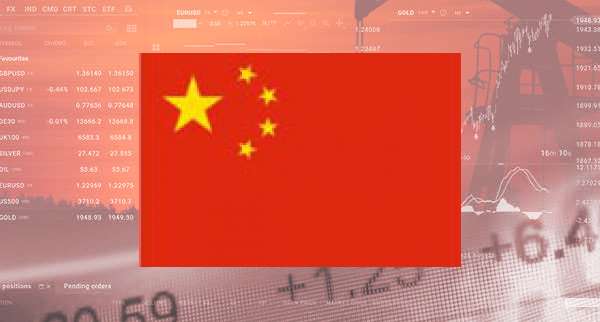 The Oil Market Turns Sideways On Mixed China Outlook
Jun 10 2023
By Andrew Blumer
The Oil Market Turns Sideways On Mixed China Outlook
Jun 10 2023
By Andrew Blumer
-
 Tech Heavy Nasdaq Inched Higher As Inflation Eases Down
Jun 09 2023
By Adam Rosen
Tech Heavy Nasdaq Inched Higher As Inflation Eases Down
Jun 09 2023
By Adam Rosen
-
 Taiwan Exports Slipped During April Remains Above Forecast
Jun 09 2023
By Ashly Chole
Taiwan Exports Slipped During April Remains Above Forecast
Jun 09 2023
By Ashly Chole
-
 Skyworks Stock Tumbles 10 After Lower Guidance
Jun 08 2023
By Emily Clark
Skyworks Stock Tumbles 10 After Lower Guidance
Jun 08 2023
By Emily Clark
-
 Singapore Exports Drop 9 In April
Jun 08 2023
By Ashly Chole
Singapore Exports Drop 9 In April
Jun 08 2023
By Ashly Chole
-
 Pound Loses Ground Against Dollar After British Jobs Data
Jun 07 2023
By Adam Rosen
Pound Loses Ground Against Dollar After British Jobs Data
Jun 07 2023
By Adam Rosen
-
 Saudi Arabia Gdp Grew By 3 During Q1
Jun 07 2023
By Ashly Chole
Saudi Arabia Gdp Grew By 3 During Q1
Jun 07 2023
By Ashly Chole
-
 Philippines Fm No Need For A Rate Hike
Jun 06 2023
By Emily Clark
Philippines Fm No Need For A Rate Hike
Jun 06 2023
By Emily Clark
-
 Platinum Deficit Increases Amid High Demand From Carmakers
Jun 06 2023
By Adam Rosen
Platinum Deficit Increases Amid High Demand From Carmakers
Jun 06 2023
By Adam Rosen
-
 Panasonic Expects Record Profit After Us Tax Credit
Jun 05 2023
By Adam Rosen
Panasonic Expects Record Profit After Us Tax Credit
Jun 05 2023
By Adam Rosen
-
 Oil Turns Higher Amid Fading Recession Risk
Jun 05 2023
By Andrew Blumer
Oil Turns Higher Amid Fading Recession Risk
Jun 05 2023
By Andrew Blumer
-
 Ny Fed Manufacturing Activity In New York Takes A Dive Down
Jun 04 2023
By Emily Clark
Ny Fed Manufacturing Activity In New York Takes A Dive Down
Jun 04 2023
By Emily Clark
-
 New Vodafone Ceo Plans To Cut 11000 Jobs
Jun 04 2023
By Andrew Blumer
New Vodafone Ceo Plans To Cut 11000 Jobs
Jun 04 2023
By Andrew Blumer
-
 Ncet Director Hints Towards Increased Scrutiny Of Crypto Exchanges
Jun 03 2023
By Andrew Blumer
Ncet Director Hints Towards Increased Scrutiny Of Crypto Exchanges
Jun 03 2023
By Andrew Blumer
-
 Morgan Stanley Considers Cutting 7 Of Jobs From Asia Pacific Region
Jun 03 2023
By Ashly Chole
Morgan Stanley Considers Cutting 7 Of Jobs From Asia Pacific Region
Jun 03 2023
By Ashly Chole
-
 Jpmorgan Ceo Highly Unlikely To Buy Other Struggling Banks
Jun 02 2023
By Andrew Blumer
Jpmorgan Ceo Highly Unlikely To Buy Other Struggling Banks
Jun 02 2023
By Andrew Blumer
-
 Indonesia Posted Trade Surplus In April 2023
Jun 02 2023
By Adam Rosen
Indonesia Posted Trade Surplus In April 2023
Jun 02 2023
By Adam Rosen
-
 Imf Forecasts A 3 Contraction In Sri Lanka Economy During 2023
Jun 01 2023
By Andrew Blumer
Imf Forecasts A 3 Contraction In Sri Lanka Economy During 2023
Jun 01 2023
By Andrew Blumer
-
 Ing Forecasts Bullish Gold In The Second Half Of 2023
Jun 01 2023
By Ashly Chole
Ing Forecasts Bullish Gold In The Second Half Of 2023
Jun 01 2023
By Ashly Chole
-
 Gold Closes Below 2000 Level As Us Debt Crisis Looms
May 30 2023
By Adam Rosen
Gold Closes Below 2000 Level As Us Debt Crisis Looms
May 30 2023
By Adam Rosen
-
 Gold Loses Traction But Remains Above 2000 Amid More Rate Hikes
May 30 2023
By Adam Rosen
Gold Loses Traction But Remains Above 2000 Amid More Rate Hikes
May 30 2023
By Adam Rosen
-
 Gbpusd Steady Above 12600 Level Despite Cautious Sentiment
May 29 2023
By Ashly Chole
Gbpusd Steady Above 12600 Level Despite Cautious Sentiment
May 29 2023
By Ashly Chole
-
 Germany Industrial Production Down By 3 In March
May 29 2023
By Emily Clark
Germany Industrial Production Down By 3 In March
May 29 2023
By Emily Clark
-
 Eurozone Industrial Output Down By 4 In March
May 28 2023
By Andrew Blumer
Eurozone Industrial Output Down By 4 In March
May 28 2023
By Andrew Blumer
-
 Fed Raphael Bostic No Rate Cuts For This Year
May 28 2023
By Emily Clark
Fed Raphael Bostic No Rate Cuts For This Year
May 28 2023
By Emily Clark
-
 European Stocks Turn Higher Ahead Of Boe Meeting
May 27 2023
By Emily Clark
European Stocks Turn Higher Ahead Of Boe Meeting
May 27 2023
By Emily Clark
-
 Euro Zone Sentix Index Touched 13 During May
May 27 2023
By Andrew Blumer
Euro Zone Sentix Index Touched 13 During May
May 27 2023
By Andrew Blumer
-
 Elon Musk Tough Economy Is A Risk For Tesla
May 26 2023
By Andrew Blumer
Elon Musk Tough Economy Is A Risk For Tesla
May 26 2023
By Andrew Blumer
-
 Eurusd On The Backfoot Near 11000 As Us Dollar Gains Strength
May 26 2023
By Andrew Blumer
Eurusd On The Backfoot Near 11000 As Us Dollar Gains Strength
May 26 2023
By Andrew Blumer
-
 Commerzbank Reports Double Net Profit For Q1
May 25 2023
By Andrew Blumer
Commerzbank Reports Double Net Profit For Q1
May 25 2023
By Andrew Blumer
-
 Ecb Survey Consumers Expect A Rise In Inflation
May 25 2023
By Andrew Blumer
Ecb Survey Consumers Expect A Rise In Inflation
May 25 2023
By Andrew Blumer
-
 Chinese Yuan Drops Below 7 As Economic Recovery Stalls
May 24 2023
By Emily Clark
Chinese Yuan Drops Below 7 As Economic Recovery Stalls
May 24 2023
By Emily Clark
-
 Citigroup Issues A Neutral Sell Rating For Natural Gas
May 24 2023
By Emily Clark
Citigroup Issues A Neutral Sell Rating For Natural Gas
May 24 2023
By Emily Clark
-
 China Exports Growth Remains Slow But Consistent
May 23 2023
By Andrew Blumer
China Exports Growth Remains Slow But Consistent
May 23 2023
By Andrew Blumer
-
 China Fx Reserves Touched 30 Trillion
May 23 2023
By Andrew Blumer
China Fx Reserves Touched 30 Trillion
May 23 2023
By Andrew Blumer
-
 Canada Housing Market Recovery Could Delay Boc Rate Cuts
May 22 2023
By Adam Rosen
Canada Housing Market Recovery Could Delay Boc Rate Cuts
May 22 2023
By Adam Rosen
-
 Canada Inflation Reaches 4 In April More Rate Hikes To Come
May 22 2023
By Adam Rosen
Canada Inflation Reaches 4 In April More Rate Hikes To Come
May 22 2023
By Adam Rosen
-
 Bitcoin Resumes Bitcoin Withdrawals After Brief Suspension
May 21 2023
By Andrew Blumer
Bitcoin Resumes Bitcoin Withdrawals After Brief Suspension
May 21 2023
By Andrew Blumer
-
 Australia Announces Budget Surplus For The First Time In 15 Years
May 21 2023
By Adam Rosen
Australia Announces Budget Surplus For The First Time In 15 Years
May 21 2023
By Adam Rosen
-
 Alphabet Shares Turn Higher After Google Io Dev Conference
May 20 2023
By Andrew Blumer
Alphabet Shares Turn Higher After Google Io Dev Conference
May 20 2023
By Andrew Blumer
-
 Atlantic Equities Upgrades Shopify Raises Price Target
May 20 2023
By Ashly Chole
Atlantic Equities Upgrades Shopify Raises Price Target
May 20 2023
By Ashly Chole
-
 White House Believes Stronger Dollar Shows Us Economy Strength
May 19 2023
By Adam Rosen
White House Believes Stronger Dollar Shows Us Economy Strength
May 19 2023
By Adam Rosen
-
 Whistleblower Claims That Twitter Had A Chinese Spy In The Company
May 19 2023
By Emily Clark
Whistleblower Claims That Twitter Had A Chinese Spy In The Company
May 19 2023
By Emily Clark
-
 What Is The Nasdaq Stock Market
May 18 2023
By Adam Rosen
What Is The Nasdaq Stock Market
May 18 2023
By Adam Rosen
-
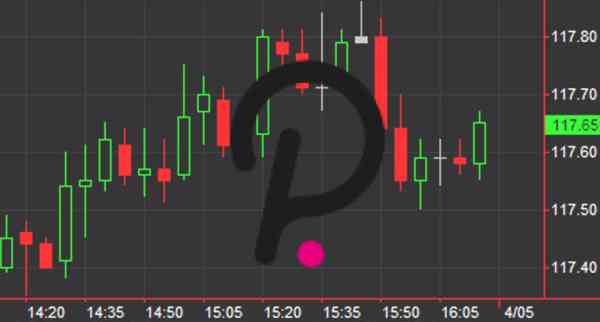 What Is Polkadot Dot
May 18 2023
By Emily Clark
What Is Polkadot Dot
May 18 2023
By Emily Clark
-
 What Is Alan Greenspan Put
May 17 2023
By Ashly Chole
What Is Alan Greenspan Put
May 17 2023
By Ashly Chole
-
 What Is Dogecoin
May 17 2023
By Andrew Blumer
What Is Dogecoin
May 17 2023
By Andrew Blumer
-
 What Are The Best Features Of Admiral Markets Brokerage Firm
May 16 2023
By Adam Rosen
What Are The Best Features Of Admiral Markets Brokerage Firm
May 16 2023
By Adam Rosen
-
 What Happens With Amazon Stocks When Jeff Bezos Leave
May 16 2023
By Ashly Chole
What Happens With Amazon Stocks When Jeff Bezos Leave
May 16 2023
By Ashly Chole
-
 Warren Buffett Holds A Stake In Itochu Corp And 4 Other Trading Houses
May 15 2023
By Adam Rosen
Warren Buffett Holds A Stake In Itochu Corp And 4 Other Trading Houses
May 15 2023
By Adam Rosen
-
 Whales Buy 620 Million Doge In Hopes Of Price Breakout
May 15 2023
By Adam Rosen
Whales Buy 620 Million Doge In Hopes Of Price Breakout
May 15 2023
By Adam Rosen
-
 Warren Buffett Buys More Apple Stocks Slashes Banks Chipmakers
May 14 2023
By Ashly Chole
Warren Buffett Buys More Apple Stocks Slashes Banks Chipmakers
May 14 2023
By Ashly Chole
-
 Warren Buffett Best Investing Strategies
May 14 2023
By Ashly Chole
Warren Buffett Best Investing Strategies
May 14 2023
By Ashly Chole
-
 Warren Buffet Will Buy Cheap Stocks
May 13 2023
By Andrew Blumer
Warren Buffet Will Buy Cheap Stocks
May 13 2023
By Andrew Blumer
-
 Wall Street Turns Red Banking Crisis
May 13 2023
By Emily Clark
Wall Street Turns Red Banking Crisis
May 13 2023
By Emily Clark
-
 Wall Street Rally Extends On Tech Bounce
May 12 2023
By Andrew Blumer
Wall Street Rally Extends On Tech Bounce
May 12 2023
By Andrew Blumer
-
 Wall Street Registers Its Biggest Loss In Two Years After Cpi Release
May 12 2023
By Ashly Chole
Wall Street Registers Its Biggest Loss In Two Years After Cpi Release
May 12 2023
By Ashly Chole
-
 Wti Oil Gaps Higher Ahead Of Opec Meeting
May 11 2023
By Adam Rosen
Wti Oil Gaps Higher Ahead Of Opec Meeting
May 11 2023
By Adam Rosen
-
 Volkswagen May Be The Best Ev Stock To Own
May 11 2023
By Andrew Blumer
Volkswagen May Be The Best Ev Stock To Own
May 11 2023
By Andrew Blumer
-
 Upcoming Ethereum Upgrade Will Unlock 33 Billion
May 10 2023
By Andrew Blumer
Upcoming Ethereum Upgrade Will Unlock 33 Billion
May 10 2023
By Andrew Blumer
-
 Uniswap Price Forecast A Bullish Rally Could Send It 13 Higher
May 10 2023
By Andrew Blumer
Uniswap Price Forecast A Bullish Rally Could Send It 13 Higher
May 10 2023
By Andrew Blumer
-
 Unemployment Rate Grows In Australia During January
May 09 2023
By Ashly Chole
Unemployment Rate Grows In Australia During January
May 09 2023
By Ashly Chole
-
 Usdmxn Recovery Will Remain Capped Below 18
May 09 2023
By Adam Rosen
Usdmxn Recovery Will Remain Capped Below 18
May 09 2023
By Adam Rosen
-
 Us Stock Futures Remain Fixed After Strong Jobs Data
May 06 2023
By Andrew Blumer
Us Stock Futures Remain Fixed After Strong Jobs Data
May 06 2023
By Andrew Blumer
-
 Us Services Sector Growth Misses Market Expectations
May 06 2023
By Andrew Blumer
Us Services Sector Growth Misses Market Expectations
May 06 2023
By Andrew Blumer
-
 Us Inflation To Dicate Future Fed Easing
May 05 2023
By Emily Clark
Us Inflation To Dicate Future Fed Easing
May 05 2023
By Emily Clark
-
 Us House Committee Chair Raises Concern Over Tesla Deals In China
May 05 2023
By Adam Rosen
Us House Committee Chair Raises Concern Over Tesla Deals In China
May 05 2023
By Adam Rosen
-
 Turkey February Current Account Deficit Expected To Be 8 Billion
May 04 2023
By Ashly Chole
Turkey February Current Account Deficit Expected To Be 8 Billion
May 04 2023
By Ashly Chole
-
 Ubs And Credit Suisse Deal To Cut 30 Of Jobs
May 04 2023
By Adam Rosen
Ubs And Credit Suisse Deal To Cut 30 Of Jobs
May 04 2023
By Adam Rosen
-
 Tesla Stock Takes A Dip Amid Fears Of Lower Profit Margin
May 03 2023
By Emily Clark
Tesla Stock Takes A Dip Amid Fears Of Lower Profit Margin
May 03 2023
By Emily Clark
-
 Tesla Inc Plans To Build Megapack Factory In Shanghai
May 03 2023
By Adam Rosen
Tesla Inc Plans To Build Megapack Factory In Shanghai
May 03 2023
By Adam Rosen
-
 Tesla Gets Sued By A Customer Over Privacy Intrusion
May 02 2023
By Ashly Chole
Tesla Gets Sued By A Customer Over Privacy Intrusion
May 02 2023
By Ashly Chole
-
 Solana Sol Price Consolidation Hints At 70 Upside
May 02 2023
By Emily Clark
Solana Sol Price Consolidation Hints At 70 Upside
May 02 2023
By Emily Clark
-
 Oil Prices Remain Supported By Tighter Supply And China Travel Hopes
May 01 2023
By Emily Clark
Oil Prices Remain Supported By Tighter Supply And China Travel Hopes
May 01 2023
By Emily Clark
-
 Russia Registers A 29 Billion Deficit During Q1 2023
May 01 2023
By Emily Clark
Russia Registers A 29 Billion Deficit During Q1 2023
May 01 2023
By Emily Clark
-
 Opec Output Cuts Sends The Crude Oil Higher
Apr 30 2023
By Emily Clark
Opec Output Cuts Sends The Crude Oil Higher
Apr 30 2023
By Emily Clark
-
 Natural Gas Dips Below The 2 Support 10 Down For The Week
Apr 30 2023
By Emily Clark
Natural Gas Dips Below The 2 Support 10 Down For The Week
Apr 30 2023
By Emily Clark
-
 Litecoin Price Forecast Upside Of 35 Is Expected After Accumulation Phase
Apr 29 2023
By Emily Clark
Litecoin Price Forecast Upside Of 35 Is Expected After Accumulation Phase
Apr 29 2023
By Emily Clark
-
 Kazuo Ueda Becomes New Boj Governor
Apr 29 2023
By Emily Clark
Kazuo Ueda Becomes New Boj Governor
Apr 29 2023
By Emily Clark
-
 Japanese Stocks Turn Higher After Reports Of Berkshire Hathaway Interest
Apr 28 2023
By Ashly Chole
Japanese Stocks Turn Higher After Reports Of Berkshire Hathaway Interest
Apr 28 2023
By Ashly Chole
-
 Italian Minister Giorgetti Warns Ecb Of Recession Risks
Apr 28 2023
By Adam Rosen
Italian Minister Giorgetti Warns Ecb Of Recession Risks
Apr 28 2023
By Adam Rosen
-
 Gold Crosses 1980 Amid Falling Us Bond Yields
Apr 27 2023
By Emily Clark
Gold Crosses 1980 Amid Falling Us Bond Yields
Apr 27 2023
By Emily Clark
-
 Gold Prices Hover Near 2000 Awaiting Fed Cues And Cpi Data
Apr 27 2023
By Emily Clark
Gold Prices Hover Near 2000 Awaiting Fed Cues And Cpi Data
Apr 27 2023
By Emily Clark
-
 Gbpusd Turns Below 12300 Reaching 1 Week Low
Apr 26 2023
By Emily Clark
Gbpusd Turns Below 12300 Reaching 1 Week Low
Apr 26 2023
By Emily Clark
-
 Global Shipmen Of Pcs Drop 29 During Q1 2023 Apple Takes A Major Hit
Apr 26 2023
By Emily Clark
Global Shipmen Of Pcs Drop 29 During Q1 2023 Apple Takes A Major Hit
Apr 26 2023
By Emily Clark
-
 Fed Governor Waller Job Market Will Not Be Harmed By Fall In Inflation
Apr 25 2023
By Andrew Blumer
Fed Governor Waller Job Market Will Not Be Harmed By Fall In Inflation
Apr 25 2023
By Andrew Blumer
-
 Factory Activity In Asia Weakens Amid Falling Demand
Apr 25 2023
By Emily Clark
Factory Activity In Asia Weakens Amid Falling Demand
Apr 25 2023
By Emily Clark
-
 Ex Boj Official Predicts An End Or A Major Tweak To Ycc
Apr 24 2023
By Andrew Blumer
Ex Boj Official Predicts An End Or A Major Tweak To Ycc
Apr 24 2023
By Andrew Blumer
-
 European Stock Futures Inch Higher Focus On Retail Sales
Apr 24 2023
By Emily Clark
European Stock Futures Inch Higher Focus On Retail Sales
Apr 24 2023
By Emily Clark
-
 Elon Musk Asks The Court To End 258 Billion Worth Dogecoin Lawsuit
Apr 23 2023
By Emily Clark
Elon Musk Asks The Court To End 258 Billion Worth Dogecoin Lawsuit
Apr 23 2023
By Emily Clark
-
 Eurusd Rises Above 10850 Reaching New Daily Highs
Apr 23 2023
By Emily Clark
Eurusd Rises Above 10850 Reaching New Daily Highs
Apr 23 2023
By Emily Clark
-
 Ecb Luis De Guindos Financial Sector Is Facing Broad Risks
Apr 22 2023
By Ashly Chole
Ecb Luis De Guindos Financial Sector Is Facing Broad Risks
Apr 22 2023
By Ashly Chole
-
 Eurusd Drops Below 1085 Usd Bulls Gain Strength
Apr 22 2023
By Andrew Blumer
Eurusd Drops Below 1085 Usd Bulls Gain Strength
Apr 22 2023
By Andrew Blumer
-
 Credit Suisse Boeing Stock Price Forecast Set To 220
Apr 21 2023
By Andrew Blumer
Credit Suisse Boeing Stock Price Forecast Set To 220
Apr 21 2023
By Andrew Blumer
-
 China Ppi And Cpi Inflation Turns Lower In March
Apr 21 2023
By Adam Rosen
China Ppi And Cpi Inflation Turns Lower In March
Apr 21 2023
By Adam Rosen
-
 China Foreign Reserves Reaches 3 Trillion In March
Apr 20 2023
By Andrew Blumer
China Foreign Reserves Reaches 3 Trillion In March
Apr 20 2023
By Andrew Blumer
-
 China March Survey Reveals A Rise In New Home Sales
Apr 20 2023
By Adam Rosen
China March Survey Reveals A Rise In New Home Sales
Apr 20 2023
By Adam Rosen
-
 Brazil Inflation Remained High In March 2023
Apr 19 2023
By Ashly Chole
Brazil Inflation Remained High In March 2023
Apr 19 2023
By Ashly Chole
-
 Bitcoin Crosses 30k Resistance Amid Rumors Of Fed Policy Shifts
Apr 19 2023
By Andrew Blumer
Bitcoin Crosses 30k Resistance Amid Rumors Of Fed Policy Shifts
Apr 19 2023
By Andrew Blumer
-
 Bernstein Upgrades Intel To Market Perform With 30 Target
Apr 18 2023
By Adam Rosen
Bernstein Upgrades Intel To Market Perform With 30 Target
Apr 18 2023
By Adam Rosen
-
 Bank Of Korea Keeps Interest Rates Unchanged Warns Against Rate Cut Rumors
Apr 18 2023
By Andrew Blumer
Bank Of Korea Keeps Interest Rates Unchanged Warns Against Rate Cut Rumors
Apr 18 2023
By Andrew Blumer
-
 Bank Of Canada Boc On Hold Despite Economic Growth
Apr 17 2023
By Adam Rosen
Bank Of Canada Boc On Hold Despite Economic Growth
Apr 17 2023
By Adam Rosen
-
 Bank Employees Association Demands An End To Credit Suisse Job Cuts
Apr 17 2023
By Ashly Chole
Bank Employees Association Demands An End To Credit Suisse Job Cuts
Apr 17 2023
By Ashly Chole
-
 Australian Consumers Are Happy After Pause In Rba Rate Hikes Westpac
Apr 16 2023
By Andrew Blumer
Australian Consumers Are Happy After Pause In Rba Rate Hikes Westpac
Apr 16 2023
By Andrew Blumer
-
 Austrian Finance Minister Banking Turmoil Will Not Affect Austrian Banks
Apr 16 2023
By Adam Rosen
Austrian Finance Minister Banking Turmoil Will Not Affect Austrian Banks
Apr 16 2023
By Adam Rosen
-
 Alphabet To Cut Down On Employee Services In A Bid To Reduce Costs
Apr 15 2023
By Andrew Blumer
Alphabet To Cut Down On Employee Services In A Bid To Reduce Costs
Apr 15 2023
By Andrew Blumer
-
 Argentina Boosts Its Soy Export In A Bid To Defuse Economic Trouble
Apr 15 2023
By Andrew Blumer
Argentina Boosts Its Soy Export In A Bid To Defuse Economic Trouble
Apr 15 2023
By Andrew Blumer
-
 Audusd Reaches 1 Month Top Trades Above 200 Sma
Apr 14 2023
By Adam Rosen
Audusd Reaches 1 Month Top Trades Above 200 Sma
Apr 14 2023
By Adam Rosen
-
 After Nfp Data Economists Become Divided On Fed Next Action
Apr 14 2023
By Andrew Blumer
After Nfp Data Economists Become Divided On Fed Next Action
Apr 14 2023
By Andrew Blumer
-
 Usdjpy Rallied Above 13400 And Crossed The 200 Dma
Apr 13 2023
By Adam Rosen
Usdjpy Rallied Above 13400 And Crossed The 200 Dma
Apr 13 2023
By Adam Rosen
-
 Usdjpy Turns Higher After Boj Policy Tweak
Apr 13 2023
By Emily Clark
Usdjpy Turns Higher After Boj Policy Tweak
Apr 13 2023
By Emily Clark
-
 Usdjpy At Multimonths Low After Kuroda Speech
Apr 12 2023
By Emily Clark
Usdjpy At Multimonths Low After Kuroda Speech
Apr 12 2023
By Emily Clark
-
 Usdchf Makes A New Weekly High
Apr 12 2023
By Andrew Blumer
Usdchf Makes A New Weekly High
Apr 12 2023
By Andrew Blumer
-
 Usdcad Turns Bullish Ahead Of Us Cpi
Apr 11 2023
By Ashly Chole
Usdcad Turns Bullish Ahead Of Us Cpi
Apr 11 2023
By Ashly Chole
-
 Usdcad To Reach 134s Region On Bullish Momentum Scotiabank
Apr 11 2023
By Adam Rosen
Usdcad To Reach 134s Region On Bullish Momentum Scotiabank
Apr 11 2023
By Adam Rosen
-
 Usdcad At 4 Months High Ahead Of Boc Policy
Apr 10 2023
By Emily Clark
Usdcad At 4 Months High Ahead Of Boc Policy
Apr 10 2023
By Emily Clark
-
 Usd Rises And Nasdaq Falls Due To Risk Aversion
Apr 10 2023
By Ashly Chole
Usd Rises And Nasdaq Falls Due To Risk Aversion
Apr 10 2023
By Ashly Chole
-
 Usd Investments In 2022
Apr 09 2023
By Andrew Blumer
Usd Investments In 2022
Apr 09 2023
By Andrew Blumer
-
 Usd Index Remains Bearish Near 104 After Economic Data
Apr 09 2023
By Ashly Chole
Usd Index Remains Bearish Near 104 After Economic Data
Apr 09 2023
By Ashly Chole
-
 Us Weekly Jobless Claims Go Down Amid Strong Labor Market
Apr 08 2023
By Ashly Chole
Us Weekly Jobless Claims Go Down Amid Strong Labor Market
Apr 08 2023
By Ashly Chole
-
 Us Stock Futures Tick Lower Dell Losses 3 Value
Apr 08 2023
By Andrew Blumer
Us Stock Futures Tick Lower Dell Losses 3 Value
Apr 08 2023
By Andrew Blumer
-
 Us Import Prices Drop By 1 In February
Apr 07 2023
By Ashly Chole
Us Import Prices Drop By 1 In February
Apr 07 2023
By Ashly Chole
-
 Us Crude Stocks Increased By 155 Million Barrels Fuel Inventories Decline Eia
Apr 07 2023
By Ashly Chole
Us Crude Stocks Increased By 155 Million Barrels Fuel Inventories Decline Eia
Apr 07 2023
By Ashly Chole
-
 Uk Plans To Sell Record Level Of Government Bonds
Apr 06 2023
By Emily Clark
Uk Plans To Sell Record Level Of Government Bonds
Apr 06 2023
By Emily Clark
-
 Us Cpi Touches 6 In February While Core Prices Remain Strong
Apr 06 2023
By Ashly Chole
Us Cpi Touches 6 In February While Core Prices Remain Strong
Apr 06 2023
By Ashly Chole
-
 Swedish Inflation Turns Higher In February Puts Pressure On Riksbank
Apr 05 2023
By Andrew Blumer
Swedish Inflation Turns Higher In February Puts Pressure On Riksbank
Apr 05 2023
By Andrew Blumer
-
 Sri Lanka Close To Securing A 2 Billion Deal From Imf
Apr 05 2023
By Adam Rosen
Sri Lanka Close To Securing A 2 Billion Deal From Imf
Apr 05 2023
By Adam Rosen
-
 Signature Bank Also Goes Down After Svb
Apr 04 2023
By Emily Clark
Signature Bank Also Goes Down After Svb
Apr 04 2023
By Emily Clark
-
 Silver Xagusd Challenges 22 But Drops Below 200 Sma
Apr 04 2023
By Adam Rosen
Silver Xagusd Challenges 22 But Drops Below 200 Sma
Apr 04 2023
By Adam Rosen
-
 Qualcomm Requests Eu Court To Overturn 242 Million Euro Fine
Apr 03 2023
By Andrew Blumer
Qualcomm Requests Eu Court To Overturn 242 Million Euro Fine
Apr 03 2023
By Andrew Blumer
-
 Shares Of European Banks Turn Higher After Credit Suisse
Apr 03 2023
By Andrew Blumer
Shares Of European Banks Turn Higher After Credit Suisse
Apr 03 2023
By Andrew Blumer
-
 Oil Prices Take A Dip But Remain Optimistic On Chinese Demand
Apr 02 2023
By Emily Clark
Oil Prices Take A Dip But Remain Optimistic On Chinese Demand
Apr 02 2023
By Emily Clark
-
 Oil Drops Below 70 Amid European Banking Crisis
Apr 02 2023
By Emily Clark
Oil Drops Below 70 Amid European Banking Crisis
Apr 02 2023
By Emily Clark
-
 Morgan Stanley Says Bitcoin Is More Of A Speculative Asset
Apr 01 2023
By Ashly Chole
Morgan Stanley Says Bitcoin Is More Of A Speculative Asset
Apr 01 2023
By Ashly Chole
-
 Japan Real Wages Continue To Drop On Rising Inflation Pressure
Apr 01 2023
By Andrew Blumer
Japan Real Wages Continue To Drop On Rising Inflation Pressure
Apr 01 2023
By Andrew Blumer
-
 Japan Export Increased 6 Yoy In February
Mar 31 2023
By Andrew Blumer
Japan Export Increased 6 Yoy In February
Mar 31 2023
By Andrew Blumer
-
 Hsbc Forecasts Usdjpy Downtrend
Mar 31 2023
By Ashly Chole
Hsbc Forecasts Usdjpy Downtrend
Mar 31 2023
By Ashly Chole
-
 Goldman Sachs Says Fed Rate Hike Highly Unlikely In March
Mar 30 2023
By Adam Rosen
Goldman Sachs Says Fed Rate Hike Highly Unlikely In March
Mar 30 2023
By Adam Rosen
-
 Goldman Sachs 35 Chance Of Recession In Usa Amid Bank Crisis
Mar 30 2023
By Emily Clark
Goldman Sachs 35 Chance Of Recession In Usa Amid Bank Crisis
Mar 30 2023
By Emily Clark
-
 Gold Price Touched 183842 En Route To Break 4week Losing Spree
Mar 29 2023
By Emily Clark
Gold Price Touched 183842 En Route To Break 4week Losing Spree
Mar 29 2023
By Emily Clark
-
 Gold Extends Its Bullish Rally Amid Fears Of Financial Crisis
Mar 29 2023
By Andrew Blumer
Gold Extends Its Bullish Rally Amid Fears Of Financial Crisis
Mar 29 2023
By Andrew Blumer
-
 Eurusd Drops Below 10600 As Funds Move To Us Dollar
Mar 28 2023
By Adam Rosen
Eurusd Drops Below 10600 As Funds Move To Us Dollar
Mar 28 2023
By Adam Rosen
-
 Foxconn Apple Supplier 4th Quarter Profit Decreased By 10
Mar 28 2023
By Emily Clark
Foxconn Apple Supplier 4th Quarter Profit Decreased By 10
Mar 28 2023
By Emily Clark
-
 Eurjpy Turns Bearish Ahead Of Highly Anticipated Ecb Meeting
Mar 27 2023
By Adam Rosen
Eurjpy Turns Bearish Ahead Of Highly Anticipated Ecb Meeting
Mar 27 2023
By Adam Rosen
-
 Ecb Introduces A 50 Bps Rate Hike Amid Inflation Fears
Mar 27 2023
By Emily Clark
Ecb Introduces A 50 Bps Rate Hike Amid Inflation Fears
Mar 27 2023
By Emily Clark
-
 Dollar Gains Strength Ahead Of Powell Speech
Mar 26 2023
By Ashly Chole
Dollar Gains Strength Ahead Of Powell Speech
Mar 26 2023
By Ashly Chole
-
 Dow Futures Gain 60 Points Ahead Of Non Manufacturing Pmi Data
Mar 26 2023
By Ashly Chole
Dow Futures Gain 60 Points Ahead Of Non Manufacturing Pmi Data
Mar 26 2023
By Ashly Chole
-
 Credit Suisse Says Gbpusd Can Test 12447
Mar 25 2023
By Ashly Chole
Credit Suisse Says Gbpusd Can Test 12447
Mar 25 2023
By Ashly Chole
-
 Credit Suisse Will Borrow 53 Billion From Swiss National Bank
Mar 25 2023
By Emily Clark
Credit Suisse Will Borrow 53 Billion From Swiss National Bank
Mar 25 2023
By Emily Clark
-
 Costco Stock Price To Reach 560 In 3rd 4th Q Fiscal 2023
Mar 24 2023
By Adam Rosen
Costco Stock Price To Reach 560 In 3rd 4th Q Fiscal 2023
Mar 24 2023
By Adam Rosen
-
 Circle Announces 3 Billion Usdc Reserves Will Be Available Shortly
Mar 24 2023
By Ashly Chole
Circle Announces 3 Billion Usdc Reserves Will Be Available Shortly
Mar 24 2023
By Ashly Chole
-
 China Industrial Production In February Misses Expectations
Mar 23 2023
By Emily Clark
China Industrial Production In February Misses Expectations
Mar 23 2023
By Emily Clark
-
 Berkshire Hathaway Buys More Shares In Occidental Petroleum Corp Oxy
Mar 23 2023
By Emily Clark
Berkshire Hathaway Buys More Shares In Occidental Petroleum Corp Oxy
Mar 23 2023
By Emily Clark
-
 Bank Of England To Facilitate The Sale Of Uk Svb To Hsbc
Mar 22 2023
By Adam Rosen
Bank Of England To Facilitate The Sale Of Uk Svb To Hsbc
Mar 22 2023
By Adam Rosen
-
 Bank Of England Boe Gives December Deadline To Lenders
Mar 22 2023
By Emily Clark
Bank Of England Boe Gives December Deadline To Lenders
Mar 22 2023
By Emily Clark
-
 Australian Job Market Added 64600 Jobs In February
Mar 21 2023
By Ashly Chole
Australian Job Market Added 64600 Jobs In February
Mar 21 2023
By Ashly Chole
-
 Bmw Increased Its 2023 Margin Forecast Promises Stable Prices
Mar 21 2023
By Andrew Blumer
Bmw Increased Its 2023 Margin Forecast Promises Stable Prices
Mar 21 2023
By Andrew Blumer
-
 Argentina Inflation Reaches 102 In February
Mar 20 2023
By Andrew Blumer
Argentina Inflation Reaches 102 In February
Mar 20 2023
By Andrew Blumer
-
 Asian Stocks Turn Red After Powell Speech About Higher Rates
Mar 20 2023
By Adam Rosen
Asian Stocks Turn Red After Powell Speech About Higher Rates
Mar 20 2023
By Adam Rosen
-
 Adnoc Gas Rises 25 After Raising 2 Billion
Mar 19 2023
By Ashly Chole
Adnoc Gas Rises 25 After Raising 2 Billion
Mar 19 2023
By Ashly Chole
-
 Audusd Bounces Off From Horizontal Support
Mar 19 2023
By Andrew Blumer
Audusd Bounces Off From Horizontal Support
Mar 19 2023
By Andrew Blumer
-
 Usd Index Highs
Mar 18 2023
By Ashly Chole
Usd Index Highs
Mar 18 2023
By Ashly Chole
-
 Usd Could Drop Further According To Mufg Bank
Mar 18 2023
By Ashly Chole
Usd Could Drop Further According To Mufg Bank
Mar 18 2023
By Ashly Chole
-
 Usa Gdp Reading Reveals That The Economy Shrank For 2 Quarters
Mar 17 2023
By Ashly Chole
Usa Gdp Reading Reveals That The Economy Shrank For 2 Quarters
Mar 17 2023
By Ashly Chole
-
 Usd Coin Is The Safest Stablecoin
Mar 17 2023
By Adam Rosen
Usd Coin Is The Safest Stablecoin
Mar 17 2023
By Adam Rosen
-
 Usa And Europe Headed For Economic Catastrophe
Mar 16 2023
By Adam Rosen
Usa And Europe Headed For Economic Catastrophe
Mar 16 2023
By Adam Rosen
-
 Usa Employment In Private Sector Increased
Mar 16 2023
By Adam Rosen
Usa Employment In Private Sector Increased
Mar 16 2023
By Adam Rosen
-
 Us Wage Growth Is Still Slow Despite Rising Inflation For 17 Months
Mar 15 2023
By Andrew Blumer
Us Wage Growth Is Still Slow Despite Rising Inflation For 17 Months
Mar 15 2023
By Andrew Blumer
-
 Us Tech Stocks On Track To Their Worst December Closing
Mar 15 2023
By Emily Clark
Us Tech Stocks On Track To Their Worst December Closing
Mar 15 2023
By Emily Clark
-
 Us Stock Index Futures Turn Positive Ahead Of Powell Speech
Mar 14 2023
By Ashly Chole
Us Stock Index Futures Turn Positive Ahead Of Powell Speech
Mar 14 2023
By Ashly Chole
-
 Us Retail Sales Increased In January 2023
Mar 14 2023
By Ashly Chole
Us Retail Sales Increased In January 2023
Mar 14 2023
By Ashly Chole
-
 Us Recession Is Inevitable As Fed Attempts To Curb Inflation
Mar 13 2023
By Andrew Blumer
Us Recession Is Inevitable As Fed Attempts To Curb Inflation
Mar 13 2023
By Andrew Blumer
-
 Us Labor Market Shortage And The Lack Of Immigration
Mar 13 2023
By Ashly Chole
Us Labor Market Shortage And The Lack Of Immigration
Mar 13 2023
By Ashly Chole
-
 Us Initial Jobless Claims Weekly Rise To 219000 Against Expected 200000
Mar 12 2023
By Ashly Chole
Us Initial Jobless Claims Weekly Rise To 219000 Against Expected 200000
Mar 12 2023
By Ashly Chole
-
 Us Inflation In January Still Above Forecast
Mar 12 2023
By Emily Clark
Us Inflation In January Still Above Forecast
Mar 12 2023
By Emily Clark
-
 Us Dollar Moves Higher Ahead Of Cpi Release
Mar 11 2023
By Andrew Blumer
Us Dollar Moves Higher Ahead Of Cpi Release
Mar 11 2023
By Andrew Blumer
-
 Us Default Will Lead To Jobs And Benefits Loss According To Yellen
Mar 11 2023
By Emily Clark
Us Default Will Lead To Jobs And Benefits Loss According To Yellen
Mar 11 2023
By Emily Clark
-
 Us Crude Oil Inventories Increased By 16 Million Barrels
Mar 10 2023
By Ashly Chole
Us Crude Oil Inventories Increased By 16 Million Barrels
Mar 10 2023
By Ashly Chole
-
 Us Considers Adding Tariff On Aluminum Imports From Russia
Mar 10 2023
By Adam Rosen
Us Considers Adding Tariff On Aluminum Imports From Russia
Mar 10 2023
By Adam Rosen
-
 Uk Core Price Inflation Cpi Remains
Mar 09 2023
By Adam Rosen
Uk Core Price Inflation Cpi Remains
Mar 09 2023
By Adam Rosen
-
 Uk House Prices Increased By 9 Yy In December
Mar 09 2023
By Emily Clark
Uk House Prices Increased By 9 Yy In December
Mar 09 2023
By Emily Clark
-
 Tesla Will Allow Access To Its Charging Network To Rival Ev Makers
Mar 08 2023
By Adam Rosen
Tesla Will Allow Access To Its Charging Network To Rival Ev Makers
Mar 08 2023
By Adam Rosen
-
 Uk Borrowing Increased In December Due To Debt Interest And Energy Support
Mar 08 2023
By Ashly Chole
Uk Borrowing Increased In December Due To Debt Interest And Energy Support
Mar 08 2023
By Ashly Chole
-
 Tesla Tsla Stock Under Pressure Amid Price Cuts
Mar 07 2023
By Andrew Blumer
Tesla Tsla Stock Under Pressure Amid Price Cuts
Mar 07 2023
By Andrew Blumer
-
 Tesla Changes Its Car Prices In Usa Yet Again
Mar 07 2023
By Ashly Chole
Tesla Changes Its Car Prices In Usa Yet Again
Mar 07 2023
By Ashly Chole
-
 Russia Introduces A 5 Cut To Its Oil Output In Response To Western Sanctions.
Mar 06 2023
By Andrew Blumer
Russia Introduces A 5 Cut To Its Oil Output In Response To Western Sanctions.
Mar 06 2023
By Andrew Blumer
-
 Swatch Group Is Optimistic About Recovery In The Chinese Market During 2023
Mar 06 2023
By Emily Clark
Swatch Group Is Optimistic About Recovery In The Chinese Market During 2023
Mar 06 2023
By Emily Clark
-
 New Home Prices In China Increased During January
Mar 05 2023
By Emily Clark
New Home Prices In China Increased During January
Mar 05 2023
By Emily Clark
-
 Nzdusd Renewed Bullish Interest
Mar 05 2023
By Emily Clark
Nzdusd Renewed Bullish Interest
Mar 05 2023
By Emily Clark
-
 Meta Platforms To Cut More Staff In A Bid To Improve Efficiency
Mar 04 2023
By Emily Clark
Meta Platforms To Cut More Staff In A Bid To Improve Efficiency
Mar 04 2023
By Emily Clark
-
 Massive Whale Activity Witnessed In Cardano Ada According To Ai Research
Mar 04 2023
By Adam Rosen
Massive Whale Activity Witnessed In Cardano Ada According To Ai Research
Mar 04 2023
By Adam Rosen
-
 Little Chance Of Easing In Australia Labour Market Commerzbank
Mar 03 2023
By Adam Rosen
Little Chance Of Easing In Australia Labour Market Commerzbank
Mar 03 2023
By Adam Rosen
-
 Japans Pm Kishida Wants Support On Higher Wages From New Boj Governor
Mar 03 2023
By Andrew Blumer
Japans Pm Kishida Wants Support On Higher Wages From New Boj Governor
Mar 03 2023
By Andrew Blumer
-
 Japan Merchandise Exports Weakened In January
Mar 02 2023
By Emily Clark
Japan Merchandise Exports Weakened In January
Mar 02 2023
By Emily Clark
-
 Japanese Yen Slides Lower On Rumors Of Amamiya As Next Boj Governor
Mar 02 2023
By Emily Clark
Japanese Yen Slides Lower On Rumors Of Amamiya As Next Boj Governor
Mar 02 2023
By Emily Clark
-
 Japan Investors Become Net Buyers Of Foreign Bonds In January
Mar 01 2023
By Adam Rosen
Japan Investors Become Net Buyers Of Foreign Bonds In January
Mar 01 2023
By Adam Rosen
-
 Housing Shortage In Germany At 20 Years High According To Zia
Mar 01 2023
By Emily Clark
Housing Shortage In Germany At 20 Years High According To Zia
Mar 01 2023
By Emily Clark
-
 Gold Touches 1830 Amid Usd Strength And High Yields
Feb 28 2023
By Emily Clark
Gold Touches 1830 Amid Usd Strength And High Yields
Feb 28 2023
By Emily Clark
-
 Goldman Sachs Says Fed Will Not Be Supporting Stocks Until 2024
Feb 28 2023
By Andrew Blumer
Goldman Sachs Says Fed Will Not Be Supporting Stocks Until 2024
Feb 28 2023
By Andrew Blumer
-
 Gbpusd Trades Below 12050 Amid Usd Strength
Feb 27 2023
By Ashly Chole
Gbpusd Trades Below 12050 Amid Usd Strength
Feb 27 2023
By Ashly Chole
-
 Glencore Announces 7 Billion Payout To Its Shareholders
Feb 27 2023
By Andrew Blumer
Glencore Announces 7 Billion Payout To Its Shareholders
Feb 27 2023
By Andrew Blumer
-
 Forecasts A Fading Bullish Momentum In Stock Markets
Feb 26 2023
By Andrew Blumer
Forecasts A Fading Bullish Momentum In Stock Markets
Feb 26 2023
By Andrew Blumer
-
 Europe Spends Close To 800 Billion Euros On Energy Crisis
Feb 26 2023
By Adam Rosen
Europe Spends Close To 800 Billion Euros On Energy Crisis
Feb 26 2023
By Adam Rosen
-
 Europe Gas Futures Hint Towards Prolonged Energy Crisis
Feb 25 2023
By Ashly Chole
Europe Gas Futures Hint Towards Prolonged Energy Crisis
Feb 25 2023
By Ashly Chole
-
 Ethereum Eth Supply On Crypto Exchanges Down After Merge
Feb 25 2023
By Andrew Blumer
Ethereum Eth Supply On Crypto Exchanges Down After Merge
Feb 25 2023
By Andrew Blumer
-
 Eu Stock Futures Turn Lower Amid China Us Tensions
Feb 24 2023
By Emily Clark
Eu Stock Futures Turn Lower Amid China Us Tensions
Feb 24 2023
By Emily Clark
-
 Eurusd Will Test 10660 And 105 Levels Scotiabank
Feb 24 2023
By Ashly Chole
Eurusd Will Test 10660 And 105 Levels Scotiabank
Feb 24 2023
By Ashly Chole
-
 Ecb To Introduce 50 Bps Rate Hike In March According To Economists
Feb 23 2023
By Adam Rosen
Ecb To Introduce 50 Bps Rate Hike In March According To Economists
Feb 23 2023
By Adam Rosen
-
 Dow Futures Remain Unchanged
Feb 23 2023
By Emily Clark
Dow Futures Remain Unchanged
Feb 23 2023
By Emily Clark
-
 Dell To Lay Off 5 Of Its Workforce Due To Economic Uncertainty
Feb 22 2023
By Adam Rosen
Dell To Lay Off 5 Of Its Workforce Due To Economic Uncertainty
Feb 22 2023
By Adam Rosen
-
 Dollar Advances And Sterling Retreats After Cpi
Feb 22 2023
By Emily Clark
Dollar Advances And Sterling Retreats After Cpi
Feb 22 2023
By Emily Clark
-
 Bofa Survey Reveals Fund Managers Are Moving Towards Stocks
Feb 21 2023
By Adam Rosen
Bofa Survey Reveals Fund Managers Are Moving Towards Stocks
Feb 21 2023
By Adam Rosen
-
 Crypto Paxos Ordered To Stop Minting Busd Tokens
Feb 21 2023
By Andrew Blumer
Crypto Paxos Ordered To Stop Minting Busd Tokens
Feb 21 2023
By Andrew Blumer
-
 Boe Haskel Issues Caution Against Inflation
Feb 20 2023
By Andrew Blumer
Boe Haskel Issues Caution Against Inflation
Feb 20 2023
By Andrew Blumer
-
 Bitcoin Turns Bearish After Higher Than Expected Us Inflation
Feb 20 2023
By Andrew Blumer
Bitcoin Turns Bearish After Higher Than Expected Us Inflation
Feb 20 2023
By Andrew Blumer
-
 Asian Stocks Are Down Due To Inflation Uncertainty
Feb 19 2023
By Adam Rosen
Asian Stocks Are Down Due To Inflation Uncertainty
Feb 19 2023
By Adam Rosen
-
 Barclays Profit Decreased By 14 Due To High Expenses
Feb 19 2023
By Ashly Chole
Barclays Profit Decreased By 14 Due To High Expenses
Feb 19 2023
By Ashly Chole
-
 Audusd Trades Below After Us Retail Sales Release
Feb 18 2023
By Ashly Chole
Audusd Trades Below After Us Retail Sales Release
Feb 18 2023
By Ashly Chole
-
 Alphabet Stock Declines After Poor Sales
Feb 18 2023
By Ashly Chole
Alphabet Stock Declines After Poor Sales
Feb 18 2023
By Ashly Chole
-
 Silver Xagusd Makes A New 2 Days High But Slides Below 24
Feb 17 2023
By Andrew Blumer
Silver Xagusd Makes A New 2 Days High But Slides Below 24
Feb 17 2023
By Andrew Blumer
-
 Sainsbury Raises Its Profit Forecast For 3rd Quater After Strong Sales
Feb 17 2023
By Ashly Chole
Sainsbury Raises Its Profit Forecast For 3rd Quater After Strong Sales
Feb 17 2023
By Ashly Chole
-
 Ripple Xrp Forecast Ready For A 20 Breakout
Feb 16 2023
By Ashly Chole
Ripple Xrp Forecast Ready For A 20 Breakout
Feb 16 2023
By Ashly Chole
-
 Oil Prices 1 Higher After Hopes For Chinese Recovery
Feb 16 2023
By Andrew Blumer
Oil Prices 1 Higher After Hopes For Chinese Recovery
Feb 16 2023
By Andrew Blumer
-
 Morgan Stanley Still Bullish On Tesla Due To Ev Market Transitions
Feb 15 2023
By Ashly Chole
Morgan Stanley Still Bullish On Tesla Due To Ev Market Transitions
Feb 15 2023
By Ashly Chole
-
 Natural Gas Has Lost Half Its Value Amid Warm Weather
Feb 15 2023
By Andrew Blumer
Natural Gas Has Lost Half Its Value Amid Warm Weather
Feb 15 2023
By Andrew Blumer
-
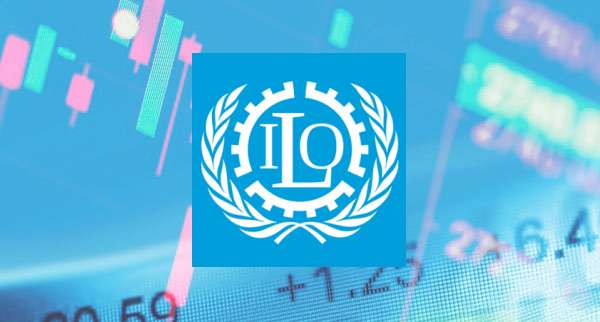 Job Growth Will Drop By 50 Globally In 2023 According To Ilo
Feb 14 2023
By Emily Clark
Job Growth Will Drop By 50 Globally In 2023 According To Ilo
Feb 14 2023
By Emily Clark
-
 Microsoft Plans To Layoff Thousands Of Employees Across Divisions
Feb 14 2023
By Emily Clark
Microsoft Plans To Layoff Thousands Of Employees Across Divisions
Feb 14 2023
By Emily Clark
-
 Indicator Reveals Shib Ada And Doge Are Undervalued
Feb 13 2023
By Emily Clark
Indicator Reveals Shib Ada And Doge Are Undervalued
Feb 13 2023
By Emily Clark
-
 Imf Believes Fragmentation Will Effect Global Gdp
Feb 13 2023
By Emily Clark
Imf Believes Fragmentation Will Effect Global Gdp
Feb 13 2023
By Emily Clark
-
 Goldman Sachs 4th Quarter Earnings Below Forecast Due To Credit Provision
Feb 12 2023
By Adam Rosen
Goldman Sachs 4th Quarter Earnings Below Forecast Due To Credit Provision
Feb 12 2023
By Adam Rosen
-
 Gold Could Touch 1900 If Dec Cpi Dips Below 65
Feb 12 2023
By Emily Clark
Gold Could Touch 1900 If Dec Cpi Dips Below 65
Feb 12 2023
By Emily Clark
-
 Former Coinbase Manager Brother Receives 10 Months Sentence In Insider Trading Case
Feb 11 2023
By Ashly Chole
Former Coinbase Manager Brother Receives 10 Months Sentence In Insider Trading Case
Feb 11 2023
By Ashly Chole
-
 Genesis Global Capital Is Still Optimistic About Resolving Creditor Disputes
Feb 11 2023
By Ashly Chole
Genesis Global Capital Is Still Optimistic About Resolving Creditor Disputes
Feb 11 2023
By Ashly Chole
-
 European Stock Futures Turn Lower Ahead Of Power Speech
Feb 10 2023
By Ashly Chole
European Stock Futures Turn Lower Ahead Of Power Speech
Feb 10 2023
By Ashly Chole
-
 Feds Sieze 700 Million Worth Of Assets From Bankman Fried
Feb 10 2023
By Ashly Chole
Feds Sieze 700 Million Worth Of Assets From Bankman Fried
Feb 10 2023
By Ashly Chole
-
 Euro At 9 Months High After Reports Of More Rate Hikes
Feb 09 2023
By Ashly Chole
Euro At 9 Months High After Reports Of More Rate Hikes
Feb 09 2023
By Ashly Chole
-
 Elon Musk Claims 2300 Active Employees Are Working At Twitter
Feb 09 2023
By Ashly Chole
Elon Musk Claims 2300 Active Employees Are Working At Twitter
Feb 09 2023
By Ashly Chole
-
 Eurjpy Price Forecast Upward Movement Is Expected
Feb 08 2023
By Emily Clark
Eurjpy Price Forecast Upward Movement Is Expected
Feb 08 2023
By Emily Clark
-
 Eu Shares Turn Higher With Fed Rate Path And Upcoming Eu Pmi Data
Feb 08 2023
By Adam Rosen
Eu Shares Turn Higher With Fed Rate Path And Upcoming Eu Pmi Data
Feb 08 2023
By Adam Rosen
-
 Ecb Lagarde Believes Reopening Of China Will Increase Inflation
Feb 07 2023
By Emily Clark
Ecb Lagarde Believes Reopening Of China Will Increase Inflation
Feb 07 2023
By Emily Clark
-
 Eth Price Forecast Ai Tool Suggests 1582 Price
Feb 07 2023
By Andrew Blumer
Eth Price Forecast Ai Tool Suggests 1582 Price
Feb 07 2023
By Andrew Blumer
-
 Dow Futures Remain Without Direction Focus On Earnings
Feb 06 2023
By Andrew Blumer
Dow Futures Remain Without Direction Focus On Earnings
Feb 06 2023
By Andrew Blumer
-
 Ecb Council Member Hints Towards 50 Bps Rate Hike In Feb And March
Feb 06 2023
By Ashly Chole
Ecb Council Member Hints Towards 50 Bps Rate Hike In Feb And March
Feb 06 2023
By Ashly Chole
-
 Credit Suisse Says Usdjpy Will Drop Down To 125 And Then 120
Feb 05 2023
By Ashly Chole
Credit Suisse Says Usdjpy Will Drop Down To 125 And Then 120
Feb 05 2023
By Ashly Chole
-
 Dollar Finds Its Bottom At 7 Months Low As Focus Turns Towards Yen
Feb 05 2023
By Adam Rosen
Dollar Finds Its Bottom At 7 Months Low As Focus Turns Towards Yen
Feb 05 2023
By Adam Rosen
-
 Coinbase Is Ceasing Operations In Japan To Cut Costs
Feb 04 2023
By Andrew Blumer
Coinbase Is Ceasing Operations In Japan To Cut Costs
Feb 04 2023
By Andrew Blumer
-
 China Growth Will Be Around 49 In 2023 With More Stimulus Ahead
Feb 04 2023
By Adam Rosen
China Growth Will Be Around 49 In 2023 With More Stimulus Ahead
Feb 04 2023
By Adam Rosen
-
 Canada Tsx Reaches 6 Weeks High Ahead Of Inflation Data
Feb 03 2023
By Andrew Blumer
Canada Tsx Reaches 6 Weeks High Ahead Of Inflation Data
Feb 03 2023
By Andrew Blumer
-
 Brokerages Give Hold Recommendation For 88 Inc Stock
Feb 03 2023
By Andrew Blumer
Brokerages Give Hold Recommendation For 88 Inc Stock
Feb 03 2023
By Andrew Blumer
-
 Brent Oil Continues To Trade Around 80 Amid Rising Stockpiles Of Usa
Feb 02 2023
By Andrew Blumer
Brent Oil Continues To Trade Around 80 Amid Rising Stockpiles Of Usa
Feb 02 2023
By Andrew Blumer
-
 Boe Says Banks Need To Learn Lessons From Last Year
Feb 02 2023
By Ashly Chole
Boe Says Banks Need To Learn Lessons From Last Year
Feb 02 2023
By Ashly Chole
-
 Bernstein Downgrades Salesforce Shares Sees More Pain Ahead
Feb 01 2023
By Andrew Blumer
Bernstein Downgrades Salesforce Shares Sees More Pain Ahead
Feb 01 2023
By Andrew Blumer
-
 Blackstone Plans To Sell Its 480 Million Stake In Indian Reits
Feb 01 2023
By Andrew Blumer
Blackstone Plans To Sell Its 480 Million Stake In Indian Reits
Feb 01 2023
By Andrew Blumer
-
 Barclays Cut Apple Stock Target Amid Production Problems
Jan 31 2023
By Andrew Blumer
Barclays Cut Apple Stock Target Amid Production Problems
Jan 31 2023
By Andrew Blumer
-
 Bank Of Japan Keeps Interest Rates And Yield Curve Policy Unchanged
Jan 31 2023
By Adam Rosen
Bank Of Japan Keeps Interest Rates And Yield Curve Policy Unchanged
Jan 31 2023
By Adam Rosen
-
 Apple Starts Layoffs In Its Retail Stores
Jan 30 2023
By Ashly Chole
Apple Starts Layoffs In Its Retail Stores
Jan 30 2023
By Ashly Chole
-
 Australia Business Conditions In December Remain Moderate With Easing Cost Pressure
Jan 30 2023
By Adam Rosen
Australia Business Conditions In December Remain Moderate With Easing Cost Pressure
Jan 30 2023
By Adam Rosen
-
 Amazon Aws Plans A 35 Billion Investment In Virginia
Jan 29 2023
By Ashly Chole
Amazon Aws Plans A 35 Billion Investment In Virginia
Jan 29 2023
By Ashly Chole
-
 Anthony Scaramucci Believes Bitcoin Will Touch 50000 In A Few Years
Jan 29 2023
By Ashly Chole
Anthony Scaramucci Believes Bitcoin Will Touch 50000 In A Few Years
Jan 29 2023
By Ashly Chole
-
 Alibaba Stock Gains On Improved Outlook For China
Jan 28 2023
By Emily Clark
Alibaba Stock Gains On Improved Outlook For China
Jan 28 2023
By Emily Clark
-
 Alphabet Plans To Layoff 12000 Employees Shifts Focus Towards Ai
Jan 28 2023
By Emily Clark
Alphabet Plans To Layoff 12000 Employees Shifts Focus Towards Ai
Jan 28 2023
By Emily Clark
-
 Us Inflation Data For November Was Good For Stocks
Jan 27 2023
By Andrew Blumer
Us Inflation Data For November Was Good For Stocks
Jan 27 2023
By Andrew Blumer
-
 Us Inflation Subsides While Consumer Spending Accelerates
Jan 27 2023
By Emily Clark
Us Inflation Subsides While Consumer Spending Accelerates
Jan 27 2023
By Emily Clark
-
 Us Factory Orders Data Remains Unchanged In August
Jan 26 2023
By Andrew Blumer
Us Factory Orders Data Remains Unchanged In August
Jan 26 2023
By Andrew Blumer
-
 Us Government And Crypto Headed For Showdown
Jan 26 2023
By Adam Rosen
Us Government And Crypto Headed For Showdown
Jan 26 2023
By Adam Rosen
-
 Us Dollar Index Experiences Its Worst Drop In 2 Years On Rumors Of China Reopening
Jan 25 2023
By Emily Clark
Us Dollar Index Experiences Its Worst Drop In 2 Years On Rumors Of China Reopening
Jan 25 2023
By Emily Clark
-
 Us Dollar Slump
Jan 25 2023
By Emily Clark
Us Dollar Slump
Jan 25 2023
By Emily Clark
-
 Uob Forecasts Downward Risks For Usdjpy
Jan 24 2023
By Adam Rosen
Uob Forecasts Downward Risks For Usdjpy
Jan 24 2023
By Adam Rosen
-
 Us Blocks Facebook From Buying Virtual Reality Company
Jan 24 2023
By Andrew Blumer
Us Blocks Facebook From Buying Virtual Reality Company
Jan 24 2023
By Andrew Blumer
-
 Uk Manufacturing Up
Jan 23 2023
By Adam Rosen
Uk Manufacturing Up
Jan 23 2023
By Adam Rosen
-
 Uk One Of Worlds Largest Forex Markets
Jan 23 2023
By Emily Clark
Uk One Of Worlds Largest Forex Markets
Jan 23 2023
By Emily Clark
-
 Uk Inflation Is At 40 Year High
Jan 22 2023
By Ashly Chole
Uk Inflation Is At 40 Year High
Jan 22 2023
By Ashly Chole
-
 Uk Food Inflation Reaches Its Highest Levels
Jan 22 2023
By Ashly Chole
Uk Food Inflation Reaches Its Highest Levels
Jan 22 2023
By Ashly Chole
-
 Uk Debt Rate Increases As The Pound Loses Its Strength
Jan 21 2023
By Emily Clark
Uk Debt Rate Increases As The Pound Loses Its Strength
Jan 21 2023
By Emily Clark
-
 Uk Economy Growth In Q3 Was The Slowest Among G7 Countries
Jan 21 2023
By Ashly Chole
Uk Economy Growth In Q3 Was The Slowest Among G7 Countries
Jan 21 2023
By Ashly Chole
-
 Twitter Stock Will Be Delisted From Nyse On 8th November
Jan 20 2023
By Ashly Chole
Twitter Stock Will Be Delisted From Nyse On 8th November
Jan 20 2023
By Ashly Chole
-
 Uk Crypto Assets May Get New Legal Definition
Jan 20 2023
By Ashly Chole
Uk Crypto Assets May Get New Legal Definition
Jan 20 2023
By Ashly Chole
-
 Twitter Shareholders Approved The Elon Musks Bid For Buying The Company
Jan 19 2023
By Andrew Blumer
Twitter Shareholders Approved The Elon Musks Bid For Buying The Company
Jan 19 2023
By Andrew Blumer
-
 Trading212 One The Biggest Broker In Uk And Europe
Jan 19 2023
By Andrew Blumer
Trading212 One The Biggest Broker In Uk And Europe
Jan 19 2023
By Andrew Blumer
-
 Trading With Fxpro
Jan 18 2023
By Emily Clark
Trading With Fxpro
Jan 18 2023
By Emily Clark
-
 Trading Yen On Forex
Jan 18 2023
By Adam Rosen
Trading Yen On Forex
Jan 18 2023
By Adam Rosen
-
 The Pound Lost 11 In 2022 One Of The Worst Years Since Brexit
Jan 17 2023
By Andrew Blumer
The Pound Lost 11 In 2022 One Of The Worst Years Since Brexit
Jan 17 2023
By Andrew Blumer
-
 Top Google Shareholder Larry Page
Jan 17 2023
By Adam Rosen
Top Google Shareholder Larry Page
Jan 17 2023
By Adam Rosen
-
 The Uk Is Sending Mixed Signals On Crypto
Jan 16 2023
By Adam Rosen
The Uk Is Sending Mixed Signals On Crypto
Jan 16 2023
By Adam Rosen
-
 The Volume On Ic Markets Exceeded 1 Trillion
Jan 16 2023
By Emily Clark
The Volume On Ic Markets Exceeded 1 Trillion
Jan 16 2023
By Emily Clark
-
 Tesla Stock Continues To Decline Despite Broader Market Rally
Jan 15 2023
By Adam Rosen
Tesla Stock Continues To Decline Despite Broader Market Rally
Jan 15 2023
By Adam Rosen
-
 Tesla Shanghai Plant Suspends Its Production
Jan 15 2023
By Emily Clark
Tesla Shanghai Plant Suspends Its Production
Jan 15 2023
By Emily Clark
-
 Russian Rouble Gains Strength After Its Biggest Weekly Loss
Jan 14 2023
By Emily Clark
Russian Rouble Gains Strength After Its Biggest Weekly Loss
Jan 14 2023
By Emily Clark
-
 Russian Oil Average Price Was 57
Jan 14 2023
By Ashly Chole
Russian Oil Average Price Was 57
Jan 14 2023
By Ashly Chole
-
 Prices Of Us Oil Power And Gas Turns Higher After Storm
Jan 13 2023
By Ashly Chole
Prices Of Us Oil Power And Gas Turns Higher After Storm
Jan 13 2023
By Ashly Chole
-
 Report Suggests Japan Will Life Ban On Stablecoins During 2023
Jan 13 2023
By Emily Clark
Report Suggests Japan Will Life Ban On Stablecoins During 2023
Jan 13 2023
By Emily Clark
-
 Price Target For Tesla Stock Cut By 33 As All Hopes Are Set On Model 2
Jan 12 2023
By Andrew Blumer
Price Target For Tesla Stock Cut By 33 As All Hopes Are Set On Model 2
Jan 12 2023
By Andrew Blumer
-
 Nikkei 225 Down Down By 103 On Poor Performance Of Japanese Stocks
Jan 12 2023
By Emily Clark
Nikkei 225 Down Down By 103 On Poor Performance Of Japanese Stocks
Jan 12 2023
By Emily Clark
-
 New Ftx Ceo Says It Would Take Several Months To Track Down Exchange Assets
Jan 11 2023
By Andrew Blumer
New Ftx Ceo Says It Would Take Several Months To Track Down Exchange Assets
Jan 11 2023
By Andrew Blumer
-
 Natural Gas Slides Below 7 After A Volatile Week
Jan 11 2023
By Emily Clark
Natural Gas Slides Below 7 After A Volatile Week
Jan 11 2023
By Emily Clark
-
 Microsoft Msft Wants To Buy Activision Blizzard Atvi For 69 Billion
Jan 10 2023
By Ashly Chole
Microsoft Msft Wants To Buy Activision Blizzard Atvi For 69 Billion
Jan 10 2023
By Ashly Chole
-
 Moscow Ready To Start Gas Supplies To Europe Once Again Through Yamal Europe Pipeline
Jan 10 2023
By Andrew Blumer
Moscow Ready To Start Gas Supplies To Europe Once Again Through Yamal Europe Pipeline
Jan 10 2023
By Andrew Blumer
-
 Mexico New Oil Refinery Will Reach Half Capacity By Mid 2023
Jan 09 2023
By Ashly Chole
Mexico New Oil Refinery Will Reach Half Capacity By Mid 2023
Jan 09 2023
By Ashly Chole
-
 Meta Platform Valneva And Tesla Rise Premarket
Jan 09 2023
By Andrew Blumer
Meta Platform Valneva And Tesla Rise Premarket
Jan 09 2023
By Andrew Blumer
-
 Mastercard Data Reveals Us Retail Sales Increased
Jan 08 2023
By Ashly Chole
Mastercard Data Reveals Us Retail Sales Increased
Jan 08 2023
By Ashly Chole
-
 Japanese Stock Market Edges Higher On Gains From Wall Street
Jan 08 2023
By Adam Rosen
Japanese Stock Market Edges Higher On Gains From Wall Street
Jan 08 2023
By Adam Rosen
-
 Growth Of Spanish Gdp Slowed Down In 3rd Quarter
Jan 07 2023
By Emily Clark
Growth Of Spanish Gdp Slowed Down In 3rd Quarter
Jan 07 2023
By Emily Clark
-
 Investors Pull 42 Billion From Stock Market Within 1 Week
Jan 07 2023
By Ashly Chole
Investors Pull 42 Billion From Stock Market Within 1 Week
Jan 07 2023
By Ashly Chole
-
 Goldman Sachs Says Fed Will Continue To Battle Inflation
Jan 06 2023
By Adam Rosen
Goldman Sachs Says Fed Will Continue To Battle Inflation
Jan 06 2023
By Adam Rosen
-
 Gold Xauusd Forecast Suggests 1800 Price Level Is Important For Bulls
Jan 06 2023
By Ashly Chole
Gold Xauusd Forecast Suggests 1800 Price Level Is Important For Bulls
Jan 06 2023
By Ashly Chole
-
 Gbpusd Forecast For 2023 Gbp Pound Sterling Will Struggle Due To Economic Woes
Jan 05 2023
By Ashly Chole
Gbpusd Forecast For 2023 Gbp Pound Sterling Will Struggle Due To Economic Woes
Jan 05 2023
By Ashly Chole
-
 European Gras Prices At 6 Months Low Due To Low Demand
Jan 05 2023
By Ashly Chole
European Gras Prices At 6 Months Low Due To Low Demand
Jan 05 2023
By Ashly Chole
-
 Economist Believes That German Inflation Will Stay Higher For Next 2 Years
Jan 04 2023
By Adam Rosen
Economist Believes That German Inflation Will Stay Higher For Next 2 Years
Jan 04 2023
By Adam Rosen
-
 Economist Warns That Btc Will Experience More Downside Risk
Jan 04 2023
By Ashly Chole
Economist Warns That Btc Will Experience More Downside Risk
Jan 04 2023
By Ashly Chole
-
 Eurusd Moves Below 10600 On Higher Us Yields
Jan 03 2023
By Adam Rosen
Eurusd Moves Below 10600 On Higher Us Yields
Jan 03 2023
By Adam Rosen
-
 Eurusd Is Staying Close To 10610
Jan 03 2023
By Andrew Blumer
Eurusd Is Staying Close To 10610
Jan 03 2023
By Andrew Blumer
-
 Ecb Rate Hikes Are Highly Worrying For Italy According To Its Economic Minister
Jan 02 2023
By Ashly Chole
Ecb Rate Hikes Are Highly Worrying For Italy According To Its Economic Minister
Jan 02 2023
By Ashly Chole
-
 Dow Futures Shed 75 Points Ahead Of Jobless Claims Data
Jan 02 2023
By Andrew Blumer
Dow Futures Shed 75 Points Ahead Of Jobless Claims Data
Jan 02 2023
By Andrew Blumer
-
 Crude Oil Turns Higher On Back Of Expectations That Russian Exports Will Drop
Jan 01 2023
By Emily Clark
Crude Oil Turns Higher On Back Of Expectations That Russian Exports Will Drop
Jan 01 2023
By Emily Clark
-
 Cathi Wood Ark Invest Purchased 11 Million Worth Of Coinbase Stock
Jan 01 2023
By Andrew Blumer
Cathi Wood Ark Invest Purchased 11 Million Worth Of Coinbase Stock
Jan 01 2023
By Andrew Blumer
-
 Canada Economy Shows Consistent Growth With A Chance For More Hikes
Dec 31 2022
By Adam Rosen
Canada Economy Shows Consistent Growth With A Chance For More Hikes
Dec 31 2022
By Adam Rosen
-
 Bitcoin Btc Could Rally After 8 Months According To Katie Stockton
Dec 31 2022
By Andrew Blumer
Bitcoin Btc Could Rally After 8 Months According To Katie Stockton
Dec 31 2022
By Andrew Blumer
-
 Big Short Famed Danny Moses Tells Investors To Stay Way From Tesla
Dec 30 2022
By Ashly Chole
Big Short Famed Danny Moses Tells Investors To Stay Way From Tesla
Dec 30 2022
By Ashly Chole
-
 Binance Exchange Temporarily Freezes Usdc Withdrawals
Dec 30 2022
By Adam Rosen
Binance Exchange Temporarily Freezes Usdc Withdrawals
Dec 30 2022
By Adam Rosen
-
 Analysts Forecast A Rally In The Sp 500 Index On The Back Of Usd Weakness
Dec 29 2022
By Ashly Chole
Analysts Forecast A Rally In The Sp 500 Index On The Back Of Usd Weakness
Dec 29 2022
By Ashly Chole
-
 Apple Faces More Threats Due To Covid Wave In China
Dec 29 2022
By Adam Rosen
Apple Faces More Threats Due To Covid Wave In China
Dec 29 2022
By Adam Rosen
-
 Analysts Are Still Bullish On Micron Technology Despite Poor Results
Dec 28 2022
By Andrew Blumer
Analysts Are Still Bullish On Micron Technology Despite Poor Results
Dec 28 2022
By Andrew Blumer
-
 Amazon Stock Loses 50 Of Its Value
Dec 28 2022
By Andrew Blumer
Amazon Stock Loses 50 Of Its Value
Dec 28 2022
By Andrew Blumer
-
 The Best Investments Of Elon Musk
Dec 27 2022
By Ashly Chole
The Best Investments Of Elon Musk
Dec 27 2022
By Ashly Chole
-
 Teslas Run Of Record Deliveries May Be Reaching The End Of The Road
Dec 27 2022
By Andrew Blumer
Teslas Run Of Record Deliveries May Be Reaching The End Of The Road
Dec 27 2022
By Andrew Blumer
-
 Price Pressure Eases According To Latest Boe Survey
Dec 26 2022
By Emily Clark
Price Pressure Eases According To Latest Boe Survey
Dec 26 2022
By Emily Clark
-
 Salesforce Shares Drop Lower After Ceo Exit
Dec 26 2022
By Emily Clark
Salesforce Shares Drop Lower After Ceo Exit
Dec 26 2022
By Emily Clark
-
 Oil Prices Turn Higher
Dec 25 2022
By Emily Clark
Oil Prices Turn Higher
Dec 25 2022
By Emily Clark
-
 Pound Gbp Registers Its Biggest Monthly Gain
Dec 25 2022
By Ashly Chole
Pound Gbp Registers Its Biggest Monthly Gain
Dec 25 2022
By Ashly Chole
-
 Opec Consider Market Conditions
Dec 24 2022
By Adam Rosen
Opec Consider Market Conditions
Dec 24 2022
By Adam Rosen
-
 Oil Prices Rise After China Eases Its Covid Restrictions
Dec 24 2022
By Andrew Blumer
Oil Prices Rise After China Eases Its Covid Restrictions
Dec 24 2022
By Andrew Blumer
-
 Musk Says Twitter Employees Can Still Receive Stock
Dec 23 2022
By Emily Clark
Musk Says Twitter Employees Can Still Receive Stock
Dec 23 2022
By Emily Clark
-
 Nvidia Revenue Drops
Dec 23 2022
By Emily Clark
Nvidia Revenue Drops
Dec 23 2022
By Emily Clark
-
 Meta Stock Is At 85 Month Low Is It The Right Time To Buy
Dec 22 2022
By Ashly Chole
Meta Stock Is At 85 Month Low Is It The Right Time To Buy
Dec 22 2022
By Ashly Chole
-
 Morgan Stanley Believes Sp 500 Will Bottom Out
Dec 22 2022
By Adam Rosen
Morgan Stanley Believes Sp 500 Will Bottom Out
Dec 22 2022
By Adam Rosen
-
 Major Investor Asks Alphabet To Cut Pay And Staff
Dec 21 2022
By Andrew Blumer
Major Investor Asks Alphabet To Cut Pay And Staff
Dec 21 2022
By Andrew Blumer
-
 Kraken To Cut Global Workforce
Dec 21 2022
By Adam Rosen
Kraken To Cut Global Workforce
Dec 21 2022
By Adam Rosen
-
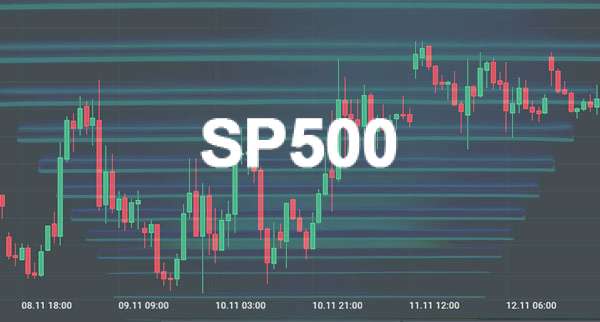 Goldman Sachs Says The Sp 500 Will Remain Flat
Dec 20 2022
By Adam Rosen
Goldman Sachs Says The Sp 500 Will Remain Flat
Dec 20 2022
By Adam Rosen
-
 Gold Forecast It Could Reach 1600
Dec 20 2022
By Ashly Chole
Gold Forecast It Could Reach 1600
Dec 20 2022
By Ashly Chole
-
 Gbpusd Turns Higher
Dec 19 2022
By Ashly Chole
Gbpusd Turns Higher
Dec 19 2022
By Ashly Chole
-
 Global Factory Activity Dropped In November
Dec 19 2022
By Adam Rosen
Global Factory Activity Dropped In November
Dec 19 2022
By Adam Rosen
-
 Elon Musk Lost 100 Billion This Year Due To Drop In Tesla Shares
Dec 18 2022
By Emily Clark
Elon Musk Lost 100 Billion This Year Due To Drop In Tesla Shares
Dec 18 2022
By Emily Clark
-
 European Shares Turn Higher After Powell Speech
Dec 18 2022
By Emily Clark
European Shares Turn Higher After Powell Speech
Dec 18 2022
By Emily Clark
-
 Eurusd Turns Higher After Powell Speech
Dec 17 2022
By Emily Clark
Eurusd Turns Higher After Powell Speech
Dec 17 2022
By Emily Clark
-
 Eurusd Turns Below 10400 After The German Cpi Data
Dec 17 2022
By Emily Clark
Eurusd Turns Below 10400 After The German Cpi Data
Dec 17 2022
By Emily Clark
-
 Eurnok The Year 2023 Will Be Better For The Krone
Dec 16 2022
By Andrew Blumer
Eurnok The Year 2023 Will Be Better For The Krone
Dec 16 2022
By Andrew Blumer
-
 Eu Leaders Agree On A 60 Price Cap For Russian Oil
Dec 16 2022
By Andrew Blumer
Eu Leaders Agree On A 60 Price Cap For Russian Oil
Dec 16 2022
By Andrew Blumer
-
 Double Digit Inflation In Euro Zone Is Here To Stay
Dec 15 2022
By Ashly Chole
Double Digit Inflation In Euro Zone Is Here To Stay
Dec 15 2022
By Ashly Chole
-
 Dow Futures Decline
Dec 15 2022
By Ashly Chole
Dow Futures Decline
Dec 15 2022
By Ashly Chole
-
 Dogecoin Price Prediction A 20 Gain Is Highly Likely
Dec 14 2022
By Emily Clark
Dogecoin Price Prediction A 20 Gain Is Highly Likely
Dec 14 2022
By Emily Clark
-
 Canada Reported Billion Budget Surplus
Dec 14 2022
By Emily Clark
Canada Reported Billion Budget Surplus
Dec 14 2022
By Emily Clark
-
 Boj Plans To Trail Digital Yen With Selected Banks
Dec 13 2022
By Ashly Chole
Boj Plans To Trail Digital Yen With Selected Banks
Dec 13 2022
By Ashly Chole
-
 Bitfront Us Crypto Exchange Shuts Down
Dec 13 2022
By Ashly Chole
Bitfront Us Crypto Exchange Shuts Down
Dec 13 2022
By Ashly Chole
-
 Bitcoin Witnesses One Of The Worst Monthly Close In The Last 2 Years
Dec 12 2022
By Ashly Chole
Bitcoin Witnesses One Of The Worst Monthly Close In The Last 2 Years
Dec 12 2022
By Ashly Chole
-
 Bitcoin Is At Multiyear Low Amid Ftx Collapse
Dec 12 2022
By Adam Rosen
Bitcoin Is At Multiyear Low Amid Ftx Collapse
Dec 12 2022
By Adam Rosen
-
 Bitcoin Btc Has Formed A Bottom
Dec 11 2022
By Andrew Blumer
Bitcoin Btc Has Formed A Bottom
Dec 11 2022
By Andrew Blumer
-
 Bitcoin Could Touch 110000 In 2023
Dec 11 2022
By Emily Clark
Bitcoin Could Touch 110000 In 2023
Dec 11 2022
By Emily Clark
-
 Binance Ceo Announces 1 Billion Fund For Distressed Crypto Assets
Dec 10 2022
By Ashly Chole
Binance Ceo Announces 1 Billion Fund For Distressed Crypto Assets
Dec 10 2022
By Ashly Chole
-
 Binance Hires An Audit Firm To Verify Crypto Reserves
Dec 10 2022
By Andrew Blumer
Binance Hires An Audit Firm To Verify Crypto Reserves
Dec 10 2022
By Andrew Blumer
-
 Best Month For Eurusd
Dec 09 2022
By Adam Rosen
Best Month For Eurusd
Dec 09 2022
By Adam Rosen
-
 Billionaire Bill Ackman Warns That Fed Will Struggle To Combat Inflation
Dec 09 2022
By Emily Clark
Billionaire Bill Ackman Warns That Fed Will Struggle To Combat Inflation
Dec 09 2022
By Emily Clark
-
 Apple Value Exceeds Amazon Meta And Alphabet
Dec 07 2022
By Emily Clark
Apple Value Exceeds Amazon Meta And Alphabet
Dec 07 2022
By Emily Clark
-
 Australian Cpi Forecast Inflation To Turn Higher
Dec 07 2022
By Ashly Chole
Australian Cpi Forecast Inflation To Turn Higher
Dec 07 2022
By Ashly Chole
-
 Apple Fourth Quarter Estimates Slashed
Dec 06 2022
By Andrew Blumer
Apple Fourth Quarter Estimates Slashed
Dec 06 2022
By Andrew Blumer
-
 Amazon Technical Analysis Hints At Corrective Trend
Dec 06 2022
By Emily Clark
Amazon Technical Analysis Hints At Corrective Trend
Dec 06 2022
By Emily Clark
-
 Alibaba Stock Moves Higher
Dec 05 2022
By Ashly Chole
Alibaba Stock Moves Higher
Dec 05 2022
By Ashly Chole
-
 3rd Quarter Gdp Growth In Usa Is Revised
Dec 05 2022
By Ashly Chole
3rd Quarter Gdp Growth In Usa Is Revised
Dec 05 2022
By Ashly Chole
-
 Tesla Required Its Employees To Wear Uniform And Violated Labor Law
Dec 04 2022
By Emily Clark
Tesla Required Its Employees To Wear Uniform And Violated Labor Law
Dec 04 2022
By Emily Clark
-
 Tesla Misses Its Delivery Estimates Due To Logistic Snarls
Dec 04 2022
By Emily Clark
Tesla Misses Its Delivery Estimates Due To Logistic Snarls
Dec 04 2022
By Emily Clark
-
 Strong Resistance Waiting For Eurusd Bulls At Parity Zone
Dec 03 2022
By Ashly Chole
Strong Resistance Waiting For Eurusd Bulls At Parity Zone
Dec 03 2022
By Ashly Chole
-
 Steve Wozniak Believes Ethereum Might Be The Next Apple
Dec 03 2022
By Andrew Blumer
Steve Wozniak Believes Ethereum Might Be The Next Apple
Dec 03 2022
By Andrew Blumer
-
 Steve Jobs Best Innovations
Dec 02 2022
By Andrew Blumer
Steve Jobs Best Innovations
Dec 02 2022
By Andrew Blumer
-
 Spreadex Reduces Forex Minimum Stakes And Introduces New Indices
Dec 02 2022
By Ashly Chole
Spreadex Reduces Forex Minimum Stakes And Introduces New Indices
Dec 02 2022
By Ashly Chole
-
 Spotify Business Side Of Music Streaming
Dec 01 2022
By Andrew Blumer
Spotify Business Side Of Music Streaming
Dec 01 2022
By Andrew Blumer
-
 Shopify Stock Rises Upwards After Better Than Expected Earnings
Dec 01 2022
By Ashly Chole
Shopify Stock Rises Upwards After Better Than Expected Earnings
Dec 01 2022
By Ashly Chole
-
 Sp 500 Looking To Test Resistance At 3806 Once Again
Nov 30 2022
By Ashly Chole
Sp 500 Looking To Test Resistance At 3806 Once Again
Nov 30 2022
By Ashly Chole
-
 Seller Exhaustion In Bitcoin Points Towards End Of Bear Market
Nov 30 2022
By Emily Clark
Seller Exhaustion In Bitcoin Points Towards End Of Bear Market
Nov 30 2022
By Emily Clark
-
 Sp 500 Could Drop Another 16 Unless The Fed Slashes Interest Rates
Nov 29 2022
By Adam Rosen
Sp 500 Could Drop Another 16 Unless The Fed Slashes Interest Rates
Nov 29 2022
By Adam Rosen
-
 Russia Lng Exports At Record Highs Ahead Of Harsh Winters
Nov 29 2022
By Andrew Blumer
Russia Lng Exports At Record Highs Ahead Of Harsh Winters
Nov 29 2022
By Andrew Blumer
-
 Platinum Pl Is Looking For A Bottom
Nov 28 2022
By Adam Rosen
Platinum Pl Is Looking For A Bottom
Nov 28 2022
By Adam Rosen
-
 Recent Selloff In Amazon Pushes The Market Cap Below 1 Trillion
Nov 28 2022
By Andrew Blumer
Recent Selloff In Amazon Pushes The Market Cap Below 1 Trillion
Nov 28 2022
By Andrew Blumer
-
 Oil Prices Could Reach 70 After The Winter Season
Nov 27 2022
By Andrew Blumer
Oil Prices Could Reach 70 After The Winter Season
Nov 27 2022
By Andrew Blumer
-
 Microsoft And Google Affected By Slowing Economy
Nov 27 2022
By Ashly Chole
Microsoft And Google Affected By Slowing Economy
Nov 27 2022
By Ashly Chole
-
 Meta Stock Inches Higher As It Starts Mass Layoffs
Nov 26 2022
By Emily Clark
Meta Stock Inches Higher As It Starts Mass Layoffs
Nov 26 2022
By Emily Clark
-
 Meta Lost Multibillion Dallars From Its Metaverse Project
Nov 26 2022
By Andrew Blumer
Meta Lost Multibillion Dallars From Its Metaverse Project
Nov 26 2022
By Andrew Blumer
-
 Meta And Snap Shares Turn Bullish After Fcc Comment About Banning Tiktok
Nov 25 2022
By Adam Rosen
Meta And Snap Shares Turn Bullish After Fcc Comment About Banning Tiktok
Nov 25 2022
By Adam Rosen
-
 Major Investment Firm Sold Nvidia Shares Before Q3 Earnings Report
Nov 25 2022
By Adam Rosen
Major Investment Firm Sold Nvidia Shares Before Q3 Earnings Report
Nov 25 2022
By Adam Rosen
-
 Japan Fx Reserves Fall As Tokyo Attempts To Support Yen
Nov 24 2022
By Adam Rosen
Japan Fx Reserves Fall As Tokyo Attempts To Support Yen
Nov 24 2022
By Adam Rosen
-
 Intel Plans To Announce Layoffs In Q4 To Decrease Spending
Nov 24 2022
By Andrew Blumer
Intel Plans To Announce Layoffs In Q4 To Decrease Spending
Nov 24 2022
By Andrew Blumer
-
 Gold Xauusd Recent Upswing Is Lacking Fundamental Support
Nov 23 2022
By Adam Rosen
Gold Xauusd Recent Upswing Is Lacking Fundamental Support
Nov 23 2022
By Adam Rosen
-
 Inflation In Uk Shops At 17 Years Record High
Nov 23 2022
By Adam Rosen
Inflation In Uk Shops At 17 Years Record High
Nov 23 2022
By Adam Rosen
-
 Gbpusd Forecast Us Cpi Data Is A Major Risk For Recovery
Nov 22 2022
By Andrew Blumer
Gbpusd Forecast Us Cpi Data Is A Major Risk For Recovery
Nov 22 2022
By Andrew Blumer
-
 Gold Trading Close To 1700 Ahead Of Midterm Elections
Nov 22 2022
By Adam Rosen
Gold Trading Close To 1700 Ahead Of Midterm Elections
Nov 22 2022
By Adam Rosen
-
 Fed Could Introduce Rate Cuts In The Later Half Of 2023
Nov 21 2022
By Andrew Blumer
Fed Could Introduce Rate Cuts In The Later Half Of 2023
Nov 21 2022
By Andrew Blumer
-
 Fed Kashkari Believes Wages Are Not Driving Inflation
Nov 21 2022
By Emily Clark
Fed Kashkari Believes Wages Are Not Driving Inflation
Nov 21 2022
By Emily Clark
-
 Ftx Received 6 Billion Worth Of Withdrawal Request In 72 Hours
Nov 20 2022
By Andrew Blumer
Ftx Received 6 Billion Worth Of Withdrawal Request In 72 Hours
Nov 20 2022
By Andrew Blumer
-
 Fed Could Further Raise Interest Rates Before Slowing Down
Nov 20 2022
By Ashly Chole
Fed Could Further Raise Interest Rates Before Slowing Down
Nov 20 2022
By Ashly Chole
-
 Europes Inflation Reaches 107 Hard Options Ahead For Officials
Nov 19 2022
By Andrew Blumer
Europes Inflation Reaches 107 Hard Options Ahead For Officials
Nov 19 2022
By Andrew Blumer
-
 Ftse 100 Dragged Down By Mining And Energy Stocks
Nov 19 2022
By Emily Clark
Ftse 100 Dragged Down By Mining And Energy Stocks
Nov 19 2022
By Emily Clark
-
 Elon Musk Sold Tesla Shares Worth 4 Billion After Twitter Buyout
Nov 18 2022
By Ashly Chole
Elon Musk Sold Tesla Shares Worth 4 Billion After Twitter Buyout
Nov 18 2022
By Ashly Chole
-
 European Natural Gas Prices Could Fall By 30 In The Next Few Months
Nov 18 2022
By Emily Clark
European Natural Gas Prices Could Fall By 30 In The Next Few Months
Nov 18 2022
By Emily Clark
-
 Elon Musk Plans To Lay Off Half Of Twitter Jobs
Nov 17 2022
By Andrew Blumer
Elon Musk Plans To Lay Off Half Of Twitter Jobs
Nov 17 2022
By Andrew Blumer
-
 Elon Musk Considers Adding Paywall To Twitter
Nov 17 2022
By Emily Clark
Elon Musk Considers Adding Paywall To Twitter
Nov 17 2022
By Emily Clark
-
 Dogecoin Drops 6 On Movement By Big Investors Whales
Nov 16 2022
By Emily Clark
Dogecoin Drops 6 On Movement By Big Investors Whales
Nov 16 2022
By Emily Clark
-
 Eurusd Close To Parity Ahead Of Us Inflation And Ecb Bulletin
Nov 16 2022
By Emily Clark
Eurusd Close To Parity Ahead Of Us Inflation And Ecb Bulletin
Nov 16 2022
By Emily Clark
-
 Collapse Of Ftx Eth Reserves Intensifies The Liquidity Problem
Nov 15 2022
By Emily Clark
Collapse Of Ftx Eth Reserves Intensifies The Liquidity Problem
Nov 15 2022
By Emily Clark
-
 Cisco Csco Could Exceed Its Earning Estimates
Nov 15 2022
By Andrew Blumer
Cisco Csco Could Exceed Its Earning Estimates
Nov 15 2022
By Andrew Blumer
-
 Crypto Analyst Claims Btc Is Forming A Multi Month Bottom
Nov 15 2022
By Andrew Blumer
Crypto Analyst Claims Btc Is Forming A Multi Month Bottom
Nov 15 2022
By Andrew Blumer
-
 Bitcoin And Ethereum Drops After Fed Chair Announces Plan For Future Rate Hikes
Nov 14 2022
By Andrew Blumer
Bitcoin And Ethereum Drops After Fed Chair Announces Plan For Future Rate Hikes
Nov 14 2022
By Andrew Blumer
-
 Cac 40 And Dax Technical Outlook Possible Top Formation Ahead
Nov 14 2022
By Emily Clark
Cac 40 And Dax Technical Outlook Possible Top Formation Ahead
Nov 14 2022
By Emily Clark
-
 Apple Freeze Its Hiring Process For The Next Year According To Insiders
Nov 13 2022
By Andrew Blumer
Apple Freeze Its Hiring Process For The Next Year According To Insiders
Nov 13 2022
By Andrew Blumer
-
 Amazon Stock Drops 20 After Missing Revenue Expectations
Nov 13 2022
By Adam Rosen
Amazon Stock Drops 20 After Missing Revenue Expectations
Nov 13 2022
By Adam Rosen
-
 Alphabet Failed To Achieve Earnings Target As Youtube Revenue Shrinks
Nov 12 2022
By Andrew Blumer
Alphabet Failed To Achieve Earnings Target As Youtube Revenue Shrinks
Nov 12 2022
By Andrew Blumer
-
 Advertisers Pull Back From Twitter Amid Fears Of Policy Change
Nov 12 2022
By Emily Clark
Advertisers Pull Back From Twitter Amid Fears Of Policy Change
Nov 12 2022
By Emily Clark
-
 Adobe Stock Jumps Higher On Next Year Estimates
Nov 11 2022
By Adam Rosen
Adobe Stock Jumps Higher On Next Year Estimates
Nov 11 2022
By Adam Rosen
-
 Audusd Getting Close To Triangle Breakout
Nov 11 2022
By Ashly Chole
Audusd Getting Close To Triangle Breakout
Nov 11 2022
By Ashly Chole
-
 Solana Faces Yet Another Major Network Outage
Nov 10 2022
By Andrew Blumer
Solana Faces Yet Another Major Network Outage
Nov 10 2022
By Andrew Blumer
-
 Solana Sol Is Better Than Ethereum
Nov 10 2022
By Adam Rosen
Solana Sol Is Better Than Ethereum
Nov 10 2022
By Adam Rosen
-
 Should I Open An Etoro Account To Buy Bitcoin
Nov 09 2022
By Emily Clark
Should I Open An Etoro Account To Buy Bitcoin
Nov 09 2022
By Emily Clark
-
 Shopify Reducing Its Workforce While Increase Pay For Remaining Ones
Nov 09 2022
By Adam Rosen
Shopify Reducing Its Workforce While Increase Pay For Remaining Ones
Nov 09 2022
By Adam Rosen
-
 Shopify Announces Staff Cuts
Nov 08 2022
By Emily Clark
Shopify Announces Staff Cuts
Nov 08 2022
By Emily Clark
-
 Shopify Ceo Buys 3 Million Worth Of Coinbase Stock Within 2 Months
Nov 08 2022
By Emily Clark
Shopify Ceo Buys 3 Million Worth Of Coinbase Stock Within 2 Months
Nov 08 2022
By Emily Clark
-
 Shiba Inu Increases Its Burn Rate By 3000 Percent Within 24 Hours
Nov 07 2022
By Andrew Blumer
Shiba Inu Increases Its Burn Rate By 3000 Percent Within 24 Hours
Nov 07 2022
By Andrew Blumer
-
 Sell Ethereum Google Search Up 900 Percent
Nov 07 2022
By Emily Clark
Sell Ethereum Google Search Up 900 Percent
Nov 07 2022
By Emily Clark
-
 Satoshi Nakamoto The Founder Of Bitcoin
Nov 06 2022
By Andrew Blumer
Satoshi Nakamoto The Founder Of Bitcoin
Nov 06 2022
By Andrew Blumer
-
 Satya Nadella Sold 285 Million In Microsoft Stock
Nov 06 2022
By Andrew Blumer
Satya Nadella Sold 285 Million In Microsoft Stock
Nov 06 2022
By Andrew Blumer
-
 Snack Most Rapidly Expanding Igaming Cryptocurrency
Nov 05 2022
By Ashly Chole
Snack Most Rapidly Expanding Igaming Cryptocurrency
Nov 05 2022
By Ashly Chole
-
 Sp500 Nasdaq Big Gains
Nov 05 2022
By Andrew Blumer
Sp500 Nasdaq Big Gains
Nov 05 2022
By Andrew Blumer
-
 Sandp Downgraded Uk Rating After Plans Of Tax Cut
Nov 04 2022
By Ashly Chole
Sandp Downgraded Uk Rating After Plans Of Tax Cut
Nov 04 2022
By Ashly Chole
-
 Sap Announces Extension Of Share Repurchase Program
Nov 04 2022
By Ashly Chole
Sap Announces Extension Of Share Repurchase Program
Nov 04 2022
By Ashly Chole
-
 Richest Man Of Asia Mukesh Ambani
Nov 03 2022
By Adam Rosen
Richest Man Of Asia Mukesh Ambani
Nov 03 2022
By Adam Rosen
-
 Roboforex Win 2 International Awards
Nov 03 2022
By Ashly Chole
Roboforex Win 2 International Awards
Nov 03 2022
By Ashly Chole
-
 Richard Branson Financial Success Formula
Nov 02 2022
By Ashly Chole
Richard Branson Financial Success Formula
Nov 02 2022
By Ashly Chole
-
 Rebound In Us Consumer Spending But Inflation Is Eroding Demand
Nov 02 2022
By Ashly Chole
Rebound In Us Consumer Spending But Inflation Is Eroding Demand
Nov 02 2022
By Ashly Chole
-
 Qualcomm And Meta Platforms Join Forces To Enter Into Metaverse
Nov 01 2022
By Ashly Chole
Qualcomm And Meta Platforms Join Forces To Enter Into Metaverse
Nov 01 2022
By Ashly Chole
-
 Preston Van Loon Believes Ethereum Merge Will Break The Internet
Nov 01 2022
By Emily Clark
Preston Van Loon Believes Ethereum Merge Will Break The Internet
Nov 01 2022
By Emily Clark
-
 Pound Inflation In 2022
Oct 31 2022
By Adam Rosen
Pound Inflation In 2022
Oct 31 2022
By Adam Rosen
-
 Pound Faces Crisis
Oct 31 2022
By Andrew Blumer
Pound Faces Crisis
Oct 31 2022
By Andrew Blumer
-
 Polygon Matic Buyers Should Be Cautious Of Resistance
Oct 30 2022
By Adam Rosen
Polygon Matic Buyers Should Be Cautious Of Resistance
Oct 30 2022
By Adam Rosen
-
 Polkadot Price Action Is Mixed Amidst Technical Barriers
Oct 30 2022
By Andrew Blumer
Polkadot Price Action Is Mixed Amidst Technical Barriers
Oct 30 2022
By Andrew Blumer
-
 Output Forecast Of Tesla Jumps During Q4 Growth In 2023 Also Likely
Oct 29 2022
By Andrew Blumer
Output Forecast Of Tesla Jumps During Q4 Growth In 2023 Also Likely
Oct 29 2022
By Andrew Blumer
-
 One Of Warren Buffets Companies Lost 44 Billion
Oct 29 2022
By Andrew Blumer
One Of Warren Buffets Companies Lost 44 Billion
Oct 29 2022
By Andrew Blumer
-
 Nvidia Is Closing Its Russian Operations Due To Ukraine War
Oct 28 2022
By Ashly Chole
Nvidia Is Closing Its Russian Operations Due To Ukraine War
Oct 28 2022
By Ashly Chole
-
 Nvidia Vs Amd Stock Which One Is Better
Oct 28 2022
By Ashly Chole
Nvidia Vs Amd Stock Which One Is Better
Oct 28 2022
By Ashly Chole
-
 Nvidia Stock Dips Lower After Chip Sales Restriction To China
Oct 27 2022
By Ashly Chole
Nvidia Stock Dips Lower After Chip Sales Restriction To China
Oct 27 2022
By Ashly Chole
-
 Nvidia Chip Restrictions Will Not Effect Nio
Oct 27 2022
By Ashly Chole
Nvidia Chip Restrictions Will Not Effect Nio
Oct 27 2022
By Ashly Chole
-
 More People Join The Dogecoin Lawsuit Against Elon Musk
Oct 26 2022
By Adam Rosen
More People Join The Dogecoin Lawsuit Against Elon Musk
Oct 26 2022
By Adam Rosen
-
 Nvidia And Amd Post Strong Growth
Oct 26 2022
By Emily Clark
Nvidia And Amd Post Strong Growth
Oct 26 2022
By Emily Clark
-
 More Pain To Follow Yen As It Prepares For The Worst Year Since 1970
Oct 25 2022
By Ashly Chole
More Pain To Follow Yen As It Prepares For The Worst Year Since 1970
Oct 25 2022
By Ashly Chole
-
 Microsoft And Alphabet At 1 Years Low After Apple Rating Downgrade
Oct 25 2022
By Andrew Blumer
Microsoft And Alphabet At 1 Years Low After Apple Rating Downgrade
Oct 25 2022
By Andrew Blumer
-
 Microstrategy Ceo Believes Bitcoin Could Touch 500000 In Next 10 Years
Oct 24 2022
By Andrew Blumer
Microstrategy Ceo Believes Bitcoin Could Touch 500000 In Next 10 Years
Oct 24 2022
By Andrew Blumer
-
 Microstrategy Plans To Buy 500 Million Worth Of Btc
Oct 24 2022
By Ashly Chole
Microstrategy Plans To Buy 500 Million Worth Of Btc
Oct 24 2022
By Ashly Chole
-
 Meta Halts Crypto Payments
Oct 23 2022
By Adam Rosen
Meta Halts Crypto Payments
Oct 23 2022
By Adam Rosen
-
 Meta Posts Revenue Drop
Oct 23 2022
By Ashly Chole
Meta Posts Revenue Drop
Oct 23 2022
By Ashly Chole
-
 Meta Bets On Tiktok Style Videos
Oct 22 2022
By Emily Clark
Meta Bets On Tiktok Style Videos
Oct 22 2022
By Emily Clark
-
 Meta Outlook Was Too Positive
Oct 22 2022
By Emily Clark
Meta Outlook Was Too Positive
Oct 22 2022
By Emily Clark
-
 Ma Huateng Founder Of Tencent Holdings Shares Stock Lost
Oct 21 2022
By Emily Clark
Ma Huateng Founder Of Tencent Holdings Shares Stock Lost
Oct 21 2022
By Emily Clark
-
 Meta Fined 400 Million For Breakin Eu Data Privacy Laws
Oct 21 2022
By Andrew Blumer
Meta Fined 400 Million For Breakin Eu Data Privacy Laws
Oct 21 2022
By Andrew Blumer
-
 Key Results For Block Inc Second Quarter Right
Oct 20 2022
By Andrew Blumer
Key Results For Block Inc Second Quarter Right
Oct 20 2022
By Andrew Blumer
-
 Larry Ellison Is Stepping Down As Ceo Of Oracle Inc
Oct 20 2022
By Adam Rosen
Larry Ellison Is Stepping Down As Ceo Of Oracle Inc
Oct 20 2022
By Adam Rosen
-
 Intel Ceo Believes Company Will Lose More Market Share To Amd
Oct 19 2022
By Adam Rosen
Intel Ceo Believes Company Will Lose More Market Share To Amd
Oct 19 2022
By Adam Rosen
-
 Intel Mobileye Selfdriving Car Divison Files For Ipo
Oct 19 2022
By Adam Rosen
Intel Mobileye Selfdriving Car Divison Files For Ipo
Oct 19 2022
By Adam Rosen
-
 Inflation In Europe Is Now Officially In Double Digits
Oct 18 2022
By Ashly Chole
Inflation In Europe Is Now Officially In Double Digits
Oct 18 2022
By Ashly Chole
-
 Google And Amazon Stock Price Targets Lowered After Recession Risk
Oct 18 2022
By Emily Clark
Google And Amazon Stock Price Targets Lowered After Recession Risk
Oct 18 2022
By Emily Clark
-
 Facebook Stock Has Entered Death Spiral After Sales Drop
Oct 17 2022
By Ashly Chole
Facebook Stock Has Entered Death Spiral After Sales Drop
Oct 17 2022
By Ashly Chole
-
 German Economy Could Face A Recession In 2023
Oct 17 2022
By Andrew Blumer
German Economy Could Face A Recession In 2023
Oct 17 2022
By Andrew Blumer
-
 Elon Musk Doesnt Care About Tesla Stock Boost From The Optimus Robot
Oct 16 2022
By Ashly Chole
Elon Musk Doesnt Care About Tesla Stock Boost From The Optimus Robot
Oct 16 2022
By Ashly Chole
-
 Elon Musk Twitter Deal Is Back On The Cards
Oct 16 2022
By Adam Rosen
Elon Musk Twitter Deal Is Back On The Cards
Oct 16 2022
By Adam Rosen
-
 Dow Junes Ends September With A 9 Loss
Oct 15 2022
By Adam Rosen
Dow Junes Ends September With A 9 Loss
Oct 15 2022
By Adam Rosen
-
 Digitex Crypto Exchange Sued By Cftc For Dgtx Price Manipulation
Oct 15 2022
By Andrew Blumer
Digitex Crypto Exchange Sued By Cftc For Dgtx Price Manipulation
Oct 15 2022
By Andrew Blumer
-
 Deutsche Telekom Has Announced Support For Ethereum Blockchain
Oct 14 2022
By Emily Clark
Deutsche Telekom Has Announced Support For Ethereum Blockchain
Oct 14 2022
By Emily Clark
-
 Commodities Price Gauge Falls To 8 Months Low On Recession Fears
Oct 14 2022
By Adam Rosen
Commodities Price Gauge Falls To 8 Months Low On Recession Fears
Oct 14 2022
By Adam Rosen
-
 Cardano Ada Price Forecast Ada Could Rally Up To 25
Oct 13 2022
By Andrew Blumer
Cardano Ada Price Forecast Ada Could Rally Up To 25
Oct 13 2022
By Andrew Blumer
-
 Cisco Medium Term Outlook Is Stressed
Oct 13 2022
By Ashly Chole
Cisco Medium Term Outlook Is Stressed
Oct 13 2022
By Ashly Chole
-
 Ceo Of Snapchat Snap Is Not Ready To Sell The Company Yet
Oct 12 2022
By Emily Clark
Ceo Of Snapchat Snap Is Not Ready To Sell The Company Yet
Oct 12 2022
By Emily Clark
-
 Cftc Chairman Believes Btc Could Double Its Price Under One Condition
Oct 12 2022
By Andrew Blumer
Cftc Chairman Believes Btc Could Double Its Price Under One Condition
Oct 12 2022
By Andrew Blumer
-
 Apple Shares Drop Lower After Rating Downgrade From Band Of America
Oct 11 2022
By Adam Rosen
Apple Shares Drop Lower After Rating Downgrade From Band Of America
Oct 11 2022
By Adam Rosen
-
 Bitcoin Whales Accumulate Up To 931 Million Worth Of Bitcoin
Oct 11 2022
By Adam Rosen
Bitcoin Whales Accumulate Up To 931 Million Worth Of Bitcoin
Oct 11 2022
By Adam Rosen
-
 Apple Market Cap Is Still High Despite Shedding 724 Billion
Oct 10 2022
By Emily Clark
Apple Market Cap Is Still High Despite Shedding 724 Billion
Oct 10 2022
By Emily Clark
-
 Alibaba Baba Stock Sinks 5 After Potential Audit Issues
Oct 10 2022
By Andrew Blumer
Alibaba Baba Stock Sinks 5 After Potential Audit Issues
Oct 10 2022
By Andrew Blumer
-
 After Selloff In Fx Pairs Last Week A Reversal Is Expected
Oct 09 2022
By Andrew Blumer
After Selloff In Fx Pairs Last Week A Reversal Is Expected
Oct 09 2022
By Andrew Blumer
-
 A Stronger Us Dollar Is Hurting Other Currencies
Oct 09 2022
By Andrew Blumer
A Stronger Us Dollar Is Hurting Other Currencies
Oct 09 2022
By Andrew Blumer
-
 8x8 Inc Stock Performance Is Highly Vibrant
Oct 08 2022
By Ashly Chole
8x8 Inc Stock Performance Is Highly Vibrant
Oct 08 2022
By Ashly Chole
-
 52 Of Apple Revenue Is Still Coming From Iphone Despite Diversification
Oct 08 2022
By Adam Rosen
52 Of Apple Revenue Is Still Coming From Iphone Despite Diversification
Oct 08 2022
By Adam Rosen
-
 Kenya Orders Facebook To Tackle Hate
Oct 07 2022
By Ashly Chole
Kenya Orders Facebook To Tackle Hate
Oct 07 2022
By Ashly Chole
-
 Jean Claude Trichet Abandons His European Dream
Oct 07 2022
By Andrew Blumer
Jean Claude Trichet Abandons His European Dream
Oct 07 2022
By Andrew Blumer
-
 Jack Dorsey Advice About Bitcoin Investments
Oct 06 2022
By Emily Clark
Jack Dorsey Advice About Bitcoin Investments
Oct 06 2022
By Emily Clark
-
 Is Tether A Good Crypto Investment
Oct 06 2022
By Emily Clark
Is Tether A Good Crypto Investment
Oct 06 2022
By Emily Clark
-
 Is It Worth To Buy Intel Shares
Oct 05 2022
By Andrew Blumer
Is It Worth To Buy Intel Shares
Oct 05 2022
By Andrew Blumer
-
 Is Ig A Reliable Option For Forex Traders In The Us And Worldwide
Oct 05 2022
By Andrew Blumer
Is Ig A Reliable Option For Forex Traders In The Us And Worldwide
Oct 05 2022
By Andrew Blumer
-
 Is Alibaba Also Going To Be Delisted From The Us Market
Oct 04 2022
By Andrew Blumer
Is Alibaba Also Going To Be Delisted From The Us Market
Oct 04 2022
By Andrew Blumer
-
 Is Bitcoin Going To Crash Or Rise Above 24000
Oct 04 2022
By Emily Clark
Is Bitcoin Going To Crash Or Rise Above 24000
Oct 04 2022
By Emily Clark
-
 Investors Fear Bitcoin Will Crash To 10k
Oct 03 2022
By Adam Rosen
Investors Fear Bitcoin Will Crash To 10k
Oct 03 2022
By Adam Rosen
-
 Investing With Xtb Brokers
Oct 03 2022
By Ashly Chole
Investing With Xtb Brokers
Oct 03 2022
By Ashly Chole
-
 Investing With Thinkmarkets
Oct 02 2022
By Adam Rosen
Investing With Thinkmarkets
Oct 02 2022
By Adam Rosen
-
 Investing In Nestle Shares
Oct 02 2022
By Andrew Blumer
Investing In Nestle Shares
Oct 02 2022
By Andrew Blumer
-
 Investing In Microsoft
Oct 01 2022
By Andrew Blumer
Investing In Microsoft
Oct 01 2022
By Andrew Blumer
-
 Investing In Mercadolibre
Oct 01 2022
By Ashly Chole
Investing In Mercadolibre
Oct 01 2022
By Ashly Chole
-
 Interest Rate Hikes And How Will It Affect The Commodities
Sep 30 2022
By Emily Clark
Interest Rate Hikes And How Will It Affect The Commodities
Sep 30 2022
By Emily Clark
-
 Google Ceo Plans To Make The Company 20 Percent More Efficient
Sep 30 2022
By Adam Rosen
Google Ceo Plans To Make The Company 20 Percent More Efficient
Sep 30 2022
By Adam Rosen
-
 Fed Finally Admits That Inflation In The Us Is Getting Out Of Control
Sep 29 2022
By Ashly Chole
Fed Finally Admits That Inflation In The Us Is Getting Out Of Control
Sep 29 2022
By Ashly Chole
-
 German Government Agrees To Provide 65 Euro Billion Worth Relief Package
Sep 29 2022
By Andrew Blumer
German Government Agrees To Provide 65 Euro Billion Worth Relief Package
Sep 29 2022
By Andrew Blumer
-
 Ftx Halts Eth Withdrawals And Deposits On Bsc Solana Arbitrum During The Merge
Sep 28 2022
By Andrew Blumer
Ftx Halts Eth Withdrawals And Deposits On Bsc Solana Arbitrum During The Merge
Sep 28 2022
By Andrew Blumer
-
 Ftx Venture Planning To Acquire 30 Percent Stake In Skybridge Capital
Sep 28 2022
By Andrew Blumer
Ftx Venture Planning To Acquire 30 Percent Stake In Skybridge Capital
Sep 28 2022
By Andrew Blumer
-
 Euro Dips Below 99 On Fears Of Stopped Russian Gas
Sep 27 2022
By Andrew Blumer
Euro Dips Below 99 On Fears Of Stopped Russian Gas
Sep 27 2022
By Andrew Blumer
-
 Ethereum Is Almost Ready For The Merge After Completion Of Shadow Fork
Sep 27 2022
By Adam Rosen
Ethereum Is Almost Ready For The Merge After Completion Of Shadow Fork
Sep 27 2022
By Adam Rosen
-
 Elon Musk Finds Another Reason To Run Away From 44 Billion Twitter Deal
Sep 26 2022
By Emily Clark
Elon Musk Finds Another Reason To Run Away From 44 Billion Twitter Deal
Sep 26 2022
By Emily Clark
-
 Eur Is At Risk Of Devaluation Due To Energy Crisis
Sep 26 2022
By Adam Rosen
Eur Is At Risk Of Devaluation Due To Energy Crisis
Sep 26 2022
By Adam Rosen
-
 Ecb Could Introduce A Massive Rate Hike To Prevent Recession
Sep 25 2022
By Adam Rosen
Ecb Could Introduce A Massive Rate Hike To Prevent Recession
Sep 25 2022
By Adam Rosen
-
 Eth Crno And Bnb Could Rise Higher In 2022
Sep 25 2022
By Adam Rosen
Eth Crno And Bnb Could Rise Higher In 2022
Sep 25 2022
By Adam Rosen
-
 Dow Sheds 800 Points Stocks Turn Red After Hot Inflation Report
Sep 24 2022
By Emily Clark
Dow Sheds 800 Points Stocks Turn Red After Hot Inflation Report
Sep 24 2022
By Emily Clark
-
 Dogecoin Creator Was Annoyed On Elon Musk Tweet About Sending Dogecoin To The Moon
Sep 24 2022
By Ashly Chole
Dogecoin Creator Was Annoyed On Elon Musk Tweet About Sending Dogecoin To The Moon
Sep 24 2022
By Ashly Chole
-
 Dell Warns Of Cautious Customer Behavior And Even Lower Guidance
Sep 23 2022
By Emily Clark
Dell Warns Of Cautious Customer Behavior And Even Lower Guidance
Sep 23 2022
By Emily Clark
-
 Dell Attracts Value Investors With 5x Pe And 3 Percent Yield
Sep 23 2022
By Emily Clark
Dell Attracts Value Investors With 5x Pe And 3 Percent Yield
Sep 23 2022
By Emily Clark
-
 Cisco Profit And Revenue Forecast Is Very Optimistic
Sep 22 2022
By Adam Rosen
Cisco Profit And Revenue Forecast Is Very Optimistic
Sep 22 2022
By Adam Rosen
-
 Commodities Prices Decline Over Concerns Of Recession And Interest Rate
Sep 22 2022
By Andrew Blumer
Commodities Prices Decline Over Concerns Of Recession And Interest Rate
Sep 22 2022
By Andrew Blumer
-
 Canada Jobless Rate Jumps Higher As More People Lose Jobs
Sep 21 2022
By Adam Rosen
Canada Jobless Rate Jumps Higher As More People Lose Jobs
Sep 21 2022
By Adam Rosen
-
 Challenges Ahead Of Xrp And The Sec Issue
Sep 21 2022
By Andrew Blumer
Challenges Ahead Of Xrp And The Sec Issue
Sep 21 2022
By Andrew Blumer
-
 Brent Oil Will Be Around 125 Till 2023
Sep 20 2022
By Adam Rosen
Brent Oil Will Be Around 125 Till 2023
Sep 20 2022
By Adam Rosen
-
 Ceo Of Alphabet Warns About Economic Conditions
Sep 20 2022
By Andrew Blumer
Ceo Of Alphabet Warns About Economic Conditions
Sep 20 2022
By Andrew Blumer
-
 Bitcoin Depot Btc Atm Firm Plans To Get Listed On Nasdaq
Sep 19 2022
By Emily Clark
Bitcoin Depot Btc Atm Firm Plans To Get Listed On Nasdaq
Sep 19 2022
By Emily Clark
-
 Bitcoin Went Below 19000 As The Market Lost 60 Billion
Sep 19 2022
By Ashly Chole
Bitcoin Went Below 19000 As The Market Lost 60 Billion
Sep 19 2022
By Ashly Chole
-
 Bnb Coin Trading Volume Crosses 1 Billion Mark After Network Upgrade
Sep 18 2022
By Andrew Blumer
Bnb Coin Trading Volume Crosses 1 Billion Mark After Network Upgrade
Sep 18 2022
By Andrew Blumer
-
 Apple Stock Went Higher On Sales Of Iphone 14
Sep 18 2022
By Adam Rosen
Apple Stock Went Higher On Sales Of Iphone 14
Sep 18 2022
By Adam Rosen
-
 Andy Jassy Ceo Of Amazon Said He Will Not Force Workers To Return To The Office
Sep 17 2022
By Adam Rosen
Andy Jassy Ceo Of Amazon Said He Will Not Force Workers To Return To The Office
Sep 17 2022
By Adam Rosen
-
 Alibaba And Other Chinese Stocks Rise On Hopes Of Removal Of Us Delisting Risk
Sep 17 2022
By Andrew Blumer
Alibaba And Other Chinese Stocks Rise On Hopes Of Removal Of Us Delisting Risk
Sep 17 2022
By Andrew Blumer
-
 8x8 Insiders Are Selling Their Stock
Sep 16 2022
By Ashly Chole
8x8 Insiders Are Selling Their Stock
Sep 16 2022
By Ashly Chole
-
 2 Catalysts To Watch In Meta Stock By 2023
Sep 16 2022
By Adam Rosen
2 Catalysts To Watch In Meta Stock By 2023
Sep 16 2022
By Adam Rosen
-
 How To Start Copy Trading
Sep 15 2022
By Ashly Chole
How To Start Copy Trading
Sep 15 2022
By Ashly Chole
-
 Invest In Exciting New Cryptocurrencies In The Defi Sector
Sep 15 2022
By Andrew Blumer
Invest In Exciting New Cryptocurrencies In The Defi Sector
Sep 15 2022
By Andrew Blumer
-
 How To Invest With Easymarkets
Sep 14 2022
By Andrew Blumer
How To Invest With Easymarkets
Sep 14 2022
By Andrew Blumer
-
 How To Purchase Bitcoin
Sep 14 2022
By Adam Rosen
How To Purchase Bitcoin
Sep 14 2022
By Adam Rosen
-
 How To Invest In Tesla Stocks
Sep 13 2022
By Andrew Blumer
How To Invest In Tesla Stocks
Sep 13 2022
By Andrew Blumer
-
 How To Invest In Shopify Shares
Sep 13 2022
By Adam Rosen
How To Invest In Shopify Shares
Sep 13 2022
By Adam Rosen
-
 How To Invest In Shiba Inu
Sep 12 2022
By Ashly Chole
How To Invest In Shiba Inu
Sep 12 2022
By Ashly Chole
-
 How To Invest In Ethereum
Sep 12 2022
By Ashly Chole
How To Invest In Ethereum
Sep 12 2022
By Ashly Chole
-
 How To Invest In Cryptocurrencies
Sep 11 2022
By Andrew Blumer
How To Invest In Cryptocurrencies
Sep 11 2022
By Andrew Blumer
-
 How To Invest In Chinese Ecommerce Without Jack Ma
Sep 11 2022
By Andrew Blumer
How To Invest In Chinese Ecommerce Without Jack Ma
Sep 11 2022
By Andrew Blumer
-
 How To Invest In Apple Stock
Sep 10 2022
By Ashly Chole
How To Invest In Apple Stock
Sep 10 2022
By Ashly Chole
-
 How To Invest In Alphabet Stocks And Shares
Sep 10 2022
By Ashly Chole
How To Invest In Alphabet Stocks And Shares
Sep 10 2022
By Ashly Chole
-
 How To Buy Ripple
Sep 09 2022
By Adam Rosen
How To Buy Ripple
Sep 09 2022
By Adam Rosen
-
 How To Buy Nvidia Stock And Shares
Sep 09 2022
By Adam Rosen
How To Buy Nvidia Stock And Shares
Sep 09 2022
By Adam Rosen
-
 How To Buy Cryptocurrencies On Coinbase
Sep 08 2022
By Ashly Chole
How To Buy Cryptocurrencies On Coinbase
Sep 08 2022
By Ashly Chole
-
 How To Buy Commodities
Sep 08 2022
By Emily Clark
How To Buy Commodities
Sep 08 2022
By Emily Clark
-
 How Paypal Makes Money
Sep 07 2022
By Ashly Chole
How Paypal Makes Money
Sep 07 2022
By Ashly Chole
-
 How Netflix Makes Money
Sep 07 2022
By Adam Rosen
How Netflix Makes Money
Sep 07 2022
By Adam Rosen
-
 Etsy 2 Trillion Opportunity Should Excite Investors
Sep 06 2022
By Emily Clark
Etsy 2 Trillion Opportunity Should Excite Investors
Sep 06 2022
By Emily Clark
-
 Founder Of Standard Oil John Rockefeller
Sep 06 2022
By Ashly Chole
Founder Of Standard Oil John Rockefeller
Sep 06 2022
By Ashly Chole
-
 Bridgewater Stakes A Lot On Etfs
Sep 05 2022
By Ashly Chole
Bridgewater Stakes A Lot On Etfs
Sep 05 2022
By Ashly Chole
-
 Cardano Ada Cryptocurrency Market Position
Sep 05 2022
By Adam Rosen
Cardano Ada Cryptocurrency Market Position
Sep 05 2022
By Adam Rosen
-
 Binance Coin Bnb On Crypto Market
Sep 04 2022
By Emily Clark
Binance Coin Bnb On Crypto Market
Sep 04 2022
By Emily Clark
-
 Andrew Carnegies Legacy
Sep 04 2022
By Adam Rosen
Andrew Carnegies Legacy
Sep 04 2022
By Adam Rosen
-
 An Affordable Stock Of Astrazeneca
Sep 03 2022
By Ashly Chole
An Affordable Stock Of Astrazeneca
Sep 03 2022
By Ashly Chole
-
 Airbus Market Position
Sep 03 2022
By Ashly Chole
Airbus Market Position
Sep 03 2022
By Ashly Chole
-
 How Amazon Makes Money
Sep 02 2022
By Ashly Chole
How Amazon Makes Money
Sep 02 2022
By Ashly Chole
-
 How Did Mark Zuckerberg Start Facebook
Sep 02 2022
By Adam Rosen
How Did Mark Zuckerberg Start Facebook
Sep 02 2022
By Adam Rosen
-
 How Alibaba Makes Money
Sep 01 2022
By Adam Rosen
How Alibaba Makes Money
Sep 01 2022
By Adam Rosen
-
 Etfs Cfds Are Now Available On Fp Markets Mt5 Platform
Sep 01 2022
By Ashly Chole
Etfs Cfds Are Now Available On Fp Markets Mt5 Platform
Sep 01 2022
By Ashly Chole
-
 Crypto Blockchain
Aug 31 2022
By Adam Rosen
Crypto Blockchain
Aug 31 2022
By Adam Rosen
-
 Dell Market Position In 2022
Aug 31 2022
By Emily Clark
Dell Market Position In 2022
Aug 31 2022
By Emily Clark
-
 Best Stocks That Bill Gates Own
Aug 30 2022
By Adam Rosen
Best Stocks That Bill Gates Own
Aug 30 2022
By Adam Rosen
-
 Cisco Market Position In 2022
Aug 30 2022
By Adam Rosen
Cisco Market Position In 2022
Aug 30 2022
By Adam Rosen
-
 Best Forex Broker Features
Aug 29 2022
By Emily Clark
Best Forex Broker Features
Aug 29 2022
By Emily Clark
-
 Best Stocks In 2022
Aug 29 2022
By Andrew Blumer
Best Stocks In 2022
Aug 29 2022
By Andrew Blumer
-
 Best Etf Trading Strategies
Aug 28 2022
By Adam Rosen
Best Etf Trading Strategies
Aug 28 2022
By Adam Rosen
-
 Avatrade Introduces Avaoptions Platform
Aug 28 2022
By Andrew Blumer
Avatrade Introduces Avaoptions Platform
Aug 28 2022
By Andrew Blumer
-
 8x8 Market Position In 2022
Aug 27 2022
By Emily Clark
8x8 Market Position In 2022
Aug 27 2022
By Emily Clark
-
 Automated Social Forex Trading Platform Now Available To Nord Fx Traders
Aug 27 2022
By Emily Clark
Automated Social Forex Trading Platform Now Available To Nord Fx Traders
Aug 27 2022
By Emily Clark
-
 Intel Shares Drop As Pc Demand Down
Aug 26 2022
By Ashly Chole
Intel Shares Drop As Pc Demand Down
Aug 26 2022
By Ashly Chole
-
 Intel Gpu Division Lost 3 Billion
Aug 26 2022
By Andrew Blumer
Intel Gpu Division Lost 3 Billion
Aug 26 2022
By Andrew Blumer
-
 Ftx To Operate Crypto Exchange In Dubai
Aug 25 2022
By Ashly Chole
Ftx To Operate Crypto Exchange In Dubai
Aug 25 2022
By Ashly Chole
-
 Fifth Of Usd Created In 2022
Aug 25 2022
By Emily Clark
Fifth Of Usd Created In 2022
Aug 25 2022
By Emily Clark
-
 Ethereum Approaches 2000 Level Ahead Of Network Merge
Aug 24 2022
By Ashly Chole
Ethereum Approaches 2000 Level Ahead Of Network Merge
Aug 24 2022
By Ashly Chole
-
 Elon Musk Files Twitter Countersuit
Aug 24 2022
By Adam Rosen
Elon Musk Files Twitter Countersuit
Aug 24 2022
By Adam Rosen
-
 Dogecoin Vs Shiba Inu
Aug 23 2022
By Andrew Blumer
Dogecoin Vs Shiba Inu
Aug 23 2022
By Andrew Blumer
-
 Dogecoin And Shiba Inu May Turn Bullish
Aug 23 2022
By Andrew Blumer
Dogecoin And Shiba Inu May Turn Bullish
Aug 23 2022
By Andrew Blumer
-
 Dell Insiders Sold Around 33 Million Worth Of Company Stock
Aug 22 2022
By Emily Clark
Dell Insiders Sold Around 33 Million Worth Of Company Stock
Aug 22 2022
By Emily Clark
-
 Cryptocurrency Companies Must Now Be Regulated In Eu
Aug 22 2022
By Adam Rosen
Cryptocurrency Companies Must Now Be Regulated In Eu
Aug 22 2022
By Adam Rosen
-
 Crypto Exchange Coinbase Faces Sec Probe
Aug 21 2022
By Andrew Blumer
Crypto Exchange Coinbase Faces Sec Probe
Aug 21 2022
By Andrew Blumer
-
 Crypto Platform Zipmex Goes Bankrupt
Aug 21 2022
By Emily Clark
Crypto Platform Zipmex Goes Bankrupt
Aug 21 2022
By Emily Clark
-
 Crypto Crash Hits Companies
Aug 20 2022
By Ashly Chole
Crypto Crash Hits Companies
Aug 20 2022
By Ashly Chole
-
 Crypto Whales Stockpile Crypto
Aug 20 2022
By Ashly Chole
Crypto Whales Stockpile Crypto
Aug 20 2022
By Ashly Chole
-
 Cisco To Invest 10 Million In Cybersecurity Company
Aug 19 2022
By Andrew Blumer
Cisco To Invest 10 Million In Cybersecurity Company
Aug 19 2022
By Andrew Blumer
-
 Crypto Whales Are Accumulating These 5 Coins
Aug 19 2022
By Andrew Blumer
Crypto Whales Are Accumulating These 5 Coins
Aug 19 2022
By Andrew Blumer
-
 Apple Slows Hiring
Aug 18 2022
By Emily Clark
Apple Slows Hiring
Aug 18 2022
By Emily Clark
-
 Bitcoin Investors In For Long Haul
Aug 18 2022
By Adam Rosen
Bitcoin Investors In For Long Haul
Aug 18 2022
By Adam Rosen
-
 Apple Software Enables Fuel Purchases From Dashboard
Aug 17 2022
By Andrew Blumer
Apple Software Enables Fuel Purchases From Dashboard
Aug 17 2022
By Andrew Blumer
-
 Apple Forecasts Sales Growth
Aug 17 2022
By Ashly Chole
Apple Forecasts Sales Growth
Aug 17 2022
By Ashly Chole
-
 Amazon Stock Split Share Price
Aug 16 2022
By Adam Rosen
Amazon Stock Split Share Price
Aug 16 2022
By Adam Rosen
-
 Amazon Takes On Tesco
Aug 16 2022
By Andrew Blumer
Amazon Takes On Tesco
Aug 16 2022
By Andrew Blumer
-
 Alphabet Googl Stock Split
Aug 15 2022
By Emily Clark
Alphabet Googl Stock Split
Aug 15 2022
By Emily Clark
-
 Alphabet Forecast For The Next 3 Years
Aug 15 2022
By Adam Rosen
Alphabet Forecast For The Next 3 Years
Aug 15 2022
By Adam Rosen
-
 Amazon Prime Prices Up In Europe
Aug 14 2022
By Ashly Chole
Amazon Prime Prices Up In Europe
Aug 14 2022
By Ashly Chole
-
 Amazon Scraps Secret Ai Recruiting Tool
Aug 14 2022
By Emily Clark
Amazon Scraps Secret Ai Recruiting Tool
Aug 14 2022
By Emily Clark
-
 Traditional Stocks And Shares Or High Risk Cfd Stocks
Aug 13 2022
By Ashly Chole
Traditional Stocks And Shares Or High Risk Cfd Stocks
Aug 13 2022
By Ashly Chole
-
 The Amazon Antitrust Issues
Aug 13 2022
By Ashly Chole
The Amazon Antitrust Issues
Aug 13 2022
By Ashly Chole
-
 Tesla Recalls 475000 Us Cars
Aug 12 2022
By Emily Clark
Tesla Recalls 475000 Us Cars
Aug 12 2022
By Emily Clark
-
 Tesla Record Car Deliveries
Aug 12 2022
By Emily Clark
Tesla Record Car Deliveries
Aug 12 2022
By Emily Clark
-
 Tesla Factories Losing Billions
Aug 11 2022
By Andrew Blumer
Tesla Factories Losing Billions
Aug 11 2022
By Andrew Blumer
-
 Stocks And Shares Investing Checklist
Aug 11 2022
By Ashly Chole
Stocks And Shares Investing Checklist
Aug 11 2022
By Ashly Chole
-
 Salesforce Marketcap
Aug 10 2022
By Emily Clark
Salesforce Marketcap
Aug 10 2022
By Emily Clark
-
 Snap Stock Forecast
Aug 10 2022
By Ashly Chole
Snap Stock Forecast
Aug 10 2022
By Ashly Chole
-
 Roboforex Lowers Gold Margin Requirements
Aug 09 2022
By Andrew Blumer
Roboforex Lowers Gold Margin Requirements
Aug 09 2022
By Andrew Blumer
-
 Rolling Covered Calls Explained
Aug 09 2022
By Adam Rosen
Rolling Covered Calls Explained
Aug 09 2022
By Adam Rosen
-
 Retail Sales Crash
Aug 08 2022
By Ashly Chole
Retail Sales Crash
Aug 08 2022
By Ashly Chole
-
 Peter Wennink Leads Asml Despite Chip Shortage
Aug 06 2022
By Adam Rosen
Peter Wennink Leads Asml Despite Chip Shortage
Aug 06 2022
By Adam Rosen
-
 Paypal Investor Relations
Aug 06 2022
By Emily Clark
Paypal Investor Relations
Aug 06 2022
By Emily Clark
-
 Nvidia Takesover Arm
Aug 05 2022
By Ashly Chole
Nvidia Takesover Arm
Aug 05 2022
By Ashly Chole
-
 Nfts Fall Out Of Favor
Aug 05 2022
By Ashly Chole
Nfts Fall Out Of Favor
Aug 05 2022
By Ashly Chole
-
 Microsoft Makes Remote Working Permenant
Aug 04 2022
By Emily Clark
Microsoft Makes Remote Working Permenant
Aug 04 2022
By Emily Clark
-
 Microsoft Internet Explorer Decomissioned
Aug 04 2022
By Ashly Chole
Microsoft Internet Explorer Decomissioned
Aug 04 2022
By Ashly Chole
-
 Keep Swing Trading Profits
Aug 03 2022
By Emily Clark
Keep Swing Trading Profits
Aug 03 2022
By Emily Clark
-
 Intel Warns Of Continues Chip Shortages
Aug 03 2022
By Andrew Blumer
Intel Warns Of Continues Chip Shortages
Aug 03 2022
By Andrew Blumer
-
 Intel Apologises To China
Aug 02 2022
By Adam Rosen
Intel Apologises To China
Aug 02 2022
By Adam Rosen
-
 How To Trade Financial Markets By Copying
Aug 02 2022
By Emily Clark
How To Trade Financial Markets By Copying
Aug 02 2022
By Emily Clark
-
 How To Add Crypto To Your Portfolio
Aug 01 2022
By Ashly Chole
How To Add Crypto To Your Portfolio
Aug 01 2022
By Ashly Chole
-
 How To Research Crypto
Aug 01 2022
By Ashly Chole
How To Research Crypto
Aug 01 2022
By Ashly Chole
-
 Google Translate Expands Languages
Jul 31 2022
By Ashly Chole
Google Translate Expands Languages
Jul 31 2022
By Ashly Chole
-
 Google Increases Android Privacy
Jul 31 2022
By Emily Clark
Google Increases Android Privacy
Jul 31 2022
By Emily Clark
-
 Financial Markets Hit Storm
Jul 30 2022
By Adam Rosen
Financial Markets Hit Storm
Jul 30 2022
By Adam Rosen
-
 Facebook Changes Privacy Policy
Jul 30 2022
By Andrew Blumer
Facebook Changes Privacy Policy
Jul 30 2022
By Andrew Blumer
-
 Ftx Stockpiles Crypto
Jul 29 2022
By Ashly Chole
Ftx Stockpiles Crypto
Jul 29 2022
By Ashly Chole
-
 Facebook Meta Biggest Stock Price Fall
Jul 29 2022
By Adam Rosen
Facebook Meta Biggest Stock Price Fall
Jul 29 2022
By Adam Rosen
-
 Cryptos Six Months Of Meltdown
Jul 28 2022
By Emily Clark
Cryptos Six Months Of Meltdown
Jul 28 2022
By Emily Clark
-
 Bitcoin Crash Will Hurt Most Investors
Jul 28 2022
By Ashly Chole
Bitcoin Crash Will Hurt Most Investors
Jul 28 2022
By Ashly Chole
-
 Amazon Stock Dividend
Jul 27 2022
By Adam Rosen
Amazon Stock Dividend
Jul 27 2022
By Adam Rosen
-
 Bethesda Stock
Jul 27 2022
By Ashly Chole
Bethesda Stock
Jul 27 2022
By Ashly Chole
-
 Amazon Sales Down
Jul 26 2022
By Ashly Chole
Amazon Sales Down
Jul 26 2022
By Ashly Chole
-
 5g Reality Chip Stocks
Jul 26 2022
By Emily Clark
5g Reality Chip Stocks
Jul 26 2022
By Emily Clark
-
 Ftx Wants More Regulation
Jul 25 2022
By Adam Rosen
Ftx Wants More Regulation
Jul 25 2022
By Adam Rosen
-
 Elon Musk Ends Twitter Takeover
Jul 25 2022
By Ashly Chole
Elon Musk Ends Twitter Takeover
Jul 25 2022
By Ashly Chole
-
 Cisco To Cut Up To 5500 Jobs
Jul 24 2022
By Ashly Chole
Cisco To Cut Up To 5500 Jobs
Jul 24 2022
By Ashly Chole
-
 Doubleverify Stock
Jul 24 2022
By Andrew Blumer
Doubleverify Stock
Jul 24 2022
By Andrew Blumer
-
 Bitcoin Below 18000 Shaking Crypto Markets
Jul 23 2022
By Ashly Chole
Bitcoin Below 18000 Shaking Crypto Markets
Jul 23 2022
By Ashly Chole
-
 Central Bank Warns Of Future Unstable Crypto Markets
Jul 23 2022
By Adam Rosen
Central Bank Warns Of Future Unstable Crypto Markets
Jul 23 2022
By Adam Rosen
-
 Apple Uk Government Probe
Jul 22 2022
By Ashly Chole
Apple Uk Government Probe
Jul 22 2022
By Ashly Chole
-
 Amazon To Begin Drone Deliveries
Jul 22 2022
By Adam Rosen
Amazon To Begin Drone Deliveries
Jul 22 2022
By Adam Rosen
-
 Was Iphone X Of Jeff Bezos Hacked
Jul 21 2022
By Ashly Chole
Was Iphone X Of Jeff Bezos Hacked
Jul 21 2022
By Ashly Chole
-
 Why Are Forex Markets Volatlite
Jul 21 2022
By Adam Rosen
Why Are Forex Markets Volatlite
Jul 21 2022
By Adam Rosen
-
 Warren Buffett Invests In Hp Stock
Jul 20 2022
By Andrew Blumer
Warren Buffett Invests In Hp Stock
Jul 20 2022
By Andrew Blumer
-
 Warren Buffet Worth 117 Billion
Jul 20 2022
By Adam Rosen
Warren Buffet Worth 117 Billion
Jul 20 2022
By Adam Rosen
-
 Warren Buffet Invests In Hp
Jul 19 2022
By Andrew Blumer
Warren Buffet Invests In Hp
Jul 19 2022
By Andrew Blumer
-
 Warren Buffet Invests In Crypto Bank
Jul 19 2022
By Andrew Blumer
Warren Buffet Invests In Crypto Bank
Jul 19 2022
By Andrew Blumer
-
 Wallstreet Invests In Inflation
Jul 18 2022
By Ashly Chole
Wallstreet Invests In Inflation
Jul 18 2022
By Ashly Chole
-
 War Stocks Popular On Wallstreetbets
Jul 18 2022
By Andrew Blumer
War Stocks Popular On Wallstreetbets
Jul 18 2022
By Andrew Blumer
-
 Vodafone Eyes 16 Billion Deal
Jul 17 2022
By Ashly Chole
Vodafone Eyes 16 Billion Deal
Jul 17 2022
By Ashly Chole
-
 Wallstreet Dumps Netflix Shares
Jul 17 2022
By Andrew Blumer
Wallstreet Dumps Netflix Shares
Jul 17 2022
By Andrew Blumer
-
 Visa Launched Crypto Advisory
Jul 16 2022
By Emily Clark
Visa Launched Crypto Advisory
Jul 16 2022
By Emily Clark
-
 Uber Prices Are Up
Jul 16 2022
By Ashly Chole
Uber Prices Are Up
Jul 16 2022
By Ashly Chole
-
 Us Cryptocurrency Regulators Long Term Plan
Jul 15 2022
By Emily Clark
Us Cryptocurrency Regulators Long Term Plan
Jul 15 2022
By Emily Clark
-
 Us Clamp Down On Crypto Interest Generating Products
Jul 15 2022
By Andrew Blumer
Us Clamp Down On Crypto Interest Generating Products
Jul 15 2022
By Andrew Blumer
-
 Uk Traders Looking For Shorter Days
Jul 14 2022
By Andrew Blumer
Uk Traders Looking For Shorter Days
Jul 14 2022
By Andrew Blumer
-
 Uk To Block Listings On Lse Citing National Security Issues
Jul 14 2022
By Emily Clark
Uk To Block Listings On Lse Citing National Security Issues
Jul 14 2022
By Emily Clark
-
 Uk Regulator Puts Brakes 6bn Takeover Antivirus Firm Avast
Jul 13 2022
By Emily Clark
Uk Regulator Puts Brakes 6bn Takeover Antivirus Firm Avast
Jul 13 2022
By Emily Clark
-
 Uk Space Agency Invests In Uk Space Projects
Jul 13 2022
By Emily Clark
Uk Space Agency Invests In Uk Space Projects
Jul 13 2022
By Emily Clark
-
 Uk Fca Deadline For Crypto Companies
Jul 12 2022
By Adam Rosen
Uk Fca Deadline For Crypto Companies
Jul 12 2022
By Adam Rosen
-
 Uk Fca Bans Crypto Atms
Jul 12 2022
By Emily Clark
Uk Fca Bans Crypto Atms
Jul 12 2022
By Emily Clark
-
 Uk Cryptocurrency Sees Growth
Jul 11 2022
By Adam Rosen
Uk Cryptocurrency Sees Growth
Jul 11 2022
By Adam Rosen
-
 Uk Extra Security Checks For Online Purchases
Jul 11 2022
By Andrew Blumer
Uk Extra Security Checks For Online Purchases
Jul 11 2022
By Andrew Blumer
-
 Uk Crypto Firms May Leave Uk
Jul 10 2022
By Emily Clark
Uk Crypto Firms May Leave Uk
Jul 10 2022
By Emily Clark
-
 Trainline Ticket Sales Better Expected 2 Bn
Jul 10 2022
By Andrew Blumer
Trainline Ticket Sales Better Expected 2 Bn
Jul 10 2022
By Andrew Blumer
-
 Tiktok To Add Age Restrictions
Jul 09 2022
By Emily Clark
Tiktok To Add Age Restrictions
Jul 09 2022
By Emily Clark
-
 Tiktok Gets Oracle Deal
Jul 09 2022
By Ashly Chole
Tiktok Gets Oracle Deal
Jul 09 2022
By Ashly Chole
-
 Tiktok Destroying Old Social Media Giants
Jul 08 2022
By Adam Rosen
Tiktok Destroying Old Social Media Giants
Jul 08 2022
By Adam Rosen
-
 The Office Group And Fora To Merge
Jul 08 2022
By Emily Clark
The Office Group And Fora To Merge
Jul 08 2022
By Emily Clark
-
 Tesla Stops Production In China
Jul 07 2022
By Emily Clark
Tesla Stops Production In China
Jul 07 2022
By Emily Clark
-
 The Gym Group Set Hike Customer Prices Year
Jul 07 2022
By Emily Clark
The Gym Group Set Hike Customer Prices Year
Jul 07 2022
By Emily Clark
-
 Tesla Share Price Drops Following Elon Musks Twitter Poll
Jul 06 2022
By Adam Rosen
Tesla Share Price Drops Following Elon Musks Twitter Poll
Jul 06 2022
By Adam Rosen
-
 Tesla Recalls Us Vehicles
Jul 06 2022
By Emily Clark
Tesla Recalls Us Vehicles
Jul 06 2022
By Emily Clark
-
 Tesla Market Cap Increases
Jul 05 2022
By Ashly Chole
Tesla Market Cap Increases
Jul 05 2022
By Ashly Chole
-
 Tesla Mines Bitcoin With Solar
Jul 05 2022
By Adam Rosen
Tesla Mines Bitcoin With Solar
Jul 05 2022
By Adam Rosen
-
 Tesla Evs Price Goes Up
Jul 04 2022
By Ashly Chole
Tesla Evs Price Goes Up
Jul 04 2022
By Ashly Chole
-
 Tesla German Factory Approved
Jul 04 2022
By Adam Rosen
Tesla German Factory Approved
Jul 04 2022
By Adam Rosen
-
 Tesla Announces Stock Splits
Jul 03 2022
By Ashly Chole
Tesla Announces Stock Splits
Jul 03 2022
By Ashly Chole
-
 Tesla China Reopen Factory After Covid Lockdown
Jul 03 2022
By Emily Clark
Tesla China Reopen Factory After Covid Lockdown
Jul 03 2022
By Emily Clark
-
 Ted Baker Private Equity Bid
Jul 02 2022
By Adam Rosen
Ted Baker Private Equity Bid
Jul 02 2022
By Adam Rosen
-
 Taylor Wimpey Sees Huge Demand For Homes
Jul 02 2022
By Ashly Chole
Taylor Wimpey Sees Huge Demand For Homes
Jul 02 2022
By Ashly Chole
-
 Taiwan Lifts Deutsche Forex Restrictions
Jul 01 2022
By Adam Rosen
Taiwan Lifts Deutsche Forex Restrictions
Jul 01 2022
By Adam Rosen
-
 Tm Lewin Goes Bust
Jul 01 2022
By Ashly Chole
Tm Lewin Goes Bust
Jul 01 2022
By Ashly Chole
-
 Stripe Partners With Ftx
Jun 30 2022
By Ashly Chole
Stripe Partners With Ftx
Jun 30 2022
By Ashly Chole
-
 Swiss National Bank Rejects Bitcoin As Reserve Currency
Jun 30 2022
By Emily Clark
Swiss National Bank Rejects Bitcoin As Reserve Currency
Jun 30 2022
By Emily Clark
-
 Stagecoach Takeover Bid
Jun 29 2022
By Andrew Blumer
Stagecoach Takeover Bid
Jun 29 2022
By Andrew Blumer
-
 Star Bucks New Boss
Jun 29 2022
By Ashly Chole
Star Bucks New Boss
Jun 29 2022
By Ashly Chole
-
 Spain Restricts Crypto Advertising
Jun 28 2022
By Ashly Chole
Spain Restricts Crypto Advertising
Jun 28 2022
By Ashly Chole
-
 Sony Suffering Supply Issues
Jun 28 2022
By Ashly Chole
Sony Suffering Supply Issues
Jun 28 2022
By Ashly Chole
-
 Sony Halt Film Releases In Russia
Jun 27 2022
By Adam Rosen
Sony Halt Film Releases In Russia
Jun 27 2022
By Adam Rosen
-
 Sony Expands Music Catalog
Jun 27 2022
By Ashly Chole
Sony Expands Music Catalog
Jun 27 2022
By Ashly Chole
-
 Social Media Traders Continue To Grow
Jun 26 2022
By Ashly Chole
Social Media Traders Continue To Grow
Jun 26 2022
By Ashly Chole
-
 Soaring Tesla Share Price Creates Millionaires In Company
Jun 26 2022
By Emily Clark
Soaring Tesla Share Price Creates Millionaires In Company
Jun 26 2022
By Emily Clark
-
 Snap Inc Stock Down
Jun 25 2022
By Andrew Blumer
Snap Inc Stock Down
Jun 25 2022
By Andrew Blumer
-
 Shell Announces Pounds Sterling Dividend Payments
Jun 25 2022
By Ashly Chole
Shell Announces Pounds Sterling Dividend Payments
Jun 25 2022
By Ashly Chole
-
 Saudi Media Company Bids For Chelsea Fc
Jun 24 2022
By Andrew Blumer
Saudi Media Company Bids For Chelsea Fc
Jun 24 2022
By Andrew Blumer
-
 Severn Trent Pledges 100m To Clean Rivers
Jun 24 2022
By Emily Clark
Severn Trent Pledges 100m To Clean Rivers
Jun 24 2022
By Emily Clark
-
 Russia Ukraine War Possible Uk Recession
Jun 23 2022
By Emily Clark
Russia Ukraine War Possible Uk Recession
Jun 23 2022
By Emily Clark
-
 Russian Burger King Stores Refuse To Close
Jun 23 2022
By Adam Rosen
Russian Burger King Stores Refuse To Close
Jun 23 2022
By Adam Rosen
-
 Rolls Royce Chief 3m Bonus
Jun 22 2022
By Ashly Chole
Rolls Royce Chief 3m Bonus
Jun 22 2022
By Ashly Chole
-
 Russia Businesses Exodus
Jun 22 2022
By Andrew Blumer
Russia Businesses Exodus
Jun 22 2022
By Andrew Blumer
-
 Revolut Targeting Millennials By Facilitating Stock Trading On App
Jun 21 2022
By Ashly Chole
Revolut Targeting Millennials By Facilitating Stock Trading On App
Jun 21 2022
By Ashly Chole
-
 Revolut Executive Joins Crypto Startup
Jun 21 2022
By Emily Clark
Revolut Executive Joins Crypto Startup
Jun 21 2022
By Emily Clark
-
 Reabold Resources Granted Drilling Permission
Jun 20 2022
By Ashly Chole
Reabold Resources Granted Drilling Permission
Jun 20 2022
By Ashly Chole
-
 Peloton Company Sale Not Likely
Jun 20 2022
By Adam Rosen
Peloton Company Sale Not Likely
Jun 20 2022
By Adam Rosen
-
 Paypal Helps Ukraine
Jun 19 2022
By Andrew Blumer
Paypal Helps Ukraine
Jun 19 2022
By Andrew Blumer
-
 Paypal Buy Now Pay Later Use Up
Jun 19 2022
By Emily Clark
Paypal Buy Now Pay Later Use Up
Jun 19 2022
By Emily Clark
-
 Panama Allows Cryptocurrency Trading
Jun 18 2022
By Ashly Chole
Panama Allows Cryptocurrency Trading
Jun 18 2022
By Ashly Chole
-
 Parcel Company Hermes Renames To Evri
Jun 18 2022
By Andrew Blumer
Parcel Company Hermes Renames To Evri
Jun 18 2022
By Andrew Blumer
-
 Oil Price Volatility Russia Peace Talks
Jun 17 2022
By Adam Rosen
Oil Price Volatility Russia Peace Talks
Jun 17 2022
By Adam Rosen
-
 Ozon Stock Crash
Jun 17 2022
By Emily Clark
Ozon Stock Crash
Jun 17 2022
By Emily Clark
-
 Oil Markets Volatile
Jun 16 2022
By Adam Rosen
Oil Markets Volatile
Jun 16 2022
By Adam Rosen
-
 Ocado Sales Drop
Jun 16 2022
By Emily Clark
Ocado Sales Drop
Jun 16 2022
By Emily Clark
-
 North Sea Oil Giant Harbour Energy 8m Profit
Jun 15 2022
By Andrew Blumer
North Sea Oil Giant Harbour Energy 8m Profit
Jun 15 2022
By Andrew Blumer
-
 Nvidia Hit By Cyber Attack
Jun 15 2022
By Andrew Blumer
Nvidia Hit By Cyber Attack
Jun 15 2022
By Andrew Blumer
-
 No Hertz Deal With Tesla
Jun 14 2022
By Emily Clark
No Hertz Deal With Tesla
Jun 14 2022
By Emily Clark
-
 North Oil And Gas Key To Energy Independence
Jun 14 2022
By Ashly Chole
North Oil And Gas Key To Energy Independence
Jun 14 2022
By Ashly Chole
-
 Netflix Share Price Up With Falling Subscribers
Jun 13 2022
By Emily Clark
Netflix Share Price Up With Falling Subscribers
Jun 13 2022
By Emily Clark
-
 Netflix Raises Subscription Prices In Us Canada
Jun 13 2022
By Ashly Chole
Netflix Raises Subscription Prices In Us Canada
Jun 13 2022
By Ashly Chole
-
 Nickel Trading Suspended London
Jun 13 2022
By Ashly Chole
Nickel Trading Suspended London
Jun 13 2022
By Ashly Chole
-
 Netflix Catalyst For Nasdaq Value Drop
Jun 12 2022
By Emily Clark
Netflix Catalyst For Nasdaq Value Drop
Jun 12 2022
By Emily Clark
-
 Netflix Plans For Show Advertising
Jun 12 2022
By Andrew Blumer
Netflix Plans For Show Advertising
Jun 12 2022
By Andrew Blumer
-
 Natwest Created Blockchain Team
Jun 11 2022
By Adam Rosen
Natwest Created Blockchain Team
Jun 11 2022
By Adam Rosen
-
 National Express Stagecoach Shareholders Bid
Jun 11 2022
By Andrew Blumer
National Express Stagecoach Shareholders Bid
Jun 11 2022
By Andrew Blumer
-
 Nasdaq Declined Worst Since Pandemic
Jun 10 2022
By Emily Clark
Nasdaq Declined Worst Since Pandemic
Jun 10 2022
By Emily Clark
-
 Nasdaq Tightens Rules On Chinese Companies
Jun 10 2022
By Emily Clark
Nasdaq Tightens Rules On Chinese Companies
Jun 10 2022
By Emily Clark
-
 Microsoft Russian Cyberattacks
Jun 09 2022
By Ashly Chole
Microsoft Russian Cyberattacks
Jun 09 2022
By Ashly Chole
-
 Microsoft Strong Revenue Forecast
Jun 09 2022
By Emily Clark
Microsoft Strong Revenue Forecast
Jun 09 2022
By Emily Clark
-
 Microsoft Cloud Eu Antitrust Issues
Jun 08 2022
By Adam Rosen
Microsoft Cloud Eu Antitrust Issues
Jun 08 2022
By Adam Rosen
-
 Michael Kors Ceo Steps Down
Jun 08 2022
By Emily Clark
Michael Kors Ceo Steps Down
Jun 08 2022
By Emily Clark
-
 Market Report European Stocks Bounce Asian Intervention
Jun 07 2022
By Andrew Blumer
Market Report European Stocks Bounce Asian Intervention
Jun 07 2022
By Andrew Blumer
-
 Meta Launches Virtual Coin
Jun 07 2022
By Adam Rosen
Meta Launches Virtual Coin
Jun 07 2022
By Adam Rosen
-
 Mark Zuckerberg Meta Will Function Like A Startup
Jun 06 2022
By Ashly Chole
Mark Zuckerberg Meta Will Function Like A Startup
Jun 06 2022
By Ashly Chole
-
 Mark Zuckerberg Plans To Work From Home
Jun 06 2022
By Ashly Chole
Mark Zuckerberg Plans To Work From Home
Jun 06 2022
By Ashly Chole
-
 London Stock Exchange 32 Billion Buy Bid
Jun 05 2022
By Emily Clark
London Stock Exchange 32 Billion Buy Bid
Jun 05 2022
By Emily Clark
-
 London Rents Are Up
Jun 05 2022
By Ashly Chole
London Rents Are Up
Jun 05 2022
By Ashly Chole
-
 Lending Surges Post Covid
Jun 04 2022
By Ashly Chole
Lending Surges Post Covid
Jun 04 2022
By Ashly Chole
-
 Jeff Bezos Eyes For Outer Space
Jun 04 2022
By Emily Clark
Jeff Bezos Eyes For Outer Space
Jun 04 2022
By Emily Clark
-
 Jd Wetherspoon Struggling Post Covid
Jun 03 2022
By Andrew Blumer
Jd Wetherspoon Struggling Post Covid
Jun 03 2022
By Andrew Blumer
-
 Jeff Bezos Could Soon Be Even Richer
Jun 03 2022
By Emily Clark
Jeff Bezos Could Soon Be Even Richer
Jun 03 2022
By Emily Clark
-
 Intel Invests In Europe
Jun 02 2022
By Ashly Chole
Intel Invests In Europe
Jun 02 2022
By Ashly Chole
-
 Is Crypto A War Safe Haven
Jun 02 2022
By Emily Clark
Is Crypto A War Safe Haven
Jun 02 2022
By Emily Clark
-
 Instagram Plans To Add Nfts
Jun 01 2022
By Emily Clark
Instagram Plans To Add Nfts
Jun 01 2022
By Emily Clark
-
 Inflation And Nasdaq
Jun 01 2022
By Ashly Chole
Inflation And Nasdaq
Jun 01 2022
By Ashly Chole
-
 Indian Stocks Up On Modi Win
May 31 2022
By Ashly Chole
Indian Stocks Up On Modi Win
May 31 2022
By Ashly Chole
-
 Indian Forex Reserves Fall
May 31 2022
By Emily Clark
Indian Forex Reserves Fall
May 31 2022
By Emily Clark
-
 Importance Of Forex Charts
May 30 2022
By Ashly Chole
Importance Of Forex Charts
May 30 2022
By Ashly Chole
-
 Ig Stock Trading Levels Dwindle Past Months
May 30 2022
By Adam Rosen
Ig Stock Trading Levels Dwindle Past Months
May 30 2022
By Adam Rosen
-
 Huawei Sales Down
May 29 2022
By Andrew Blumer
Huawei Sales Down
May 29 2022
By Andrew Blumer
-
 How To Invest In Summer Stocks And Shares
May 29 2022
By Adam Rosen
How To Invest In Summer Stocks And Shares
May 29 2022
By Adam Rosen
-
 How To Build A Defi Crypto Portfolio
May 28 2022
By Adam Rosen
How To Build A Defi Crypto Portfolio
May 28 2022
By Adam Rosen
-
 Government Investigate Tiktoks Effects On Young
May 28 2022
By Ashly Chole
Government Investigate Tiktoks Effects On Young
May 28 2022
By Ashly Chole
-
 Google Traffic Costs Increase
May 27 2022
By Adam Rosen
Google Traffic Costs Increase
May 27 2022
By Adam Rosen
-
 Google Propels Record Alphabet Revenue Driving Shares Up 8 Percent
May 27 2022
By Andrew Blumer
Google Propels Record Alphabet Revenue Driving Shares Up 8 Percent
May 27 2022
By Andrew Blumer
-
 Google To Invest 1 Billion In Cme Group
May 27 2022
By Adam Rosen
Google To Invest 1 Billion In Cme Group
May 27 2022
By Adam Rosen
-
 Google Maps To Cooperate With Regulators
May 26 2022
By Adam Rosen
Google Maps To Cooperate With Regulators
May 26 2022
By Adam Rosen
-
 Google To Use Ai To Design Chips
May 26 2022
By Andrew Blumer
Google To Use Ai To Design Chips
May 26 2022
By Andrew Blumer
-
 Google Home Employees Face Paycut
May 25 2022
By Ashly Chole
Google Home Employees Face Paycut
May 25 2022
By Ashly Chole
-
 Google Buys 1 Billion Usd London Office
May 25 2022
By Emily Clark
Google Buys 1 Billion Usd London Office
May 25 2022
By Emily Clark
-
 Funds Sell Facebook And Paypal On Stock Plunge
May 24 2022
By Emily Clark
Funds Sell Facebook And Paypal On Stock Plunge
May 24 2022
By Emily Clark
-
 Gamestop Chairman Invests In Startups
May 24 2022
By Ashly Chole
Gamestop Chairman Invests In Startups
May 24 2022
By Ashly Chole
-
 Fca Warns Of Tiktok Investments
May 23 2022
By Andrew Blumer
Fca Warns Of Tiktok Investments
May 23 2022
By Andrew Blumer
-
 Forex Trading On The Cloud
May 23 2022
By Adam Rosen
Forex Trading On The Cloud
May 23 2022
By Adam Rosen
-
 Fca Wants 40 Percent Of Company Boards To Be Filled By Women
May 22 2022
By Ashly Chole
Fca Wants 40 Percent Of Company Boards To Be Filled By Women
May 22 2022
By Ashly Chole
-
 European Banks Intervene In Forex Markets
May 22 2022
By Adam Rosen
European Banks Intervene In Forex Markets
May 22 2022
By Adam Rosen
-
 Europe To Regulate Cryptocurrency Transfers
May 21 2022
By Ashly Chole
Europe To Regulate Cryptocurrency Transfers
May 21 2022
By Ashly Chole
-
 Elon Musk Sells Tesla Shares To Help Buy Twitter
May 21 2022
By Ashly Chole
Elon Musk Sells Tesla Shares To Help Buy Twitter
May 21 2022
By Ashly Chole
-
 Elon Musk To Invest Less Than Expected In Twitter
May 20 2022
By Adam Rosen
Elon Musk To Invest Less Than Expected In Twitter
May 20 2022
By Adam Rosen
-
 Elon Musk May Take Twitter Public
May 20 2022
By Andrew Blumer
Elon Musk May Take Twitter Public
May 20 2022
By Andrew Blumer
-
 Cuba Approves Cryptocurrency Apps
May 19 2022
By Andrew Blumer
Cuba Approves Cryptocurrency Apps
May 19 2022
By Andrew Blumer
-
 China Tightens Rules On Forex Trading
May 19 2022
By Ashly Chole
China Tightens Rules On Forex Trading
May 19 2022
By Ashly Chole
-
 Central African Republic Now Accepts Bitcoin
May 18 2022
By Adam Rosen
Central African Republic Now Accepts Bitcoin
May 18 2022
By Adam Rosen
-
 Britain Sees Huge Cryptocurrency Potential
May 18 2022
By Emily Clark
Britain Sees Huge Cryptocurrency Potential
May 18 2022
By Emily Clark
-
 Bitcoin May Become Reserve Currency
May 17 2022
By Adam Rosen
Bitcoin May Become Reserve Currency
May 17 2022
By Adam Rosen
-
 Bitcoin Investors Look Long Term
May 17 2022
By Emily Clark
Bitcoin Investors Look Long Term
May 17 2022
By Emily Clark
-
 Bill Gates Helps Polio Fight
May 16 2022
By Emily Clark
Bill Gates Helps Polio Fight
May 16 2022
By Emily Clark
-
 Bank Of England Highlights Crypto For Regulation
May 16 2022
By Andrew Blumer
Bank Of England Highlights Crypto For Regulation
May 16 2022
By Andrew Blumer
-
 Apple Takes On Square
May 15 2022
By Adam Rosen
Apple Takes On Square
May 15 2022
By Adam Rosen
-
 Are Cryptocurrencies Financial Securities
May 15 2022
By Ashly Chole
Are Cryptocurrencies Financial Securities
May 15 2022
By Ashly Chole
-
 Apple Eu Mobile Payment Antitrust Charge
May 14 2022
By Emily Clark
Apple Eu Mobile Payment Antitrust Charge
May 14 2022
By Emily Clark
-
 Apple Card Loophole
May 14 2022
By Ashly Chole
Apple Card Loophole
May 14 2022
By Ashly Chole
-
 Alphabet Misses Revenue Target
May 13 2022
By Andrew Blumer
Alphabet Misses Revenue Target
May 13 2022
By Andrew Blumer
-
 Amazon No Plans To Add Cryptocurrency Payment
May 13 2022
By Emily Clark
Amazon No Plans To Add Cryptocurrency Payment
May 13 2022
By Emily Clark
-
 Apple Big Supply Issues Mid Year
May 13 2022
By Ashly Chole
Apple Big Supply Issues Mid Year
May 13 2022
By Ashly Chole
-
 Amd Closes 50 Billion Deal
May 12 2022
By Emily Clark
Amd Closes 50 Billion Deal
May 12 2022
By Emily Clark
-
 Amd Strong Revenue Outlook
May 12 2022
By Ashly Chole
Amd Strong Revenue Outlook
May 12 2022
By Ashly Chole
-
 Amd Partners With Google Cloud
May 11 2022
By Andrew Blumer
Amd Partners With Google Cloud
May 11 2022
By Andrew Blumer
-
 Amd Partners With Meta
May 11 2022
By Andrew Blumer
Amd Partners With Meta
May 11 2022
By Andrew Blumer
-
 Amd Buys Cloud Startup
May 10 2022
By Andrew Blumer
Amd Buys Cloud Startup
May 10 2022
By Andrew Blumer
-
 Amd Eases Chip Shortage
May 10 2022
By Ashly Chole
Amd Eases Chip Shortage
May 10 2022
By Ashly Chole
-
 Fca Going Hard On Scam Adverts Online
May 09 2022
By Emily Clark
Fca Going Hard On Scam Adverts Online
May 09 2022
By Emily Clark
-
 Fca Uses Celebrities To Warn Of Trading Risks
May 09 2022
By Emily Clark
Fca Uses Celebrities To Warn Of Trading Risks
May 09 2022
By Emily Clark
-
 Fca Financial Conduct Authority Wants Staff Back In The Office
May 08 2022
By Emily Clark
Fca Financial Conduct Authority Wants Staff Back In The Office
May 08 2022
By Emily Clark
-
 Ethereum Gas Use Up
May 08 2022
By Emily Clark
Ethereum Gas Use Up
May 08 2022
By Emily Clark
-
 Elon Musk Says Inflation Is Bad
May 07 2022
By Emily Clark
Elon Musk Says Inflation Is Bad
May 07 2022
By Emily Clark
-
 Elon Musks Best Investments
May 07 2022
By Ashly Chole
Elon Musks Best Investments
May 07 2022
By Ashly Chole
-
 Dogecoin Deflation
May 06 2022
By Ashly Chole
Dogecoin Deflation
May 06 2022
By Ashly Chole
-
 El Salvador Bitcoin Cryptocurrency
May 06 2022
By Ashly Chole
El Salvador Bitcoin Cryptocurrency
May 06 2022
By Ashly Chole
-
 Elon Musk Robots Could Be Worth More Than Tesla
May 06 2022
By Adam Rosen
Elon Musk Robots Could Be Worth More Than Tesla
May 06 2022
By Adam Rosen
-
 Crypto Investments Of Warren Buffett
May 05 2022
By Ashly Chole
Crypto Investments Of Warren Buffett
May 05 2022
By Ashly Chole
-
 Crypto Experts Suggest To Think Beyond Bitcoin
May 05 2022
By Emily Clark
Crypto Experts Suggest To Think Beyond Bitcoin
May 05 2022
By Emily Clark
-
 China Kills Bitcoin
May 05 2022
By Ashly Chole
China Kills Bitcoin
May 05 2022
By Ashly Chole
-
 British Savings At Risk As Us Tech Stocks Fall
May 04 2022
By Andrew Blumer
British Savings At Risk As Us Tech Stocks Fall
May 04 2022
By Andrew Blumer
-
 Bitcoin And Defi Split
May 04 2022
By Adam Rosen
Bitcoin And Defi Split
May 04 2022
By Adam Rosen
-
 Best Stocks Of Warren Buffett
May 03 2022
By Adam Rosen
Best Stocks Of Warren Buffett
May 03 2022
By Adam Rosen
-
 Binance Fca Regulation
May 03 2022
By Andrew Blumer
Binance Fca Regulation
May 03 2022
By Andrew Blumer
-
 Best Dividend Stocks Of Warren Buffett
May 01 2022
By Adam Rosen
Best Dividend Stocks Of Warren Buffett
May 01 2022
By Adam Rosen
-
 Berkshire Ceo War Investing Strategy
May 01 2022
By Emily Clark
Berkshire Ceo War Investing Strategy
May 01 2022
By Emily Clark
-
 Apple Shareholders Not Happy
Apr 30 2022
By Andrew Blumer
Apple Shareholders Not Happy
Apr 30 2022
By Andrew Blumer
-
 Apple Makes 100 Billion In Just 3 Months
Apr 30 2022
By Ashly Chole
Apple Makes 100 Billion In Just 3 Months
Apr 30 2022
By Ashly Chole
-
 Jeff Bezos Helping To Fix Climate Change
Apr 29 2022
By Andrew Blumer
Jeff Bezos Helping To Fix Climate Change
Apr 29 2022
By Andrew Blumer
-
 Apple Ceo Paid 100 Million
Apr 29 2022
By Ashly Chole
Apple Ceo Paid 100 Million
Apr 29 2022
By Ashly Chole
-
 Alphabet Stock Split May Trigger Retail Buying
Apr 28 2022
By Emily Clark
Alphabet Stock Split May Trigger Retail Buying
Apr 28 2022
By Emily Clark
-
 Amazon Record 190 Billion Increase In Value
Apr 28 2022
By Andrew Blumer
Amazon Record 190 Billion Increase In Value
Apr 28 2022
By Andrew Blumer
-
 Alphabet Sets Profit Record
Apr 27 2022
By Ashly Chole
Alphabet Sets Profit Record
Apr 27 2022
By Ashly Chole
-
 Alphabet Plans 50 Billion Buyback
Apr 27 2022
By Emily Clark
Alphabet Plans 50 Billion Buyback
Apr 27 2022
By Emily Clark
-
 Alibaba Now Worth More Than Facebook Amazon And Ibm
Apr 26 2022
By Ashly Chole
Alibaba Now Worth More Than Facebook Amazon And Ibm
Apr 26 2022
By Ashly Chole
-
 Ackman Sells Netflix
Apr 26 2022
By Ashly Chole
Ackman Sells Netflix
Apr 26 2022
By Ashly Chole
-
 Dogecoin Up As Elon Musk Buys Twitter
Apr 25 2022
By Emily Clark
Dogecoin Up As Elon Musk Buys Twitter
Apr 25 2022
By Emily Clark
-
 Eu Bans Crypto Services To Russia
Apr 25 2022
By Adam Rosen
Eu Bans Crypto Services To Russia
Apr 25 2022
By Adam Rosen
-
 Binance Bails Out Crypto Network
Apr 24 2022
By Emily Clark
Binance Bails Out Crypto Network
Apr 24 2022
By Emily Clark
-
 Coinbase Hires Ex Blackrock Head
Apr 24 2022
By Adam Rosen
Coinbase Hires Ex Blackrock Head
Apr 24 2022
By Adam Rosen
-
 Bank Of England Plans Approach To Cryptocurrency
Apr 23 2022
By Andrew Blumer
Bank Of England Plans Approach To Cryptocurrency
Apr 23 2022
By Andrew Blumer
-
 Bank Of England Lifts Base Rate
Apr 23 2022
By Emily Clark
Bank Of England Lifts Base Rate
Apr 23 2022
By Emily Clark
-
 Amazon Considering Metaverse
Apr 22 2022
By Adam Rosen
Amazon Considering Metaverse
Apr 22 2022
By Adam Rosen
-
 Apple Planning Crypto
Apr 22 2022
By Adam Rosen
Apple Planning Crypto
Apr 22 2022
By Adam Rosen
-
 How The Pound May Strengthen Against Dollar
Apr 21 2022
By Ashly Chole
How The Pound May Strengthen Against Dollar
Apr 21 2022
By Ashly Chole
-
 Hp Buys Poly Meeting Hardware Company
Apr 21 2022
By Andrew Blumer
Hp Buys Poly Meeting Hardware Company
Apr 21 2022
By Andrew Blumer
-
 Forex Trading Growing In Nigeria
Apr 20 2022
By Emily Clark
Forex Trading Growing In Nigeria
Apr 20 2022
By Emily Clark
-
 Google Buys Mandiant For 5bn Usd
Apr 20 2022
By Ashly Chole
Google Buys Mandiant For 5bn Usd
Apr 20 2022
By Ashly Chole
-
 Fiat Crypto Rewards
Apr 19 2022
By Andrew Blumer
Fiat Crypto Rewards
Apr 19 2022
By Andrew Blumer
-
 Facebook Employees Continue To Work From Home
Apr 19 2022
By Andrew Blumer
Facebook Employees Continue To Work From Home
Apr 19 2022
By Andrew Blumer
-
 Fca Raises Fees
Apr 18 2022
By Emily Clark
Fca Raises Fees
Apr 18 2022
By Emily Clark
-
 Fca Looking For Crypto Head
Apr 18 2022
By Emily Clark
Fca Looking For Crypto Head
Apr 18 2022
By Emily Clark
-
 Elon Musk To Become Trillionaire
Apr 17 2022
By Adam Rosen
Elon Musk To Become Trillionaire
Apr 17 2022
By Adam Rosen
-
 Elon Musk Worth More Than Warren Buffet
Apr 17 2022
By Ashly Chole
Elon Musk Worth More Than Warren Buffet
Apr 17 2022
By Ashly Chole
-
 Elon Musk Tests Positive For Covid
Apr 16 2022
By Ashly Chole
Elon Musk Tests Positive For Covid
Apr 16 2022
By Ashly Chole
-
 Elon Musk Robot Production Planned
Apr 16 2022
By Ashly Chole
Elon Musk Robot Production Planned
Apr 16 2022
By Ashly Chole
-
 Elon Musk Listens To Twitter Employees
Apr 15 2022
By Adam Rosen
Elon Musk Listens To Twitter Employees
Apr 15 2022
By Adam Rosen
-
 Binance Hires Highs Ex Fca Head
Apr 15 2022
By Andrew Blumer
Binance Hires Highs Ex Fca Head
Apr 15 2022
By Andrew Blumer
-
 Crypto Platform Lunar Raises 77m Usd
Apr 13 2022
By Adam Rosen
Crypto Platform Lunar Raises 77m Usd
Apr 13 2022
By Adam Rosen
-
 Crypto Fantasy Tournaments
Apr 13 2022
By Ashly Chole
Crypto Fantasy Tournaments
Apr 13 2022
By Ashly Chole
-
 Blackrock Expects Ukraine War To Help Crypto Growth
Apr 12 2022
By Emily Clark
Blackrock Expects Ukraine War To Help Crypto Growth
Apr 12 2022
By Emily Clark
-
 Crypto And Nft Front Running
Apr 12 2022
By Emily Clark
Crypto And Nft Front Running
Apr 12 2022
By Emily Clark
-
 Big Tech Face Hostile Markets
Apr 11 2022
By Adam Rosen
Big Tech Face Hostile Markets
Apr 11 2022
By Adam Rosen
-
 Blackrock Crypto Trading
Apr 11 2022
By Emily Clark
Blackrock Crypto Trading
Apr 11 2022
By Emily Clark
-
 Apple Becomes First 3 Trillion Usd Company
Apr 10 2022
By Andrew Blumer
Apple Becomes First 3 Trillion Usd Company
Apr 10 2022
By Andrew Blumer
-
 Berkley Homes And National Grid 400m Joint Venture
Apr 10 2022
By Ashly Chole
Berkley Homes And National Grid 400m Joint Venture
Apr 10 2022
By Ashly Chole
-
 Alibaba To Produce Electric Cars
Apr 09 2022
By Emily Clark
Alibaba To Produce Electric Cars
Apr 09 2022
By Emily Clark
-
 Aig Partners With Blackrock
Apr 09 2022
By Andrew Blumer
Aig Partners With Blackrock
Apr 09 2022
By Andrew Blumer
-
 Grocery Sales Slump Ocado
Apr 08 2022
By Emily Clark
Grocery Sales Slump Ocado
Apr 08 2022
By Emily Clark
-
 How Forex Spread Betting Works
Apr 08 2022
By Emily Clark
How Forex Spread Betting Works
Apr 08 2022
By Emily Clark
-
 Goldman Sachs Exit Russia
Apr 07 2022
By Adam Rosen
Goldman Sachs Exit Russia
Apr 07 2022
By Adam Rosen
-
 Google Facebook Face Uk Privacy Fines
Apr 07 2022
By Andrew Blumer
Google Facebook Face Uk Privacy Fines
Apr 07 2022
By Andrew Blumer
-
 Gold And Silver Prices Fall As Interest Rates Rise
Apr 06 2022
By Ashly Chole
Gold And Silver Prices Fall As Interest Rates Rise
Apr 06 2022
By Ashly Chole
-
 Gold Price At 2000 High
Apr 06 2022
By Ashly Chole
Gold Price At 2000 High
Apr 06 2022
By Ashly Chole
-
 Fridays Owner Hostmore Revenue Soars
Apr 05 2022
By Emily Clark
Fridays Owner Hostmore Revenue Soars
Apr 05 2022
By Emily Clark
-
 Gamestop Stock Price Drop
Apr 05 2022
By Ashly Chole
Gamestop Stock Price Drop
Apr 05 2022
By Ashly Chole
-
 Ftse Russell Deletes Russian Firms
Apr 04 2022
By Emily Clark
Ftse Russell Deletes Russian Firms
Apr 04 2022
By Emily Clark
-
 Eu Rejects Cryptocurrency Ban
Apr 04 2022
By Ashly Chole
Eu Rejects Cryptocurrency Ban
Apr 04 2022
By Ashly Chole
-
 Blackrock 17bn Loss On Russian Assets
Apr 03 2022
By Andrew Blumer
Blackrock 17bn Loss On Russian Assets
Apr 03 2022
By Andrew Blumer
-
 Chinese Covid Cases Up
Apr 03 2022
By Ashly Chole
Chinese Covid Cases Up
Apr 03 2022
By Ashly Chole
-
 Bitcoin Donations Grow For Ukraine
Apr 02 2022
By Ashly Chole
Bitcoin Donations Grow For Ukraine
Apr 02 2022
By Ashly Chole
-
 Binance Gains Bahrain Crypto Licence
Apr 02 2022
By Andrew Blumer
Binance Gains Bahrain Crypto Licence
Apr 02 2022
By Andrew Blumer
-
 Biden Bitcoin Bill And The Future Of Crypto
Apr 01 2022
By Adam Rosen
Biden Bitcoin Bill And The Future Of Crypto
Apr 01 2022
By Adam Rosen
-
 Aston Martin Collaborates With Britishvolt
Apr 01 2022
By Andrew Blumer
Aston Martin Collaborates With Britishvolt
Apr 01 2022
By Andrew Blumer
-
 Fraud Watchdog Spike In Whistle Blowing
Mar 31 2022
By Adam Rosen
Fraud Watchdog Spike In Whistle Blowing
Mar 31 2022
By Adam Rosen
-
 Foxconn Looking To Source Apple Chips From Saudi Arabia
Mar 31 2022
By Andrew Blumer
Foxconn Looking To Source Apple Chips From Saudi Arabia
Mar 31 2022
By Andrew Blumer
-
 Food Prices Could Rise 15 Per Cent
Mar 30 2022
By Adam Rosen
Food Prices Could Rise 15 Per Cent
Mar 30 2022
By Adam Rosen
-
 First Time Buyer Average Age Now 34
Mar 30 2022
By Andrew Blumer
First Time Buyer Average Age Now 34
Mar 30 2022
By Andrew Blumer
-
 Bp Joins Forces With Eni
Mar 29 2022
By Adam Rosen
Bp Joins Forces With Eni
Mar 29 2022
By Adam Rosen
-
 Amazon Stock Split
Mar 29 2022
By Ashly Chole
Amazon Stock Split
Mar 29 2022
By Ashly Chole
-
 European Bank Stocks Down
Mar 28 2022
By Ashly Chole
European Bank Stocks Down
Mar 28 2022
By Ashly Chole
-
 Ftse 7 Month Low
Mar 28 2022
By Emily Clark
Ftse 7 Month Low
Mar 28 2022
By Emily Clark
-
 Deliveroo Losses Up
Mar 27 2022
By Adam Rosen
Deliveroo Losses Up
Mar 27 2022
By Adam Rosen
-
 Disney Stock Falls On Adverts
Mar 27 2022
By Emily Clark
Disney Stock Falls On Adverts
Mar 27 2022
By Emily Clark
-
 Cineworld Losses Drop 536m
Mar 26 2022
By Adam Rosen
Cineworld Losses Drop 536m
Mar 26 2022
By Adam Rosen
-
 Deliveroo Losses 298m
Mar 26 2022
By Ashly Chole
Deliveroo Losses 298m
Mar 26 2022
By Ashly Chole
-
 Buy Now Pay Later Increasing In Retail
Mar 25 2022
By Ashly Chole
Buy Now Pay Later Increasing In Retail
Mar 25 2022
By Ashly Chole
-
 Boe Prices Up
Mar 25 2022
By Andrew Blumer
Boe Prices Up
Mar 25 2022
By Andrew Blumer
-
 American Airlines To Allow In Flight Alcohol Sales
Mar 24 2022
By Ashly Chole
American Airlines To Allow In Flight Alcohol Sales
Mar 24 2022
By Ashly Chole
-
 Boe Pause Rate Increase Ukraine War
Mar 24 2022
By Andrew Blumer
Boe Pause Rate Increase Ukraine War
Mar 24 2022
By Andrew Blumer
-
 Crypto Banking Explained
Mar 23 2022
By Emily Clark
Crypto Banking Explained
Mar 23 2022
By Emily Clark
-
 Crypto Exchanges Resist Ban Russian Transactions
Mar 23 2022
By Adam Rosen
Crypto Exchanges Resist Ban Russian Transactions
Mar 23 2022
By Adam Rosen
-
 Bytedance Invests In Vr
Mar 22 2022
By Ashly Chole
Bytedance Invests In Vr
Mar 22 2022
By Ashly Chole
-
 Chinas Forex Reserves Rise
Mar 22 2022
By Ashly Chole
Chinas Forex Reserves Rise
Mar 22 2022
By Ashly Chole
-
 Binance Looks At Eu Growth
Mar 21 2022
By Ashly Chole
Binance Looks At Eu Growth
Mar 21 2022
By Ashly Chole
-
 Apple Exits From Russia
Mar 20 2022
By Adam Rosen
Apple Exits From Russia
Mar 20 2022
By Adam Rosen
-
 Us Penny Stocks Volume Down 75
Mar 19 2022
By Ashly Chole
Us Penny Stocks Volume Down 75
Mar 19 2022
By Ashly Chole
-
 Thinkmarkets Raises 30 Million Funding
Mar 18 2022
By Andrew Blumer
Thinkmarkets Raises 30 Million Funding
Mar 18 2022
By Andrew Blumer
-
 Uae To Allow Cooperative Shares
Mar 18 2022
By Adam Rosen
Uae To Allow Cooperative Shares
Mar 18 2022
By Adam Rosen
-
 Neobank Acquires Mycash
Mar 16 2022
By Adam Rosen
Neobank Acquires Mycash
Mar 16 2022
By Adam Rosen
-
 Natwest Acquires Roostermoney
Mar 16 2022
By Adam Rosen
Natwest Acquires Roostermoney
Mar 16 2022
By Adam Rosen
-
 Thinkmarkets Now In Japan
Mar 16 2022
By Andrew Blumer
Thinkmarkets Now In Japan
Mar 16 2022
By Andrew Blumer
-
 M Kopa Raises 75 Million
Mar 15 2022
By Ashly Chole
M Kopa Raises 75 Million
Mar 15 2022
By Ashly Chole
-
 Lydia Raises 100 Million Funding
Mar 15 2022
By Adam Rosen
Lydia Raises 100 Million Funding
Mar 15 2022
By Adam Rosen
-
 London Stock Exchange Aquires Tora
Mar 15 2022
By Andrew Blumer
London Stock Exchange Aquires Tora
Mar 15 2022
By Andrew Blumer
-
 Latam Gets 15 Billion Funding
Mar 14 2022
By Andrew Blumer
Latam Gets 15 Billion Funding
Mar 14 2022
By Andrew Blumer
-
 Gocardless Raises 230 Million
Mar 14 2022
By Andrew Blumer
Gocardless Raises 230 Million
Mar 14 2022
By Andrew Blumer
-
 Forex Trading Growing In Africa
Mar 14 2022
By Andrew Blumer
Forex Trading Growing In Africa
Mar 14 2022
By Andrew Blumer
-
 Forex Trading During Covid
Mar 13 2022
By Andrew Blumer
Forex Trading During Covid
Mar 13 2022
By Andrew Blumer
-
 Finch Planning Us Launch
Mar 13 2022
By Adam Rosen
Finch Planning Us Launch
Mar 13 2022
By Adam Rosen
-
 Cryptojacking Attacks Increase
Mar 13 2022
By Ashly Chole
Cryptojacking Attacks Increase
Mar 13 2022
By Ashly Chole
-
 Britains Concerned Over Cryptocurrency
Mar 12 2022
By Andrew Blumer
Britains Concerned Over Cryptocurrency
Mar 12 2022
By Andrew Blumer
-
 Cheddar Aquires Upside
Mar 12 2022
By Ashly Chole
Cheddar Aquires Upside
Mar 12 2022
By Ashly Chole
-
 Choosing The Right Forex Pair
Mar 12 2022
By Ashly Chole
Choosing The Right Forex Pair
Mar 12 2022
By Ashly Chole
-
 Singapore Regulates Crypto
Mar 11 2022
By Adam Rosen
Singapore Regulates Crypto
Mar 11 2022
By Adam Rosen
-
 Sec Investigates Elon Musk
Mar 11 2022
By Ashly Chole
Sec Investigates Elon Musk
Mar 11 2022
By Ashly Chole
-
 Spacex Now Accept Dogecoin
Mar 11 2022
By Adam Rosen
Spacex Now Accept Dogecoin
Mar 11 2022
By Adam Rosen
-
 Prices Are Up For Japanese Citizens
Mar 10 2022
By Ashly Chole
Prices Are Up For Japanese Citizens
Mar 10 2022
By Ashly Chole
-
 Russian Rouble Falls To All Time Low
Mar 10 2022
By Ashly Chole
Russian Rouble Falls To All Time Low
Mar 10 2022
By Ashly Chole
-
 Reduce Trading Mistakes
Mar 10 2022
By Ashly Chole
Reduce Trading Mistakes
Mar 10 2022
By Ashly Chole
-
 Nyse Nasdaq Halt Russian Stocks
Mar 09 2022
By Adam Rosen
Nyse Nasdaq Halt Russian Stocks
Mar 09 2022
By Adam Rosen
-
 Online Trading Platforms Down As Pandemic Ends
Mar 09 2022
By Andrew Blumer
Online Trading Platforms Down As Pandemic Ends
Mar 09 2022
By Andrew Blumer
-
 Paypal Stock Up
Mar 09 2022
By Adam Rosen
Paypal Stock Up
Mar 09 2022
By Adam Rosen
-
 Moonpay Gets $555 Million Usd Funding
Mar 08 2022
By Andrew Blumer
Moonpay Gets $555 Million Usd Funding
Mar 08 2022
By Andrew Blumer
-
 Millions Usd Of Nfts Stolen Opensea
Mar 08 2022
By Emily Clark
Millions Usd Of Nfts Stolen Opensea
Mar 08 2022
By Emily Clark
-
 Mobile App Trading Platform Use Increases
Mar 08 2022
By Adam Rosen
Mobile App Trading Platform Use Increases
Mar 08 2022
By Adam Rosen
-
 Is Crypto Safe For Pensioners
Mar 07 2022
By Emily Clark
Is Crypto Safe For Pensioners
Mar 07 2022
By Emily Clark
-
 Lotus Car Manufacturer Possible Ipo
Mar 07 2022
By Adam Rosen
Lotus Car Manufacturer Possible Ipo
Mar 07 2022
By Adam Rosen
-
 Meme Trading On The Rise
Mar 07 2022
By Ashly Chole
Meme Trading On The Rise
Mar 07 2022
By Ashly Chole
-
 Crypto Prices Are Up In Ukraine
Mar 06 2022
By Andrew Blumer
Crypto Prices Are Up In Ukraine
Mar 06 2022
By Andrew Blumer
-
 Fed Bans Stock Crypto Trading For Officials
Mar 06 2022
By Andrew Blumer
Fed Bans Stock Crypto Trading For Officials
Mar 06 2022
By Andrew Blumer
-
 Elderly Are Adopting Cryptocurrency Assets
Mar 06 2022
By Andrew Blumer
Elderly Are Adopting Cryptocurrency Assets
Mar 06 2022
By Andrew Blumer
-
 Banks Stop Trading Russian Stocks
Mar 05 2022
By Andrew Blumer
Banks Stop Trading Russian Stocks
Mar 05 2022
By Andrew Blumer
-
 Blackrock Considers Crypto
Mar 05 2022
By Andrew Blumer
Blackrock Considers Crypto
Mar 05 2022
By Andrew Blumer
-
 Are Cryptocurrencies Safe For Kids
Mar 05 2022
By Adam Rosen
Are Cryptocurrencies Safe For Kids
Mar 05 2022
By Adam Rosen
-
 Future Of The Fca
Mar 04 2022
By Adam Rosen
Future Of The Fca
Mar 04 2022
By Adam Rosen
-
 India To Up Crypto Regulation
Mar 04 2022
By Andrew Blumer
India To Up Crypto Regulation
Mar 04 2022
By Andrew Blumer
-
 Humans Are Better Than Robots At Trading
Mar 04 2022
By Adam Rosen
Humans Are Better Than Robots At Trading
Mar 04 2022
By Adam Rosen
-
 Ai May Know How You Feel
Mar 03 2022
By Ashly Chole
Ai May Know How You Feel
Mar 03 2022
By Ashly Chole
-
 Elon Musk Donates 5 Billion Usd
Mar 03 2022
By Andrew Blumer
Elon Musk Donates 5 Billion Usd
Mar 03 2022
By Andrew Blumer
-
 Crypto Mining And Energy Markets
Mar 03 2022
By Ashly Chole
Crypto Mining And Energy Markets
Mar 03 2022
By Ashly Chole
-
 Germany Goes Into Second Recession
Mar 02 2022
By Adam Rosen
Germany Goes Into Second Recession
Mar 02 2022
By Adam Rosen
-
 Uk Propose New Cyber Laws
Mar 02 2022
By Adam Rosen
Uk Propose New Cyber Laws
Mar 02 2022
By Adam Rosen
-
 Saudi Fund Invests In Digital Bank
Mar 02 2022
By Andrew Blumer
Saudi Fund Invests In Digital Bank
Mar 02 2022
By Andrew Blumer
-
 Ukraine War Causes Russian Stocks To Fall
Mar 01 2022
By Ashly Chole
Ukraine War Causes Russian Stocks To Fall
Mar 01 2022
By Ashly Chole
-
 Brands Invest In Metaverse
Mar 01 2022
By Emily Clark
Brands Invest In Metaverse
Mar 01 2022
By Emily Clark
-
 G20 To Discuss Cryptocurrencies
Mar 01 2022
By Emily Clark
G20 To Discuss Cryptocurrencies
Mar 01 2022
By Emily Clark
-
 Facebook Developing Advanced Ai
Feb 17 2022
By Ashly Chole
Facebook Developing Advanced Ai
Feb 17 2022
By Ashly Chole
-
 John Lewis Profits Up
Feb 17 2022
By Ashly Chole
John Lewis Profits Up
Feb 17 2022
By Ashly Chole
-
 Elon Musks Boring Company Speculated To Reach $20 Billion
Feb 17 2022
By Emily Clark
Elon Musks Boring Company Speculated To Reach $20 Billion
Feb 17 2022
By Emily Clark
-
 Big Tech Moving Into Banking Tech
Feb 17 2022
By Andrew Blumer
Big Tech Moving Into Banking Tech
Feb 17 2022
By Andrew Blumer
-
 China Tech Companies Invest In Metaverse
Feb 17 2022
By Ashly Chole
China Tech Companies Invest In Metaverse
Feb 17 2022
By Ashly Chole
-
 How Meme Stocks Have Changed Markets
Feb 17 2022
By Andrew Blumer
How Meme Stocks Have Changed Markets
Feb 17 2022
By Andrew Blumer
-
 Travel Firms Are Going Bust
Feb 17 2022
By Emily Clark
Travel Firms Are Going Bust
Feb 17 2022
By Emily Clark
-
 Youtube To Support Nfts
Feb 17 2022
By Adam Rosen
Youtube To Support Nfts
Feb 17 2022
By Adam Rosen
-
 Crude Oil Hits $95 A Barrel As Ukraine Tensions Increase
Feb 17 2022
By Ashly Chole
Crude Oil Hits $95 A Barrel As Ukraine Tensions Increase
Feb 17 2022
By Ashly Chole
-
 Fca Will Act On Misleading Cryptocurrency Adverts
Feb 09 2022
By Adam Rosen
Fca Will Act On Misleading Cryptocurrency Adverts
Feb 09 2022
By Adam Rosen
-
 What Now For Facebook And Meta After Historic Fall
Feb 09 2022
By Ashly Chole
What Now For Facebook And Meta After Historic Fall
Feb 09 2022
By Ashly Chole
-
 Ig Aquires Tastytrade
Feb 09 2022
By Emily Clark
Ig Aquires Tastytrade
Feb 09 2022
By Emily Clark
-
 Elon Musk Sends Dogecoin Prices Higher
Feb 09 2022
By Adam Rosen
Elon Musk Sends Dogecoin Prices Higher
Feb 09 2022
By Adam Rosen
-
-moves-into-ai-music.jpg) Apple (aapl) Moves Into Ai Music
Feb 09 2022
By Ashly Chole
Apple (aapl) Moves Into Ai Music
Feb 09 2022
By Ashly Chole
-
 Meme Coins $16 Billion Market Cap
Feb 09 2022
By Andrew Blumer
Meme Coins $16 Billion Market Cap
Feb 09 2022
By Andrew Blumer
-
 Investing In Green Firms
Feb 09 2022
By Adam Rosen
Investing In Green Firms
Feb 09 2022
By Adam Rosen
-
 Tesla Holing $2 Billion In Bitcoin
Feb 09 2022
By Ashly Chole
Tesla Holing $2 Billion In Bitcoin
Feb 09 2022
By Ashly Chole
-
 Polygon Ethereum Investing Platform At $450 Million
Feb 09 2022
By Emily Clark
Polygon Ethereum Investing Platform At $450 Million
Feb 09 2022
By Emily Clark
-
 Uk House Prices Have Gone Up
Feb 09 2022
By Adam Rosen
Uk House Prices Have Gone Up
Feb 09 2022
By Adam Rosen
-
 Nasdaq Index At New Highs
Feb 09 2022
By Ashly Chole
Nasdaq Index At New Highs
Feb 09 2022
By Ashly Chole
-
 Nutmeg Increases Client Base
Feb 08 2022
By Emily Clark
Nutmeg Increases Client Base
Feb 08 2022
By Emily Clark
-
 Bubble Trouble For Junk Bonds
Feb 08 2022
By Adam Rosen
Bubble Trouble For Junk Bonds
Feb 08 2022
By Adam Rosen
-
 Merlin Entertainments Buys Cadburys World
Feb 08 2022
By Adam Rosen
Merlin Entertainments Buys Cadburys World
Feb 08 2022
By Adam Rosen
-
 Bt Group Share Price Slumps
Feb 08 2022
By Andrew Blumer
Bt Group Share Price Slumps
Feb 08 2022
By Andrew Blumer
-
 Energy Prices Set To Rise
Feb 08 2022
By Emily Clark
Energy Prices Set To Rise
Feb 08 2022
By Emily Clark
-
 Etx Acquires Oval Money Ltd
Feb 08 2022
By Adam Rosen
Etx Acquires Oval Money Ltd
Feb 08 2022
By Adam Rosen
-
 Elon Musks Fortune Falls
Feb 08 2022
By Adam Rosen
Elon Musks Fortune Falls
Feb 08 2022
By Adam Rosen
-
 Fca Bans Cryptocurrency Cfds Derivatives
Feb 08 2022
By Ashly Chole
Fca Bans Cryptocurrency Cfds Derivatives
Feb 08 2022
By Ashly Chole
-
 Joe Rogan Controversy Effect On Spotify Share Price
Feb 08 2022
By Adam Rosen
Joe Rogan Controversy Effect On Spotify Share Price
Feb 08 2022
By Adam Rosen
-
 City Index Launches New Trading Platform
Feb 08 2022
By Andrew Blumer
City Index Launches New Trading Platform
Feb 08 2022
By Andrew Blumer
-
 Food And Drinks Firms Warn Of Shortages
Feb 08 2022
By Emily Clark
Food And Drinks Firms Warn Of Shortages
Feb 08 2022
By Emily Clark
-
 Is Cash Stil King
Feb 08 2022
By Ashly Chole
Is Cash Stil King
Feb 08 2022
By Ashly Chole
-
 Ferrari Profits Up
Feb 08 2022
By Emily Clark
Ferrari Profits Up
Feb 08 2022
By Emily Clark
-
 Seedrs Investors Exits
Feb 08 2022
By Andrew Blumer
Seedrs Investors Exits
Feb 08 2022
By Andrew Blumer
-
 Can Apple Stock Continue Its Good Run
Feb 08 2022
By Adam Rosen
Can Apple Stock Continue Its Good Run
Feb 08 2022
By Adam Rosen
-
 European Stock Markets Rise
Feb 08 2022
By Ashly Chole
European Stock Markets Rise
Feb 08 2022
By Ashly Chole
-
 Telsa Thinks Future Is Robots
Feb 08 2022
By Emily Clark
Telsa Thinks Future Is Robots
Feb 08 2022
By Emily Clark
-
 Ig Buys Daily Fx
Feb 08 2022
By Emily Clark
Ig Buys Daily Fx
Feb 08 2022
By Emily Clark
-
 Alphabet Stock Up 7 After Amazing Earnings
Feb 08 2022
By Adam Rosen
Alphabet Stock Up 7 After Amazing Earnings
Feb 08 2022
By Adam Rosen
-
 Can Quantum Computers Break Crytocurrency Encription
Feb 08 2022
By Ashly Chole
Can Quantum Computers Break Crytocurrency Encription
Feb 08 2022
By Ashly Chole